Posts Tagged: common loons


Checking Up on the Loons, et al
Let’s catch up with the Middletons and the Eastons, I’ve been to visit them – and their pondmates – a couple of times.
Tuesday evening I’ll be at the Loch Lyme Lodge in Lyme, NH to show lots of nature photos and present An Uncommon Look at the Common Loon. For details, timing and prices, see LochLymeLodge.com.
And the League of New Hampshire Craftsmen’s Fair opens August 3 and runs through August 11. I’m in booth 718. I’ve got lots of new images and favorites from years past. Come on by to have a look. If you’ve never been to the Fair, you’re missing a real show. Besides having some of New England’s best looking photographers, there is amazing work by all sorts of craftsmen, the skill is simply amazing. All the details about the Fair on the League’s site: NHCrafts.org.
The Eastons were receiving visitors when I showed up on July 14. Mom was tending the nest and dad was enjoying a peaceful morning. For a time.





Dad checked in on Mom and everything was peaceful when I left.
July 17 was the first day their eggs might have hatched. I went up to see how they were getting on. (They lost their first clutch, likely due to flooding.)










I went back on July 19 to see if the chicks had hatched.


On the 20th, I checked in on the Middletons. There was a thick fog when I put in and finding the family was a challenge. Until they swam out of the fog right in front of me.
The last time I visited, I was a bit concerned about the smaller chick. The larger chick had been pecking at him? constantly when he was with the family. The smaller chick had been separating from the family far further than normal at this age. This time, both chicks were traveling with the parents and the sibling rivalry seemed under control.












This morning, I headed back to check on the Eastons. There were several deer and a nice bull moose out and about. When I arrived it was a very pleasant 56° with a dead calm wind leaving the water with almost perfect mirror reflections. There were just a few whisps of clouds above and it promised to be a great sunrise on the pond.




A wren has claimed one of the boxes on our deck. She’s spending her morning alerting the world that this is her corner and she isn’t to be disturbed. For sheer volume of song per ounce of bird, there can’t be any noisier bird than a wren.
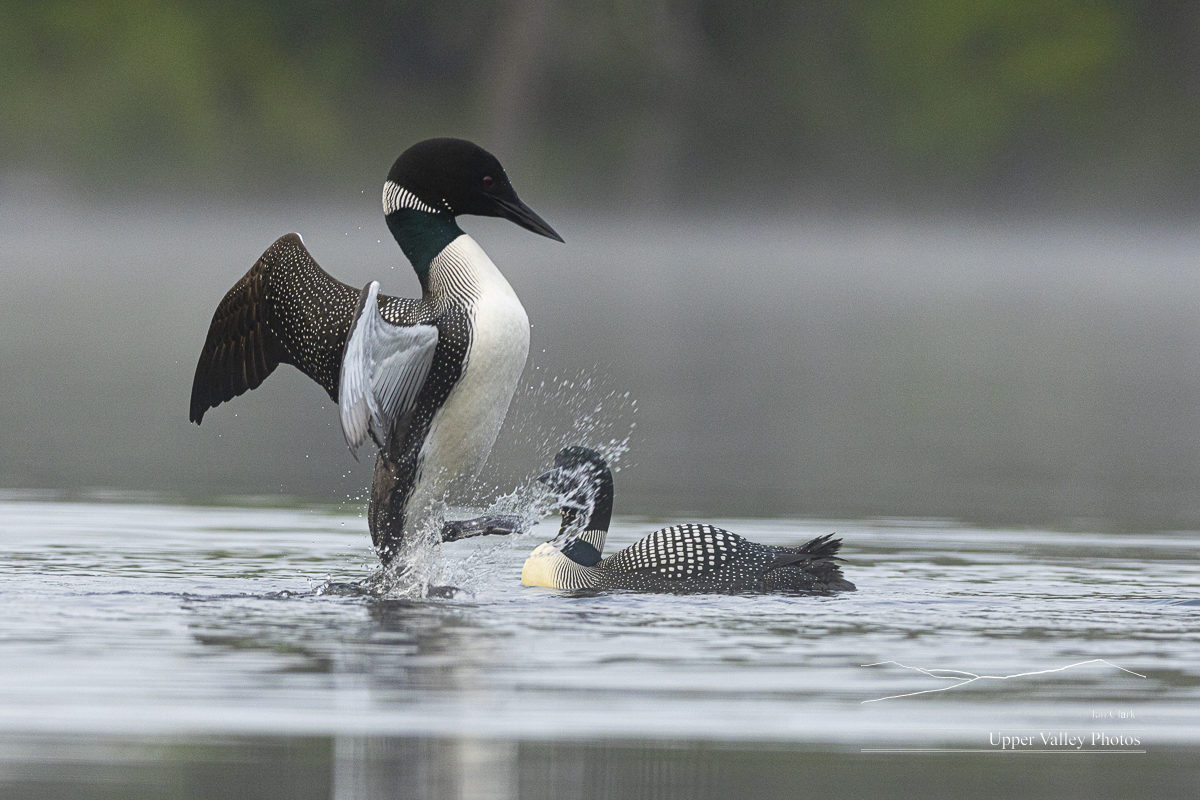
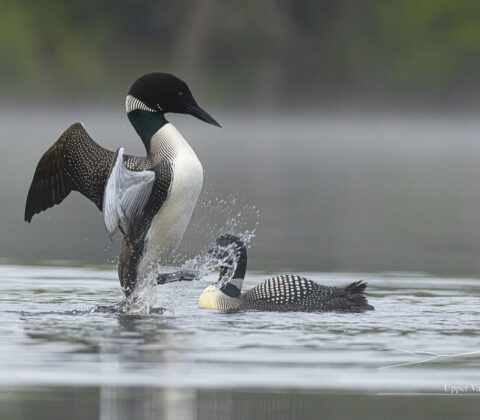
Catching Up with Life on the Ponds
With all the nice weather, I’ve had lots of time to shoot – but that leaves little for posting. One set of fox kits has moved on, the other den is surrounded by grass tall enough that the kits appear only at the top of their pounces. Let’s check in on our three loon families and their neighbors.
I’ll be giving my slideshow, An Uncommon Look at the Common Loon, locally a couple times in the near future. First is Thursday May 30 at 7:00 p.m. at the Lyme, NH, School. Then again on Sunday June 23 at 2:00 p.m. at the Tenney Memorial Library in Newbury, VT.
The Westons are sitting on at least one egg. Their nest is deep in the marsh, updates will have to wait until the chicks appear. (If you’re new to my blog, to protect the loons’ privacy, the families are the Eastons, Middletons and Westons, by the location of their ponds.)











wave.

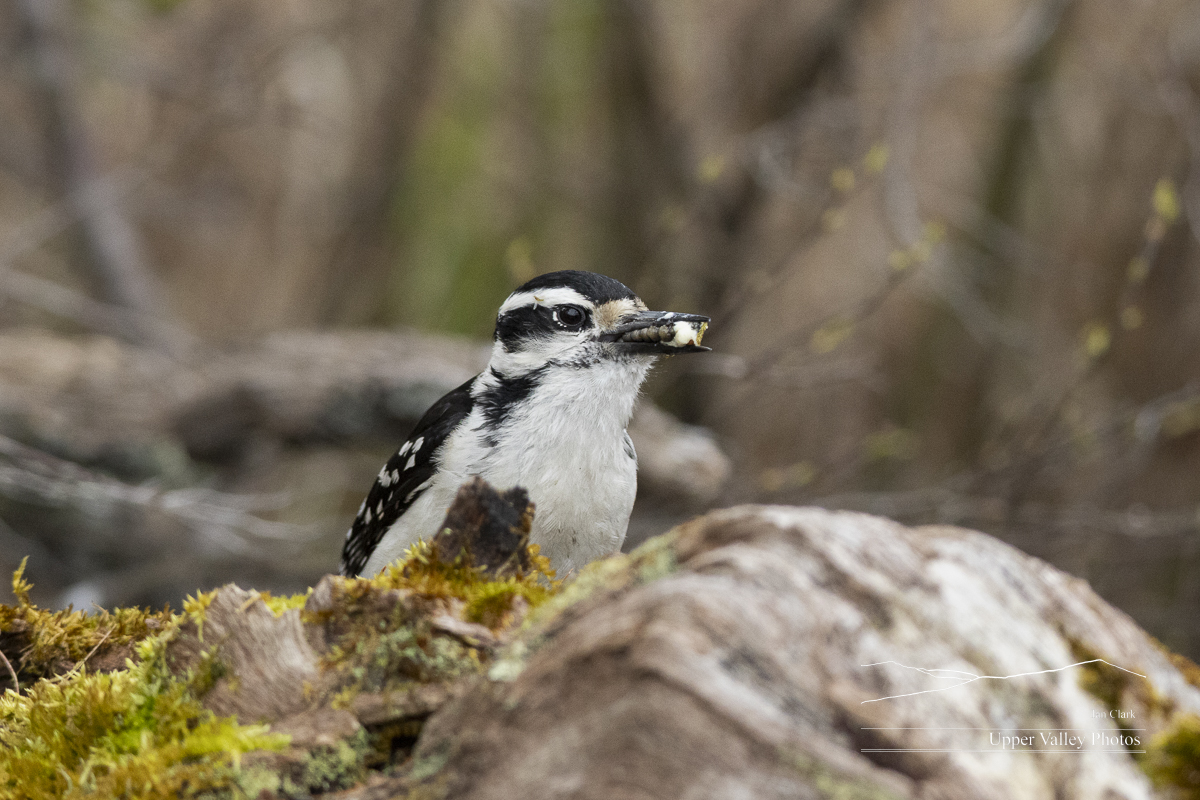

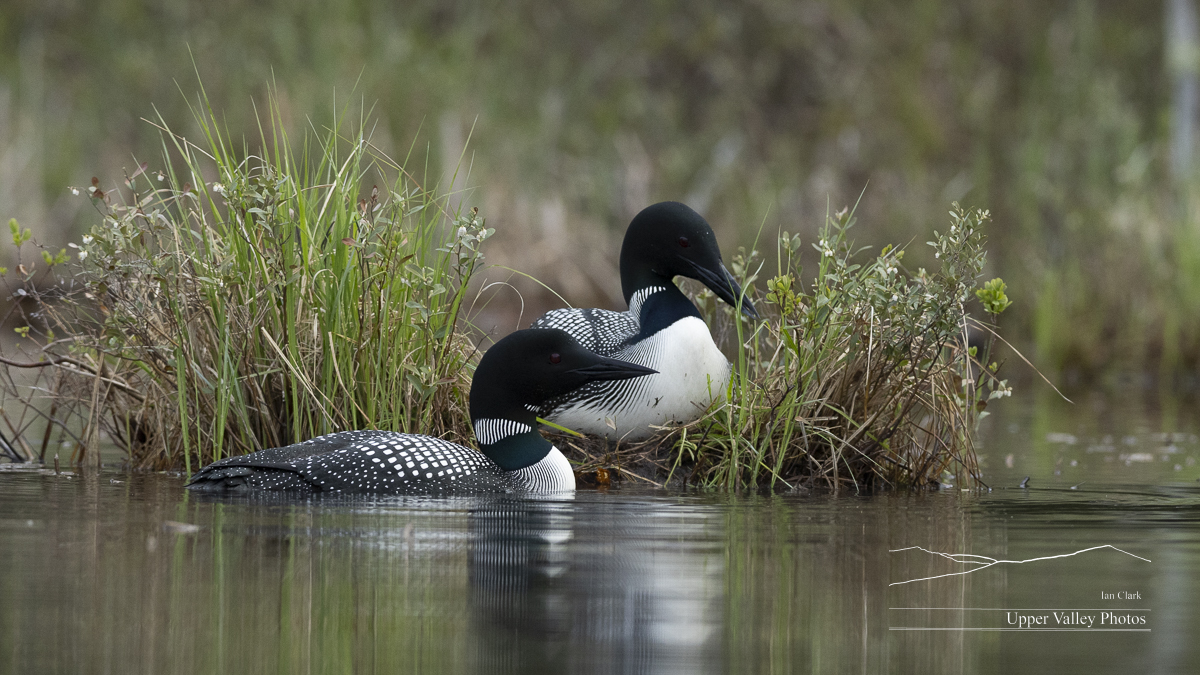
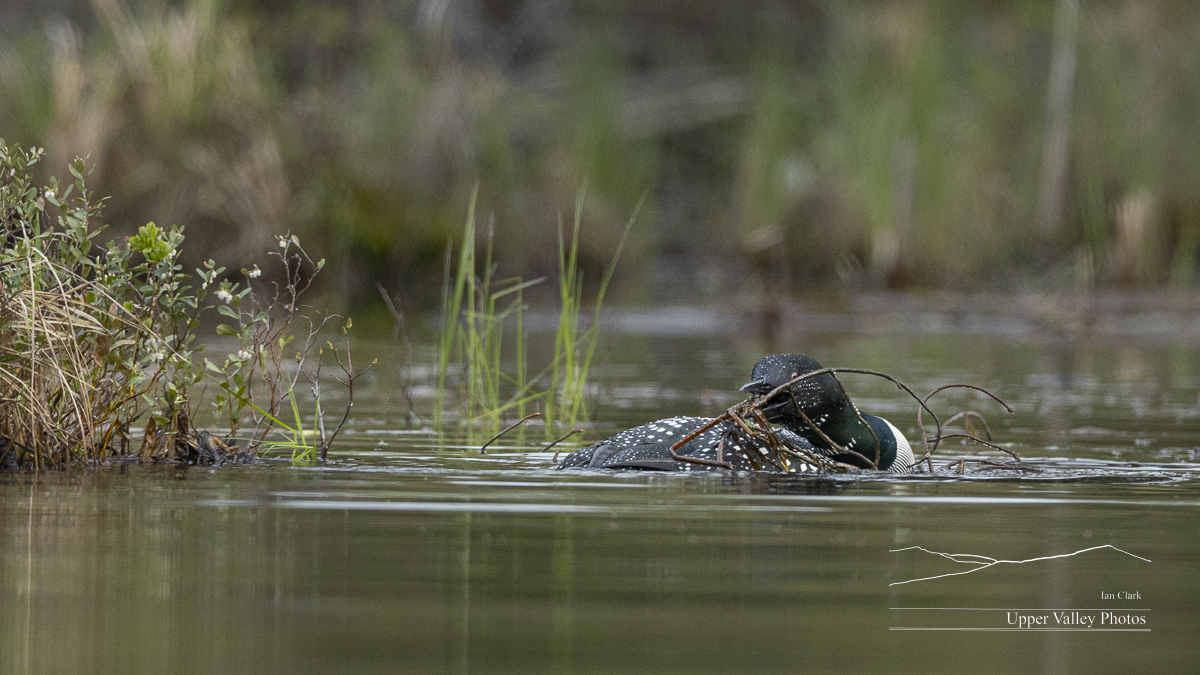



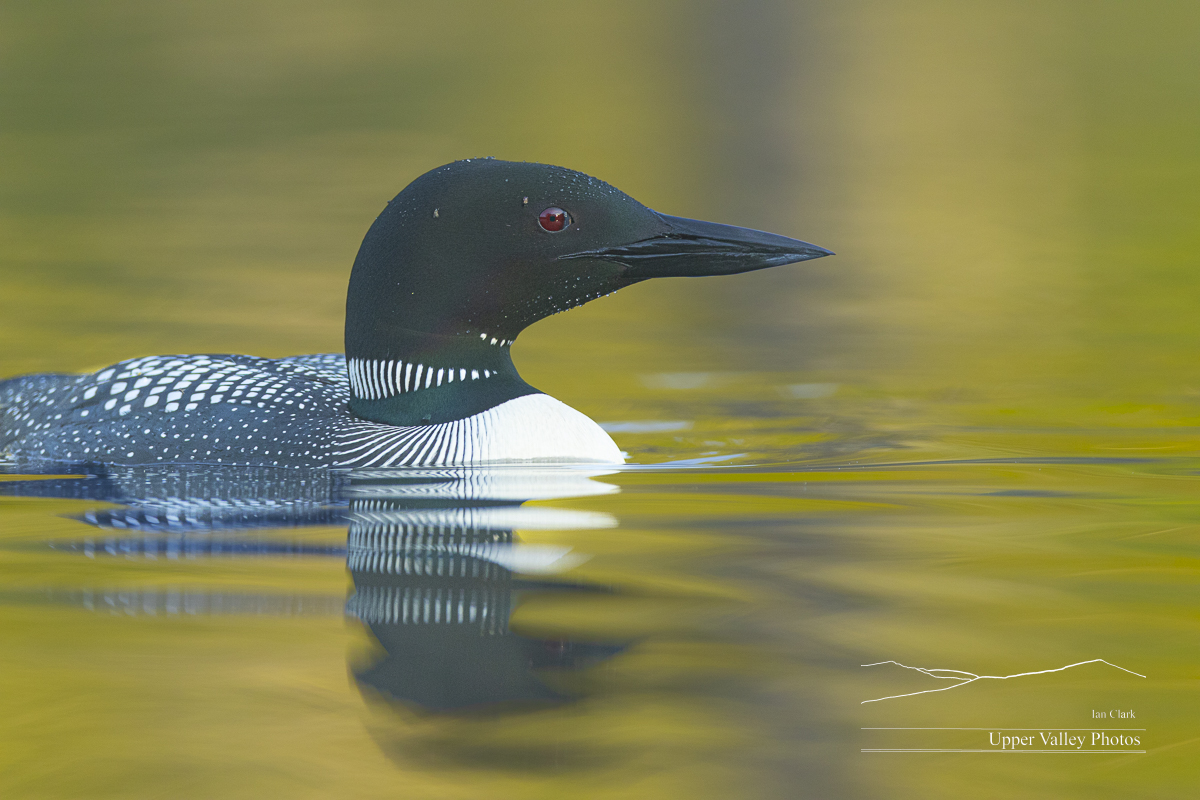

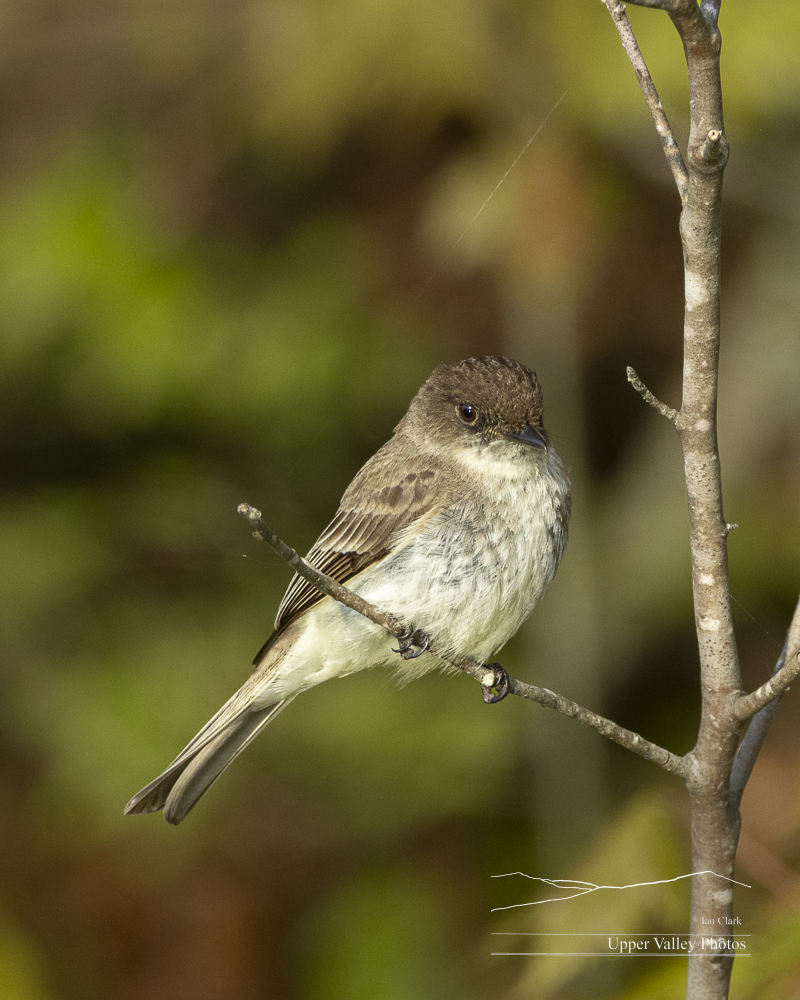
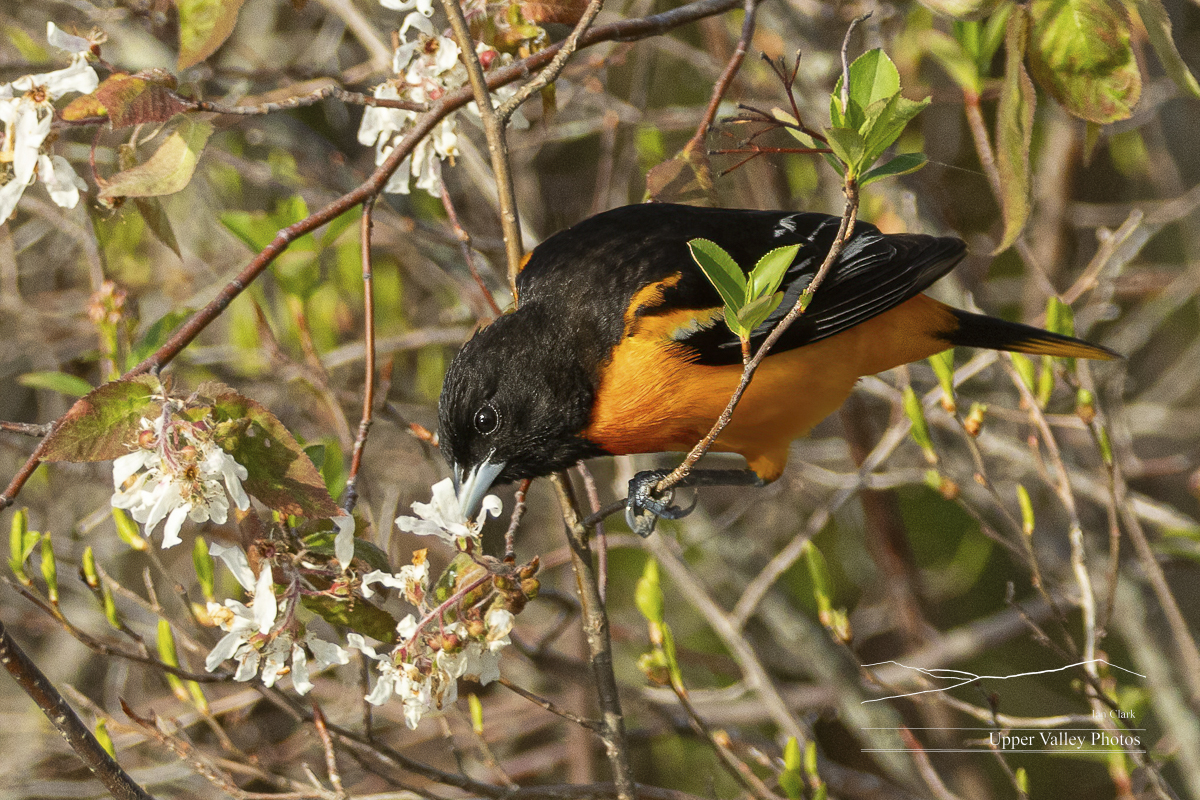
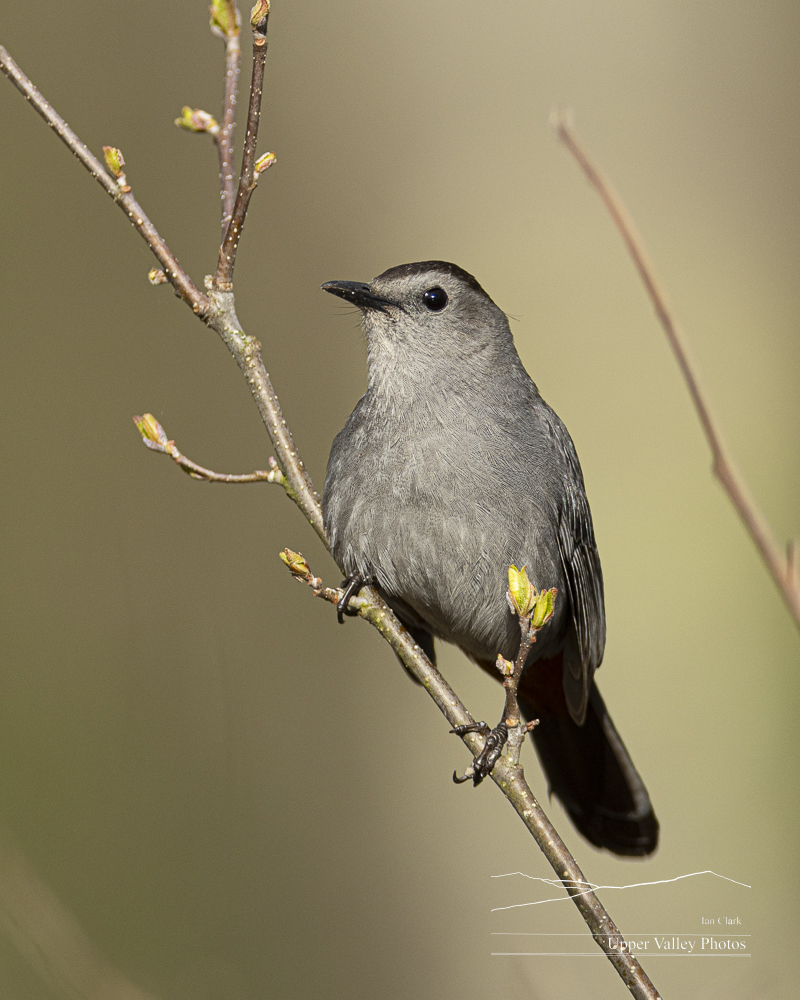



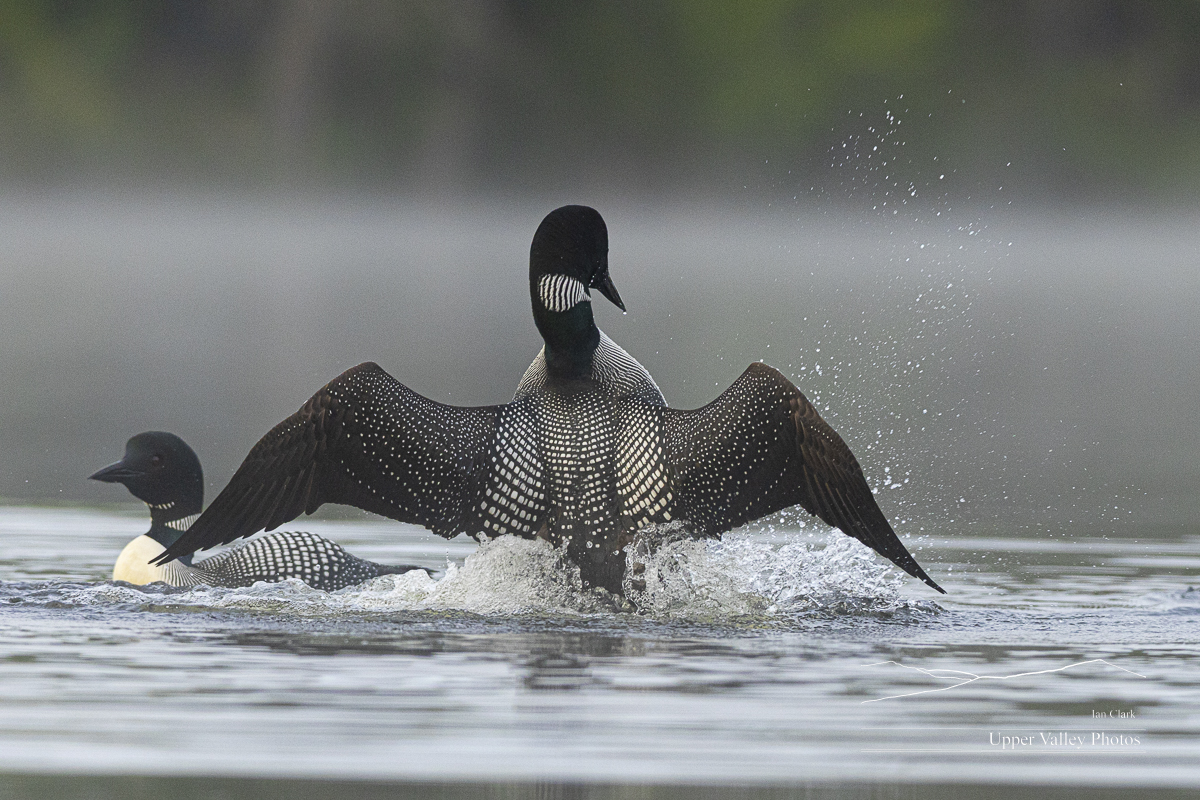

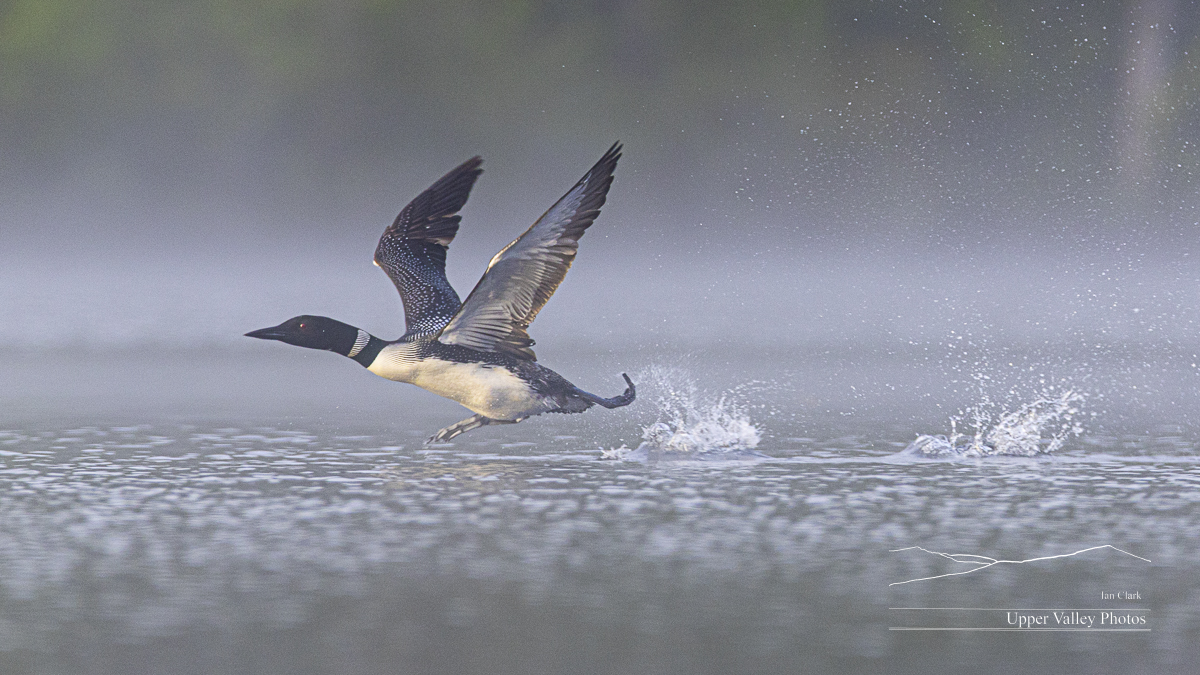
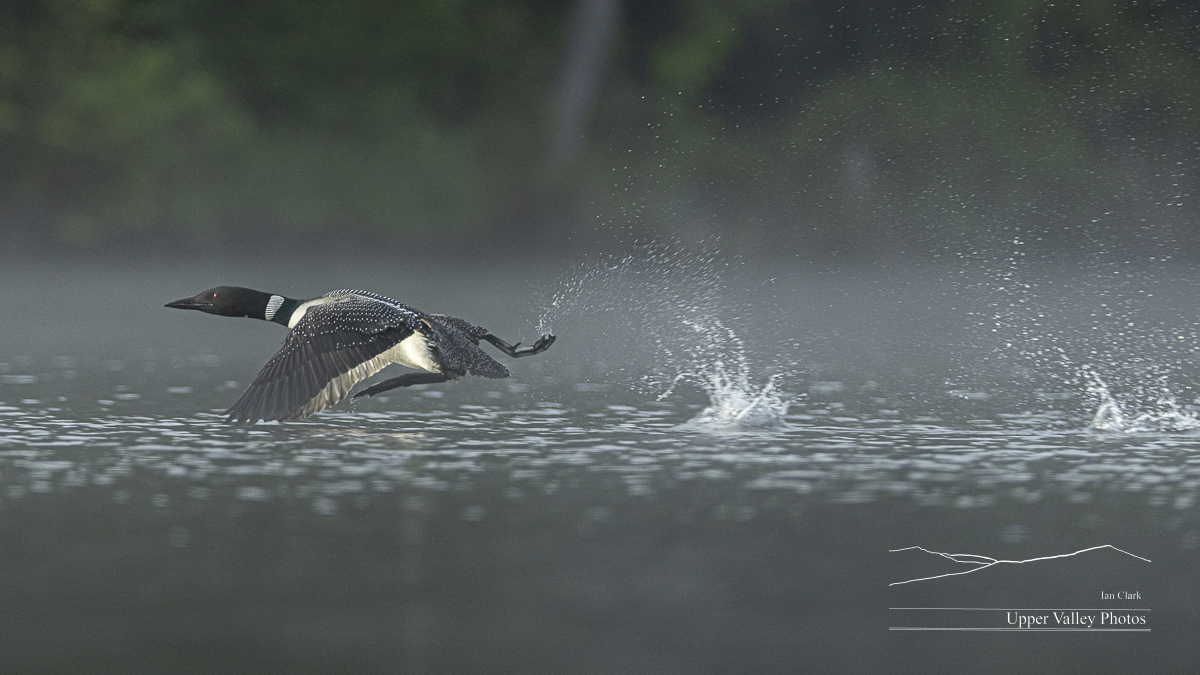


The road up to the Easton’s pond finally got some work and I was able to get up for a visit.
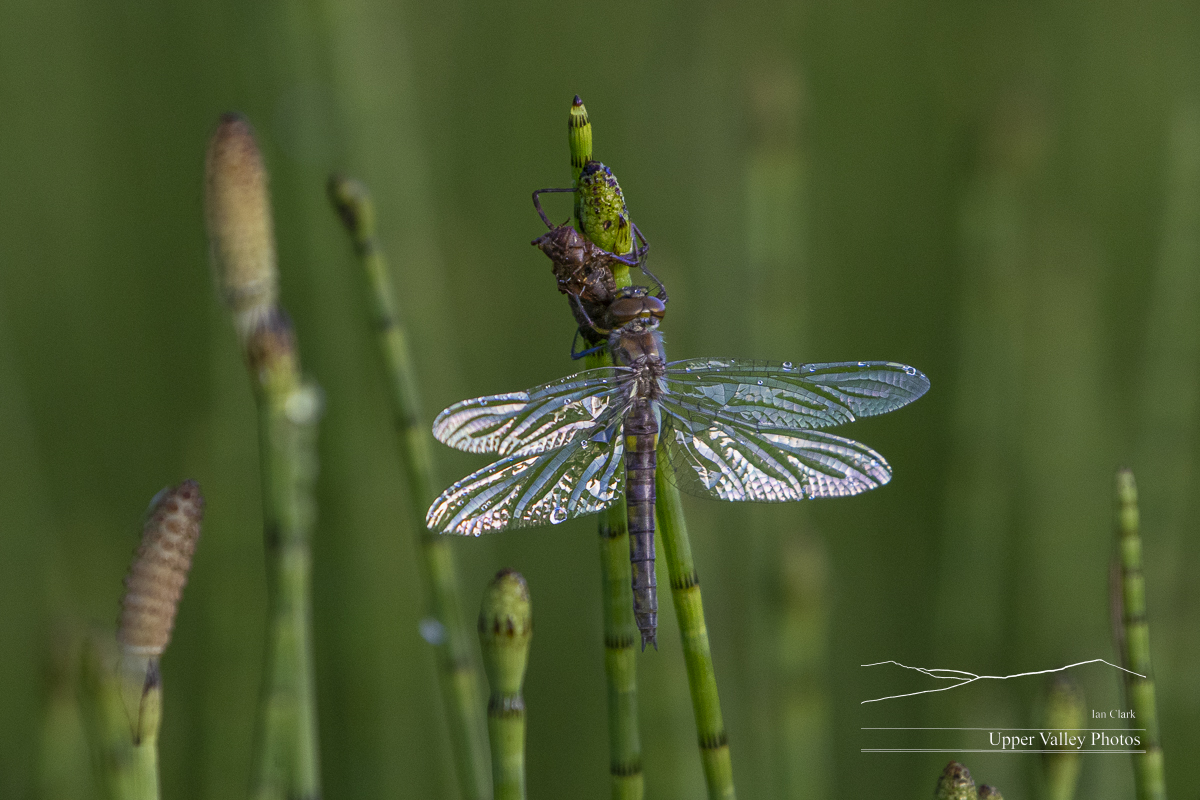
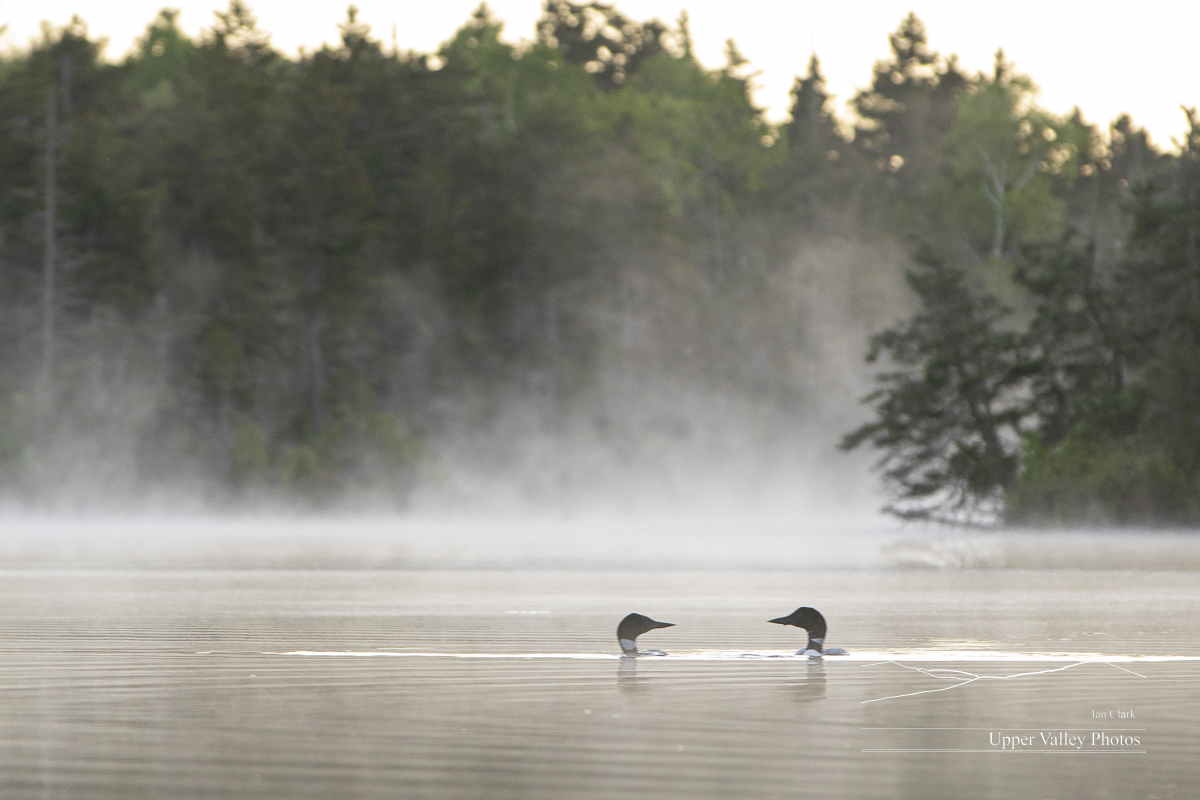
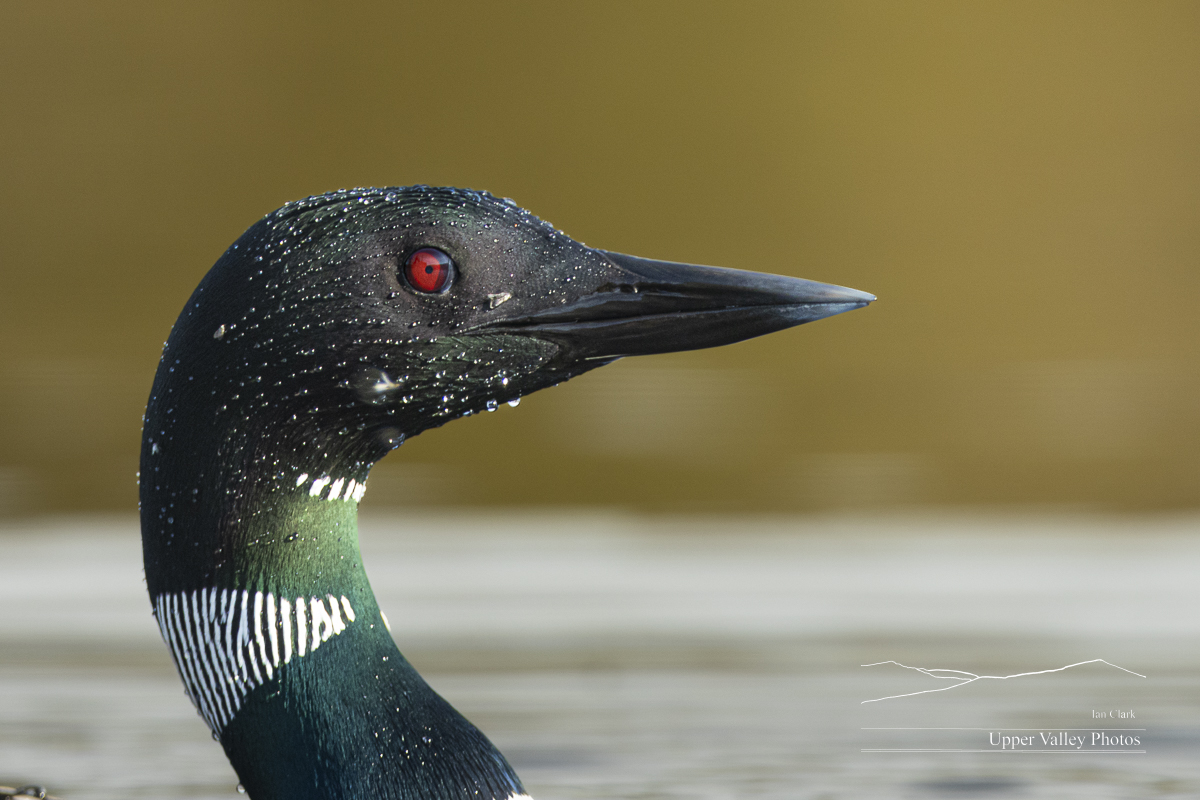
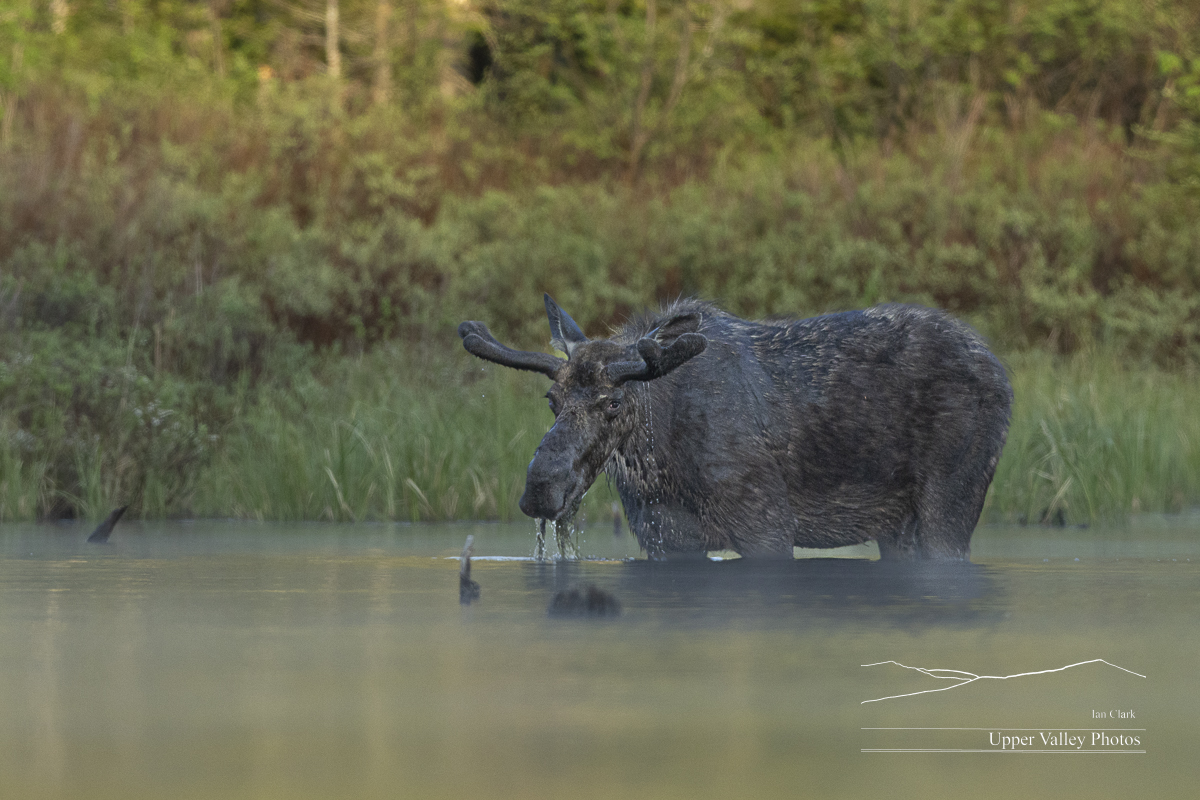
Spring Has Arrived
After several false starts, it looks like spring has arrived to stay in the Upper Valley. Of course, I’m not taking the snow tires off until the second week of May.
Along with the ice going out, our summer residents are arriving back in droves. I spotted six loons on the Middleton’s pond on March 31. By the time I put the boat in the next day, they’d moved on. My bet is they’d been scouting the territory to see which ponds were open and just stopped for a rest and a meal before heading back south. But there were other critters out and about.
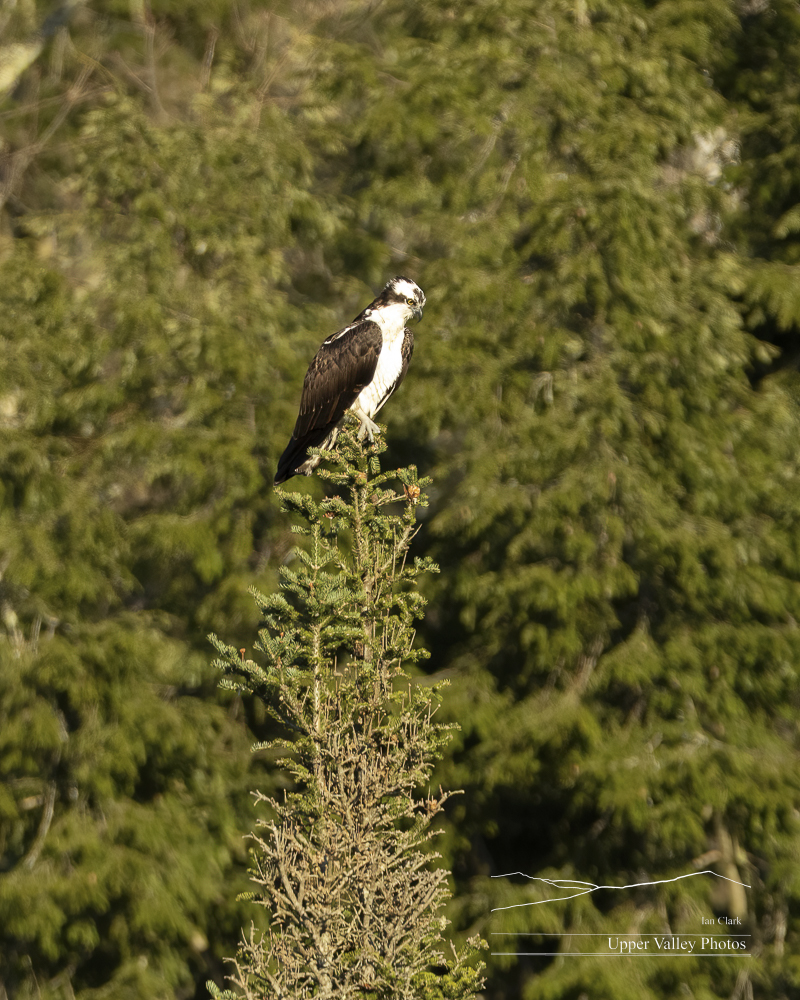
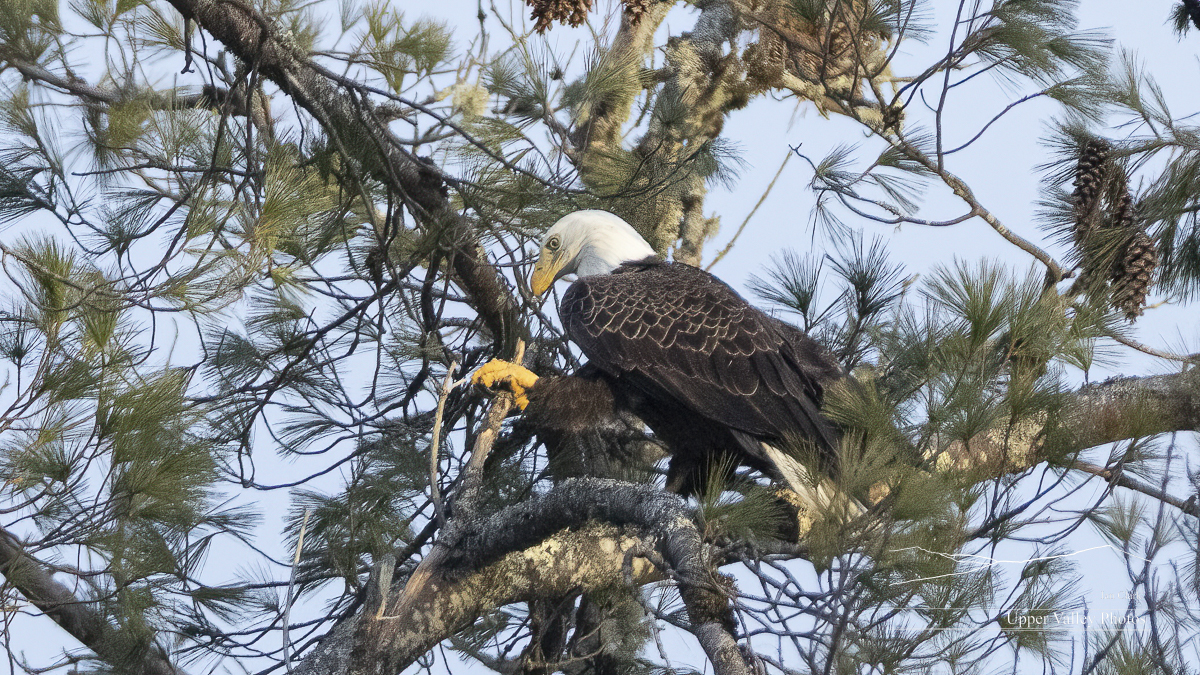
My next trip took me to the Weston’s pond last Sunday. A friend on the pond told me that one loon had arrived back on the April 9. There was still only one loon on the pond.
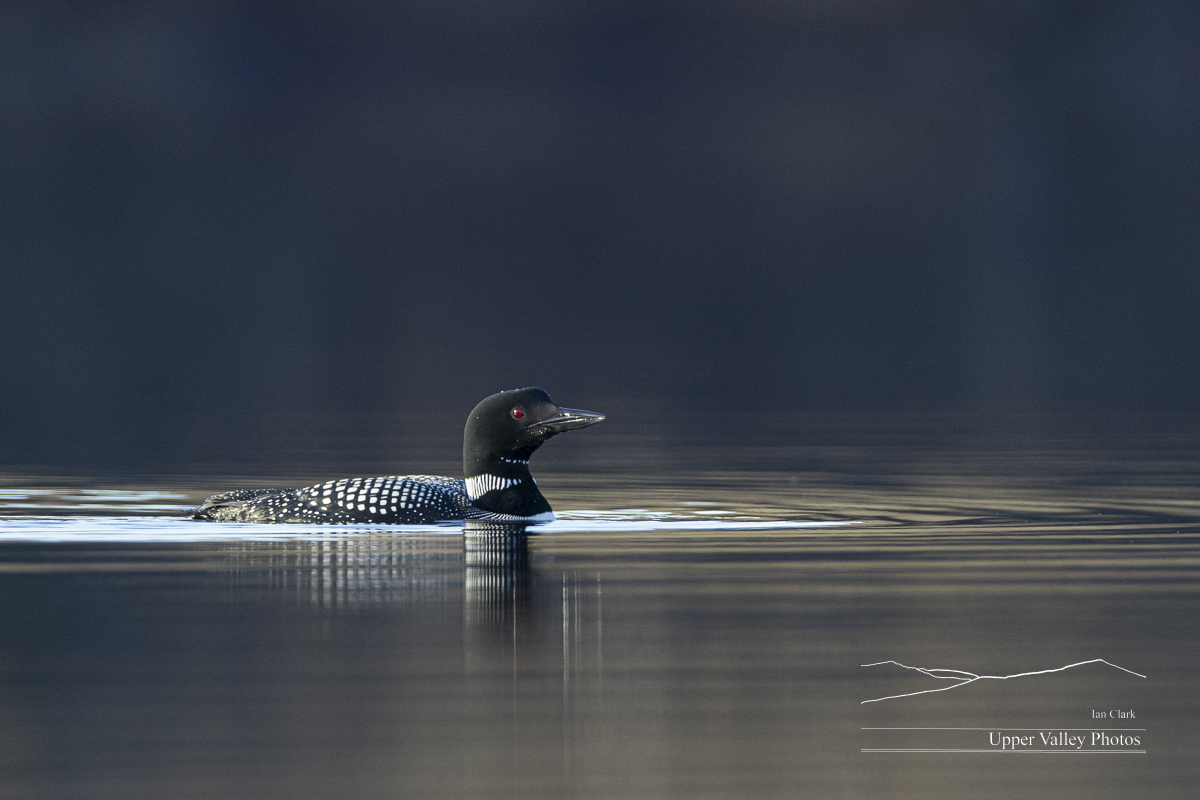
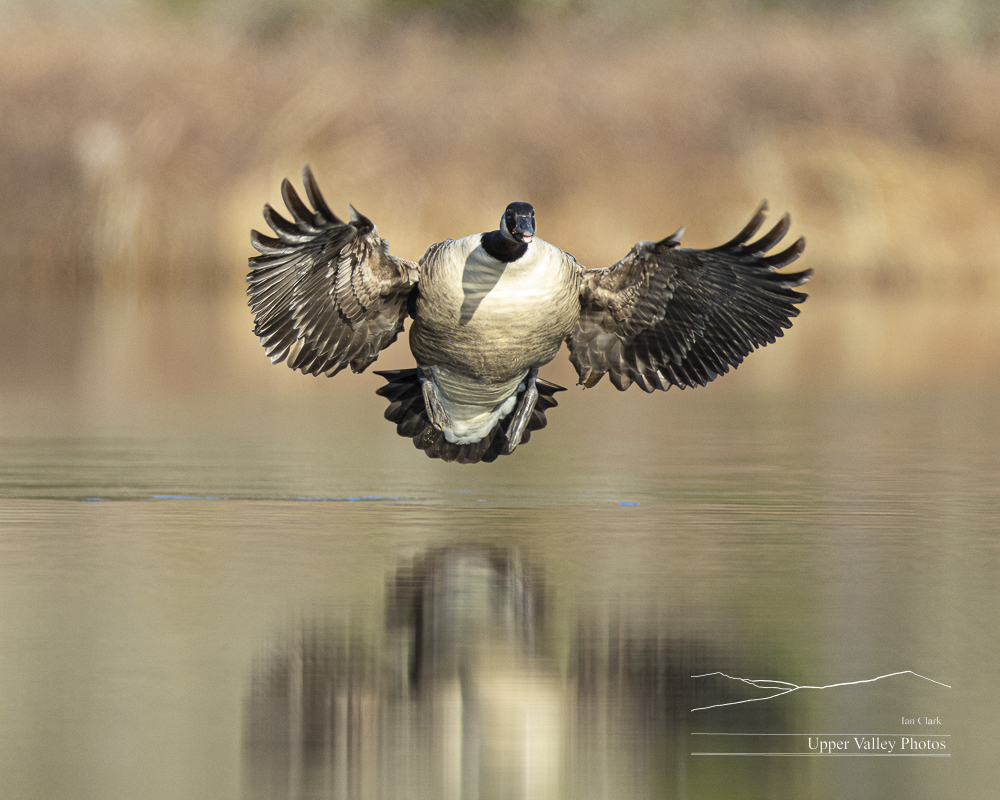
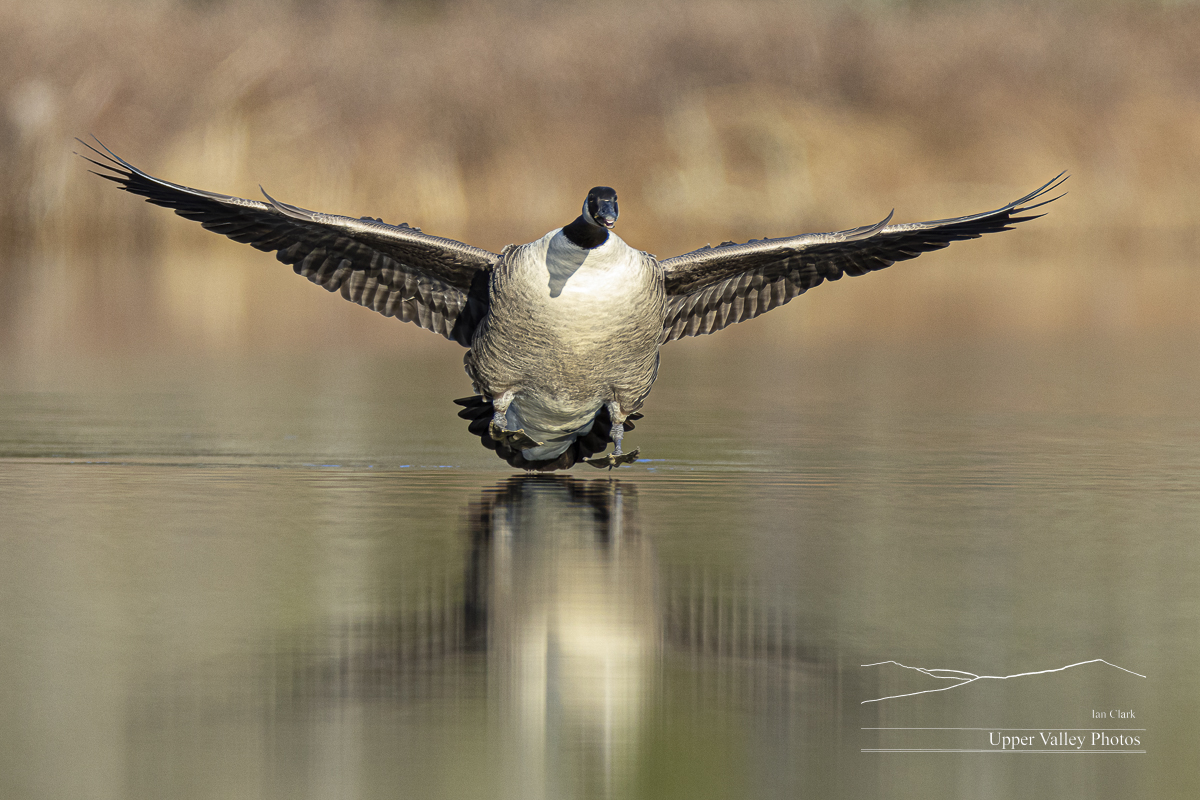
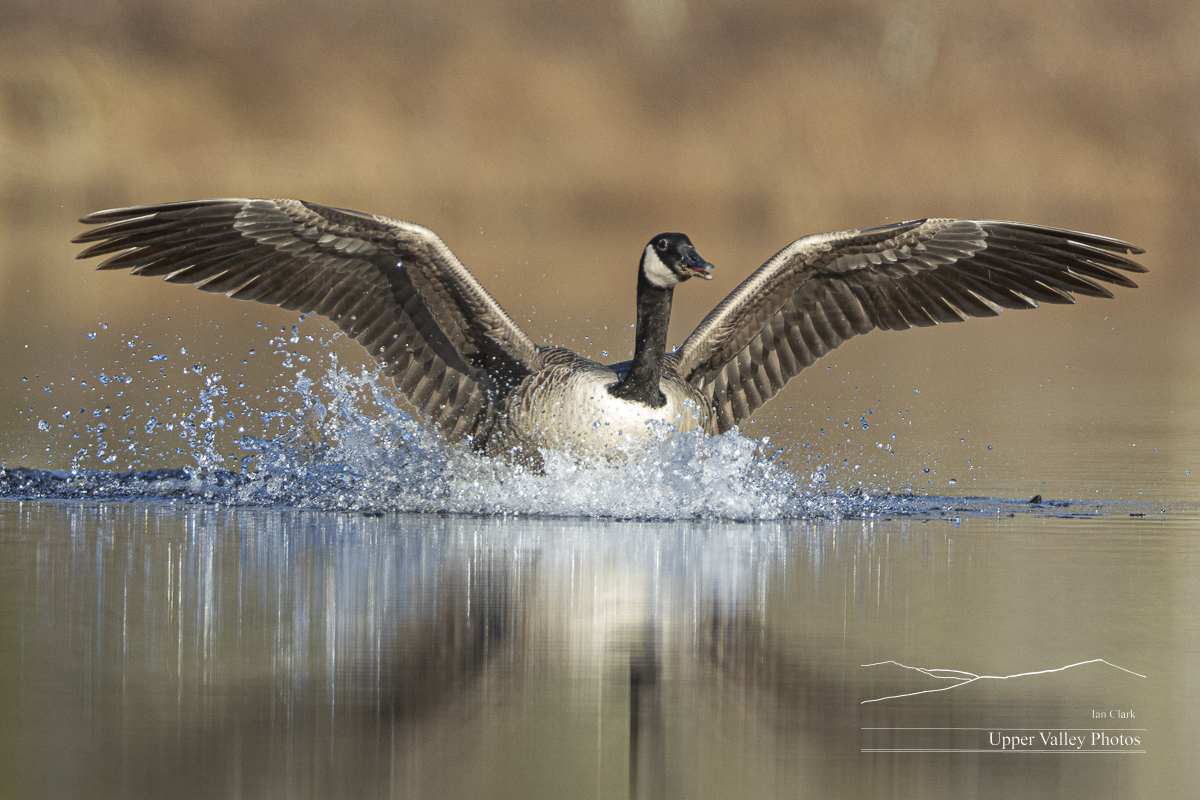
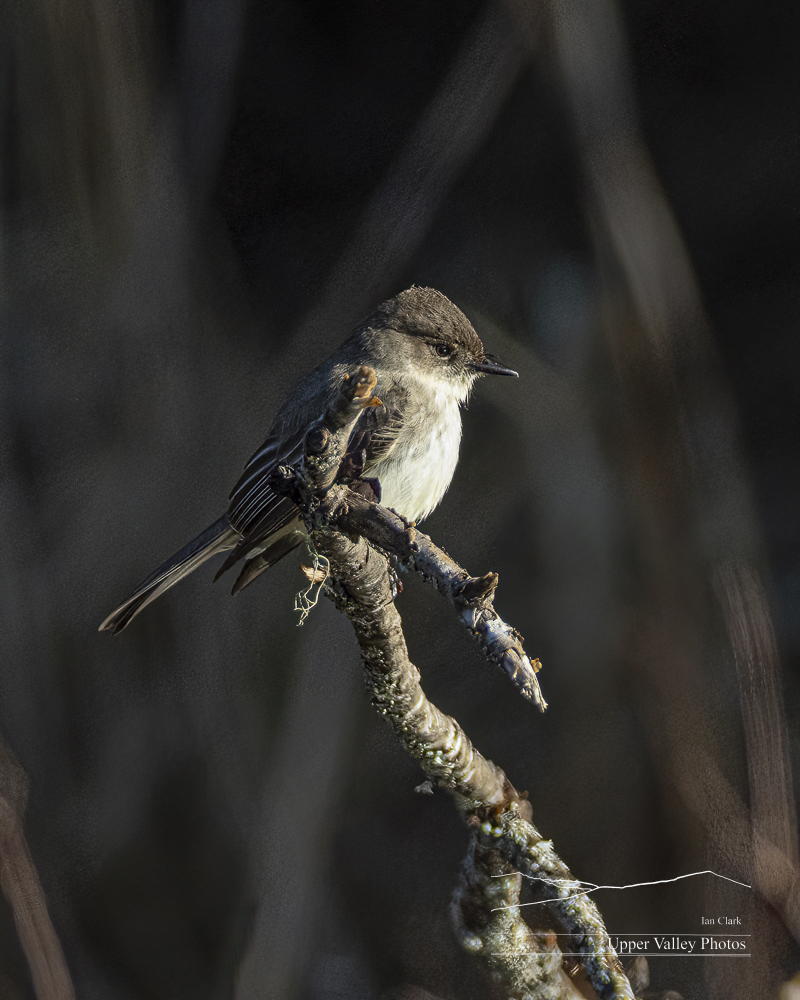
I got back to the Weston’s pond on Tuesday for a brisk paddle – it was 39°F when I put the boat in. We still had only one loon and the geese were causing a ruckus.

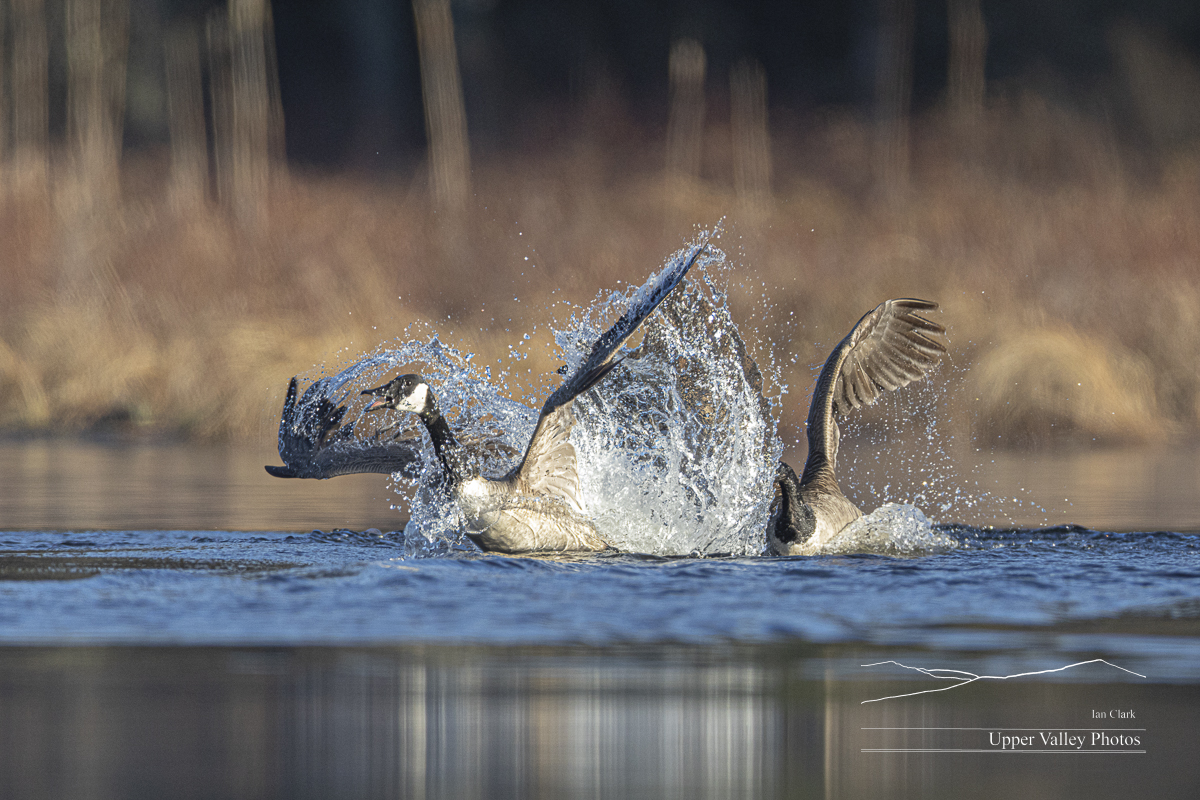
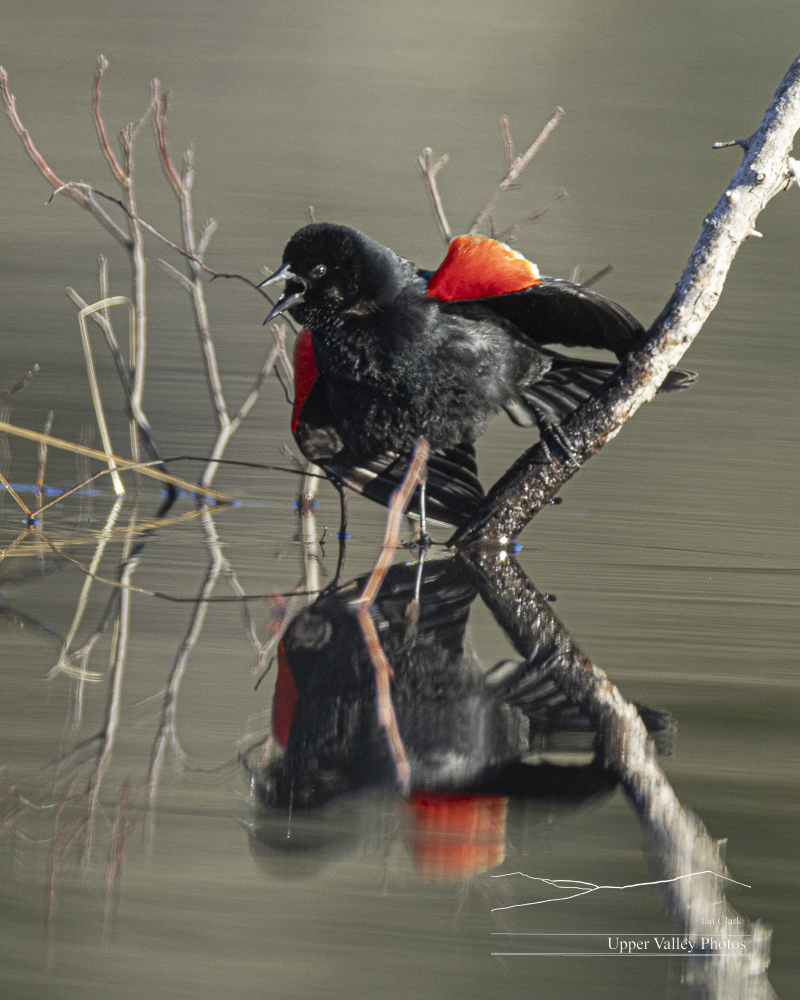
Wednesday morning found me back on the Middleton’s pond. And missing the balmy day before. It was a chilly 28°F as I pushed through a skim of ice to get on the pond. As soon as I cleared the ice, there were trout feeding at the surface. The osprey both made quick work of finding breakfast. And, there were loons.
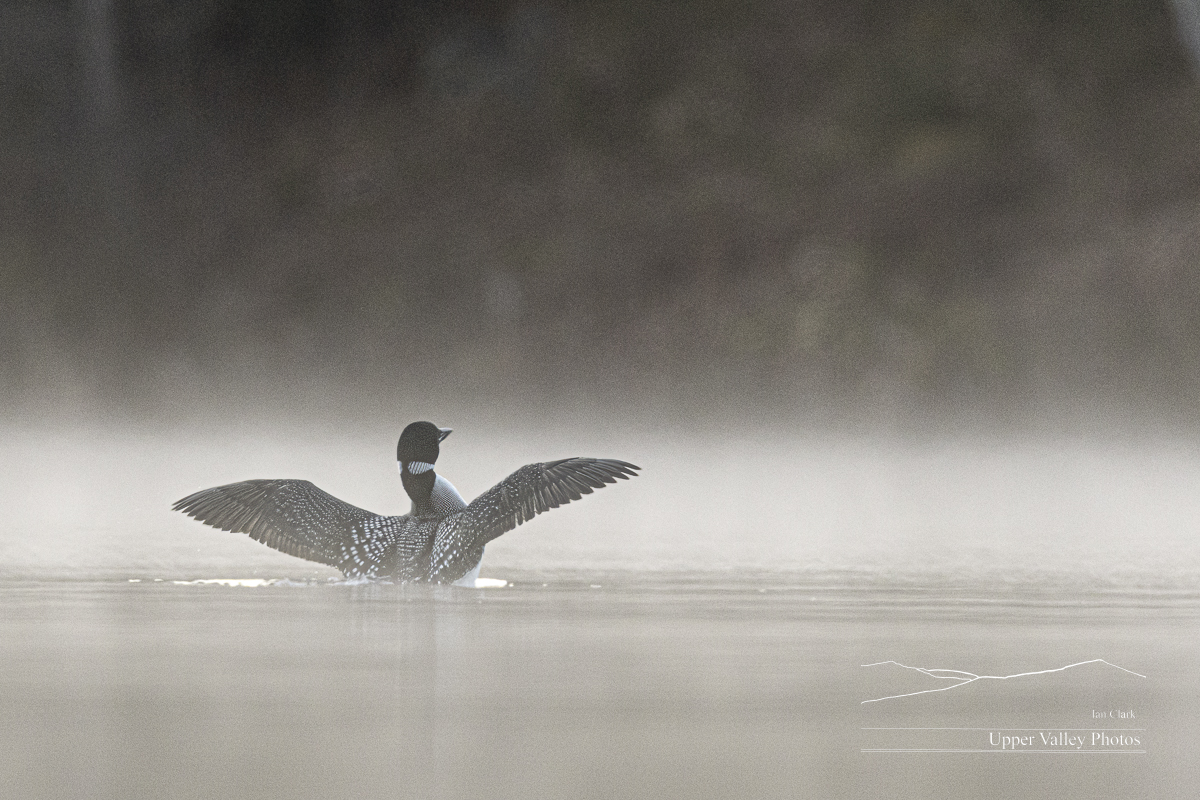
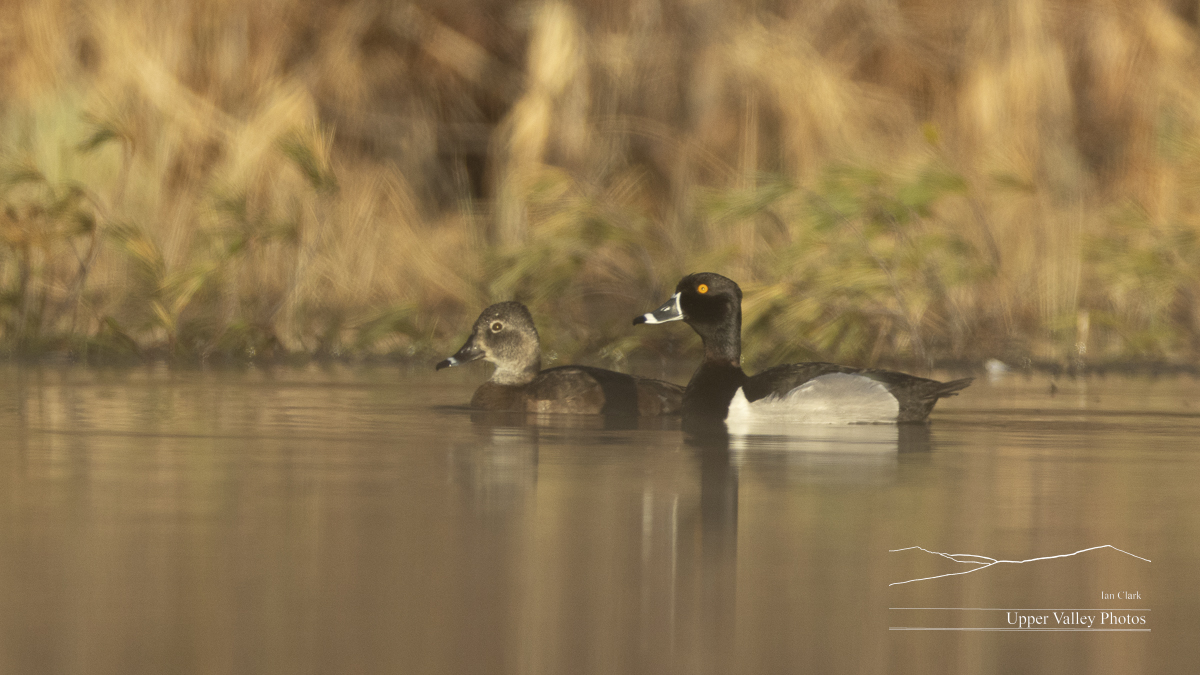
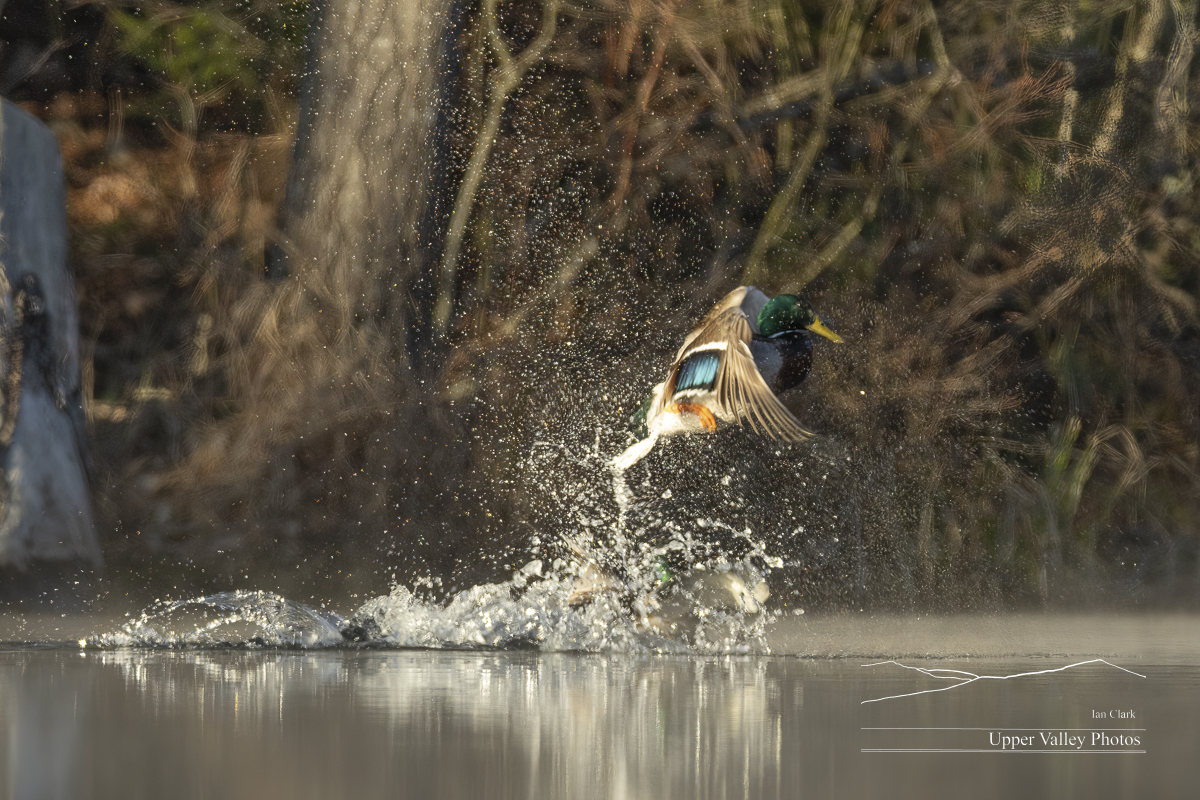

They also spent some time exploring along the shore. The hummock they’ve used for their nest site for several years washed away in the heavy rains last summer. They’ll have to find a new site.
At one point, one loon beached and almost seemed to be presenting. That would be about a month early. The second loon didn’t respond and they soon started off down the shoreline again.

This morning I headed to the Easton’s pond again. Our second loon has returned. As I was putting the boat in, another loon flew over and was challenged by the loons on the pond. A loon flew over the pond on two more occasions, both times flying off after being challenged. The home team spent the morning foraging and preening.
The highlight of the morning was finding three otters feeding and wrestling on the bank of the pond.
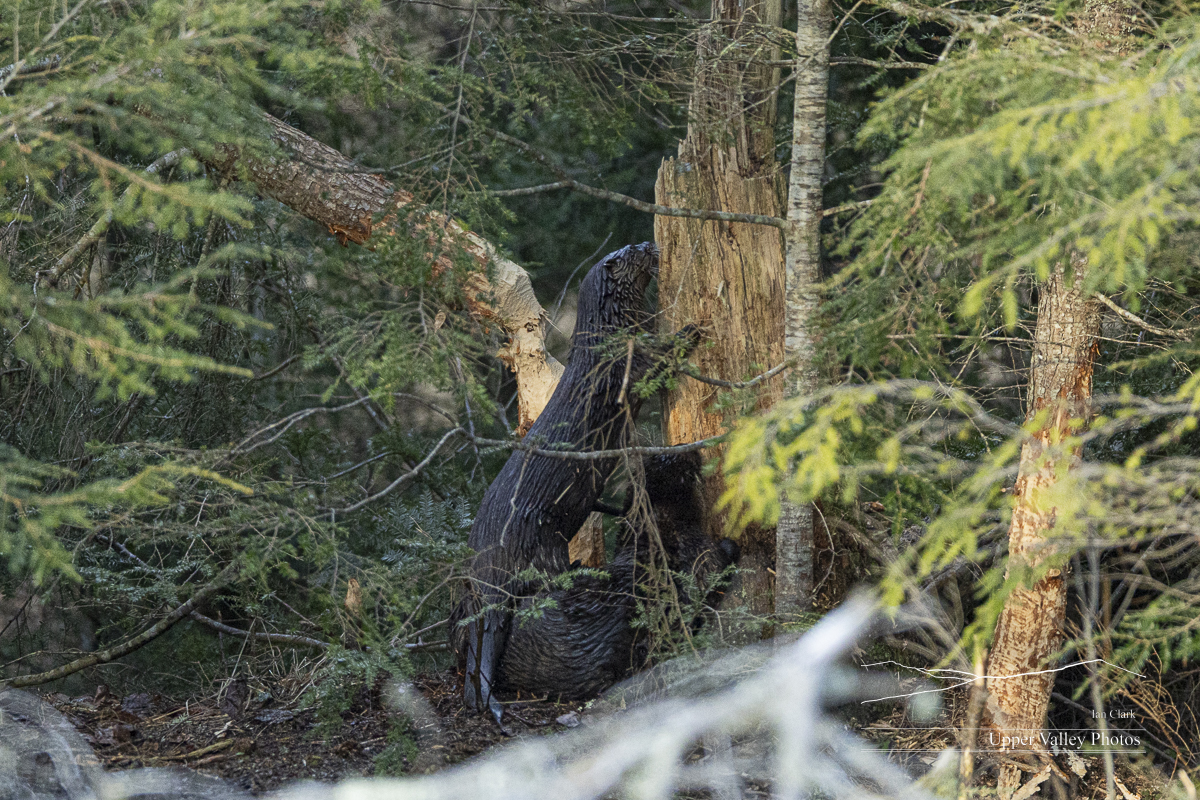
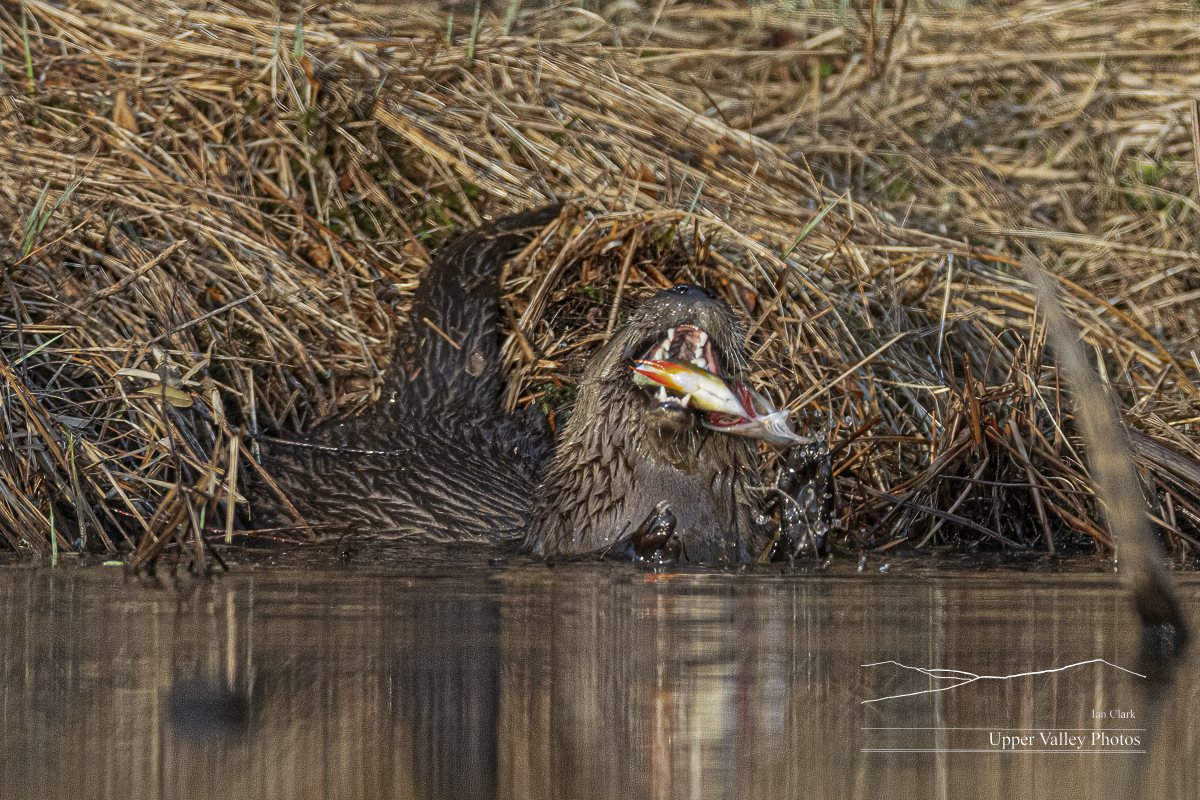


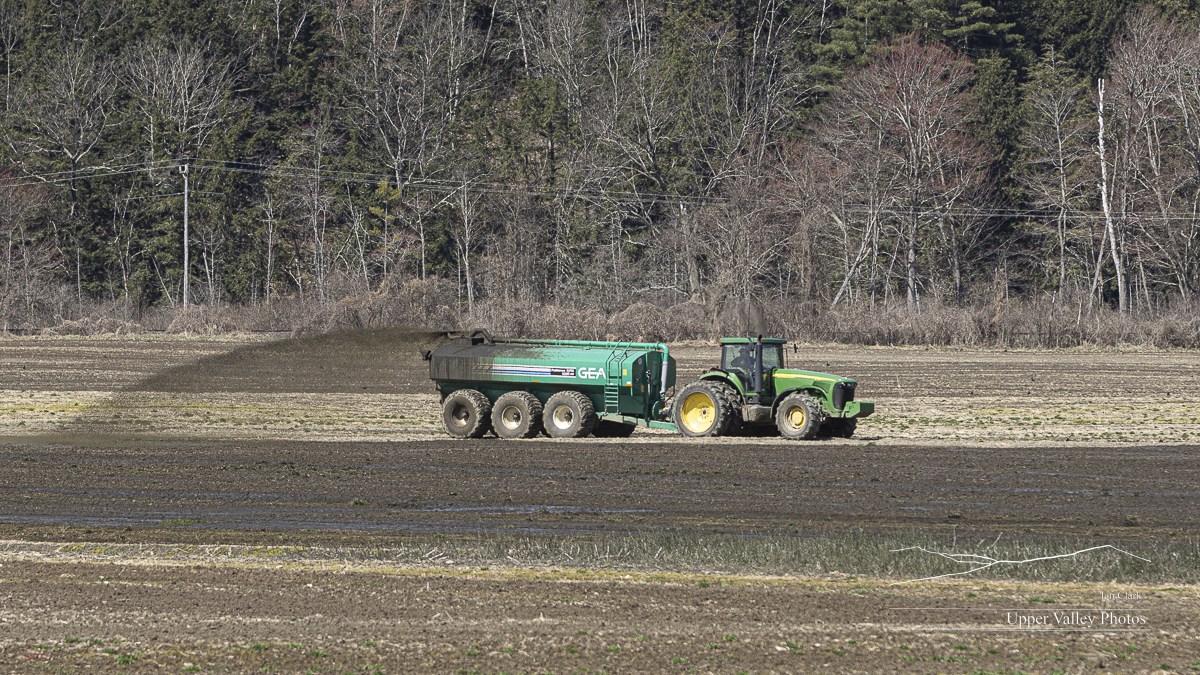
Our bluebirds are again building in our nesting box. I checked the cameras several weeks ago and all seemed fine. But now the camera in the box the birds are using isn’t working properly. We’ll have to skip watching the first brood – I’m not going to disturb the box to get at the camera until the the chicks fledge. Hopefully we’ll be back online for the second brood.
You can sign up to be updated when I add new posts, if you want to follow the loons through the season, go ahead and sign up. And, please share with your friends that might enjoy the wildlife.
One Loon Chick Left
Thursday morning, I headed up to check on the Eastons. When I las visited, the parents weren’t on the pond and the chicks were practicing takeoffs, but couldn’t quite get airborne.
The adults usually stick around this pond until the last week of September, with the chicks departing in the first week of October. Looks like the parents took an early leave this year, with one chick following.
The chick on the pond was foraging lazily when I arrived. I watched for a time before hearing a loon calling overhead. I was expecting one of our parents to drop in to check on things, but the loon appeared to fly over.
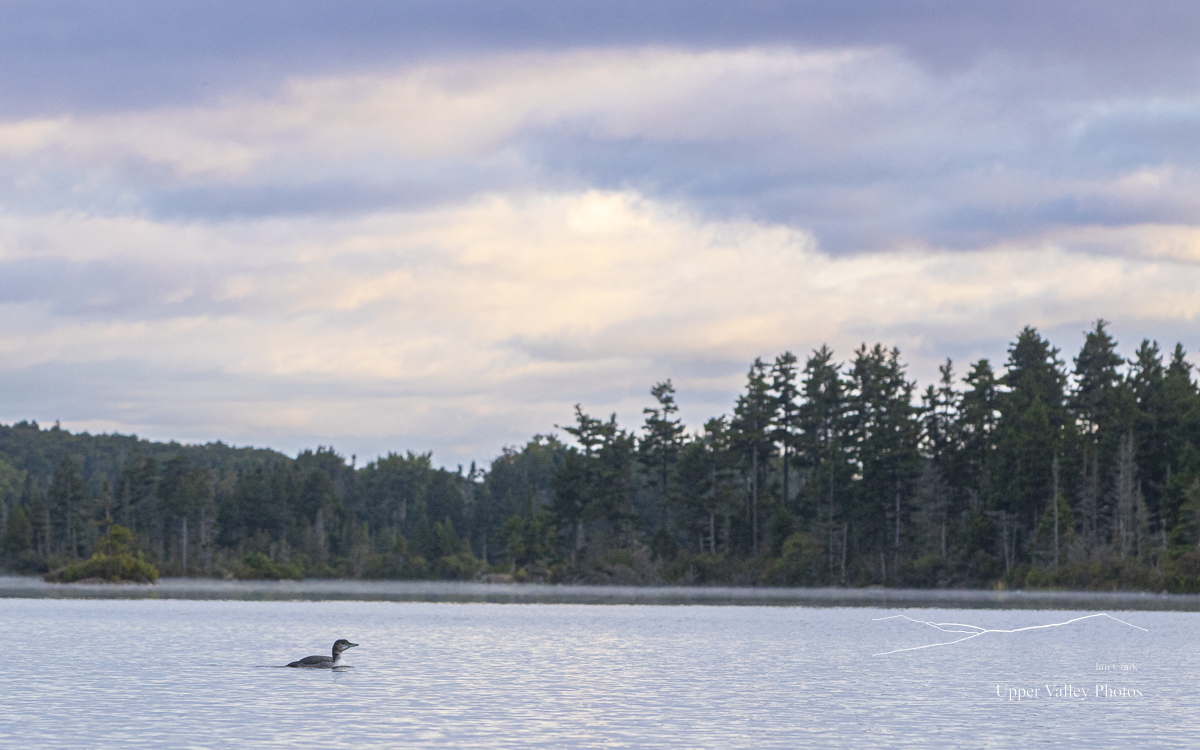
After a time, another loon was calling overhead – or maybe the same one that flew over before. Our chick tried to call. He’s first attempt sounded like someone stepped on a goose. But he quickly found his voice and yodeled.
That’s interesting for a couple reasons. First, only male loons yodel, so we know he’s a he. Second, that’s the response of an adult loon to an intruder. No longer is our chick hiding to protect himself.
The intruder landed at the far end of the pond. The exchanged wails and yodels for a time.
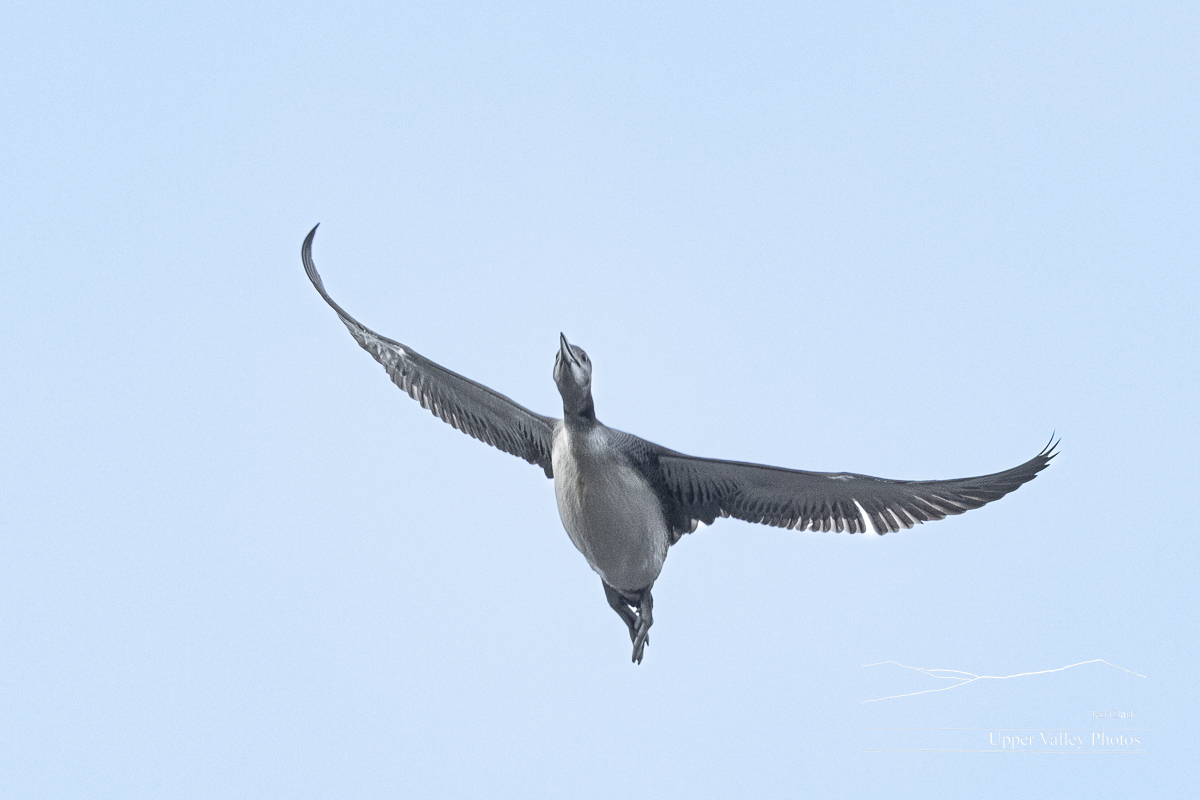
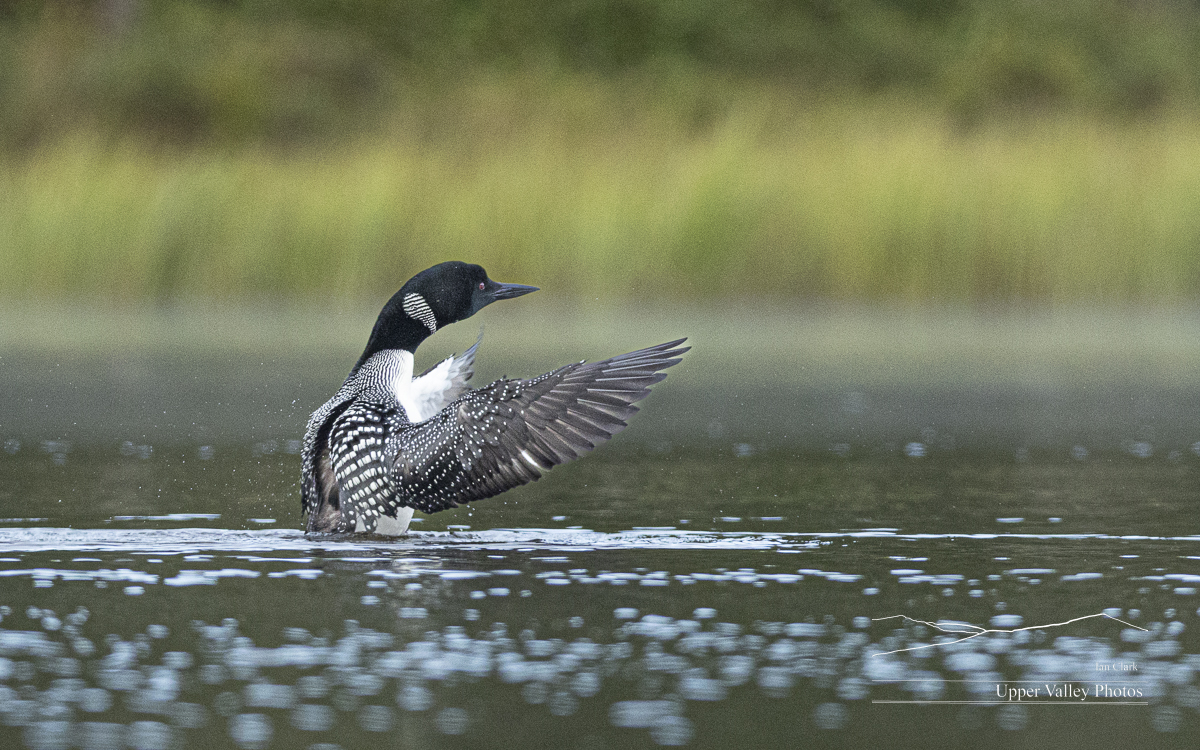
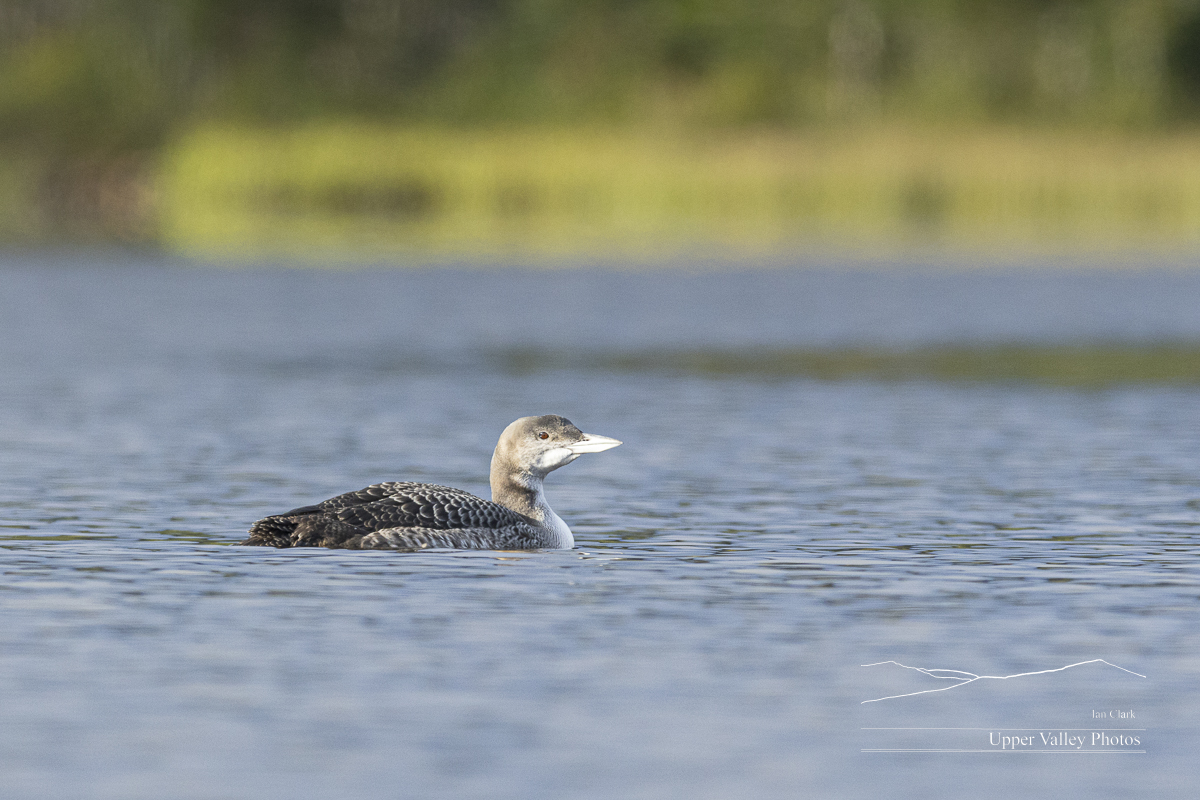
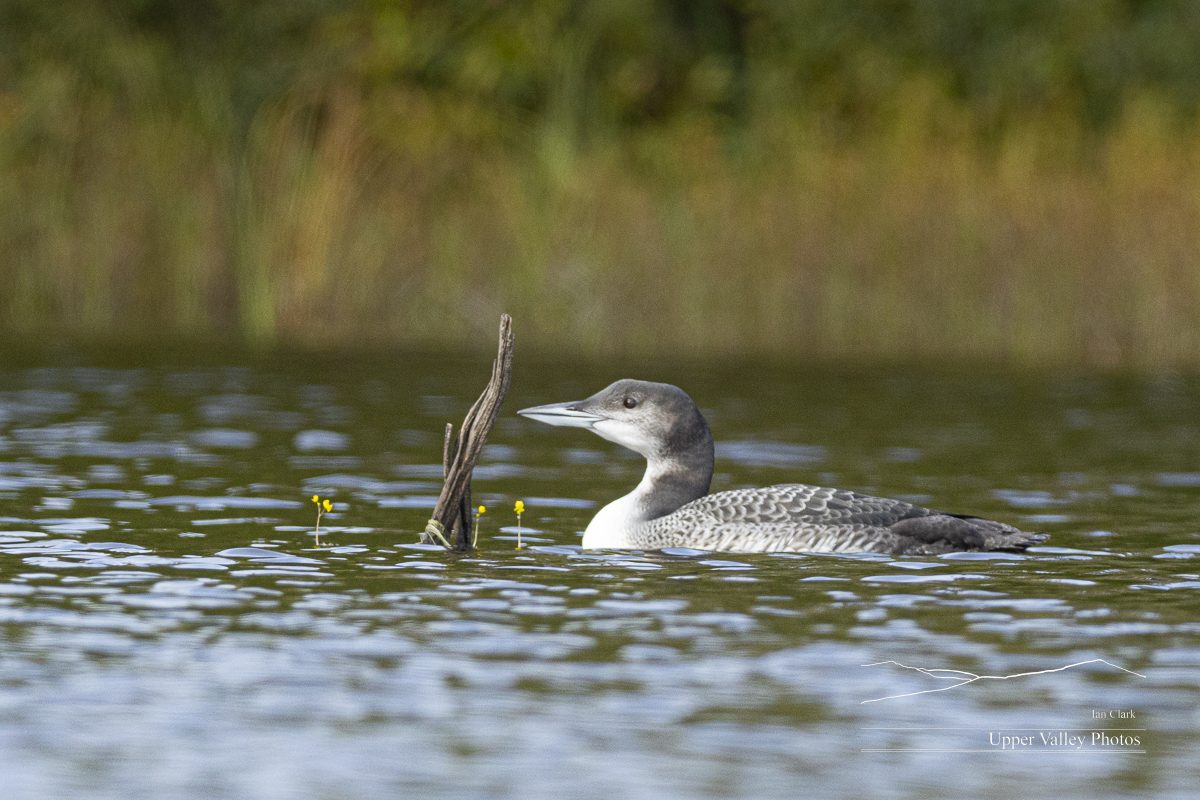
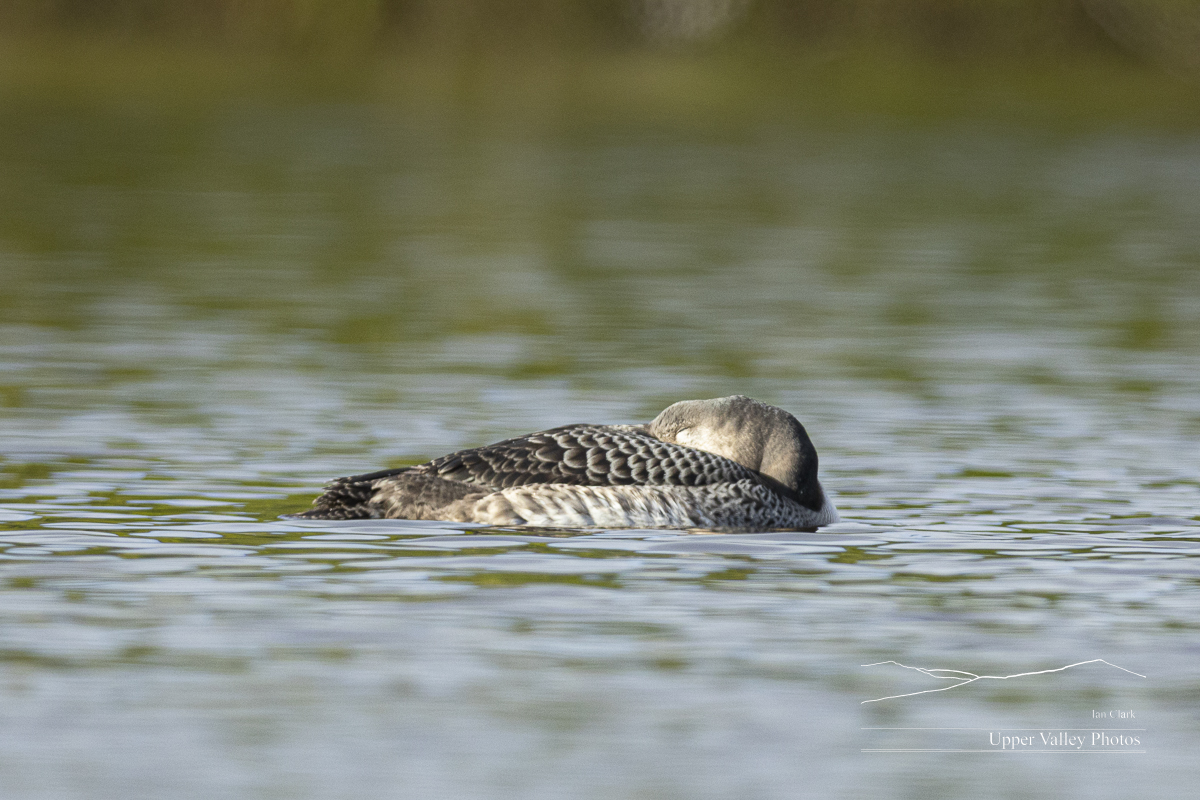

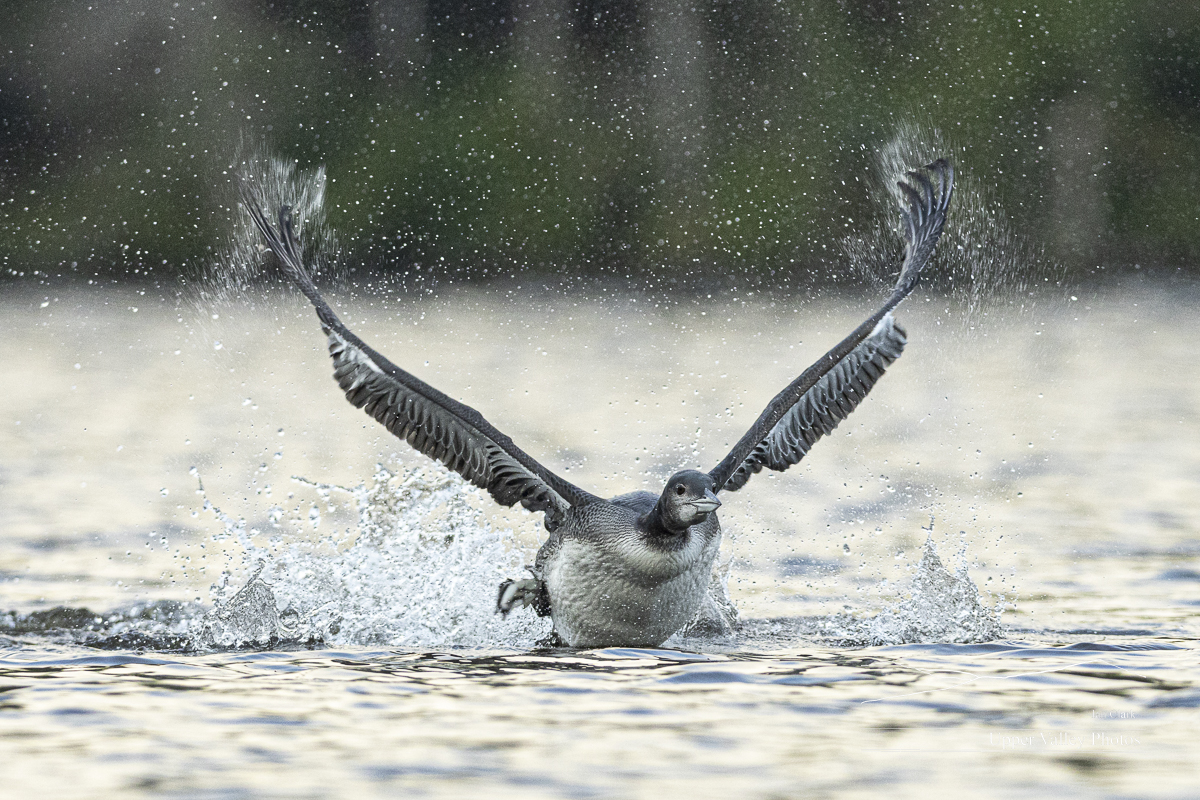
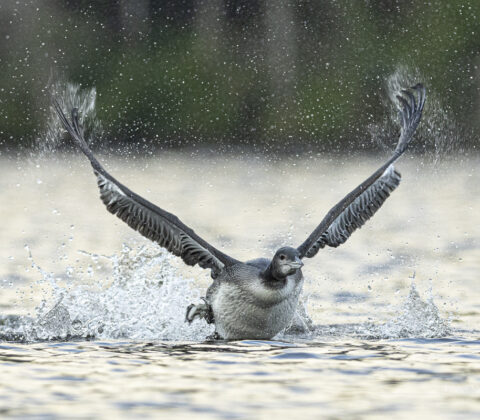
Learning to Fly, Checking in on the Loons
Our loon chicks are now 12 weeks old. They’re almost ready to take care of themselves. This week, they’ve been practicing adult calls, postures and they’re trying to fly. I was able to visit the Eastons twice since the last post.
I’ll be down at the Fall Crafts at Lyndhurst Show in Tarrytown, NY this Friday, Saturday and Sunday. Stop by to check out all the new images in prints and note cards. All the show details here.
Last Friday, the Eastons’ pond was above most of the fog at sunup. As I headed down the pond I met one chick coming up.
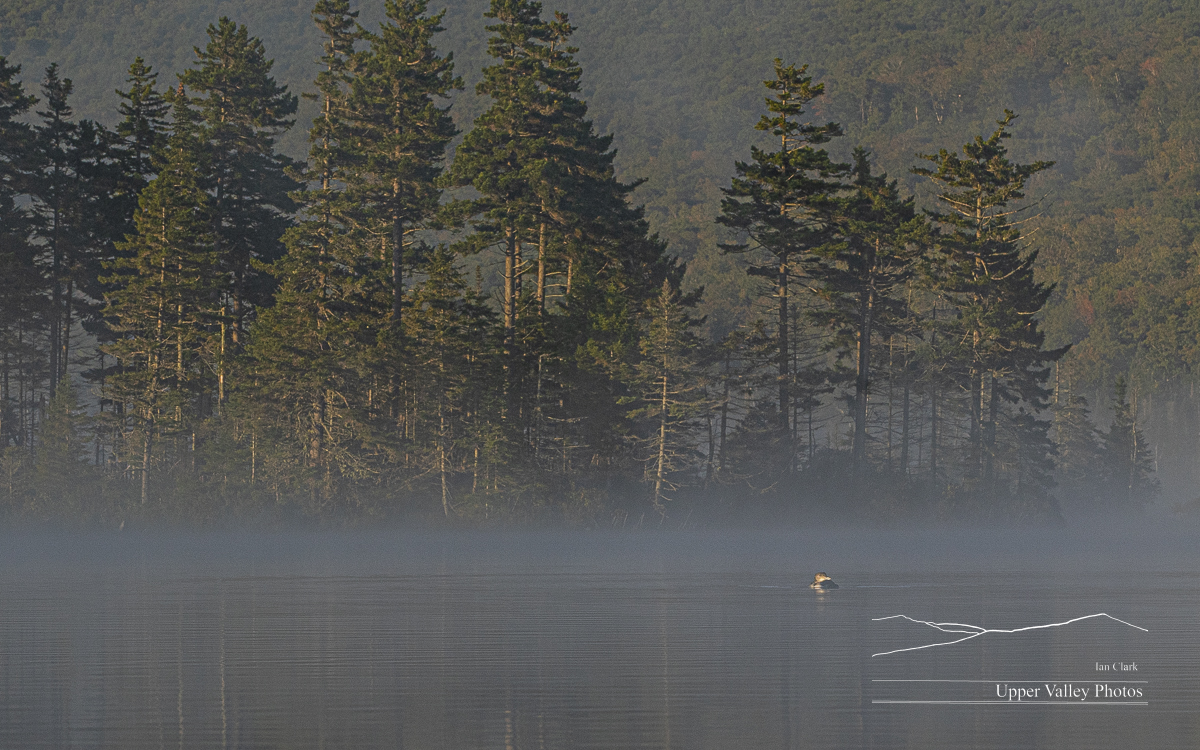
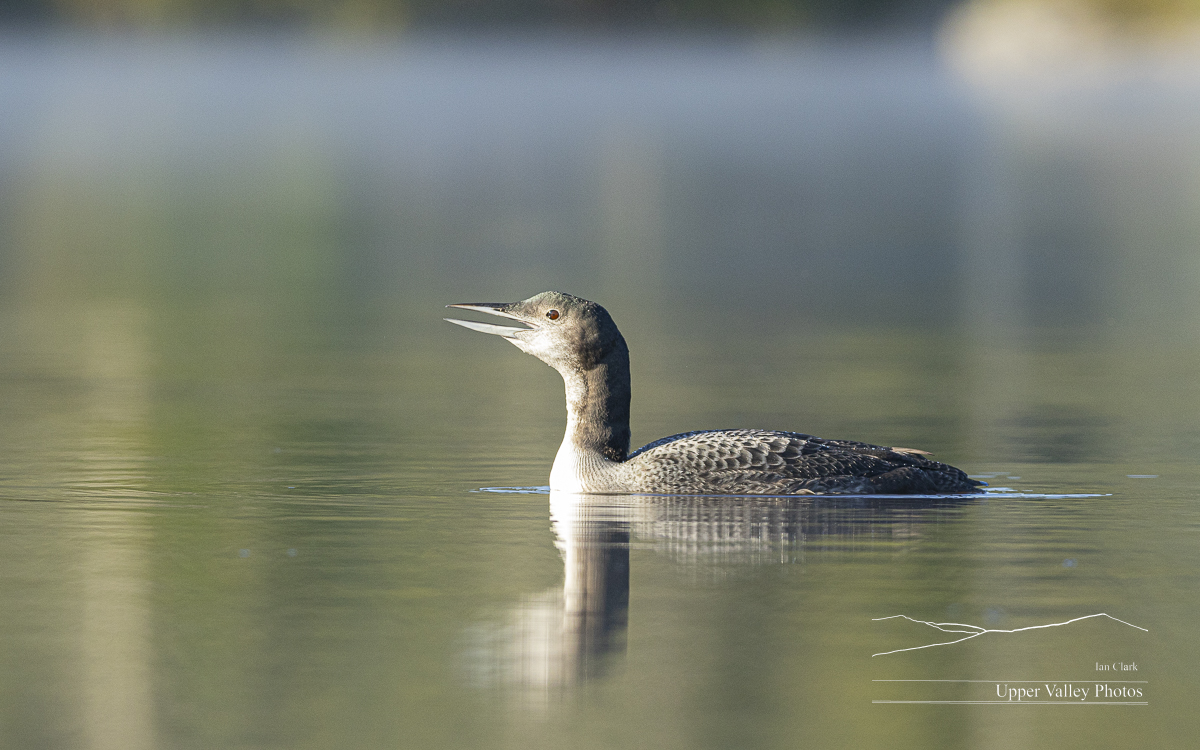
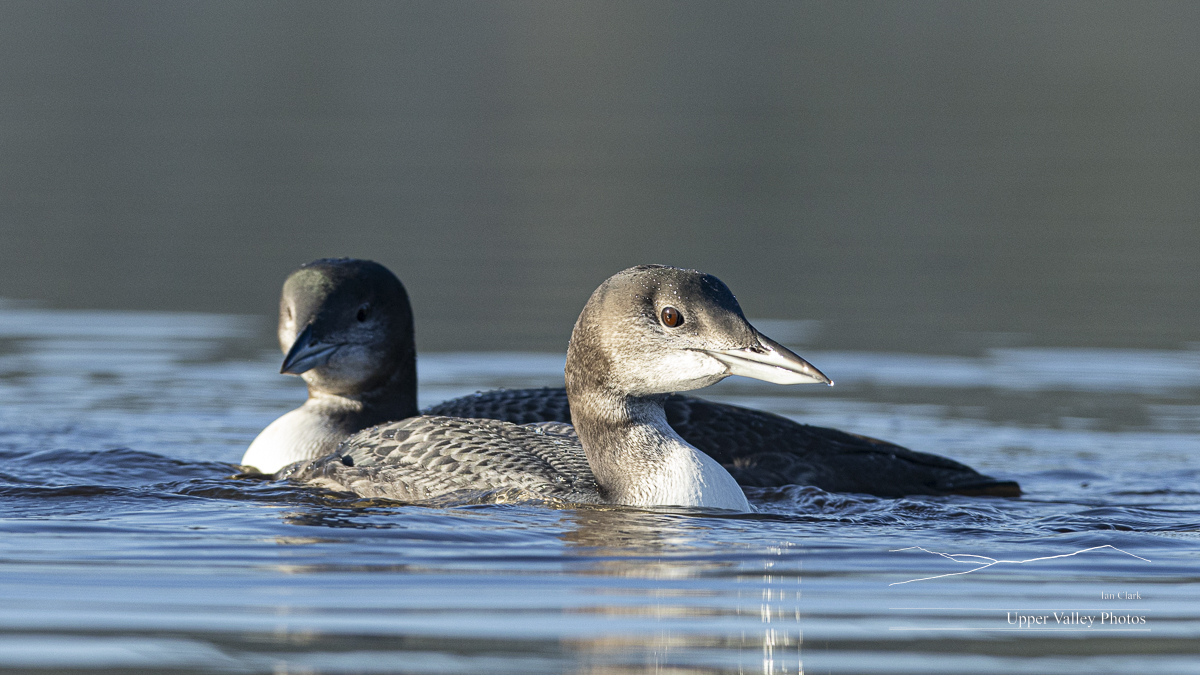
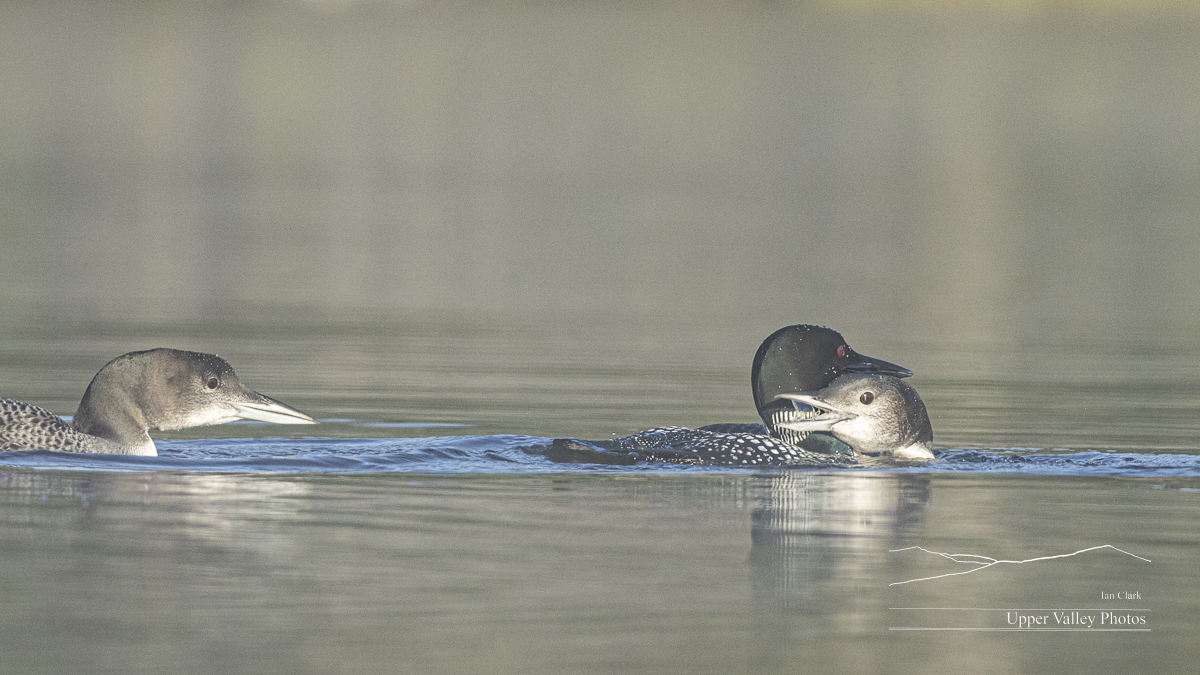
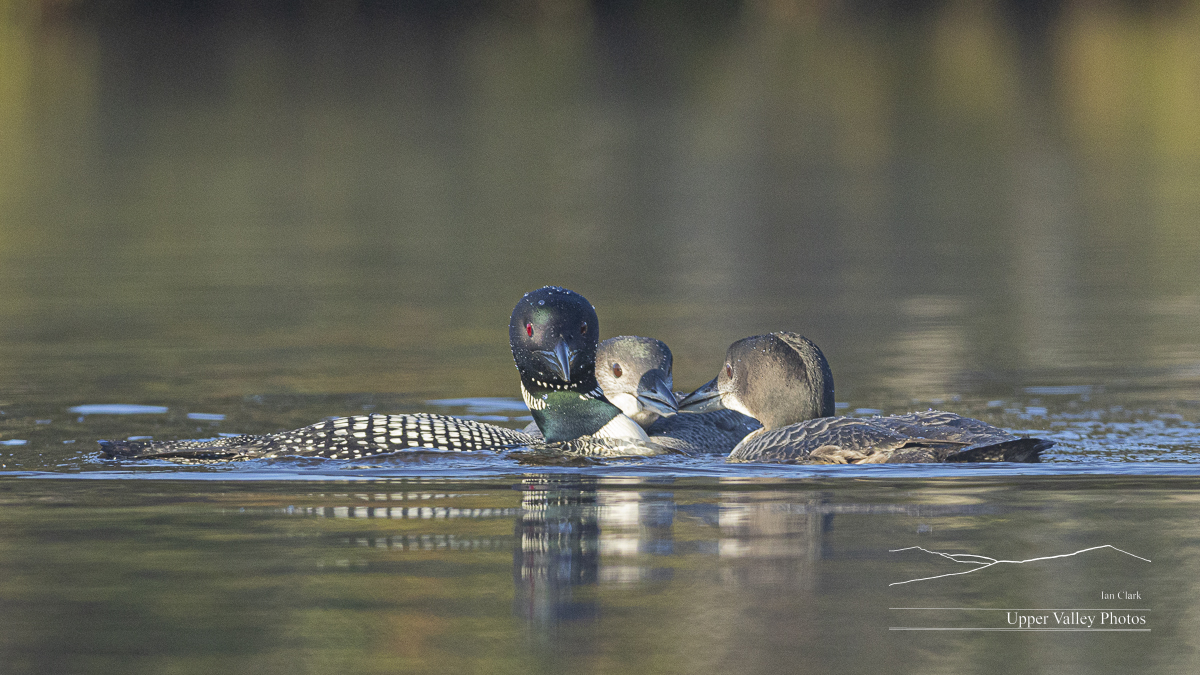


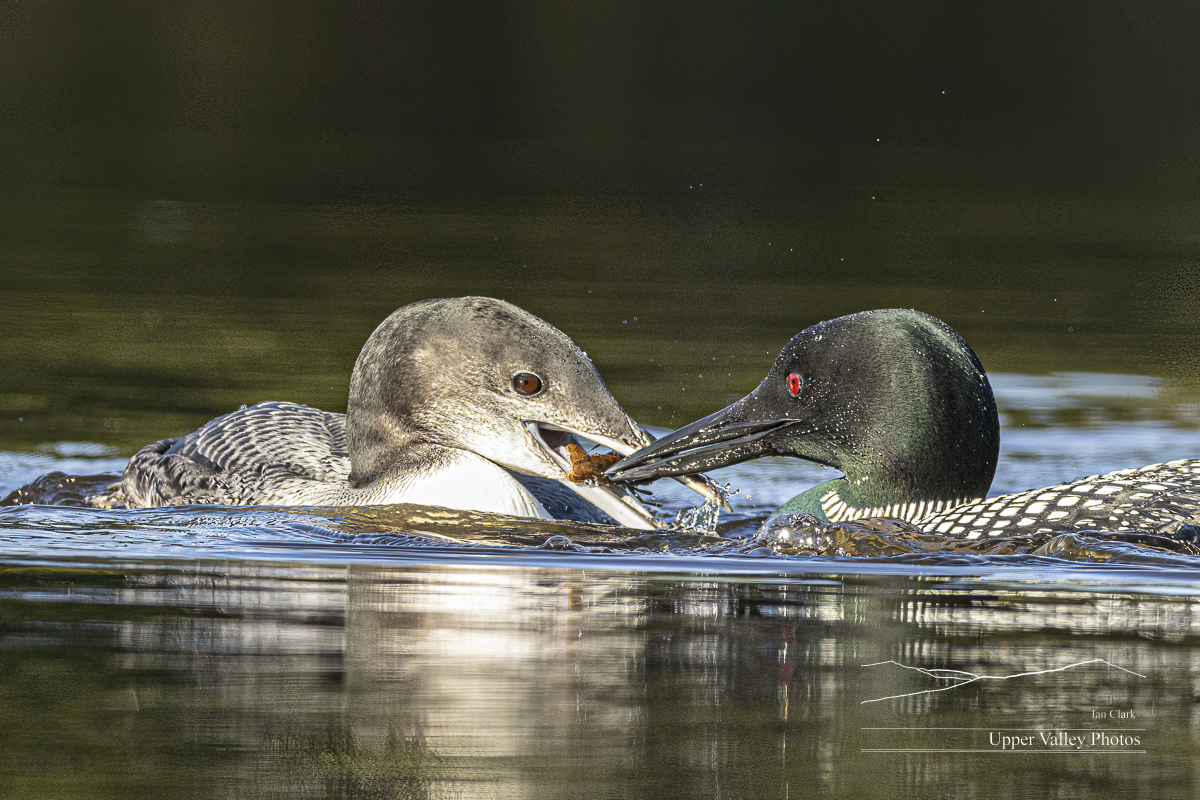
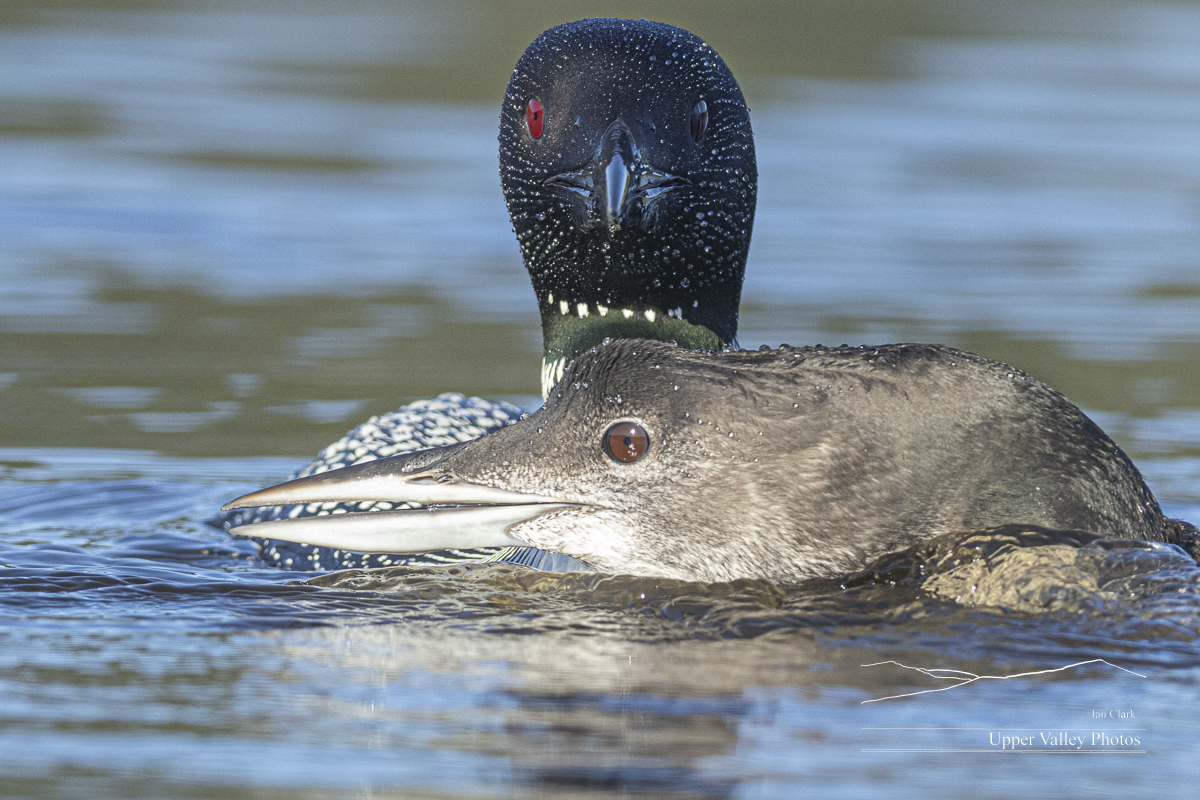
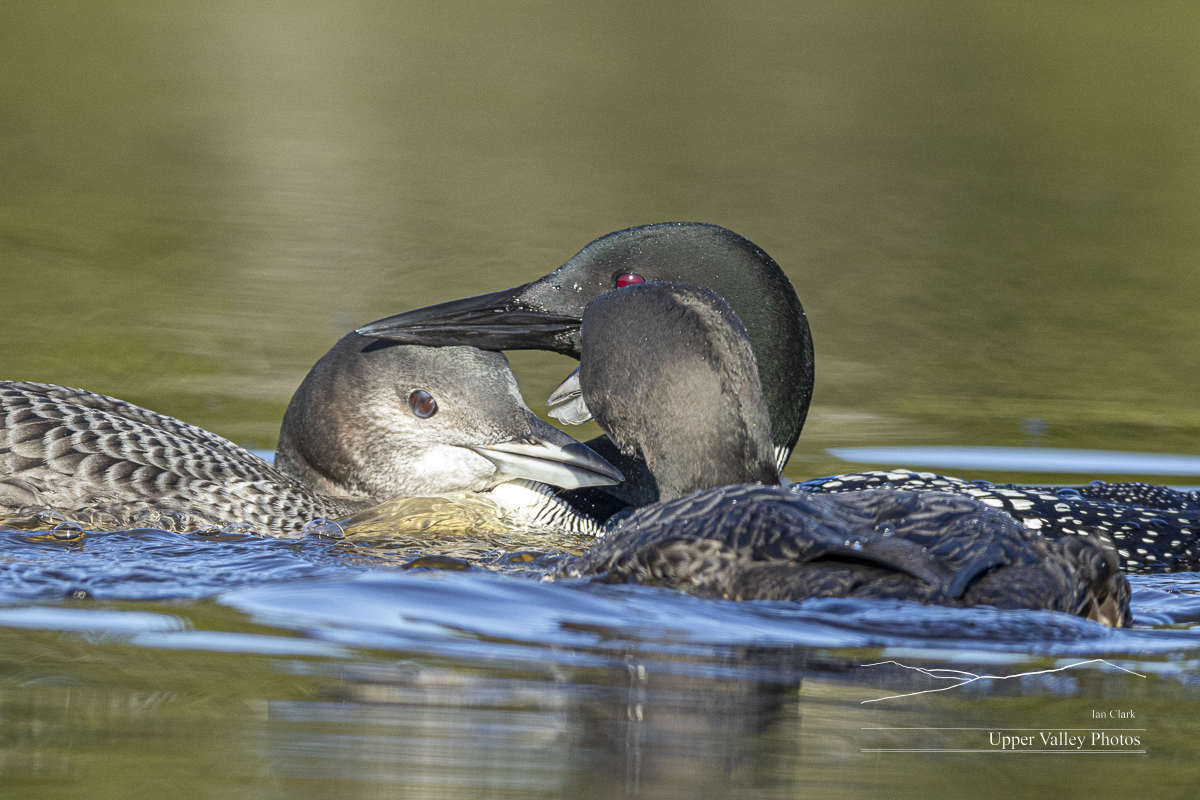
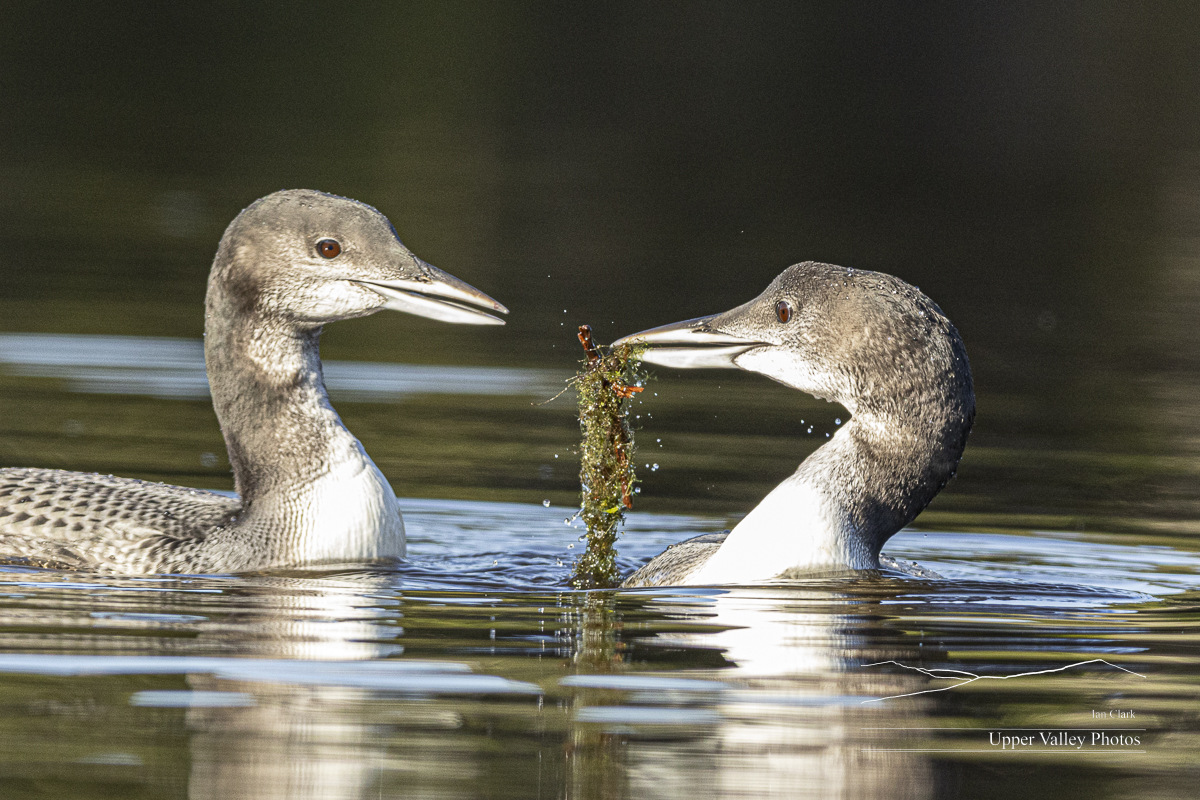
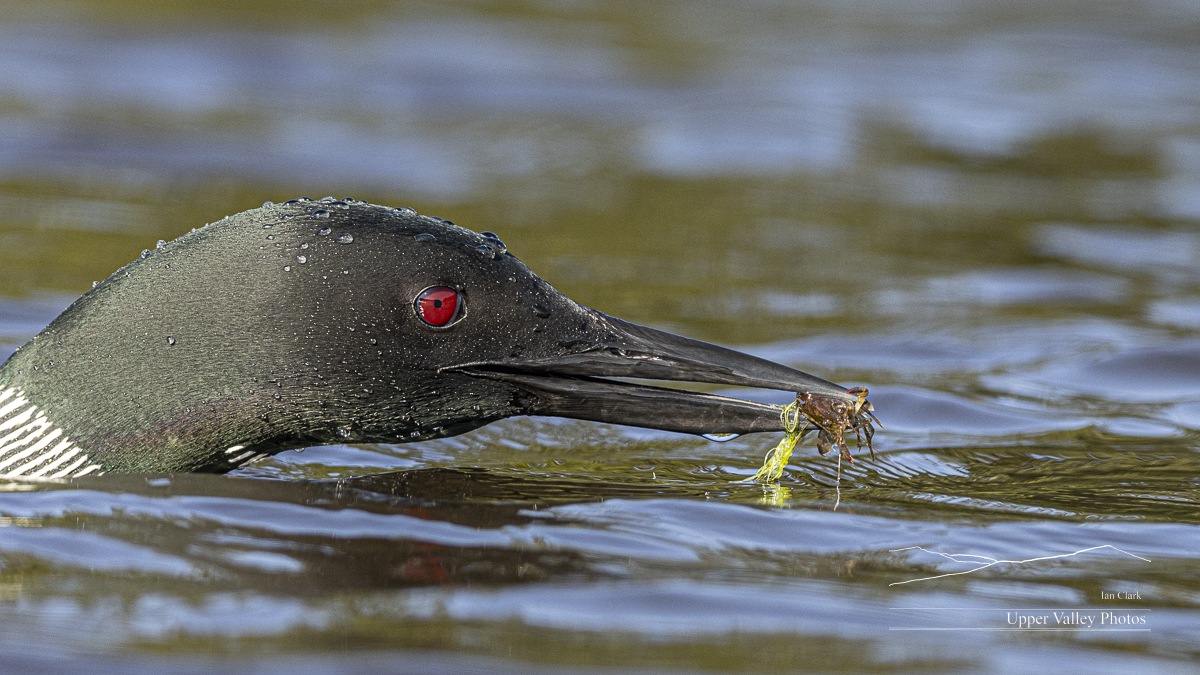
I returned to the pond Tuesday morning. The pond was mostly above the fog again. Beautiful blue skies and the hills to the west were in full sunlight. The pond was stuck in the shadow of one stubborn thick cloud.
The chicks were alone on the pond, both parents were elsewhere. The chicks were foraging about two-thirds of a mile apart. Both successfully feeding themselves. As the sun came up, a breeze grew and the chicks took time to practice flying.
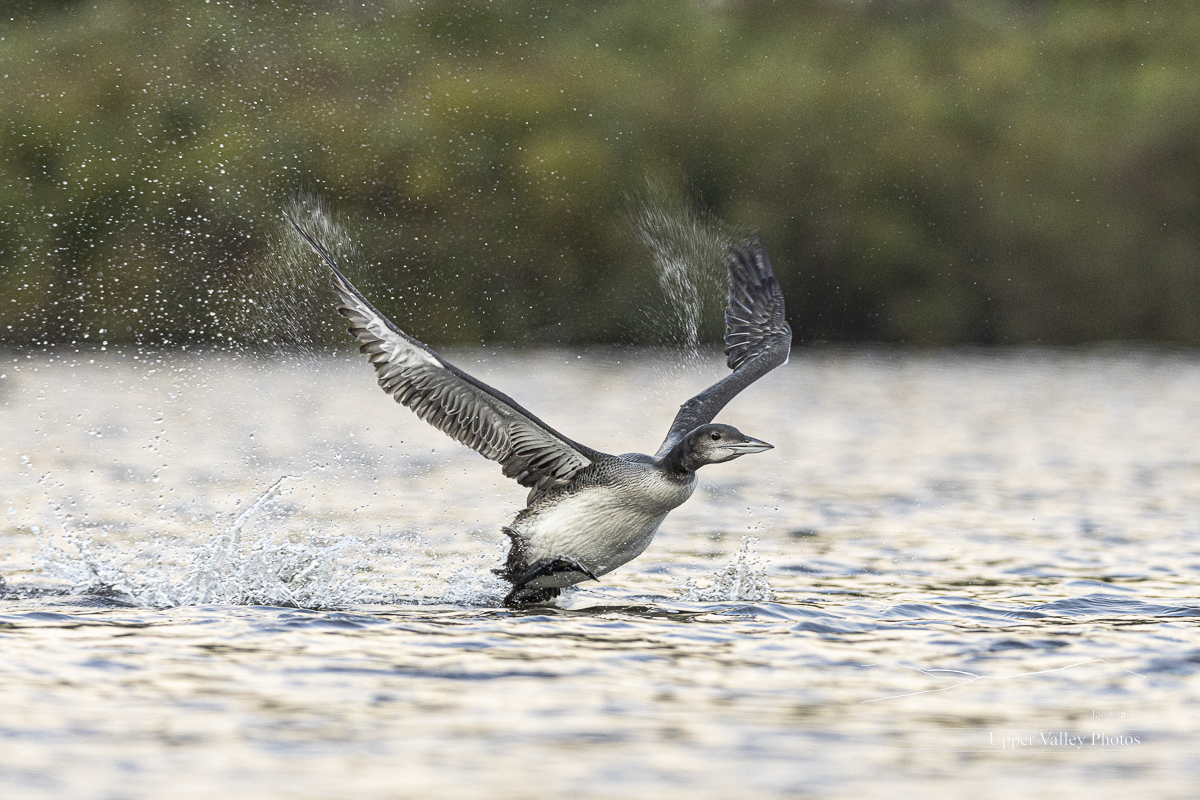
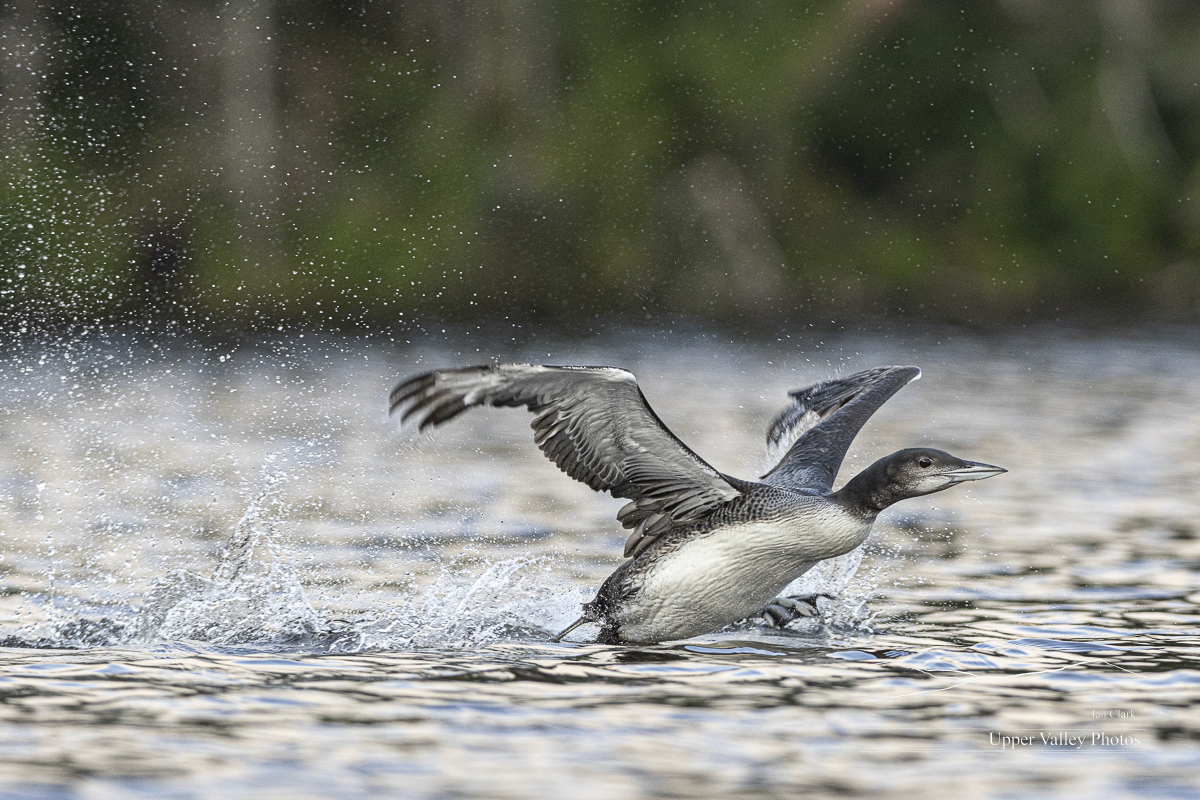

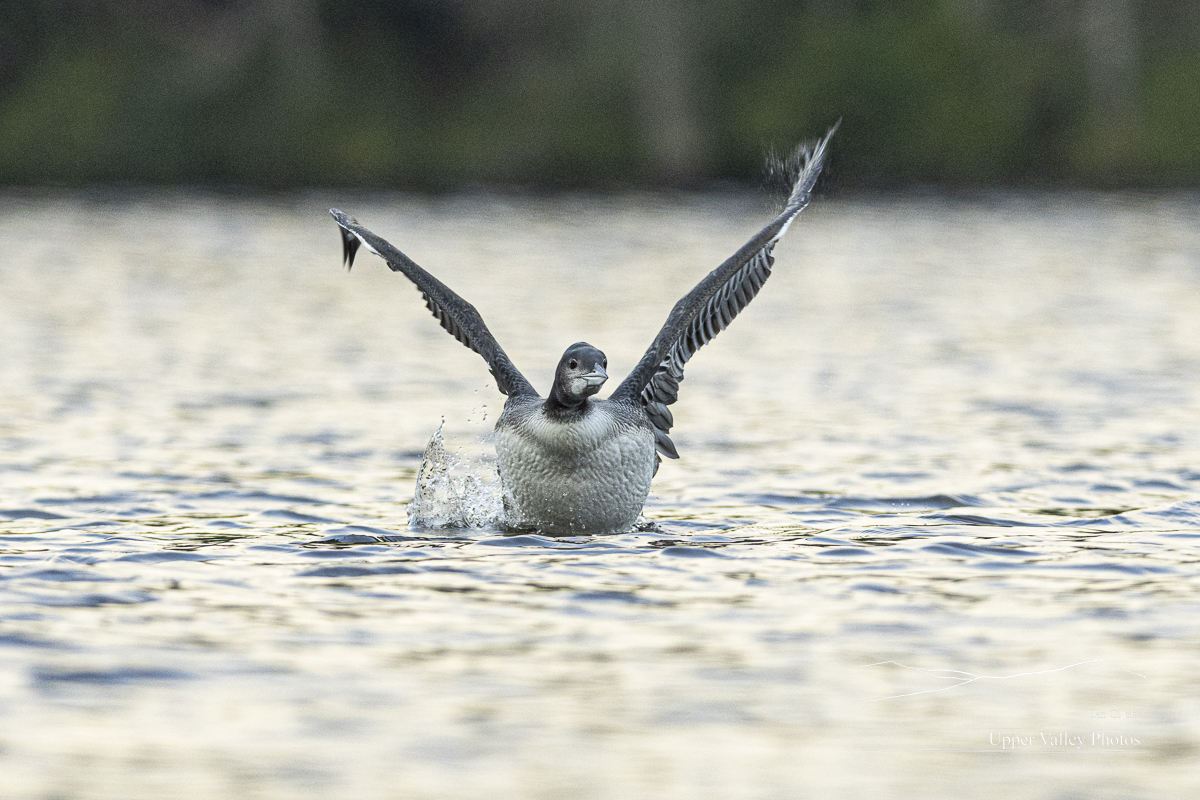
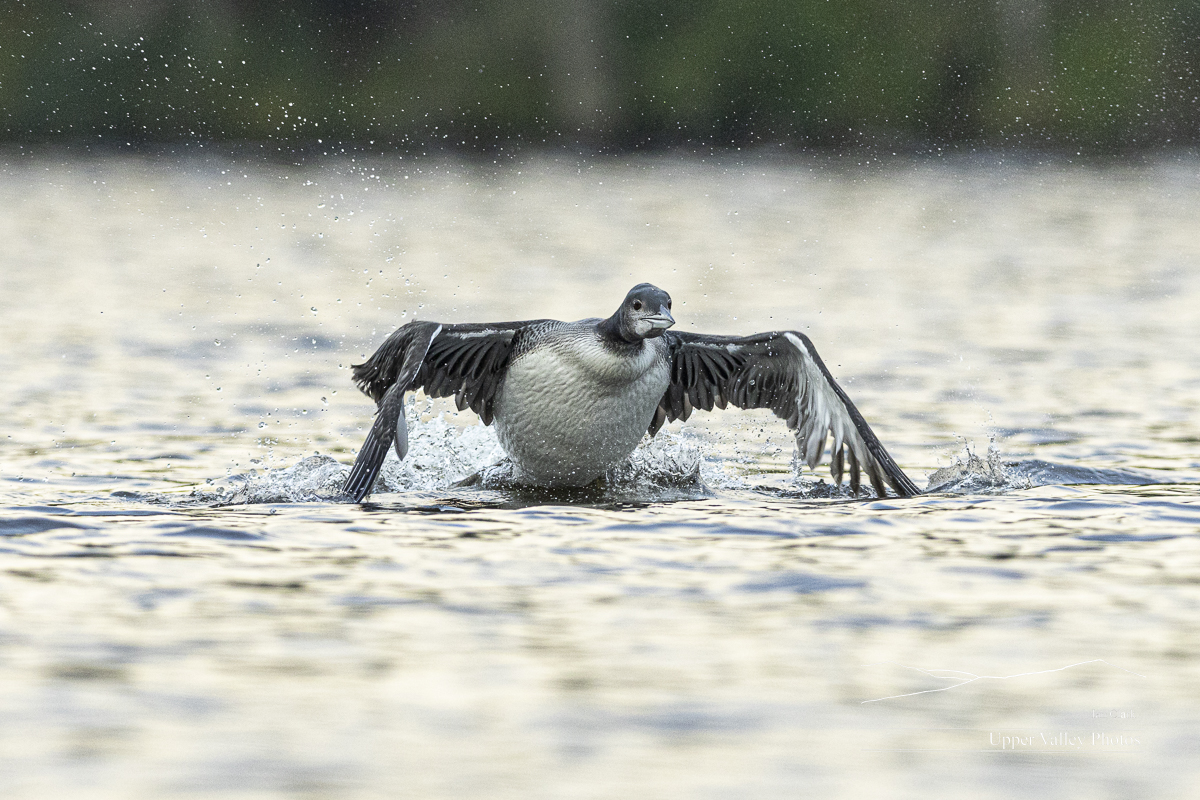


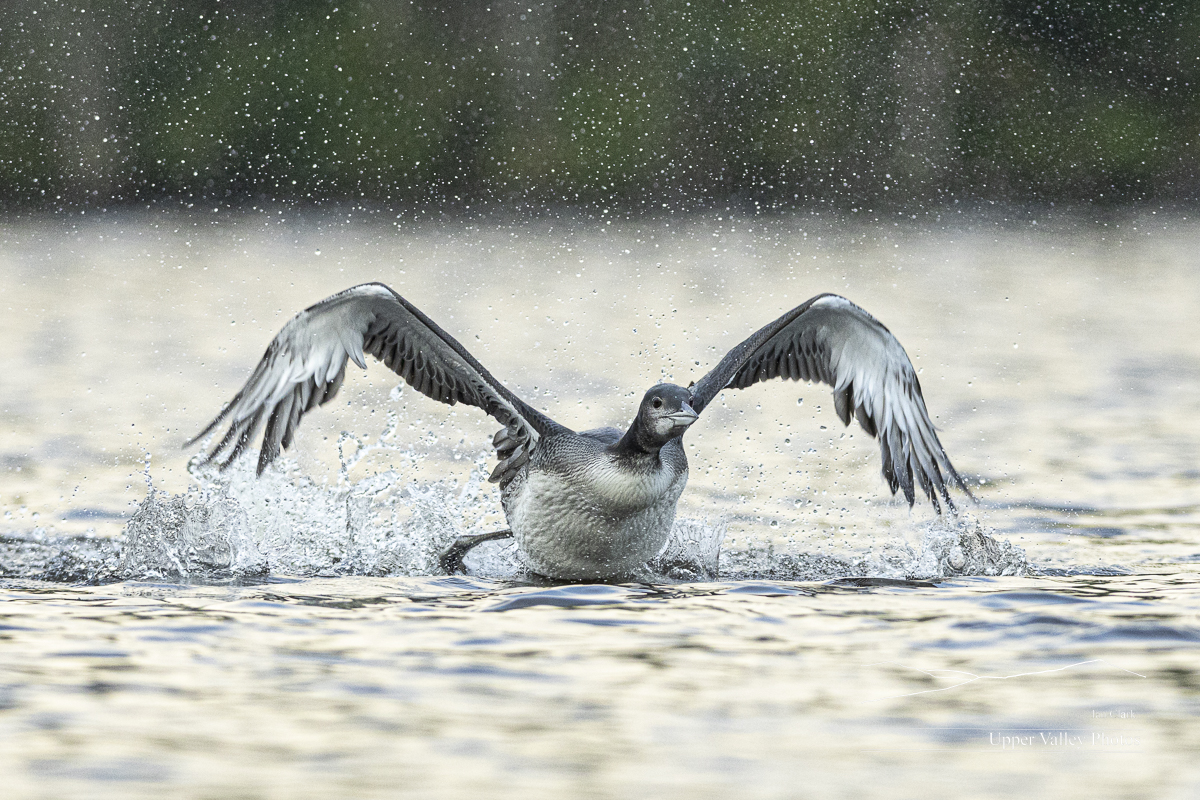
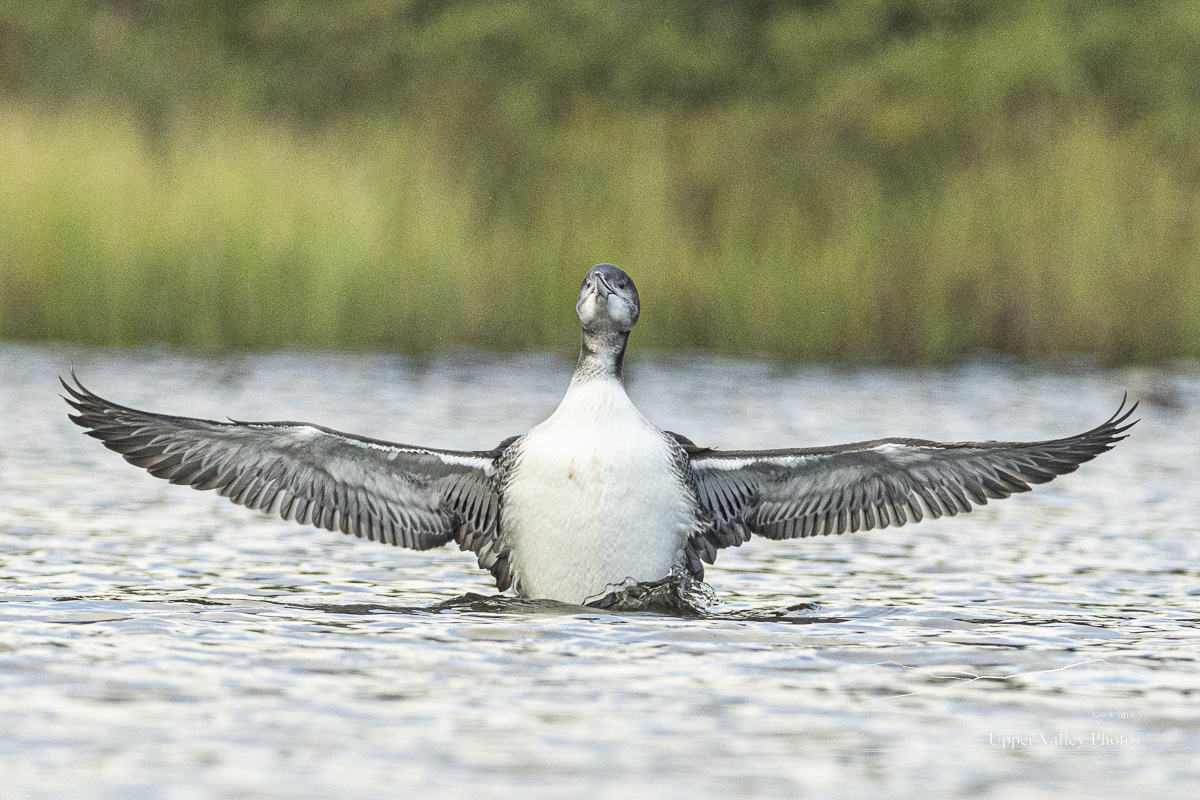
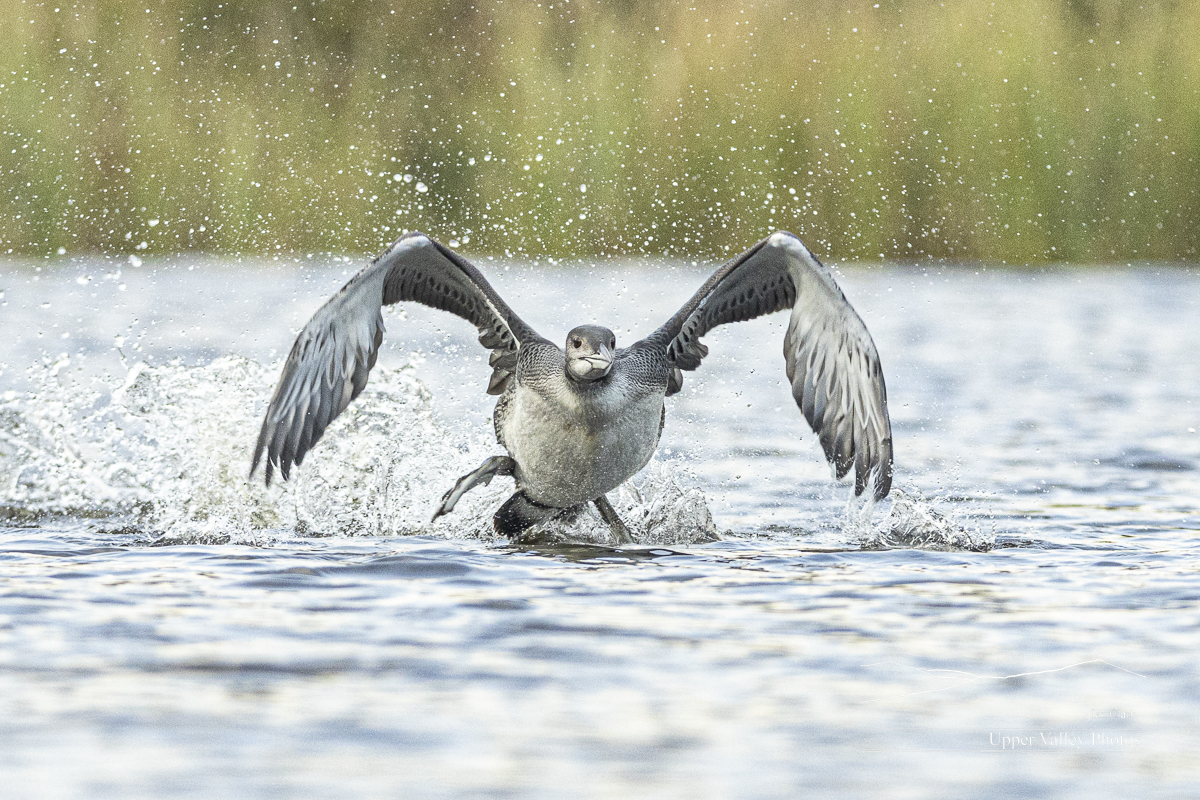


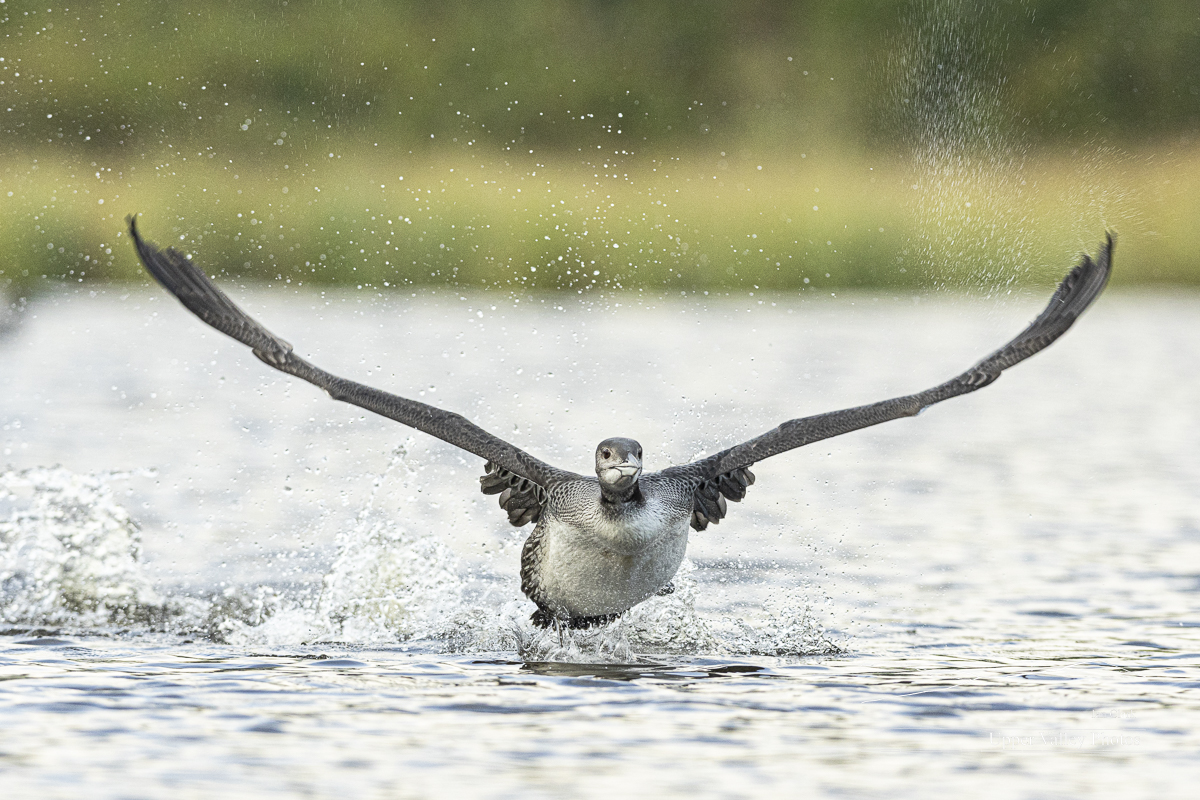
The Middletons appear to have scooted from their pond, they haven’t been spotted in almost a week. The Westons were doing well as of this past weekend. Both chicks are growing and getting independent. I’m hoping to get a chance to visit them before they head out.
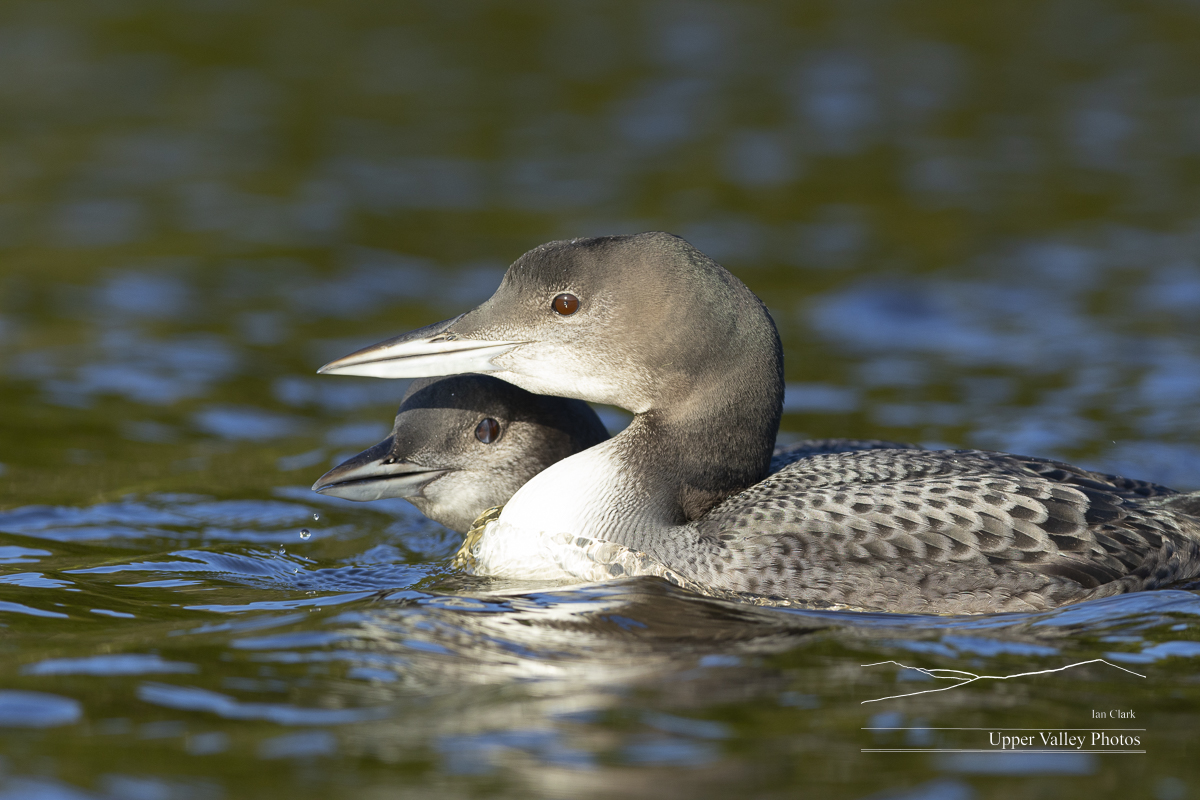

Loon Chicks at 10 Weeks
Monday morning there were stars above and a thick fog over the river in the valley below. I decided to risk a trip to visit the Eastons. Most of the trip to the pond was slow going through the fog. As I started to climb towards the pond, I rose back above the fog to find a beautiful morning.
Dad was foraging by himself near the boat launch, he paddled in close to hoot softly to me before returning to feasting on crayfish. Mom called a couple times while I was getting the boat in the water. This is the pond where Dad is banded, letting me tell who is who if I can see a leg.

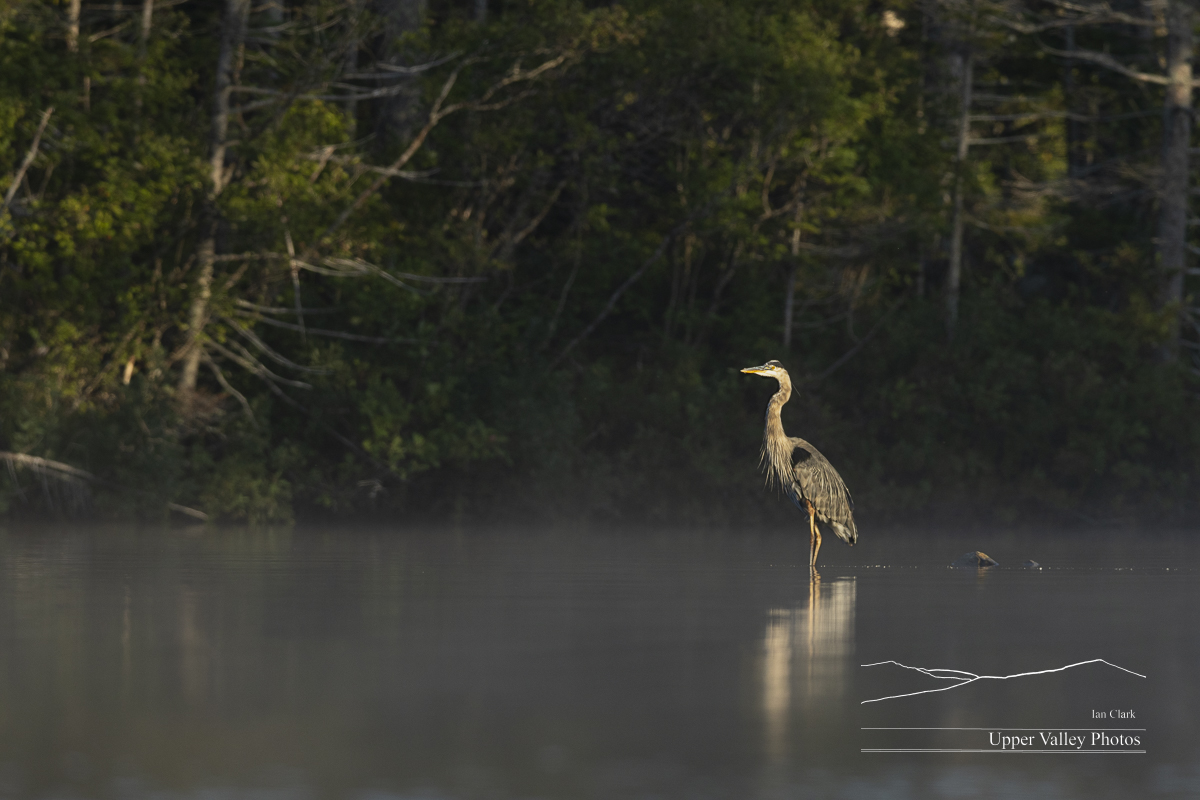
The chicks were keeping mom busy. They’re very demanding, poking and pulling feathers whenever she got near. She didn’t spend much time on the surface, she’d dive quickly when a chick got near. I’m convinced this is why the parents leave the pond before the chicks – they just want some peace.
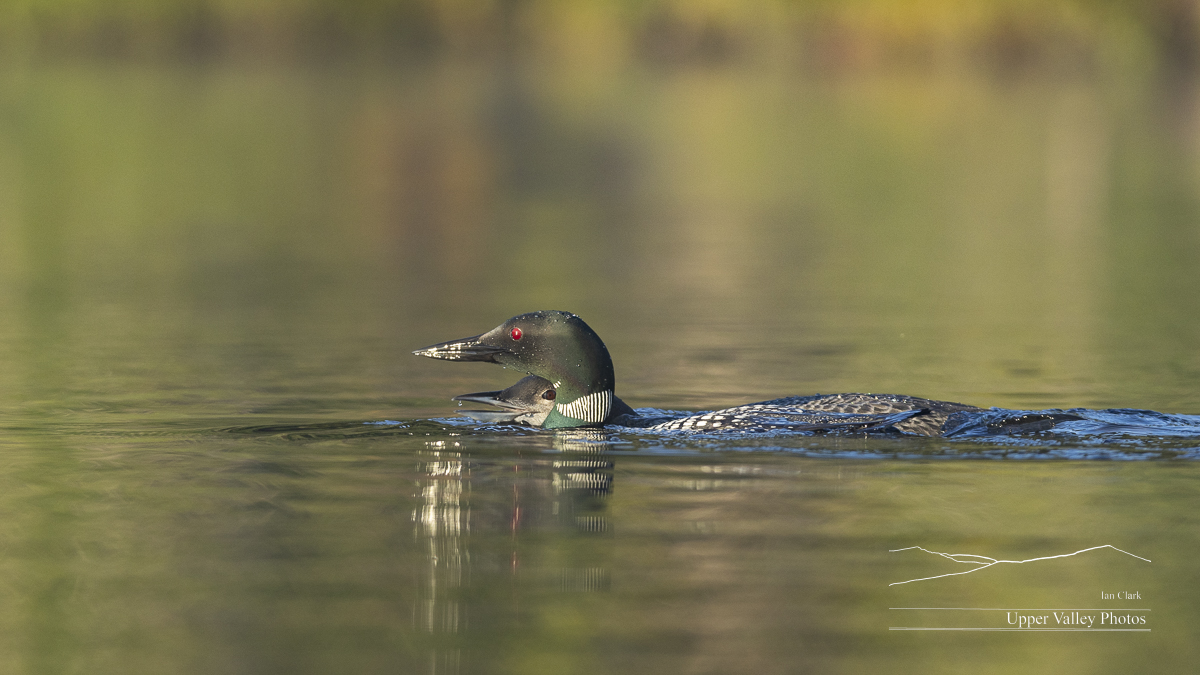
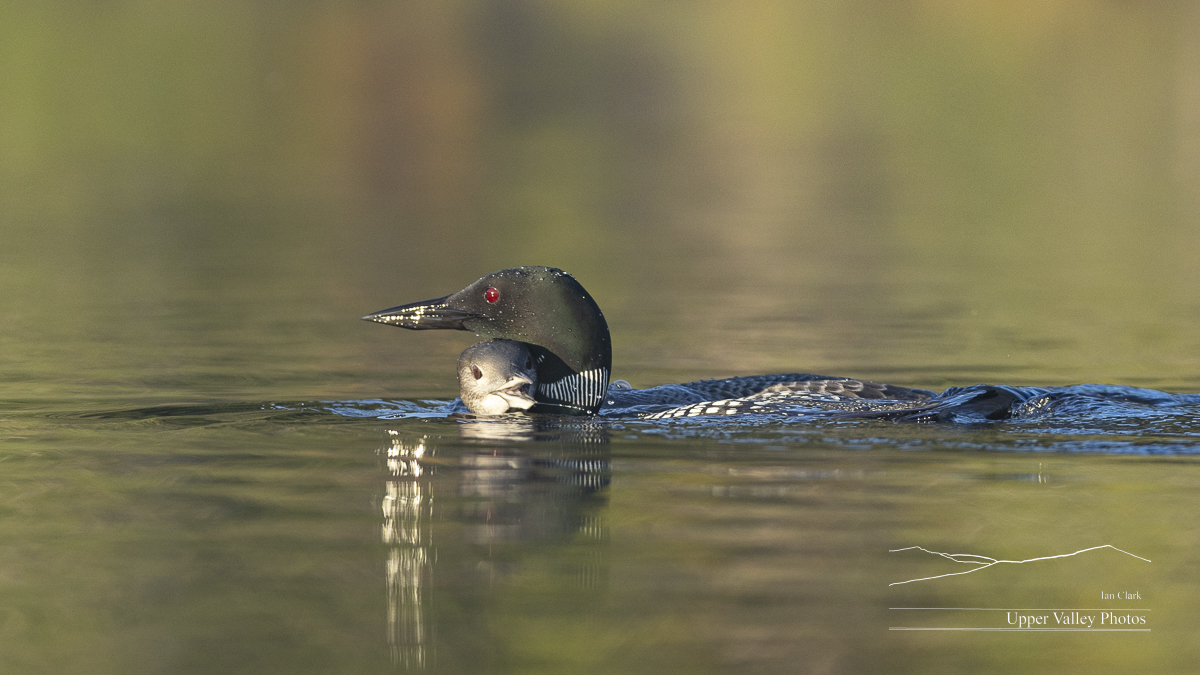

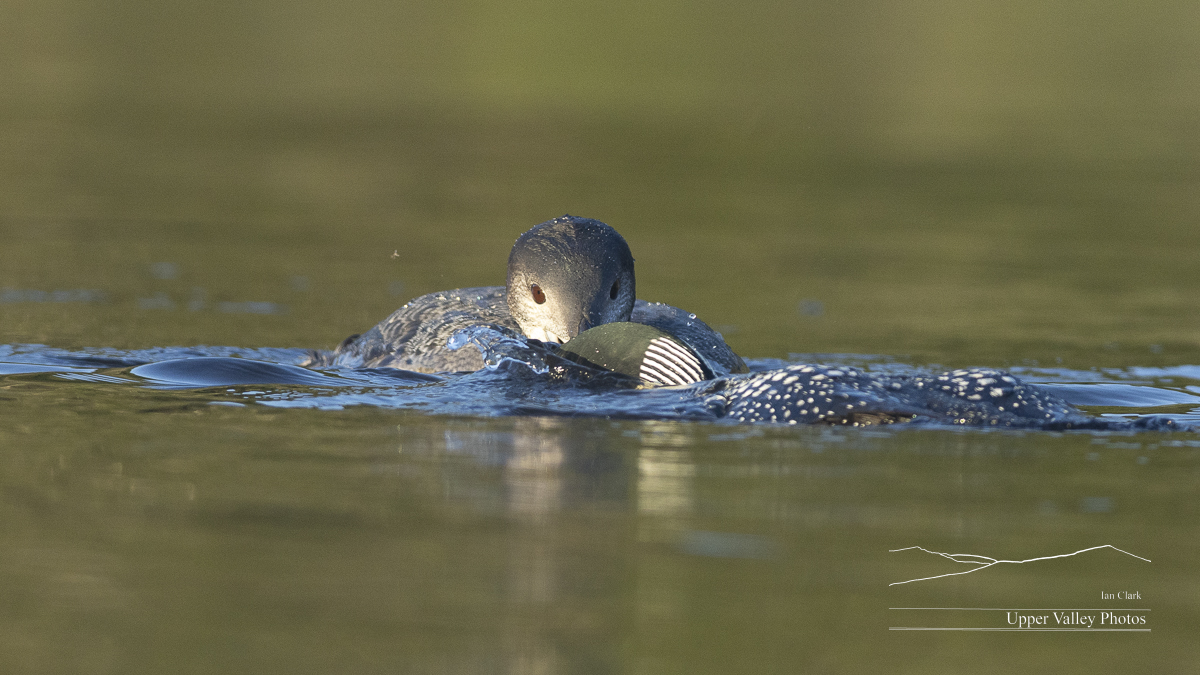

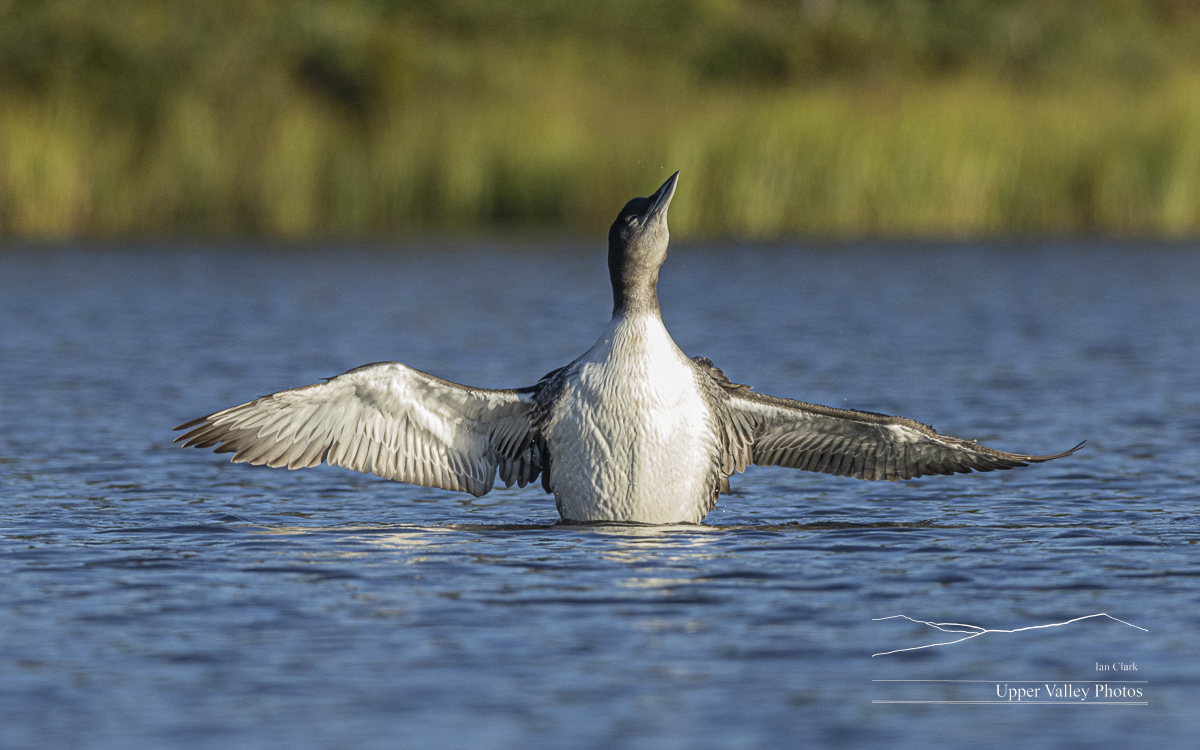
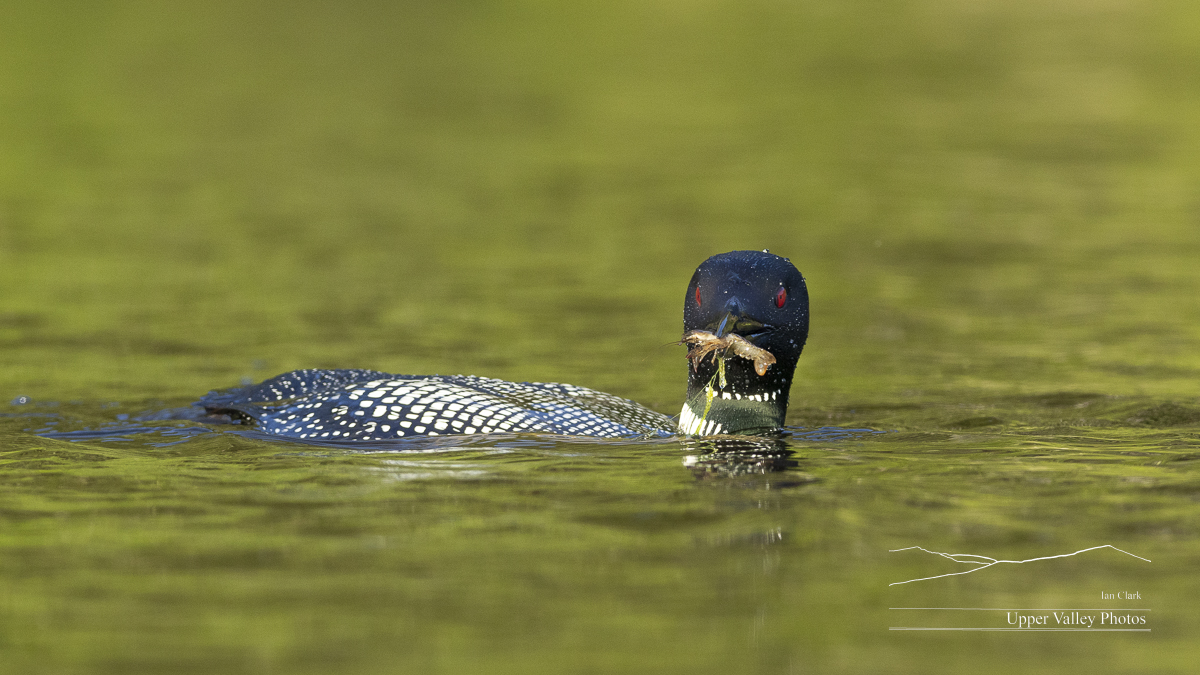


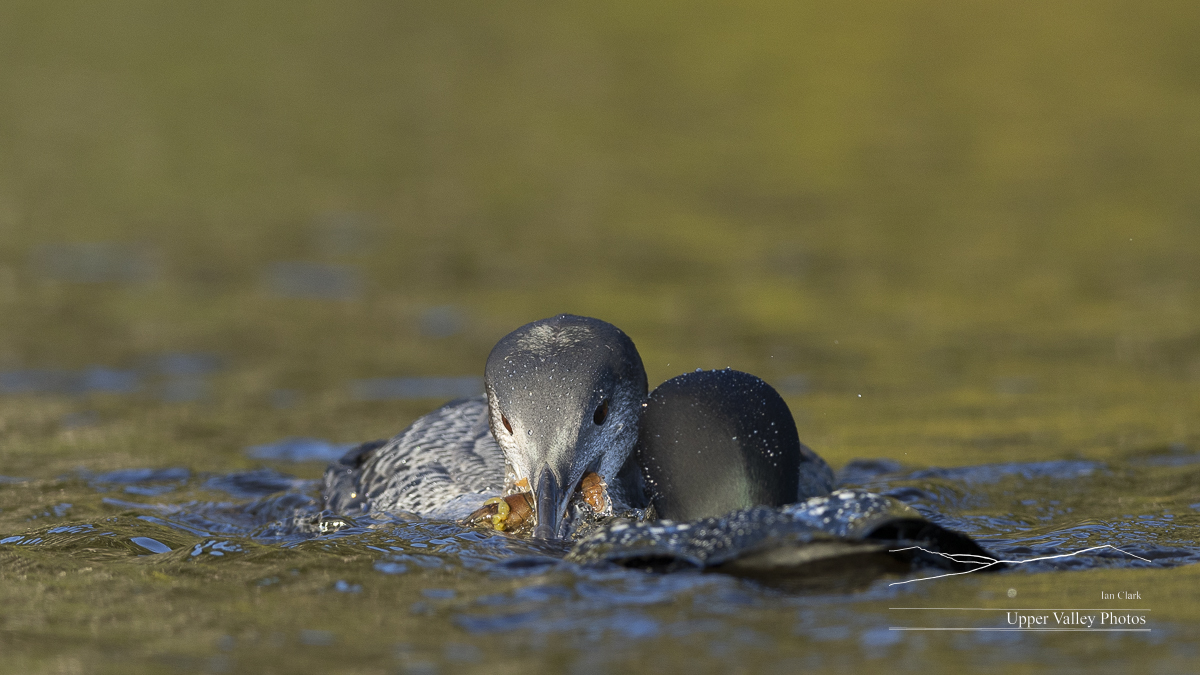
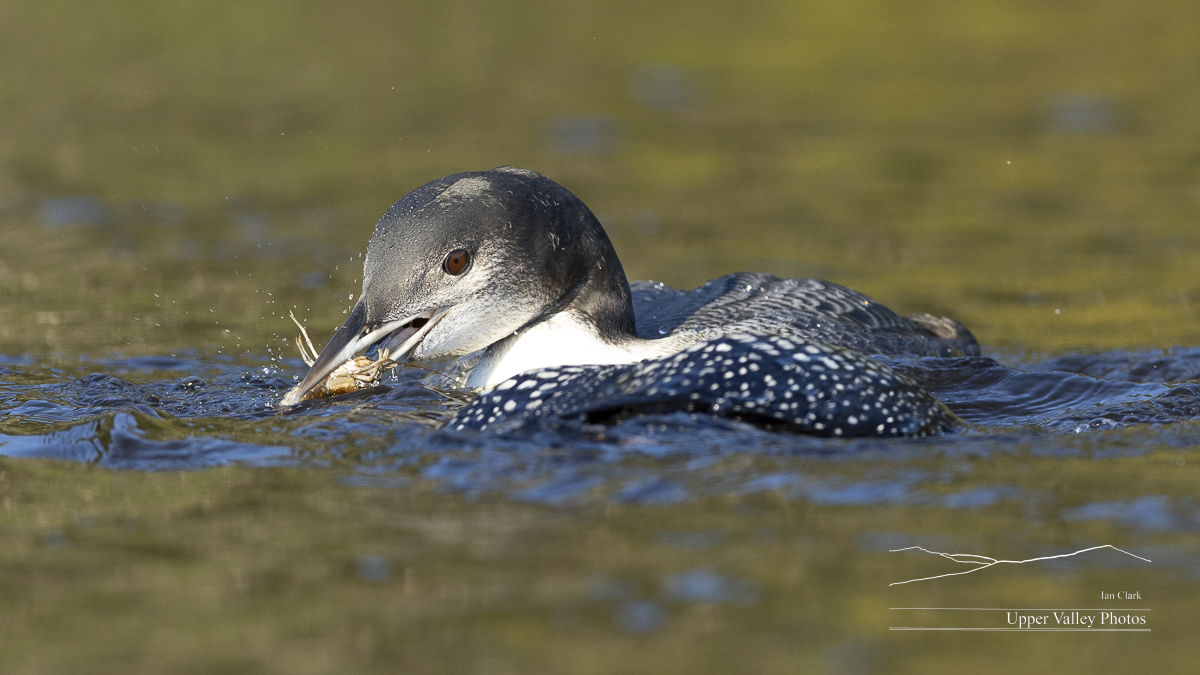

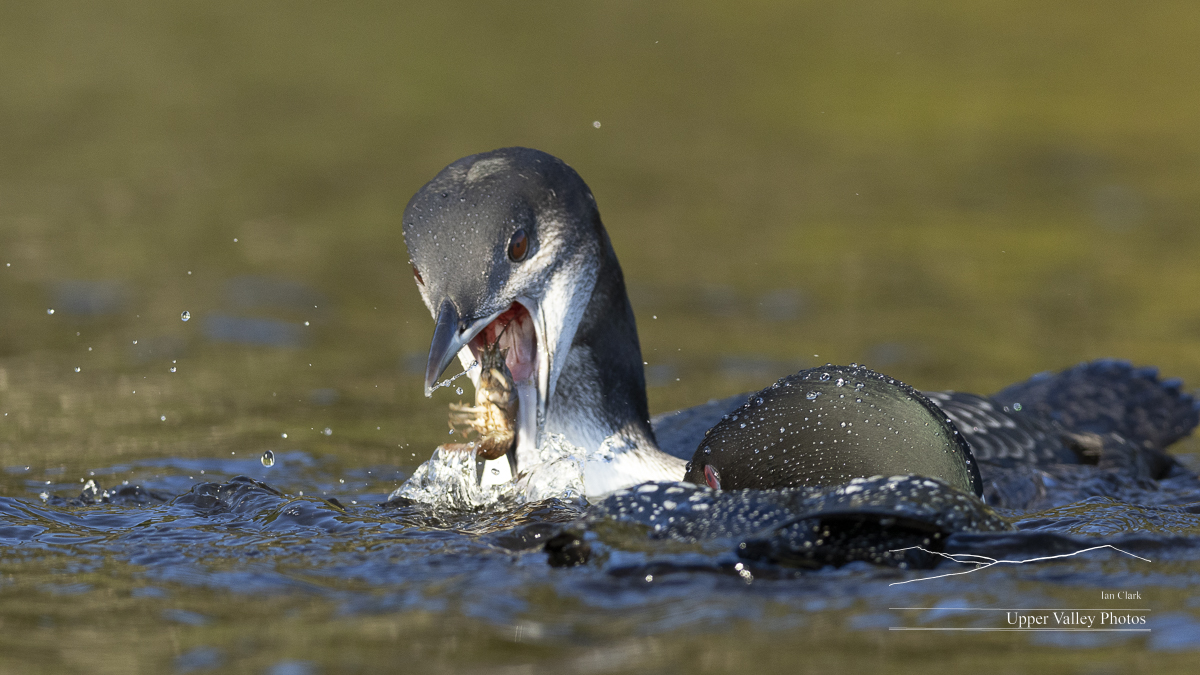

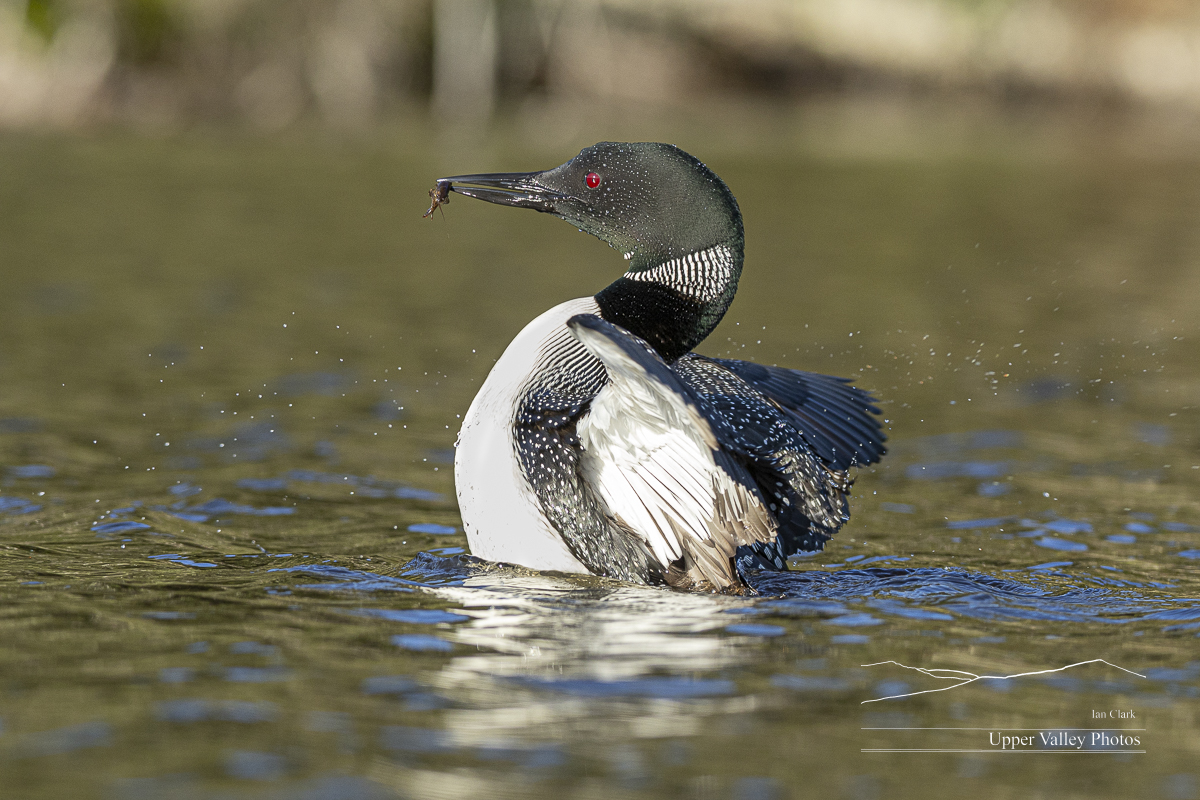


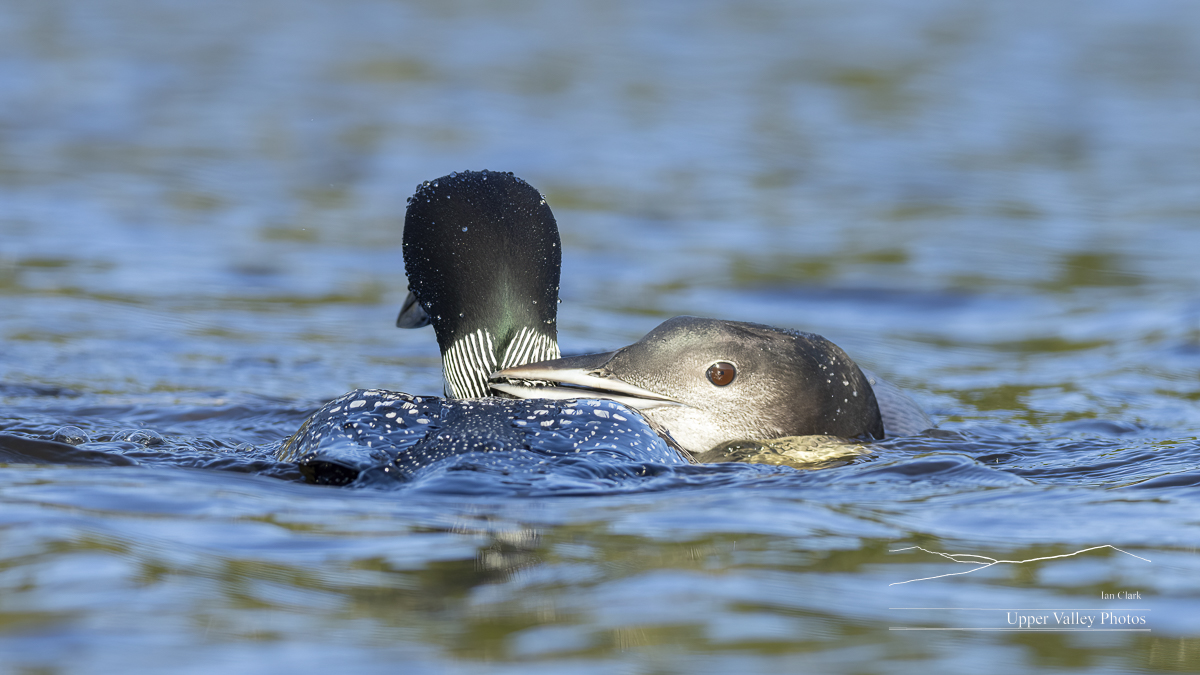
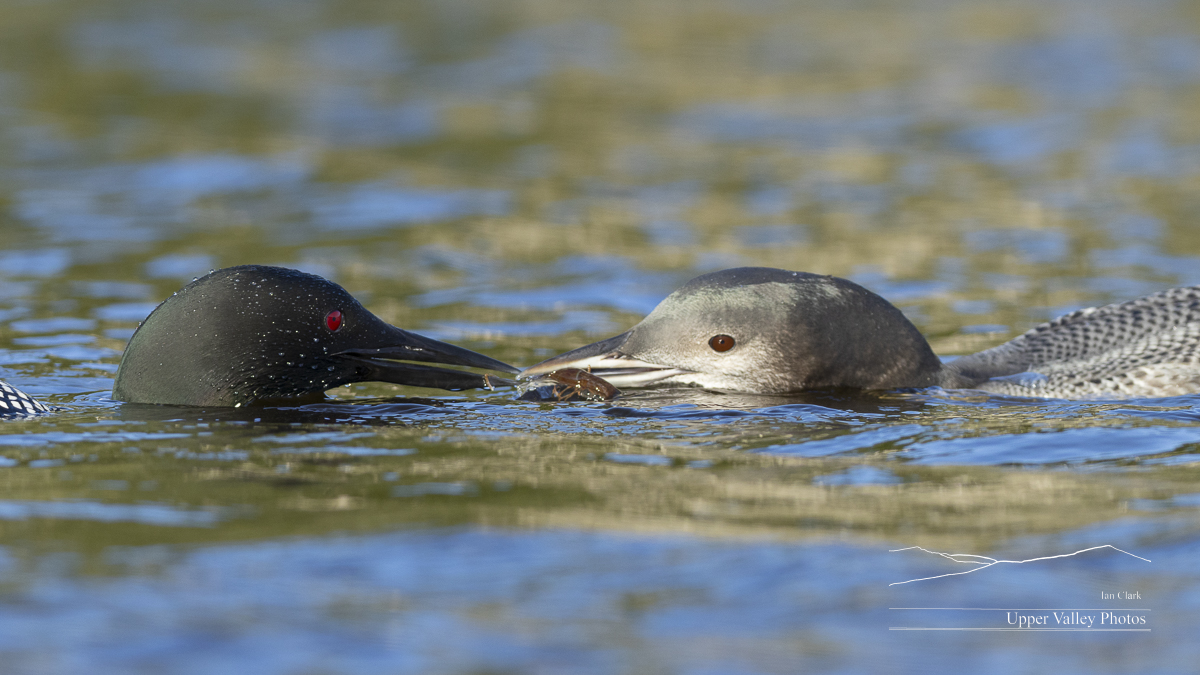
Heading back to the boat launch, I pass dad who is lazily paddling along, seemingly enjoying the peace and quiet on this end of the pond.
I was surprised the fog hadn’t shown up on the pond, there’s usually a period where the pond gets foggy as the fog lifts from the valley. Driving back towards home, I discovered why – the fog was still sitting heavy on the river.
Back at the house, the goldfinches have discovered the thistle I left for them.
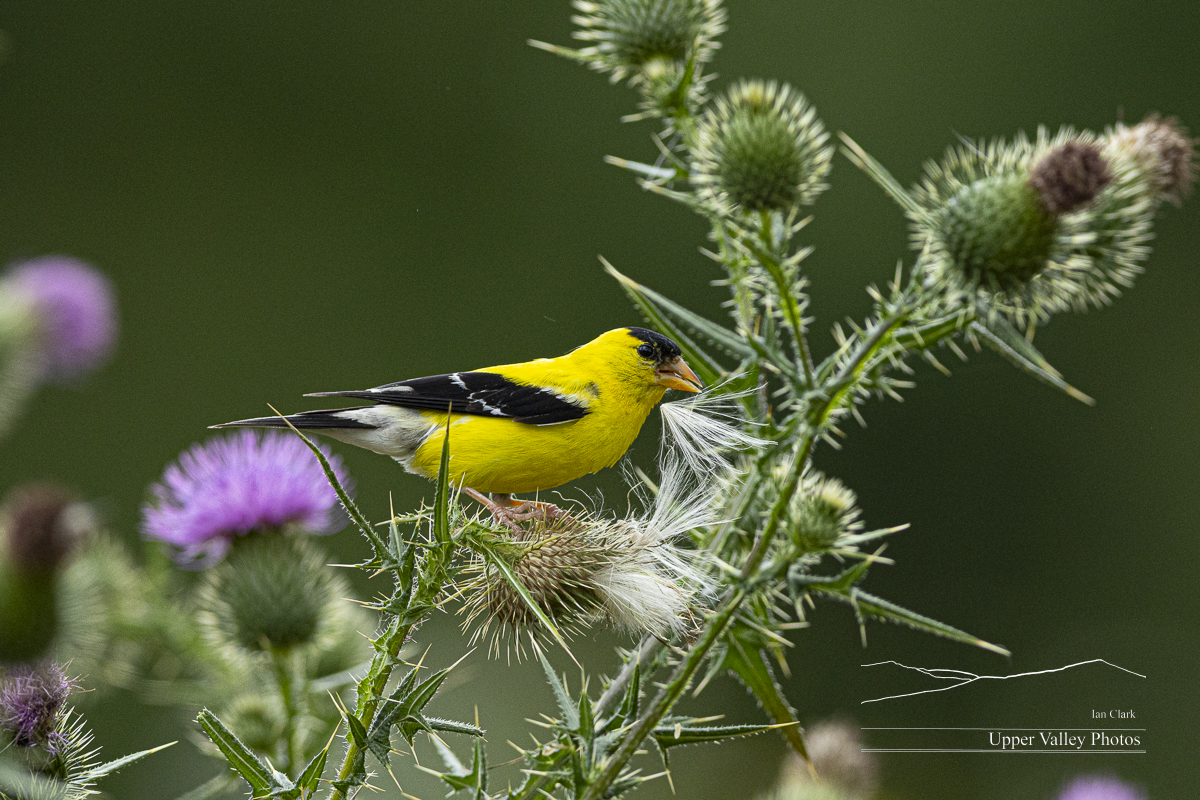
Battle for the Easton’s Pond
Sunday morning, the sky looked like there was a chance of some sunshine. I headed out to visit the Eastons. There was a light fog with hints of blue sky above when I arrived at the pond. And, it was a very pleasant 55° when I launched. The fog rapidly lifted for a beautiful morning. Our loon family was all together and the parents were both feeding the chicks.
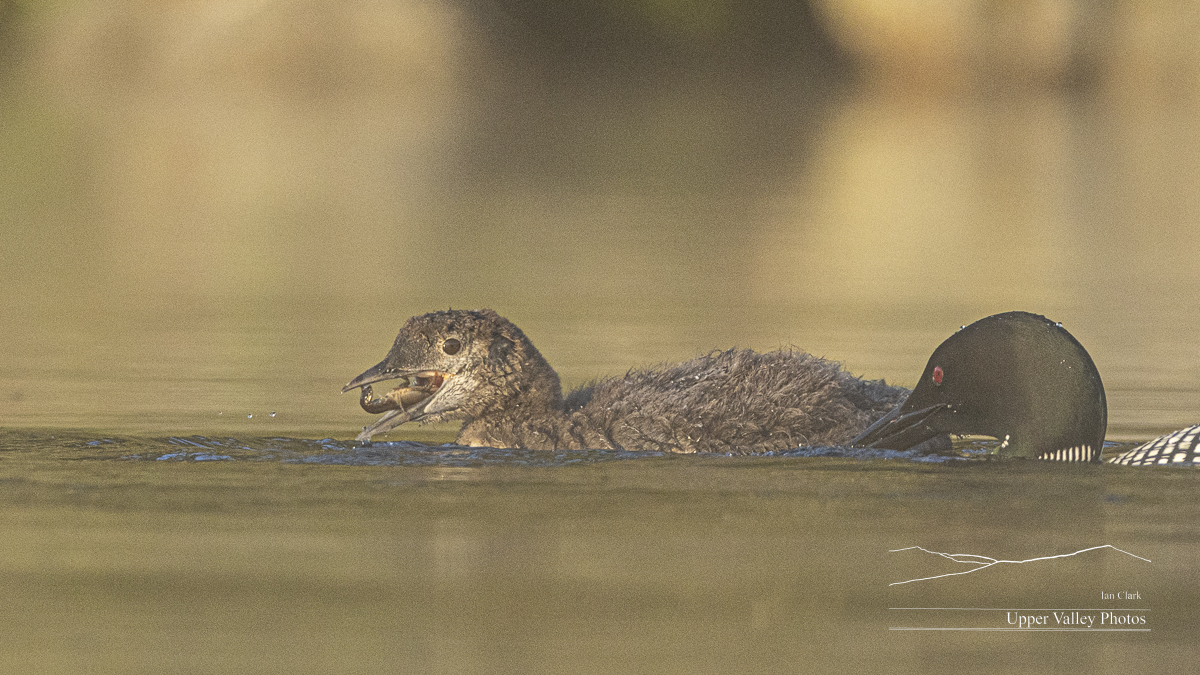
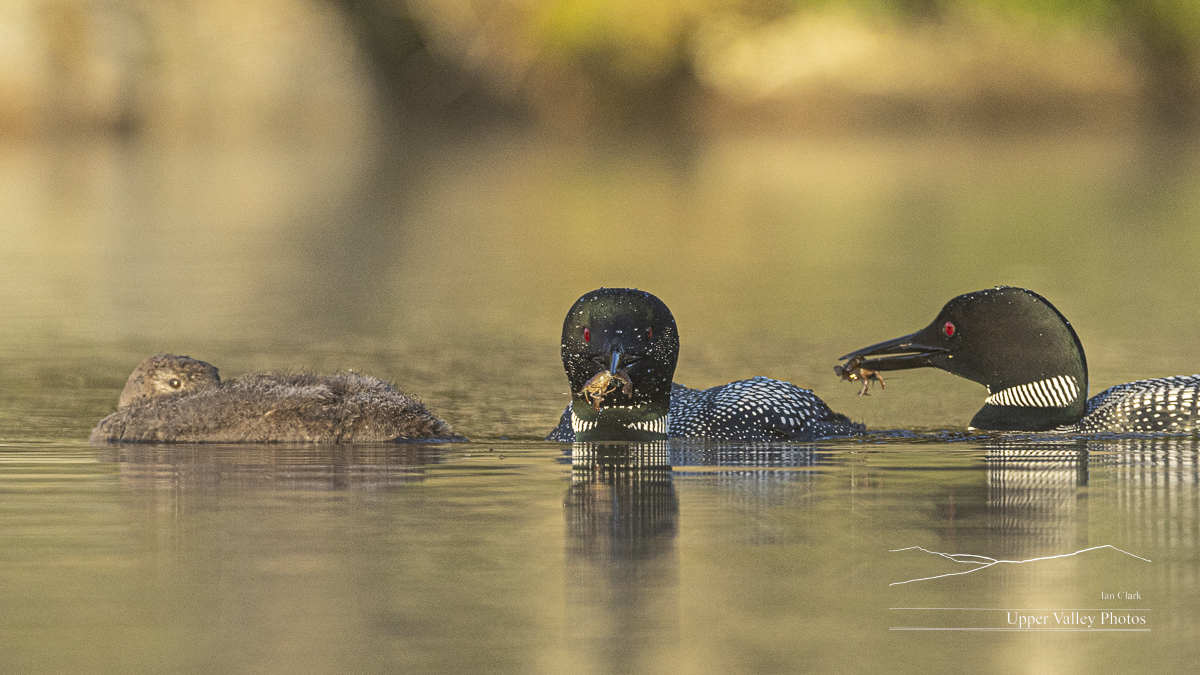
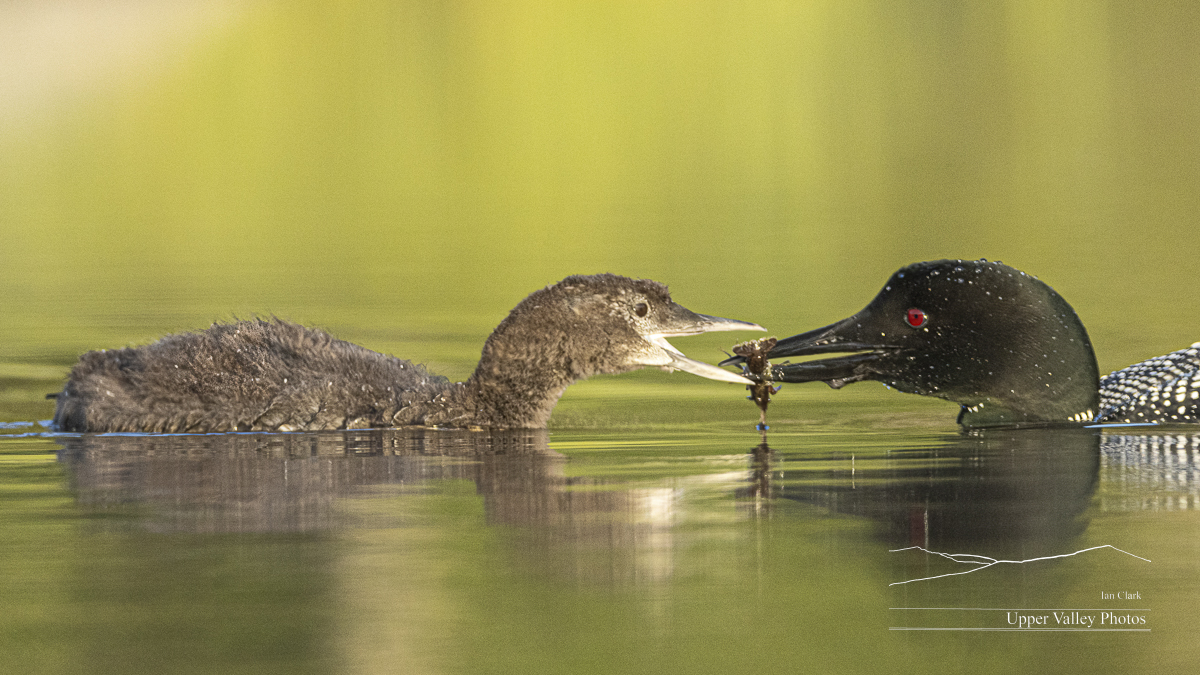
One parent went north, one went south. It wasn’t long before the one to the south sounded an alert. The one to the north went steaming down the pond at a good clip.

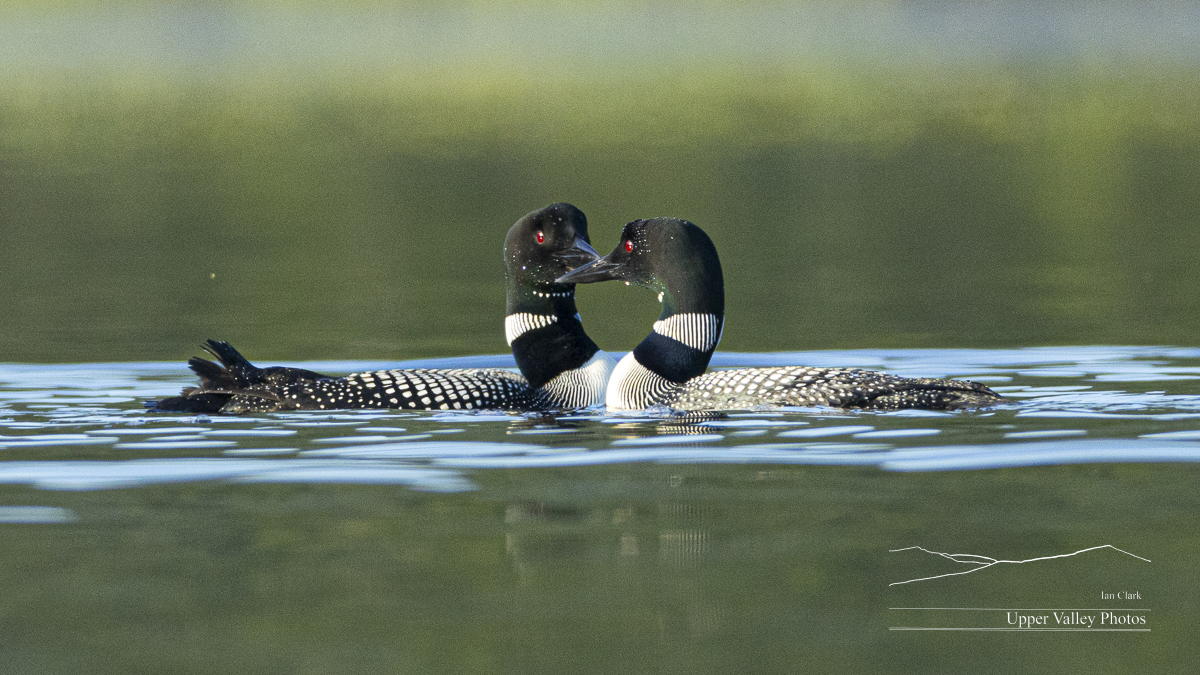
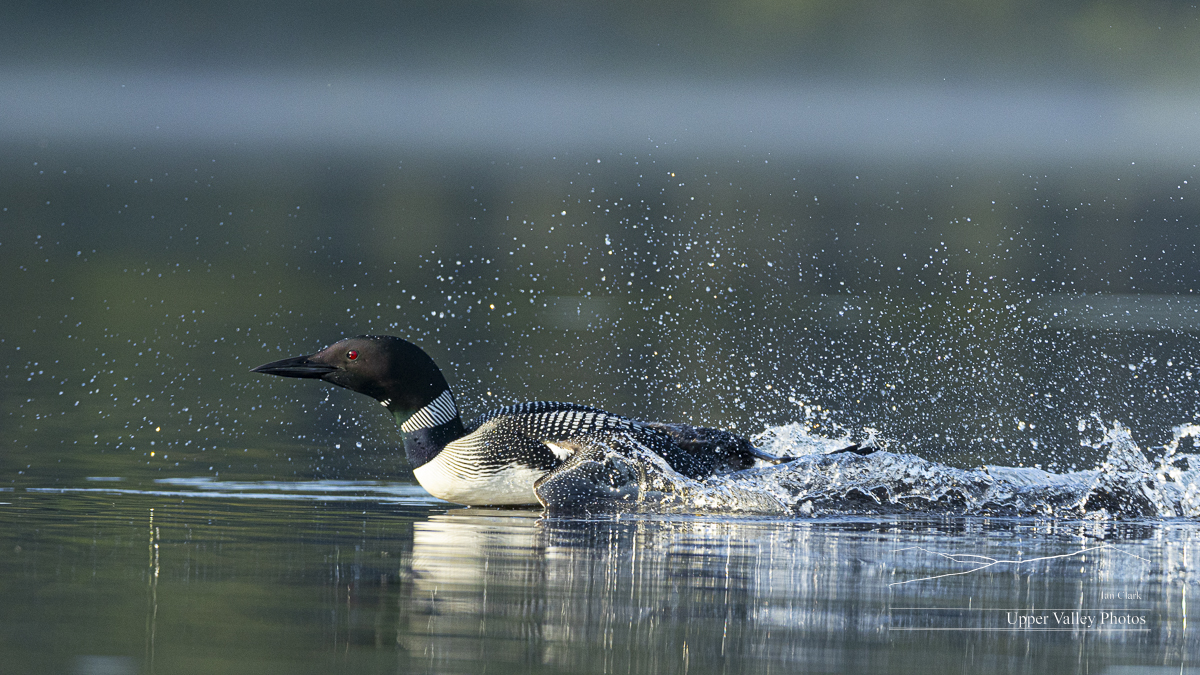
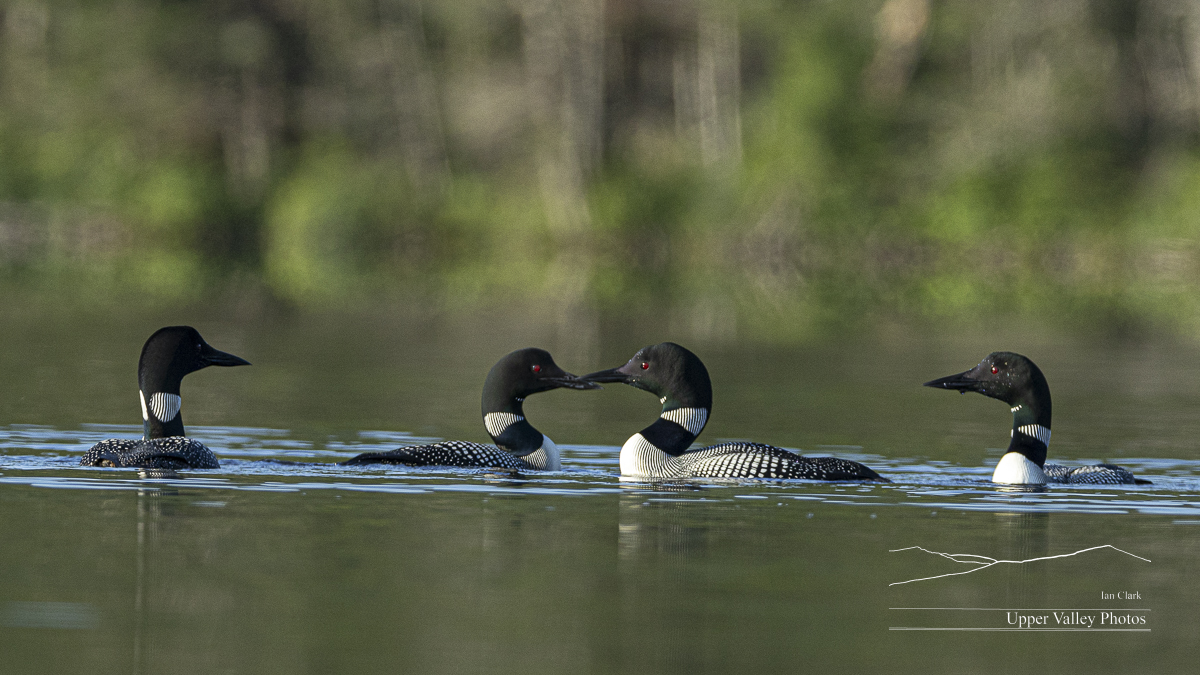
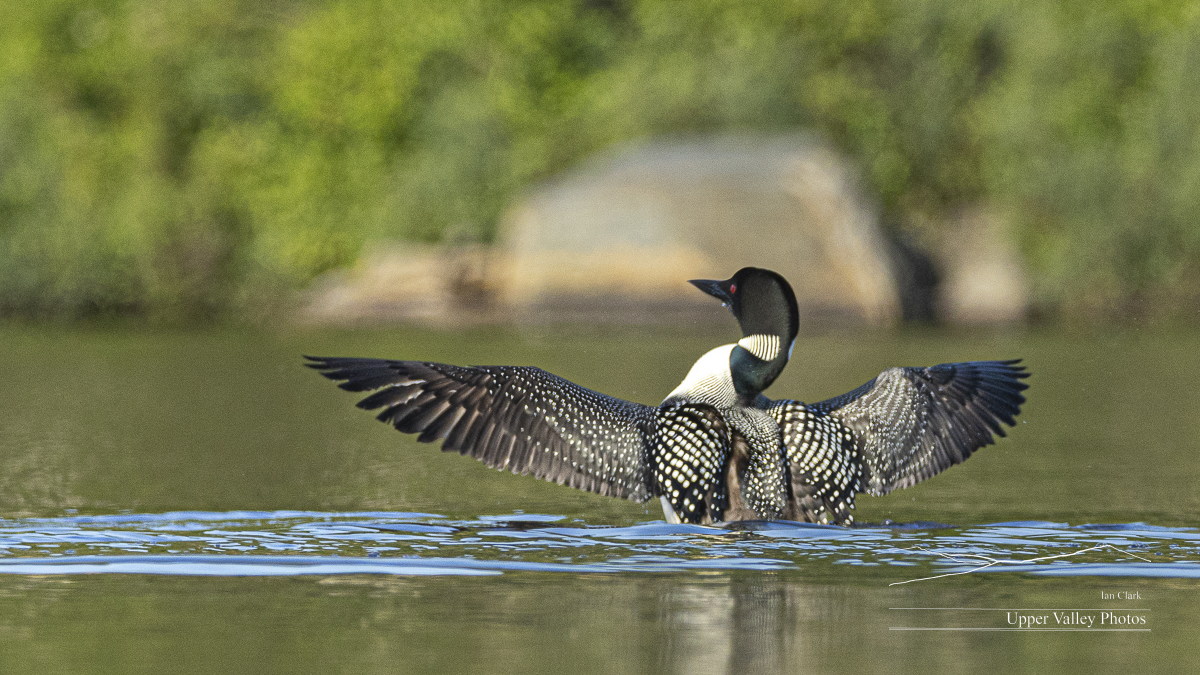

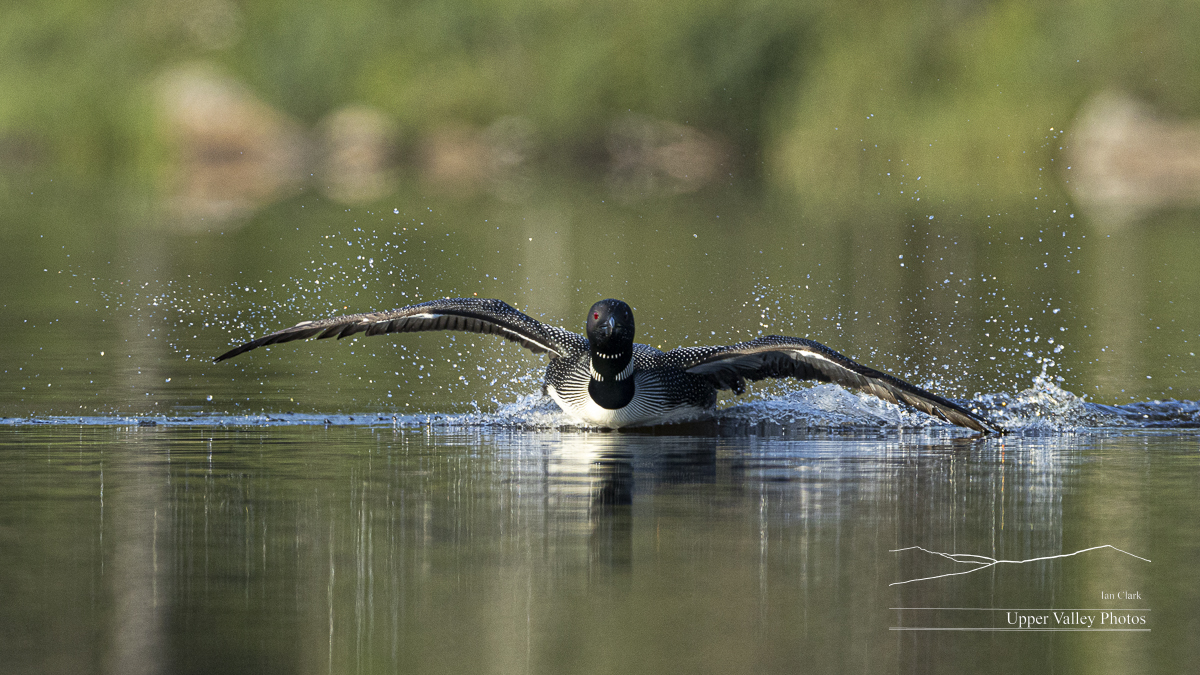
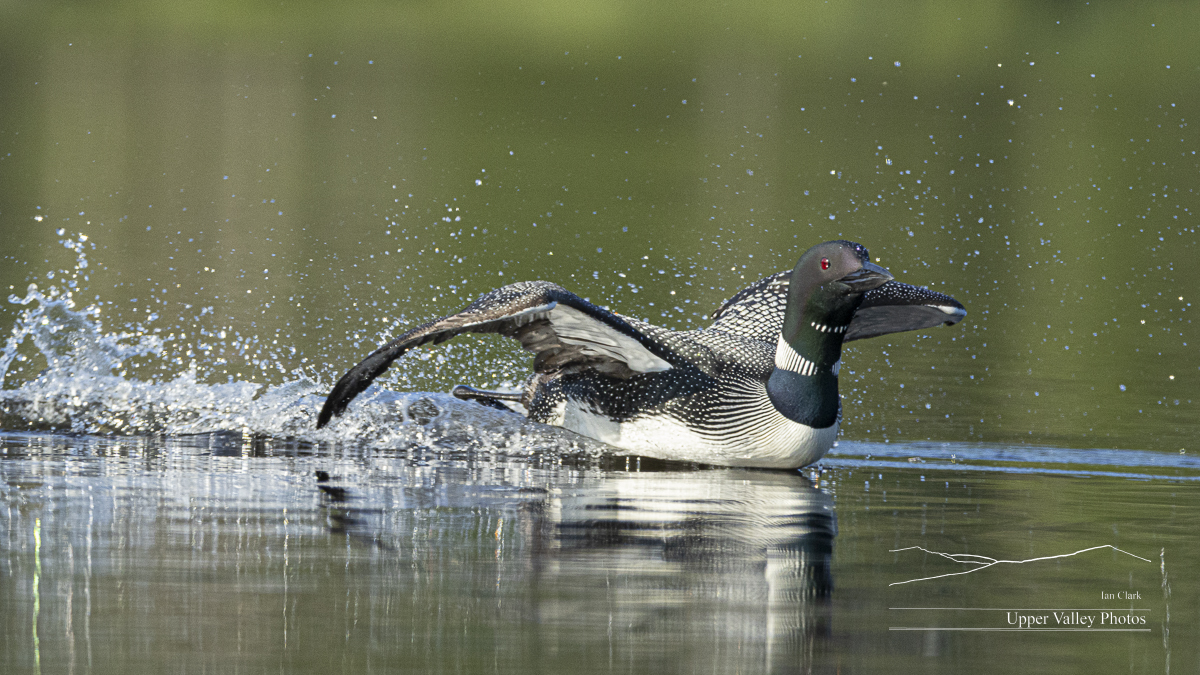
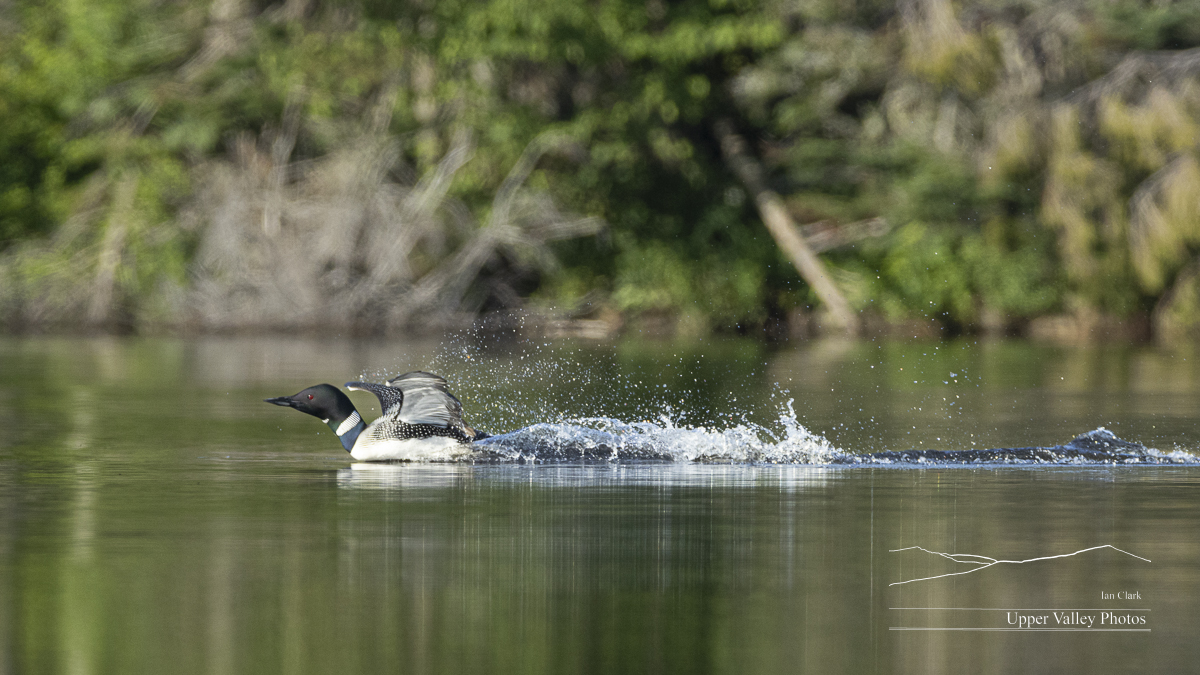
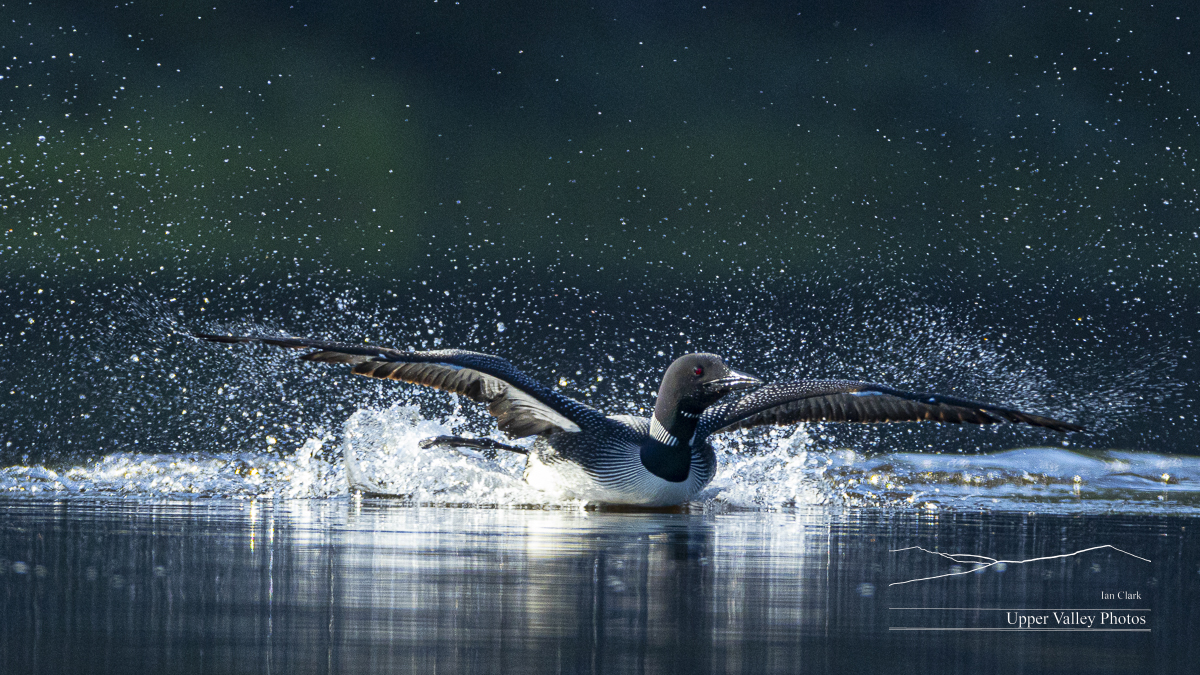
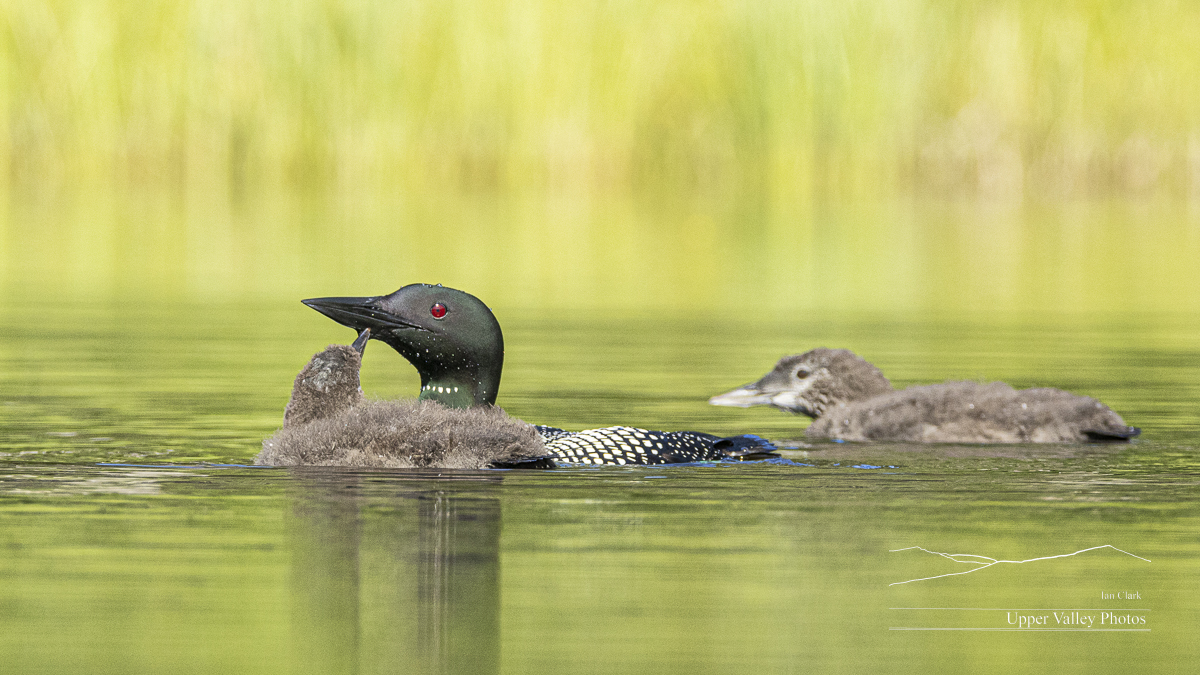
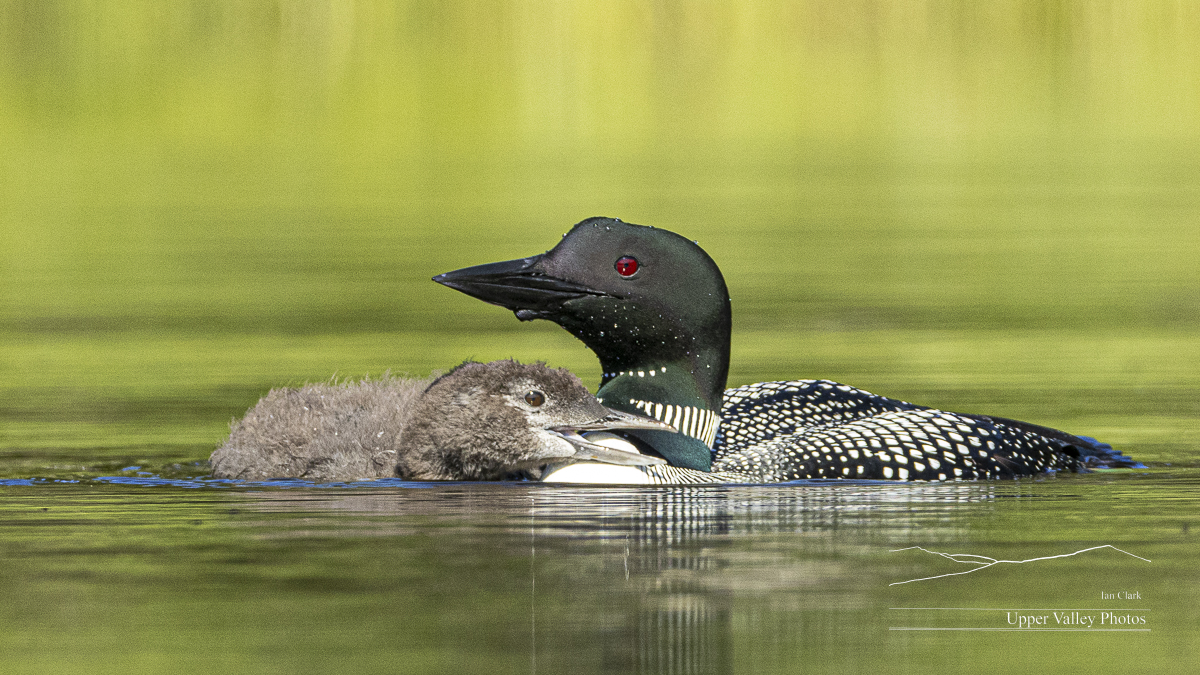
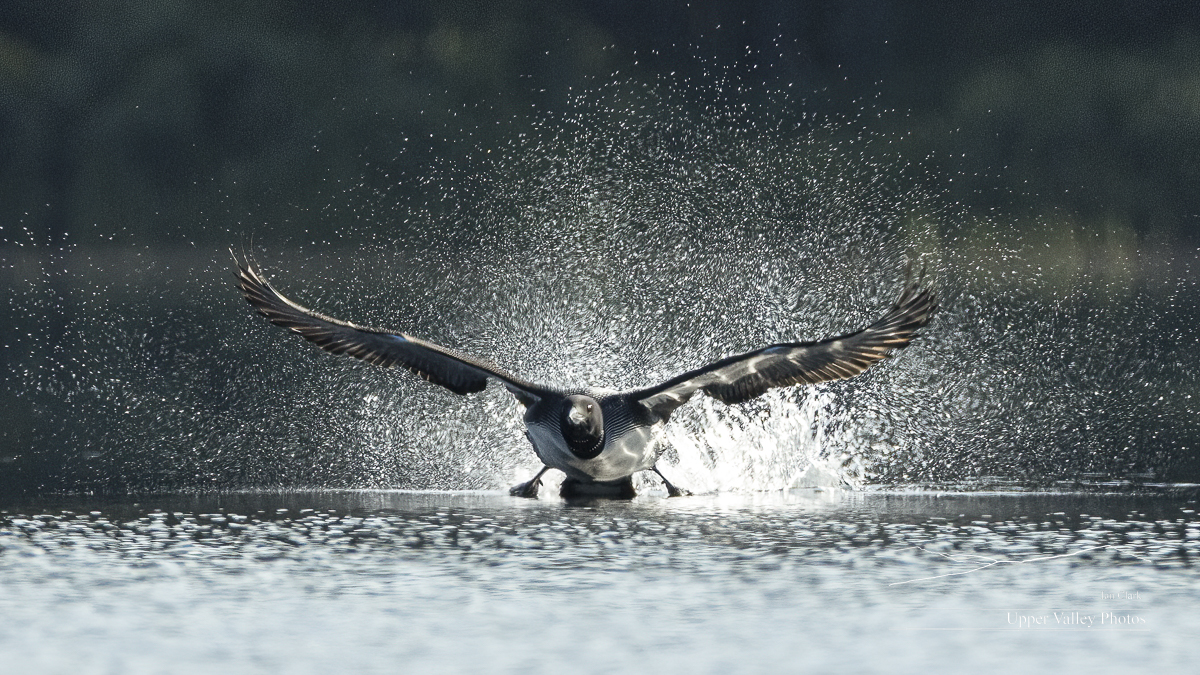
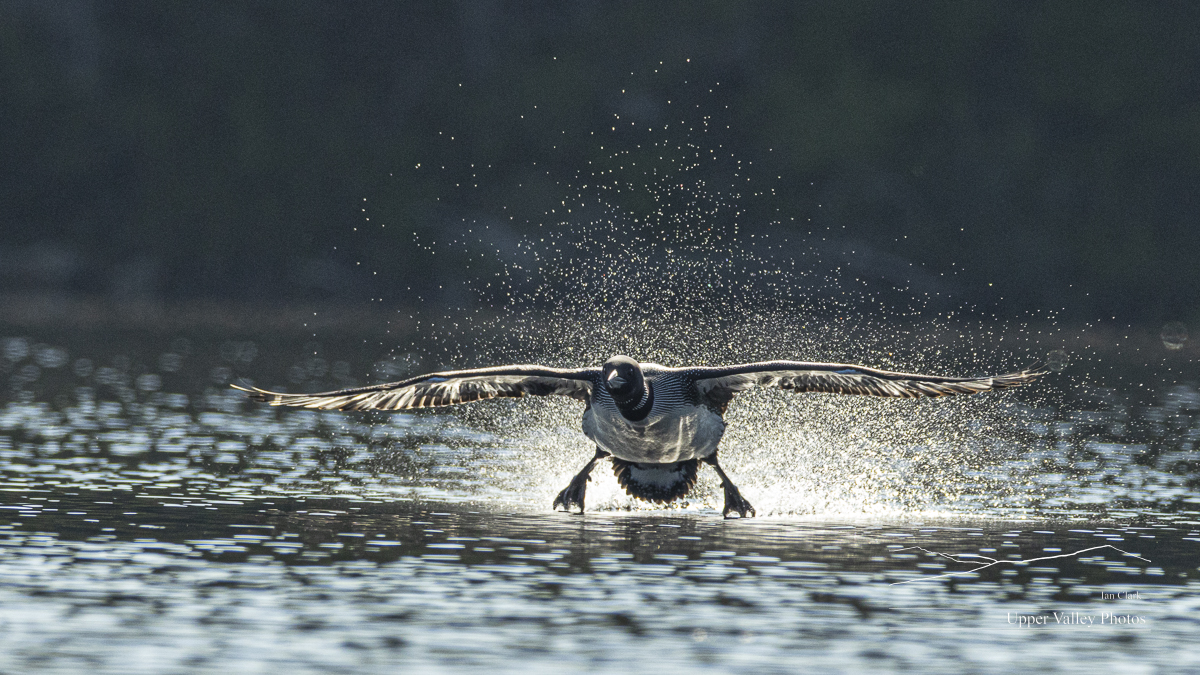
This morning, I went back up to the pond to see how the home team was making out.
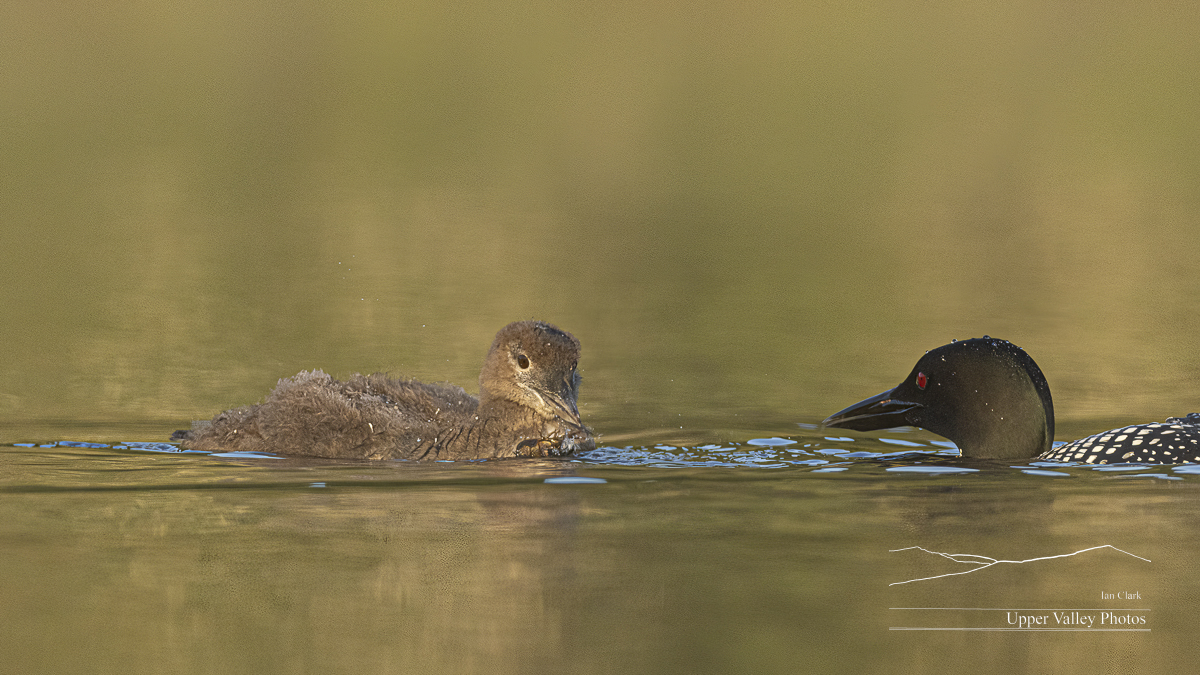
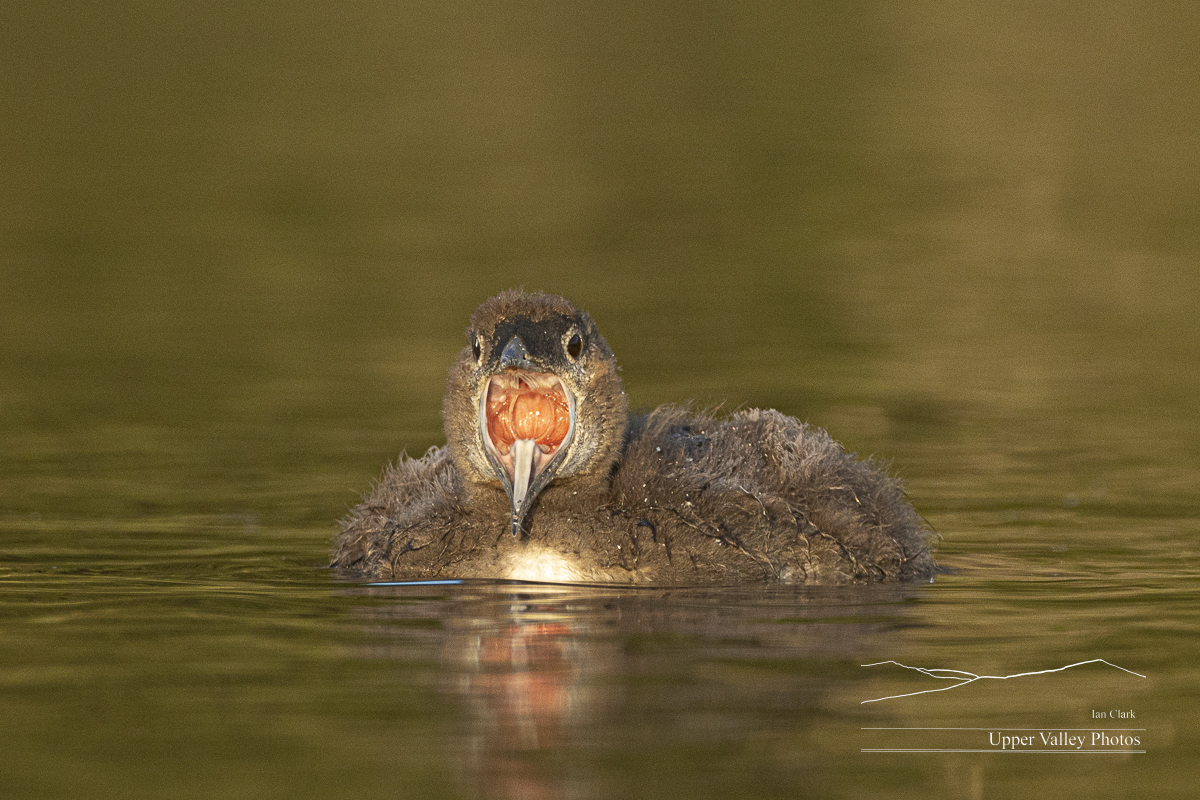
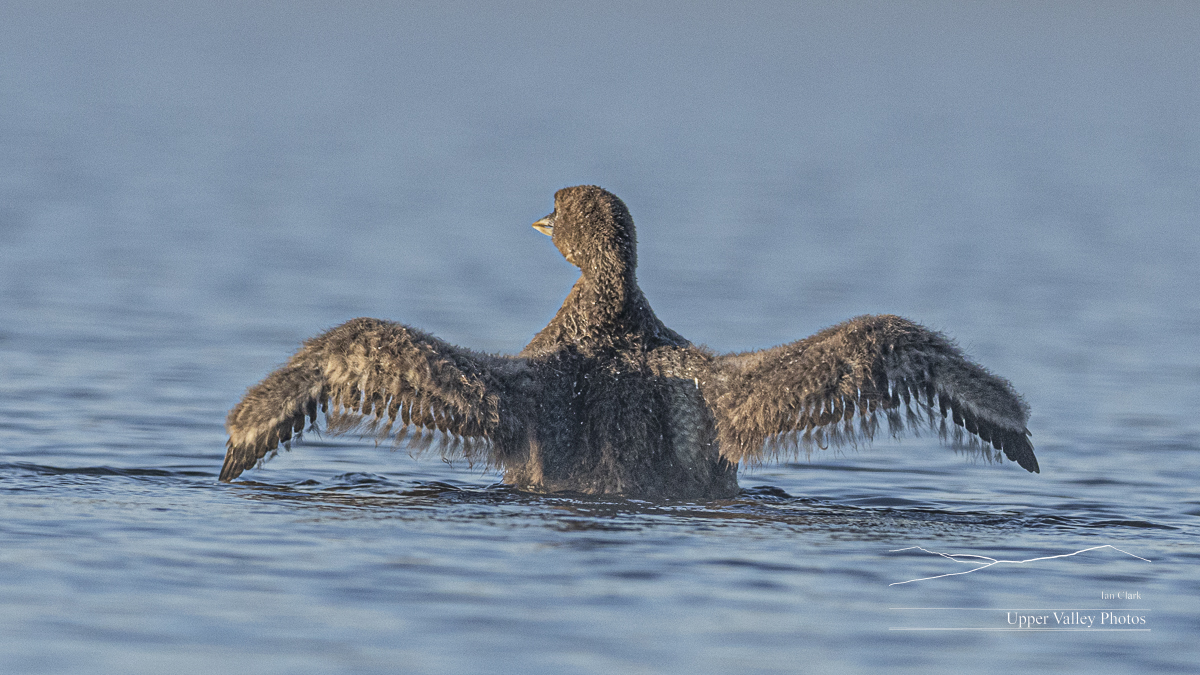
After feeding the chicks, dad headed up the pond out of sight. Shortly, I could hear yodeling. Soon, a pair of loons showed up – a wing rowing chase. They covered a lot of ground, but didn’t get close enough for photos. Some time after that, a loon flew overhead coming from that end of the pond. A second loon swam down the pond and rejoined mom who was tending the chicks.
The home team held the pond this time. But the fight probably isn’t over. One or both of the intruders are likely to return for several days or even a couple of weeks. Loons pay attention to how well a territory produces chicks. This pond has successfully raised two chicks a season for at least the last three years running. It would be a good territory to take over if the intruder can.
I’m on the road starting Thursday, I probably won’t have time to visit to see how the battle goes. I’ll get back up there to check as soon as I get back.
PS, we’re not supposed to interfere with nature. Don’t tell anyone I’m rooting for the home team.
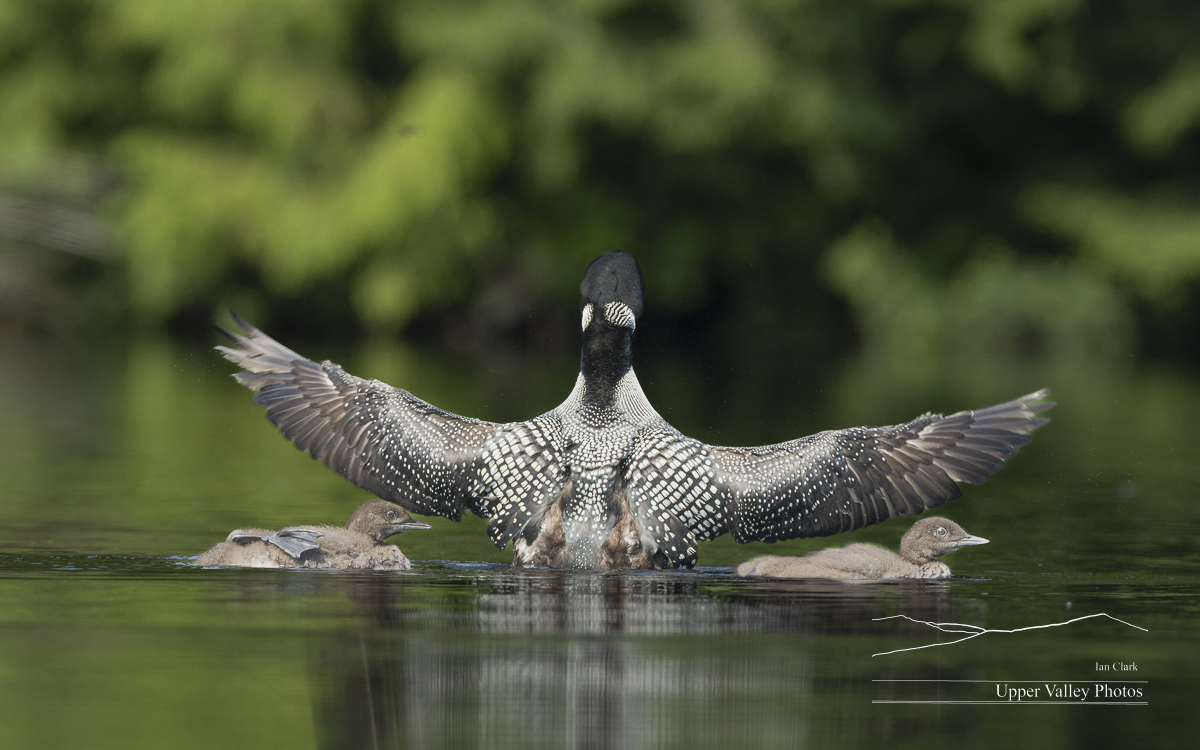
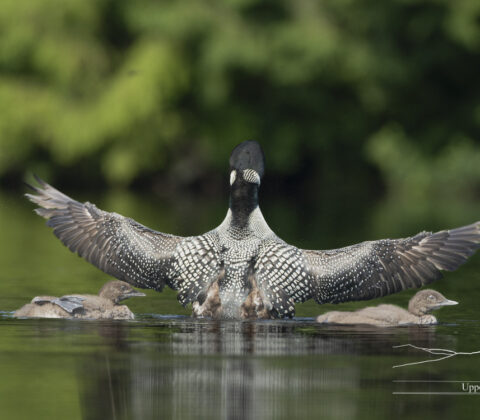
Checking in on the Loon Families
Bad weather and too many chores kept me from checking on the loons for a time. When the weather cleared this week, I was quick to hit the water.
I’ll be down at the League of New Hampshire Craftsmen’s 90th annual Fair in Sunapee, NH, August 5th to the 13th. Stop by to have a look. All the Fair details here.
Let’s start with a few pix of the Eastons from the day after my last post. The chicks are two and three days old. This is the pair where dad is banded, allowing me to tell them apart – sometimes.

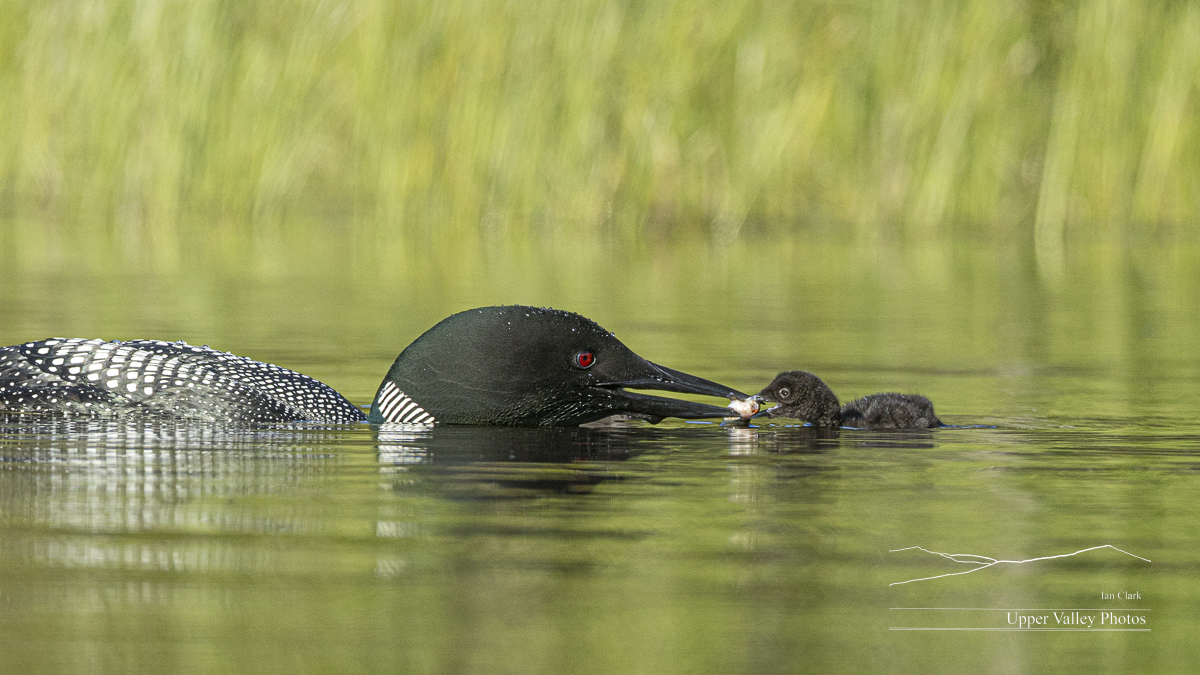

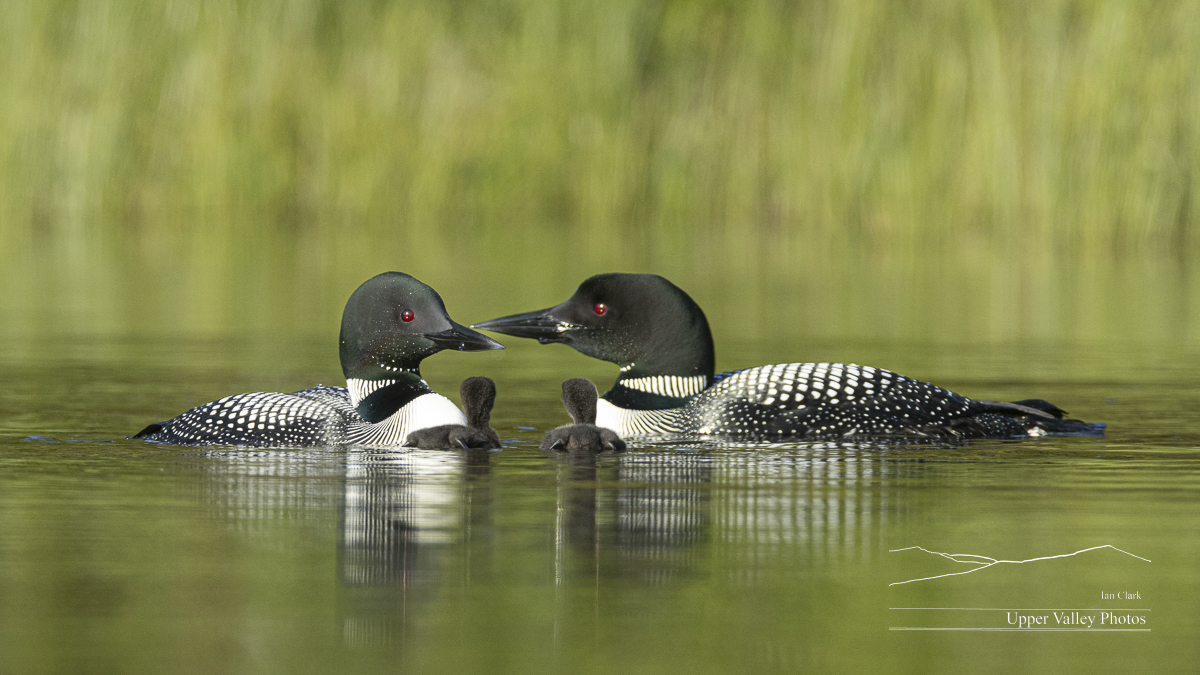
That evening, I made it over to check on the Middletons.
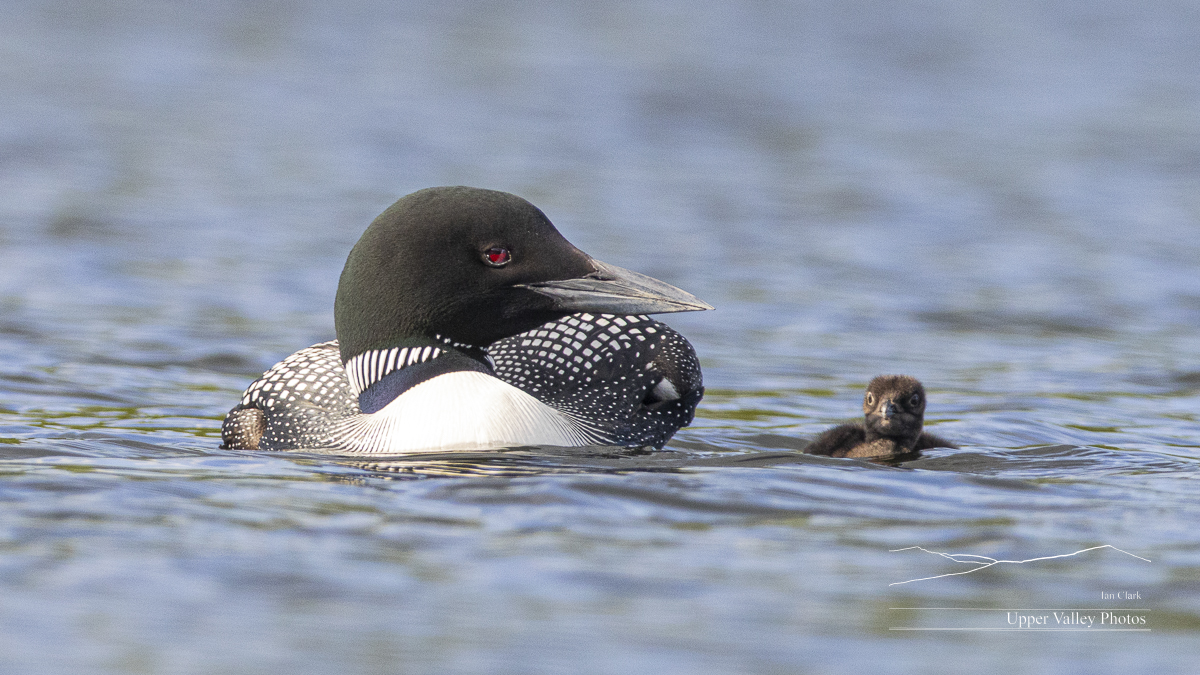
The next morning, I returned to visit the Eastons. They spent most of their morning feeding the chicks.
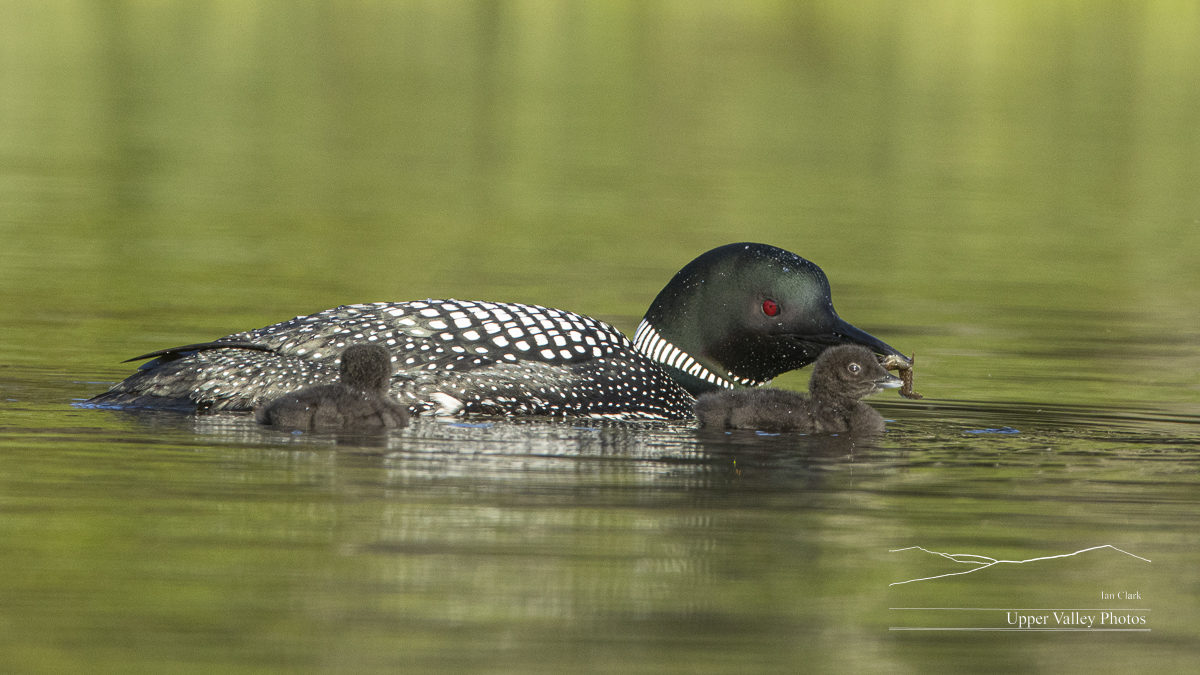
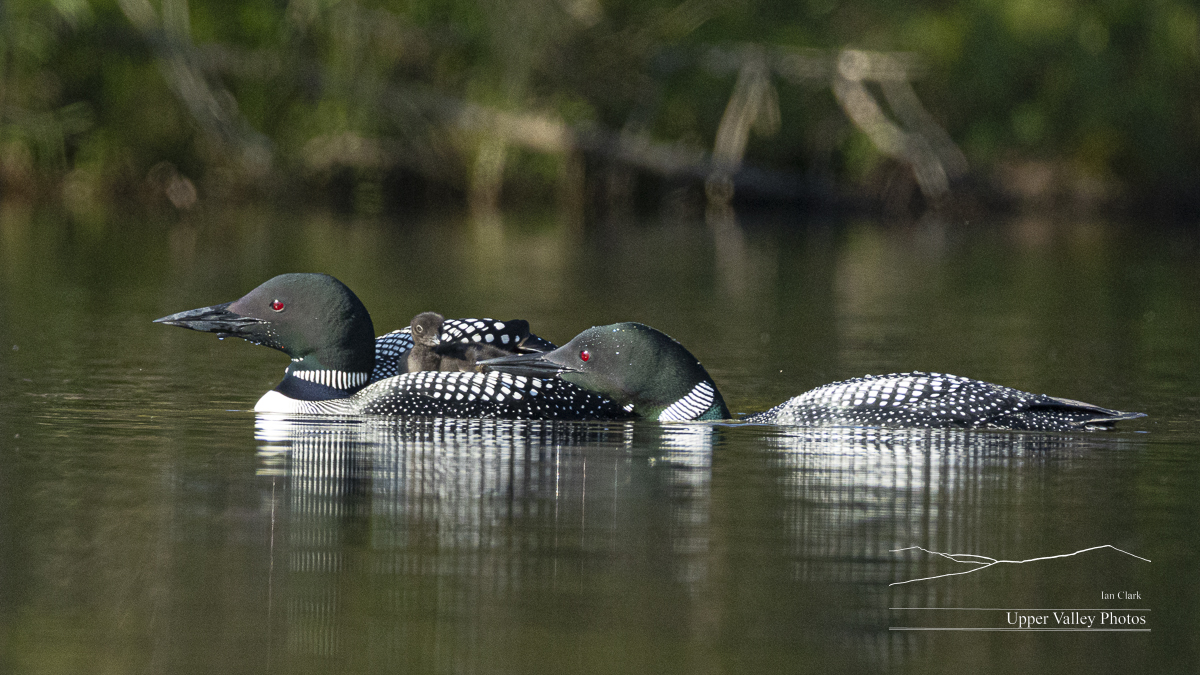
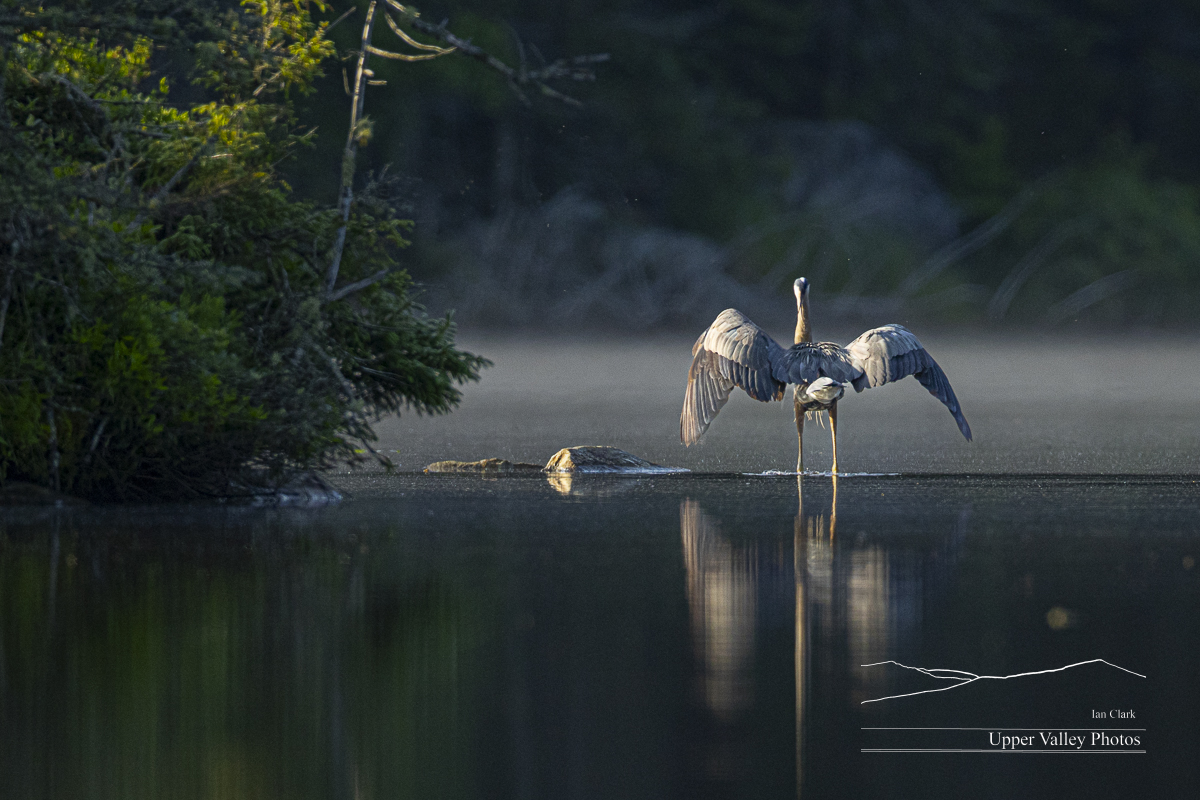
I didn’t make it back out until July 5th, when I again visited the Eastons.
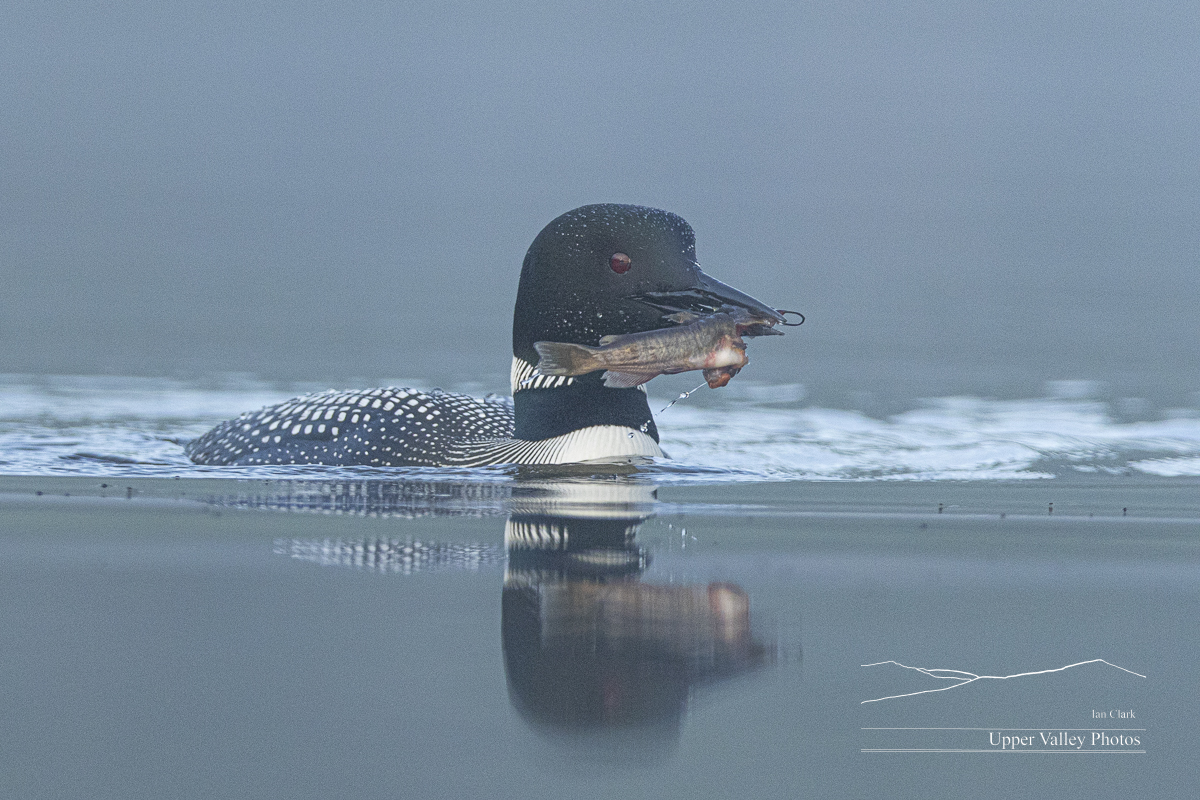
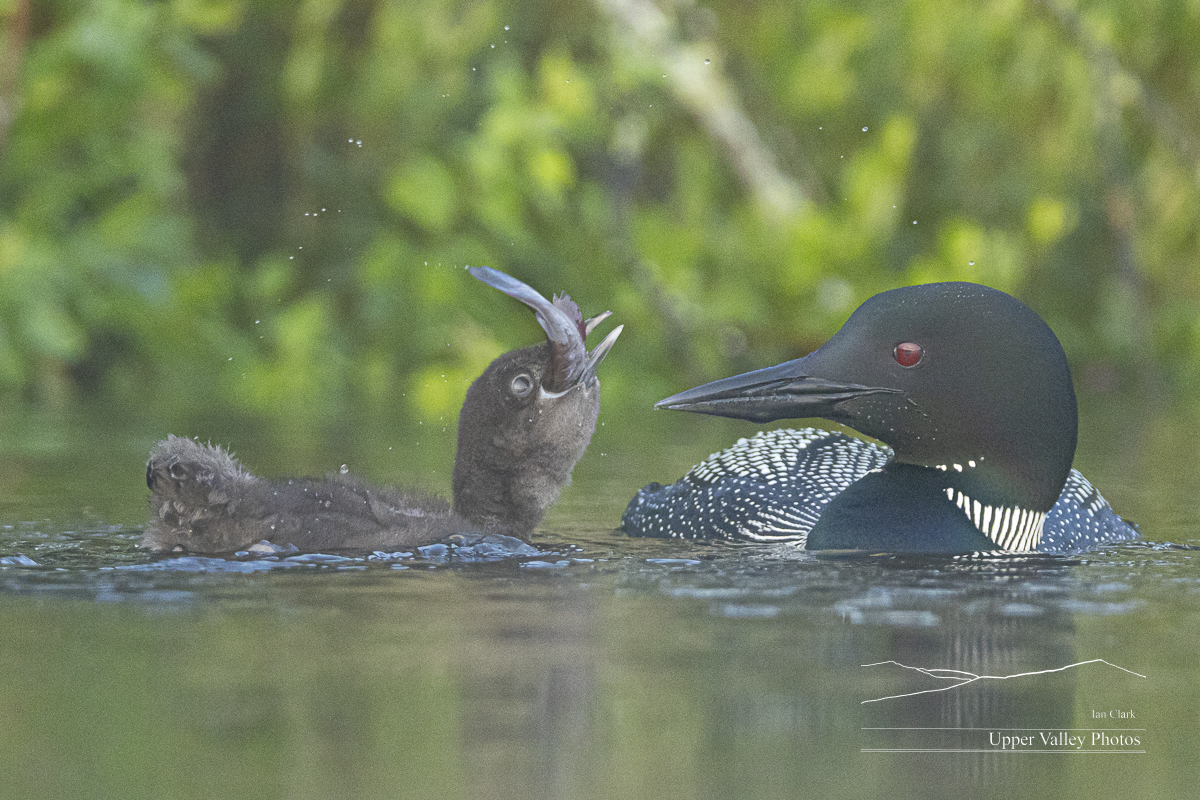


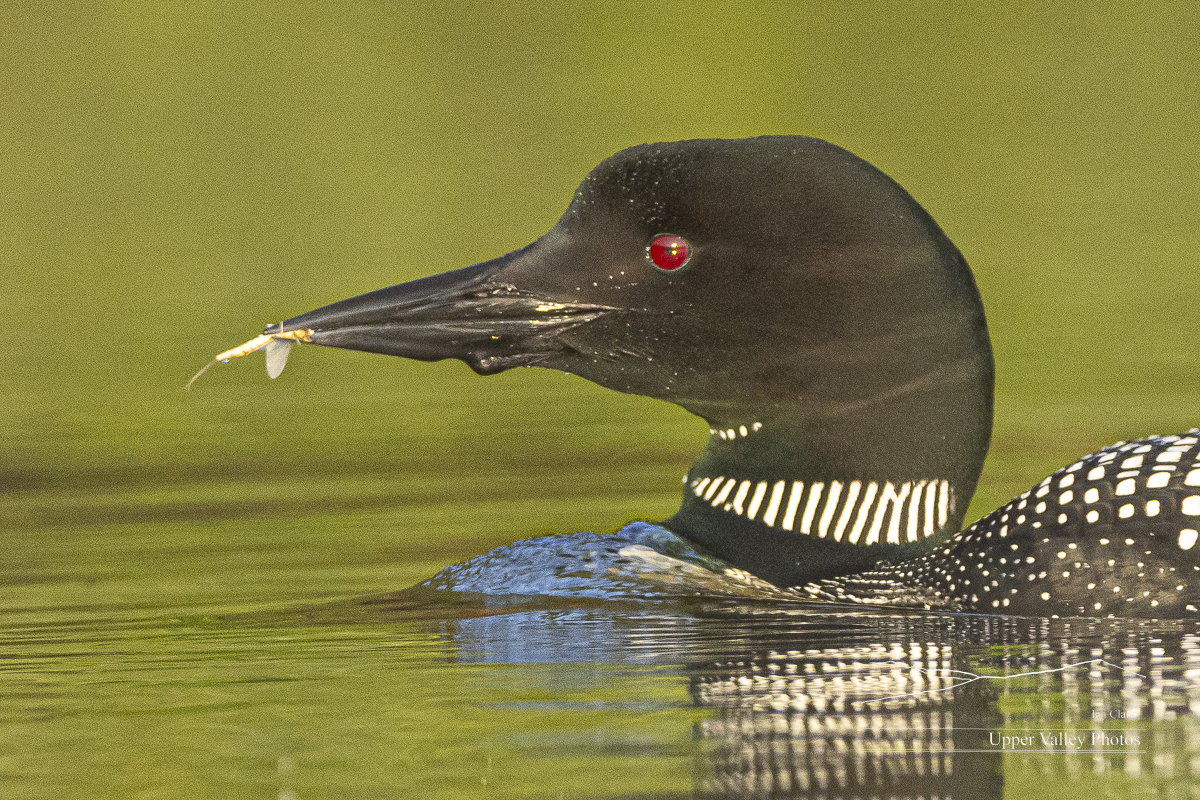
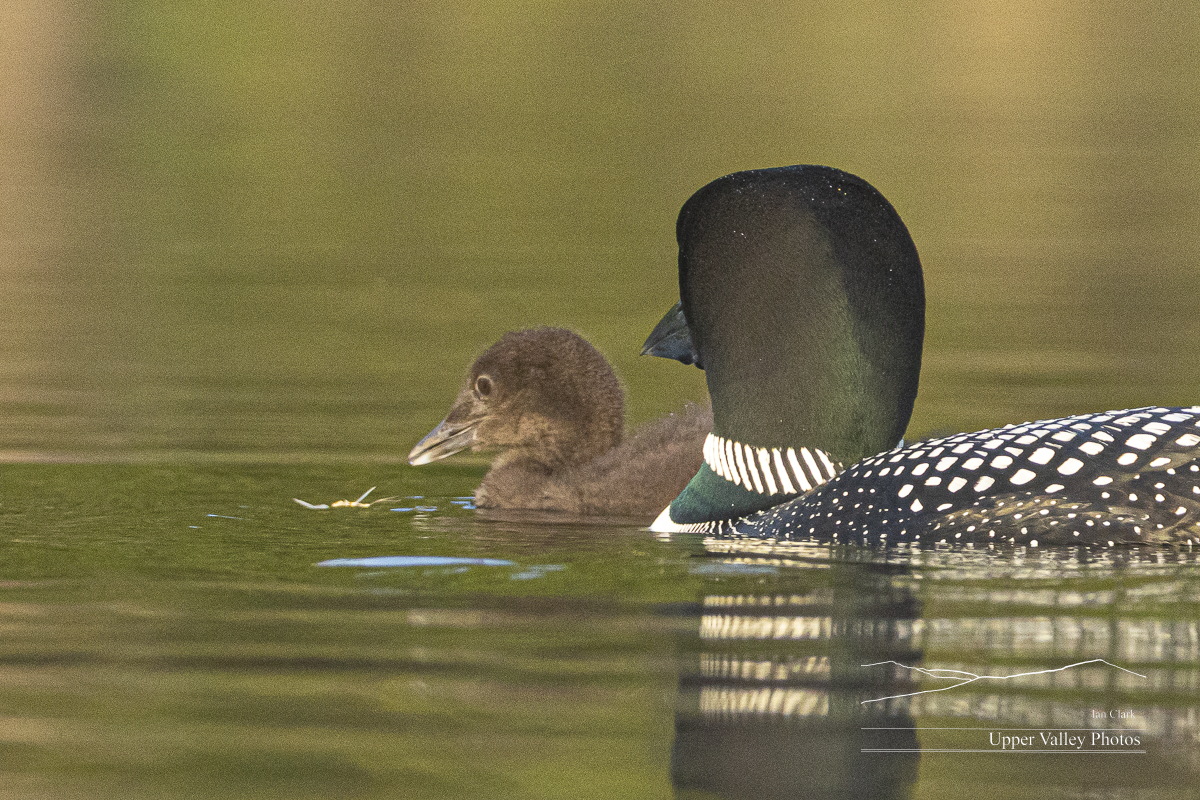
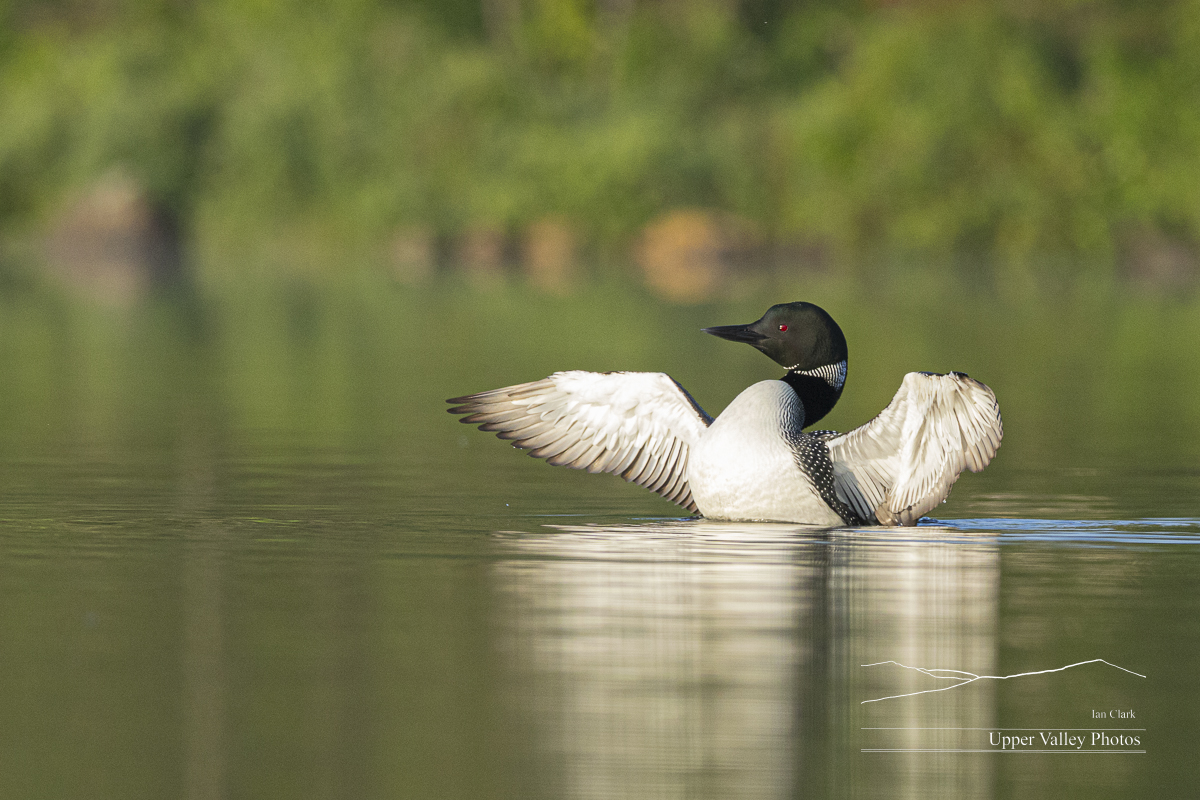
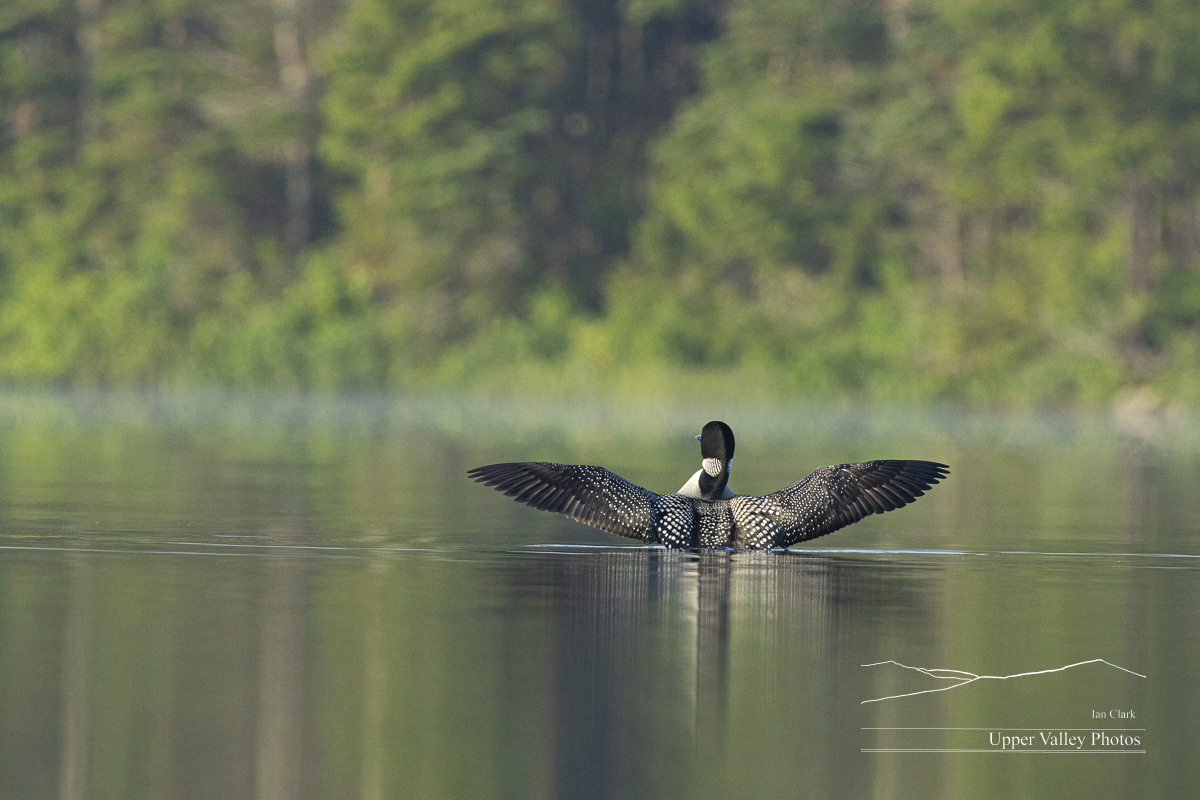
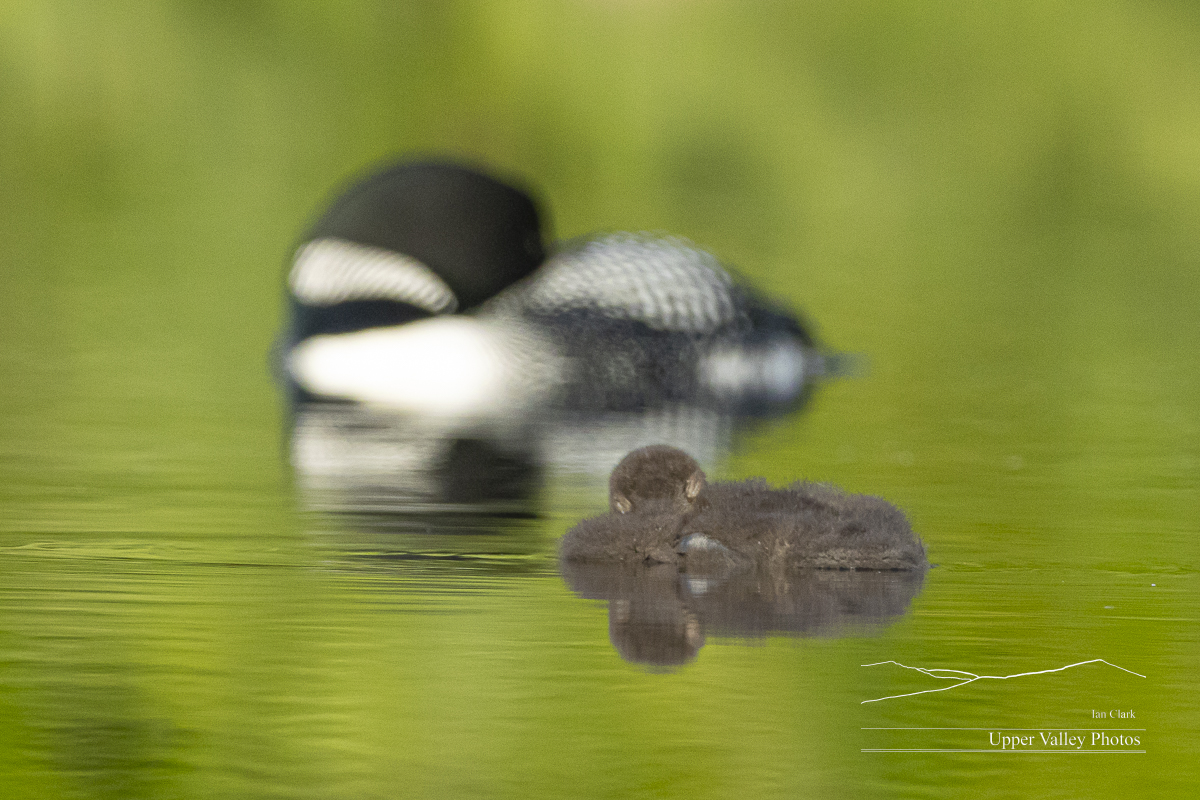
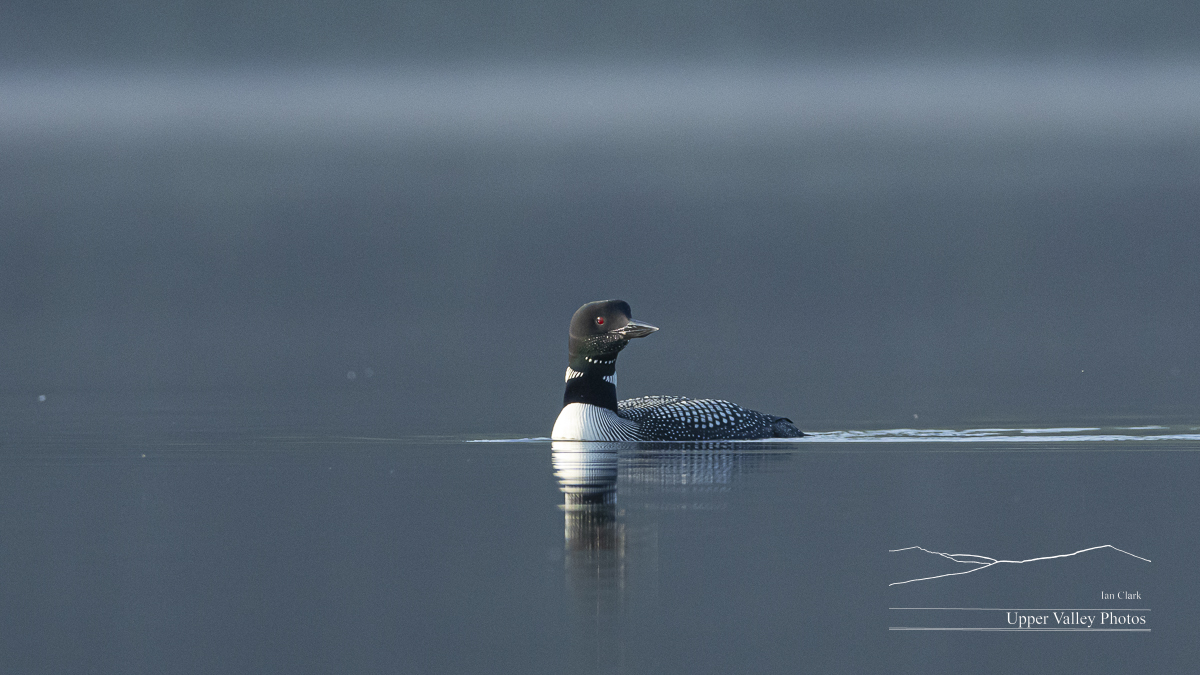

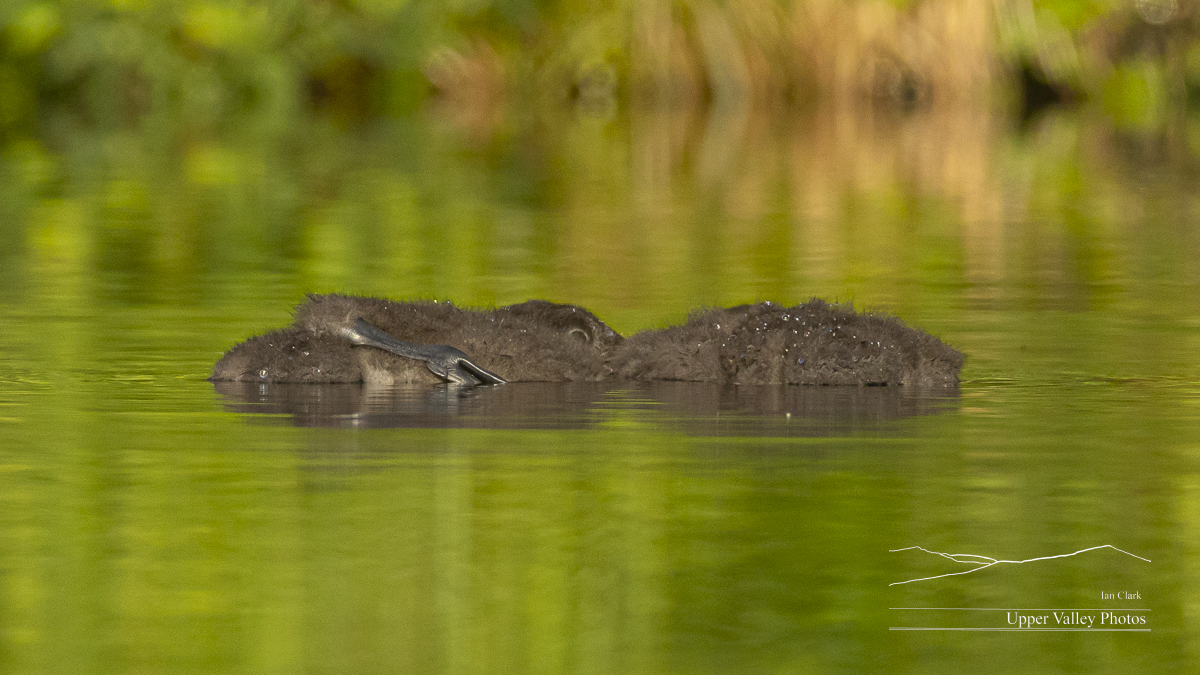
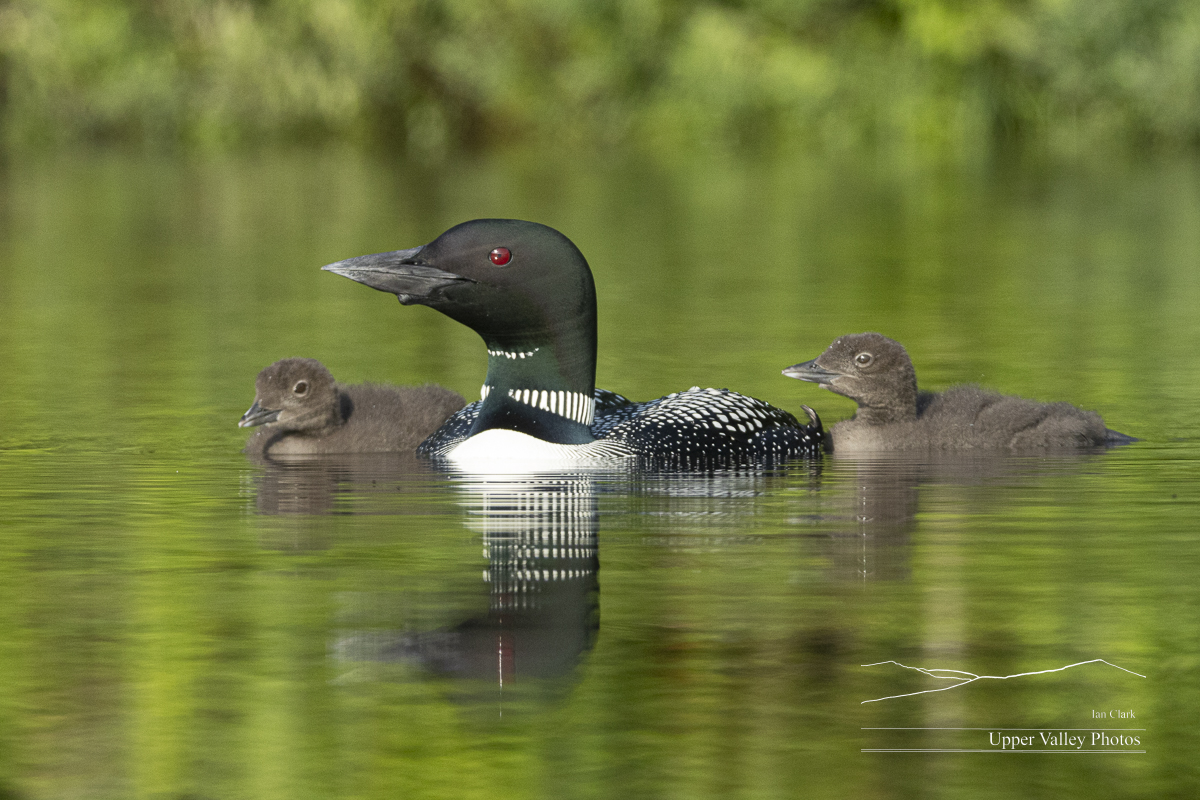
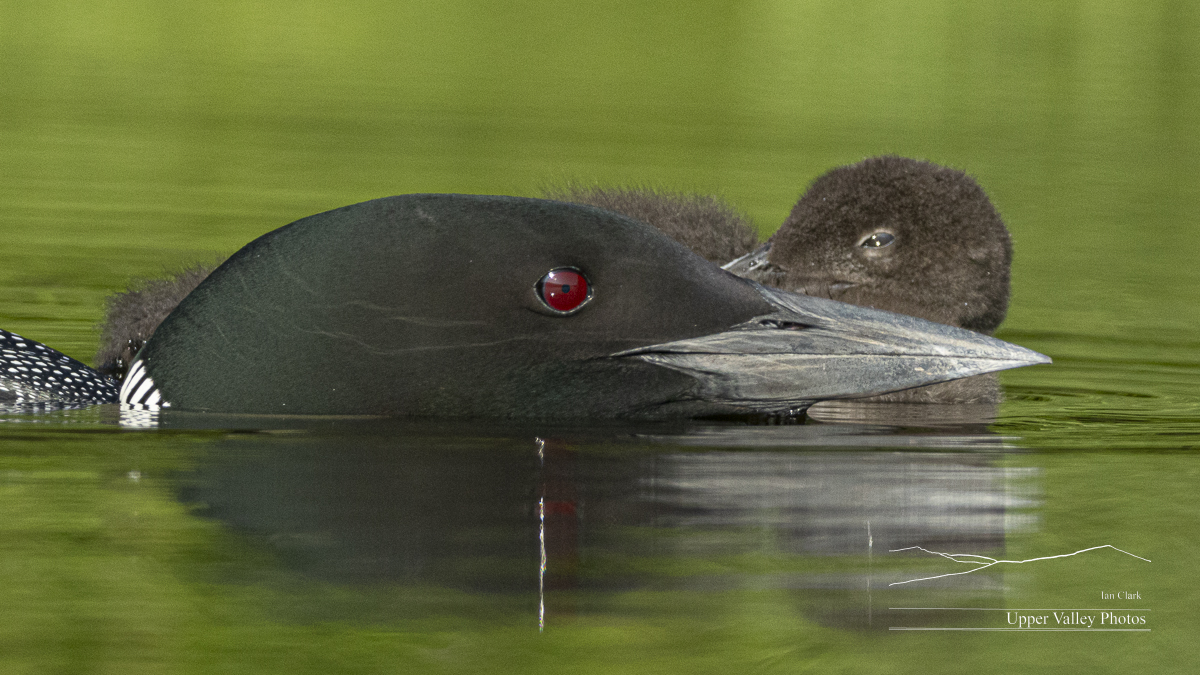

The morning of the sixth, I headed west to check on the Westons. Their pond has steep hills on both sides of the southern end of the pond. The family spent most of the morning foraging in deep shadows along the side of the pond. I headed out to see who else was about.
The usual suspects were out and about, kingbirds, red-winged blackbirds, lots of warblers seen not heard. But the best find was a trio of tree swallow fledglings and their parents feeding them.
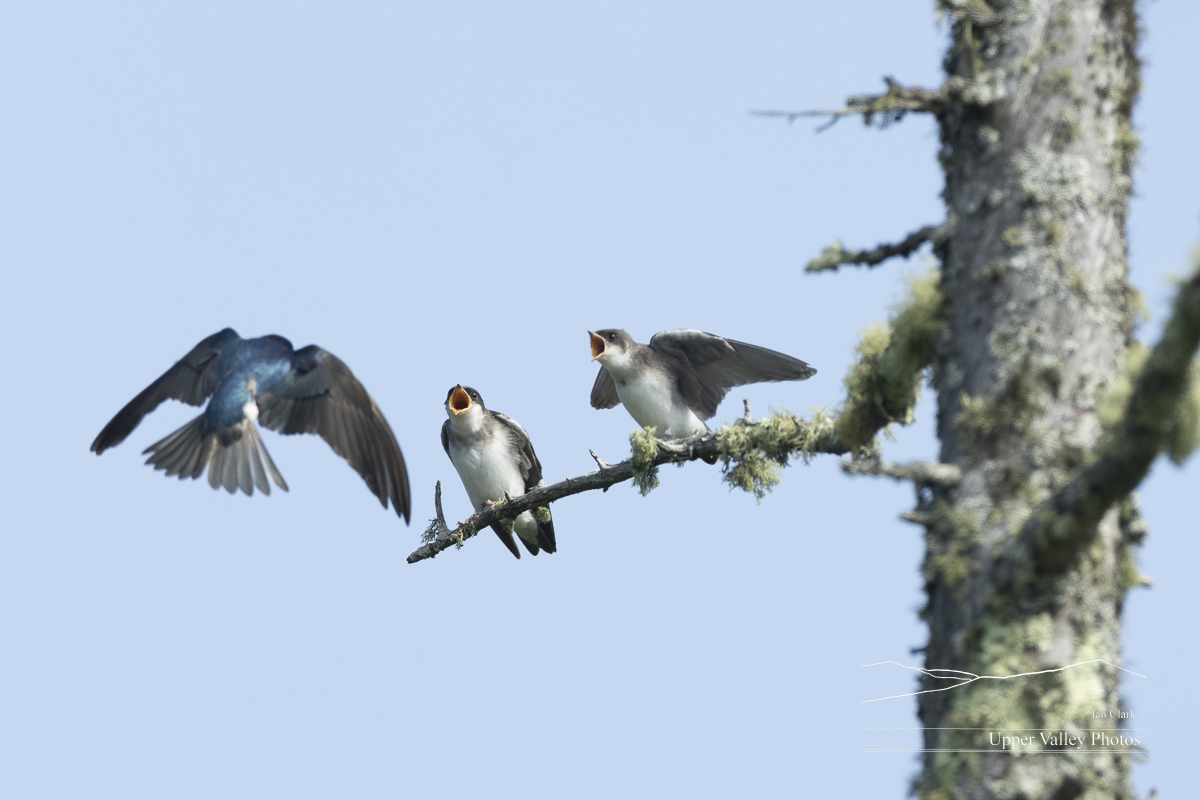
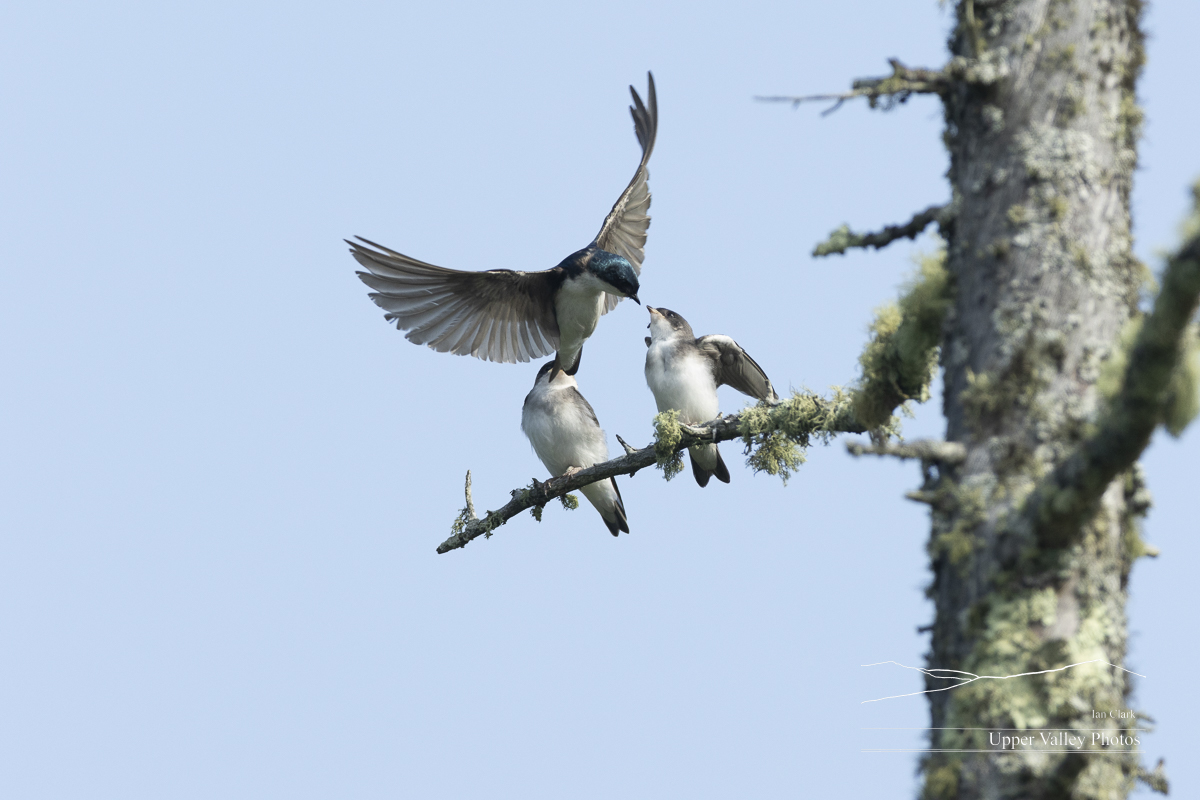
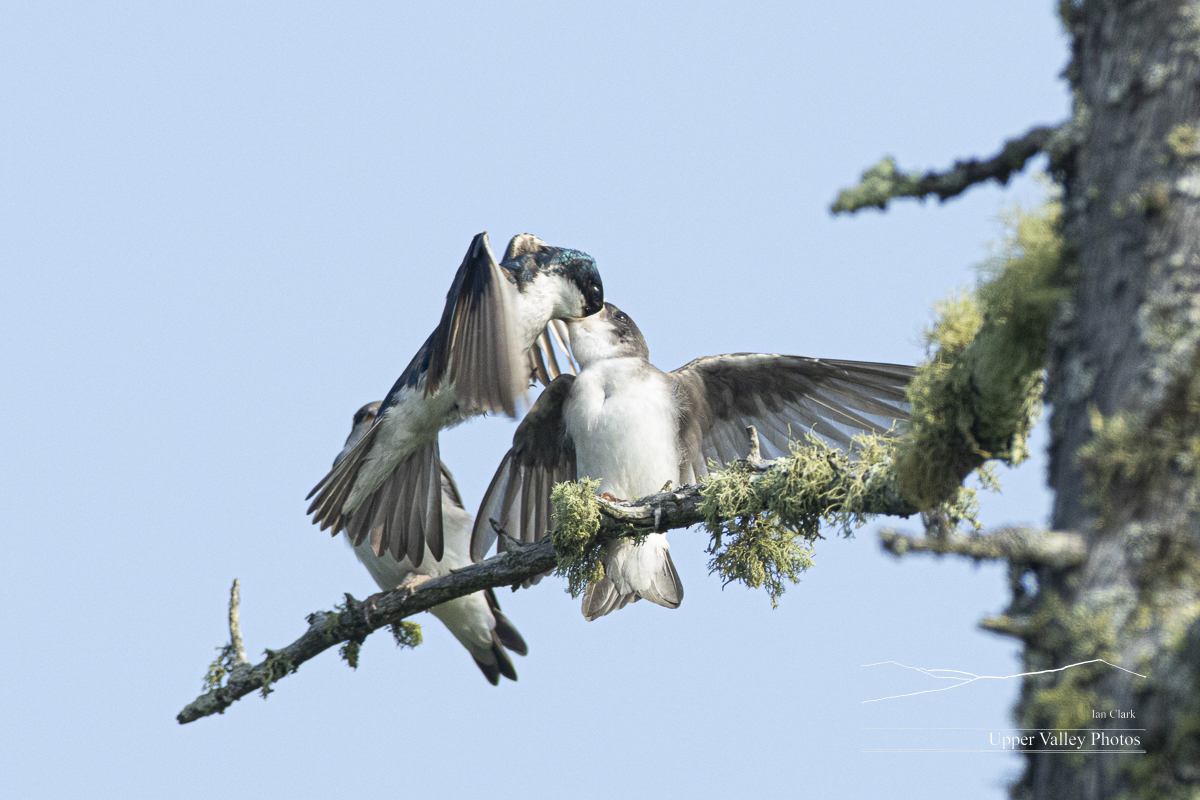
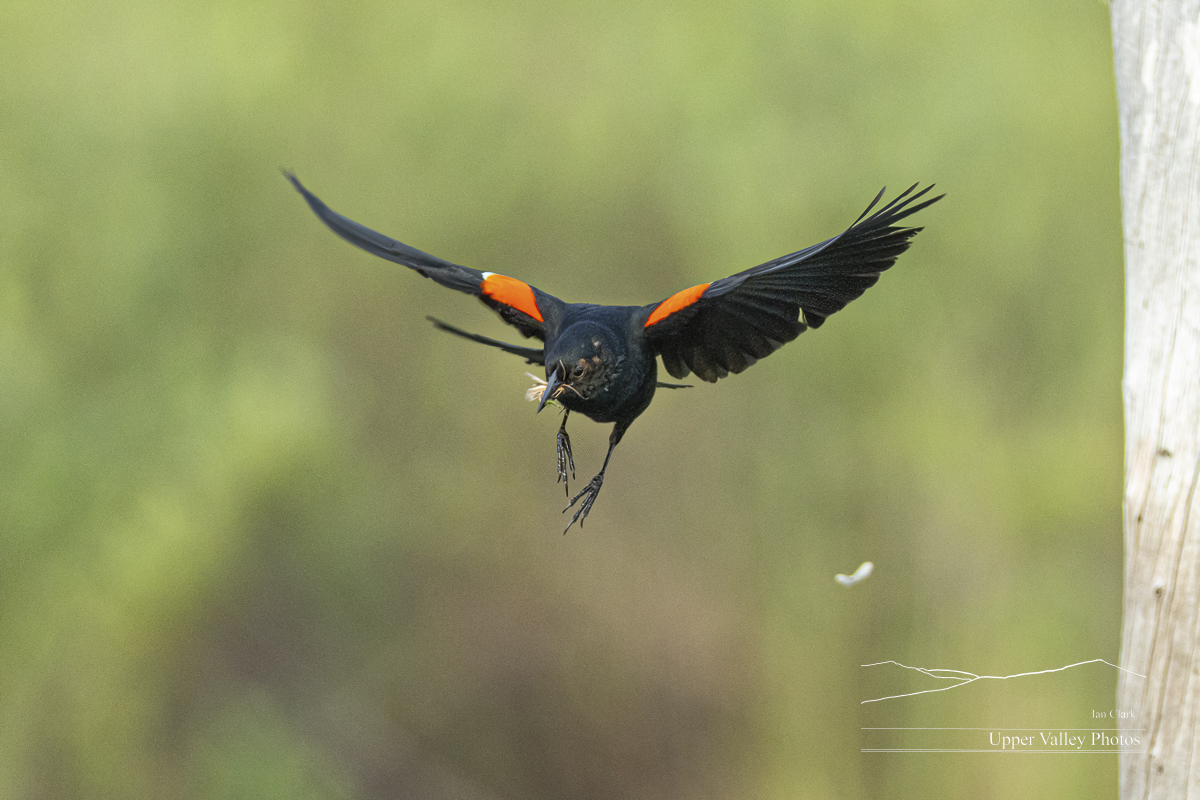

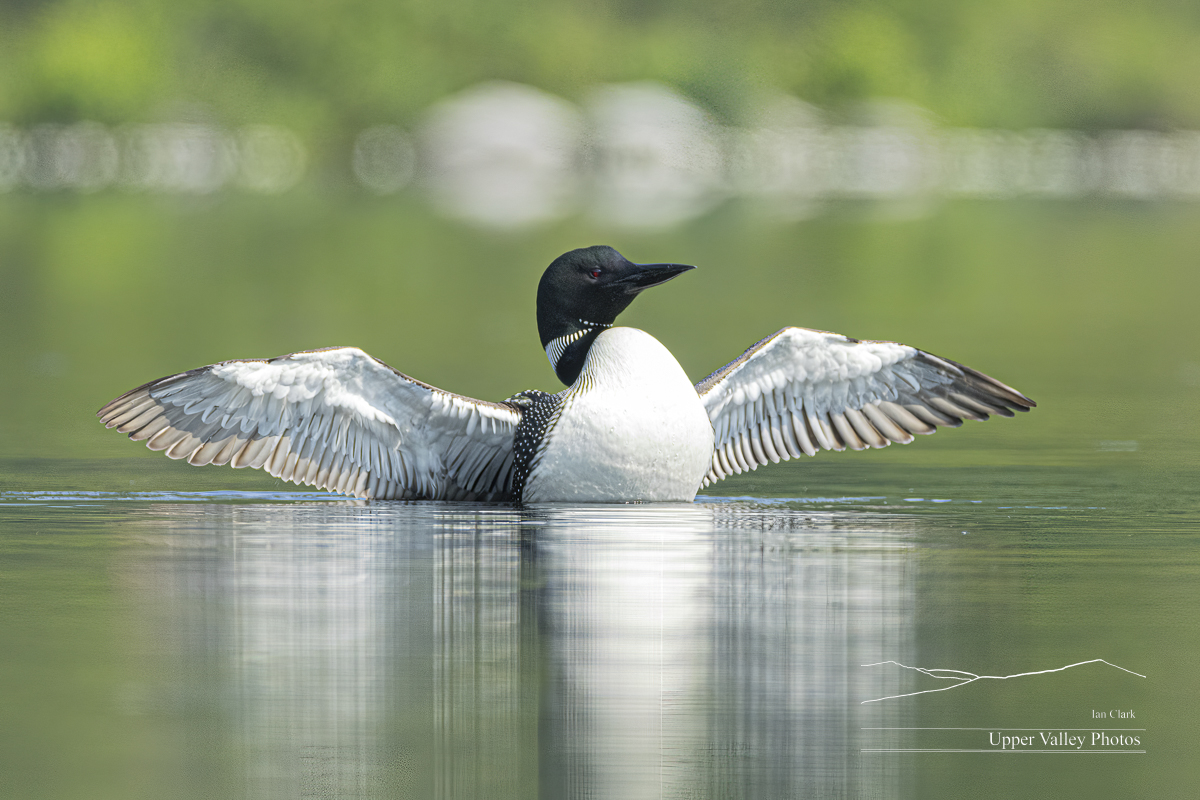
Yesterday, I visited the Middletons. There’s sad news, they’ve been fighting with an intruder or two most days. Their chick has disappeared. We don’t know what happened to it, but the intruders are suspects. As well as a host of other dangers from fish and snapping turtles to otters and eagles.
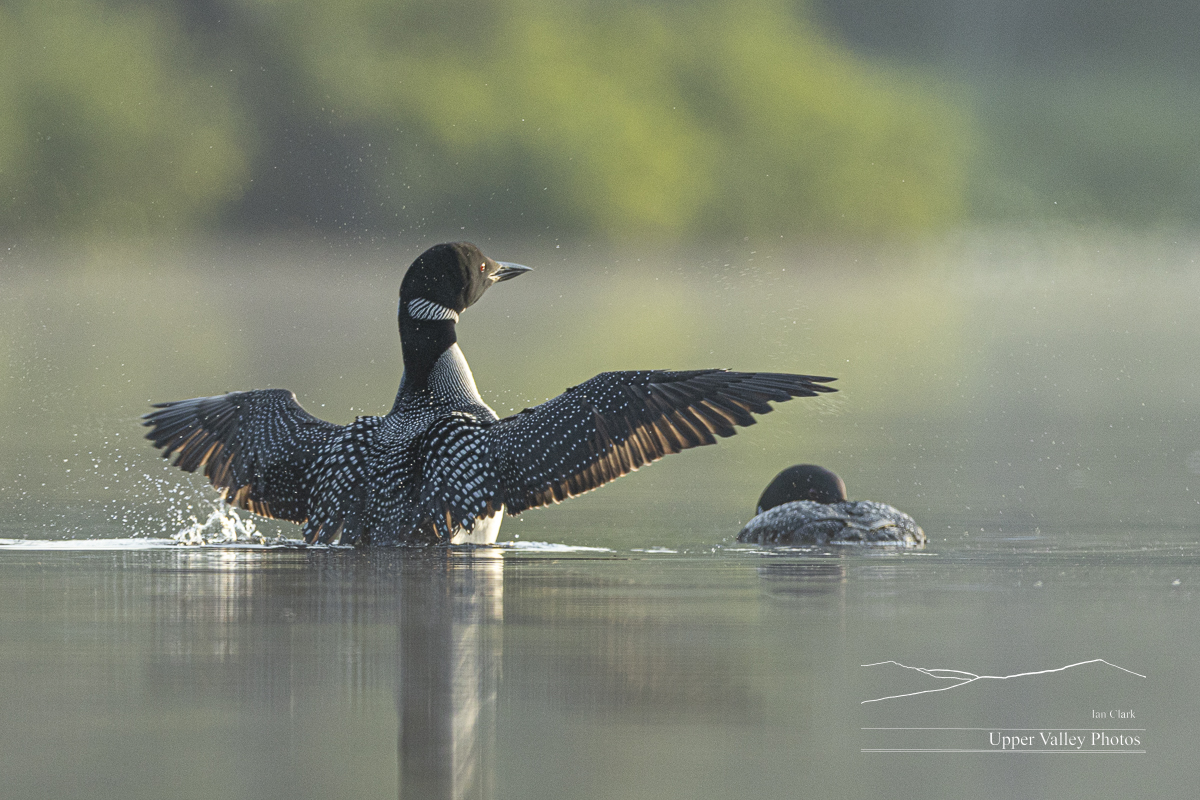



After their nap, the loons swam down to the cove where I’ve found them mating several times in the past. They might have been courting. They explored the beaches were they mate, hooting softly to each other. Then they did a brief courtship display, swimming swiftly side by side and diving together. They didn’t mate, but I’m hopeful they’ll try again.
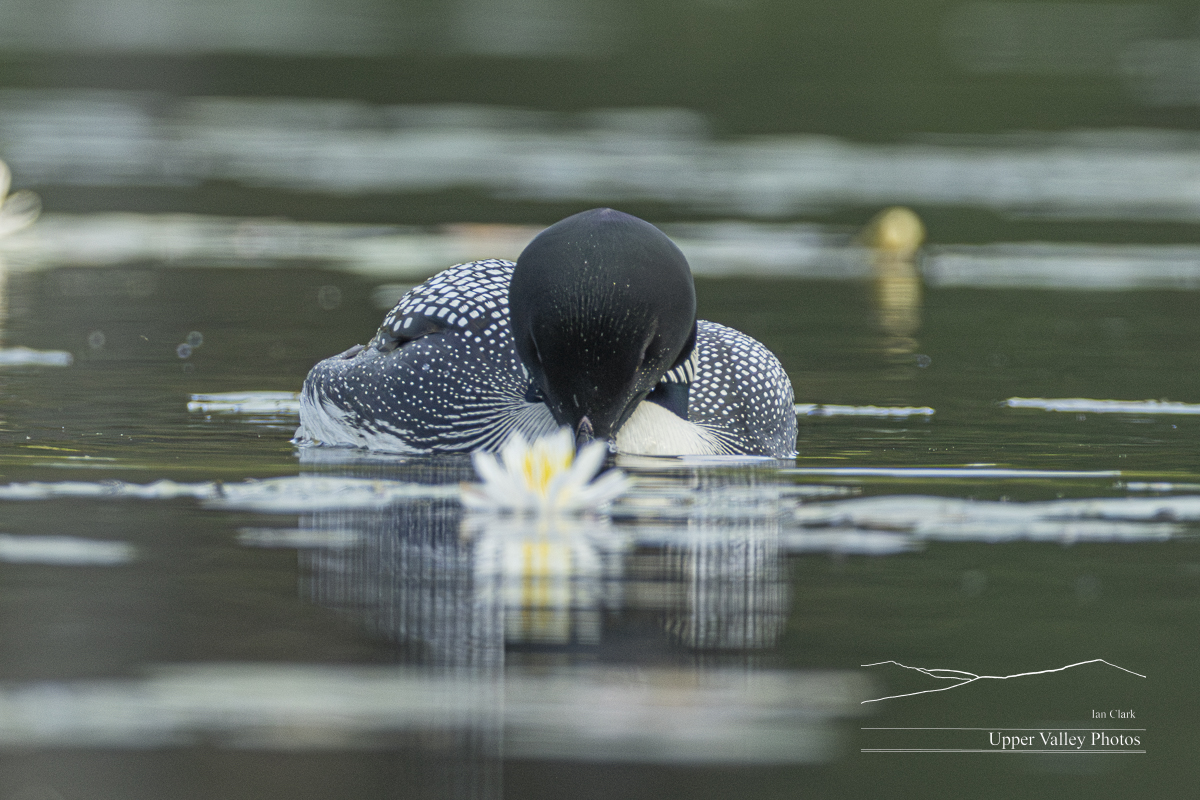
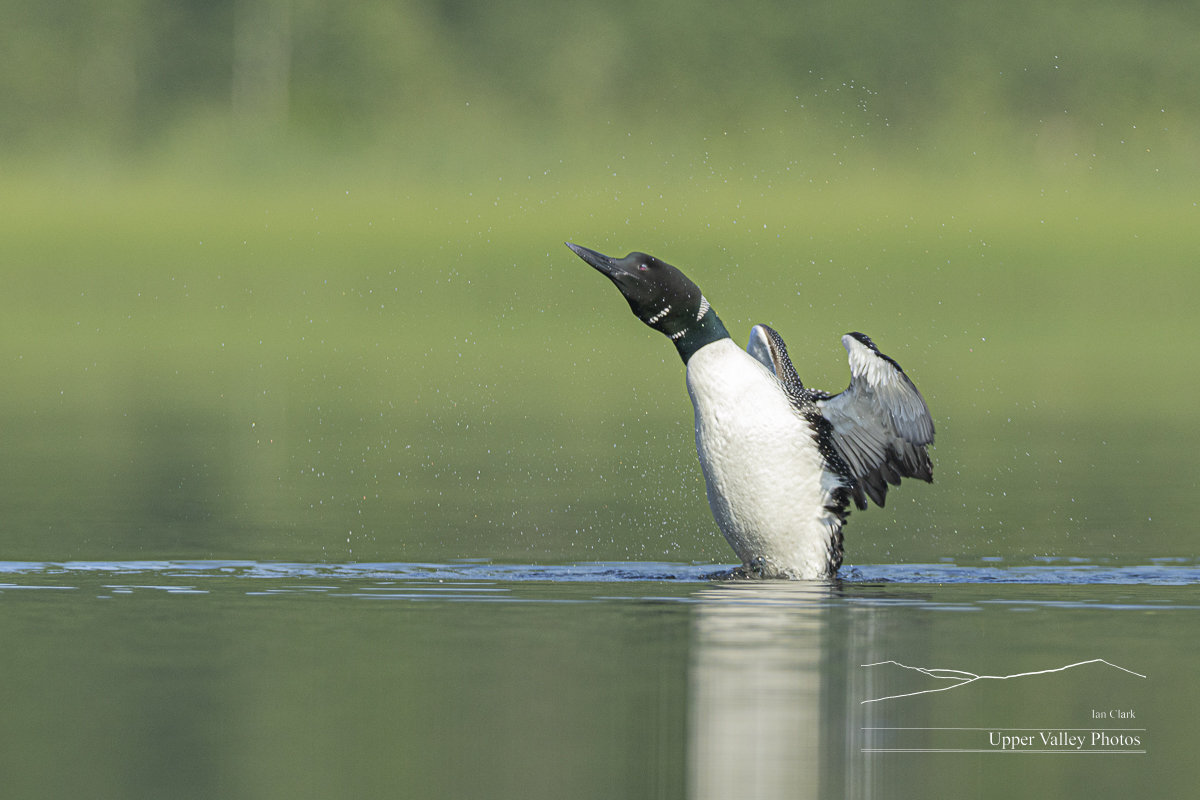
The weather kept me in this morning, I’ll be back out soon. Our second brood of bluebirds will fledge in the next couple days. They’re up flapping their wings and looking out the window.
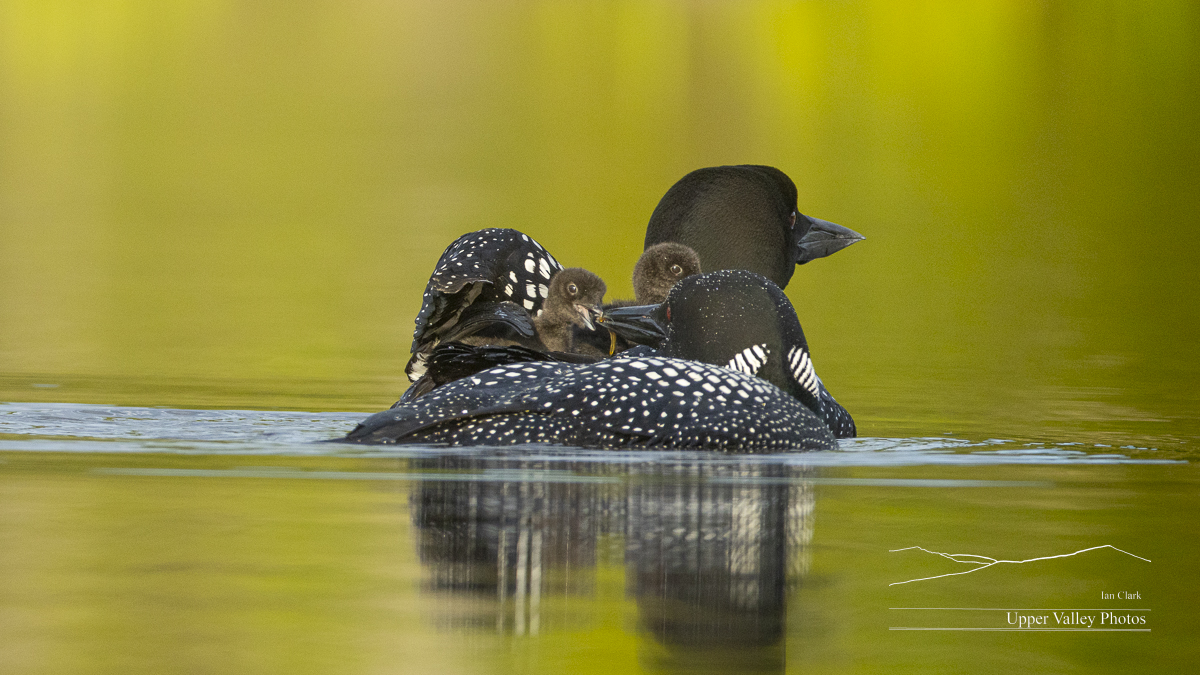
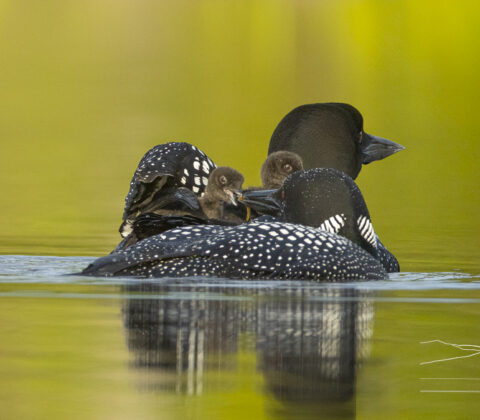
The Eastons Have Two Chicks
The last three years, the Eastons have hatched their chicks the third Friday and Saturday of June. I’d visited last Friday without any sign of chicks. Monday’s forecast suggested a chance I’d not get rained on. I headed out to visit the Eastons in a thick fog.
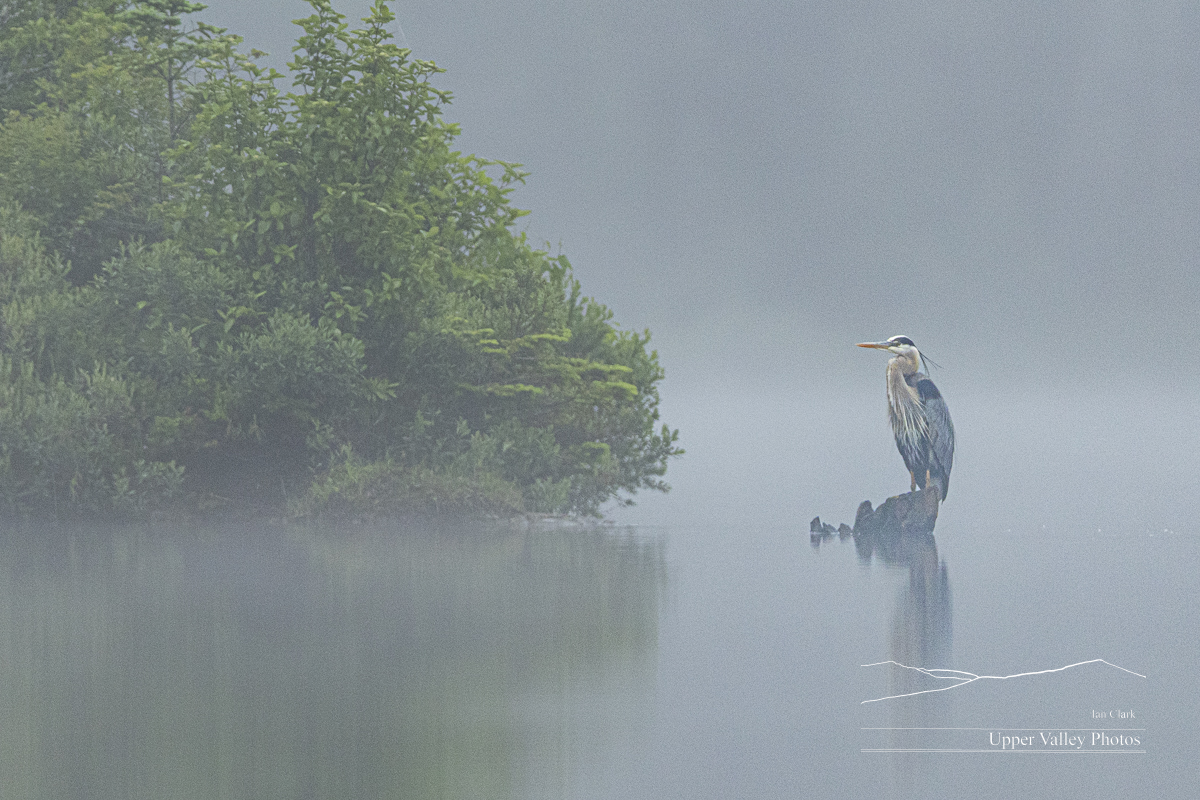
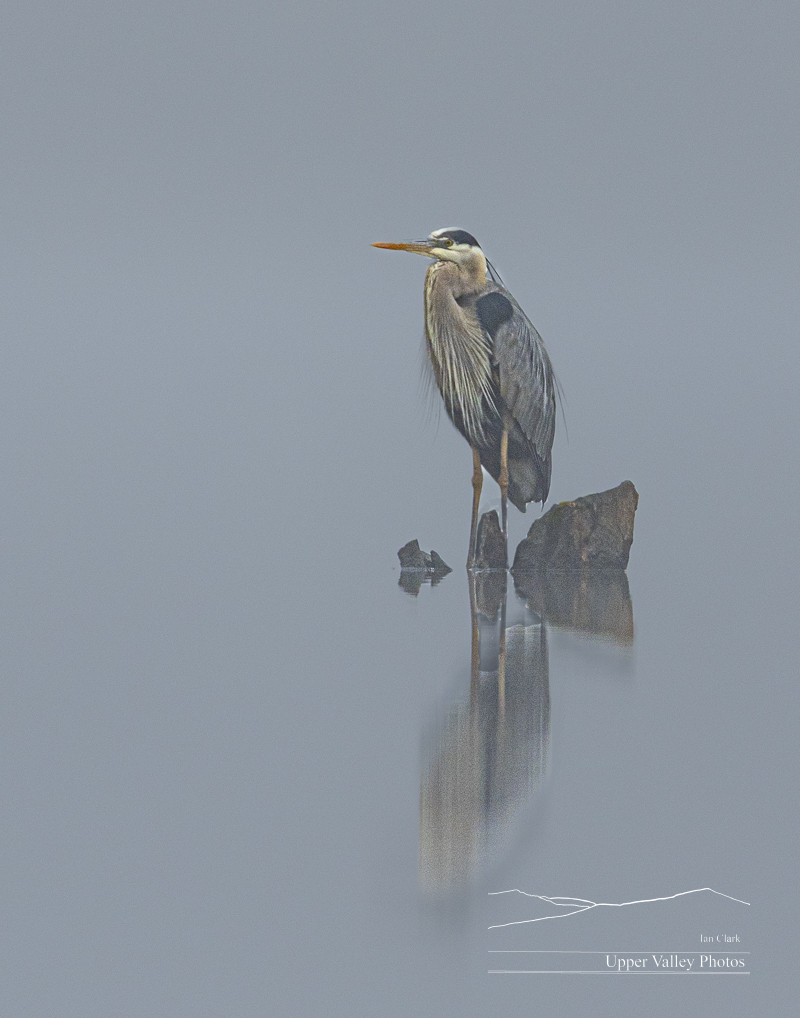

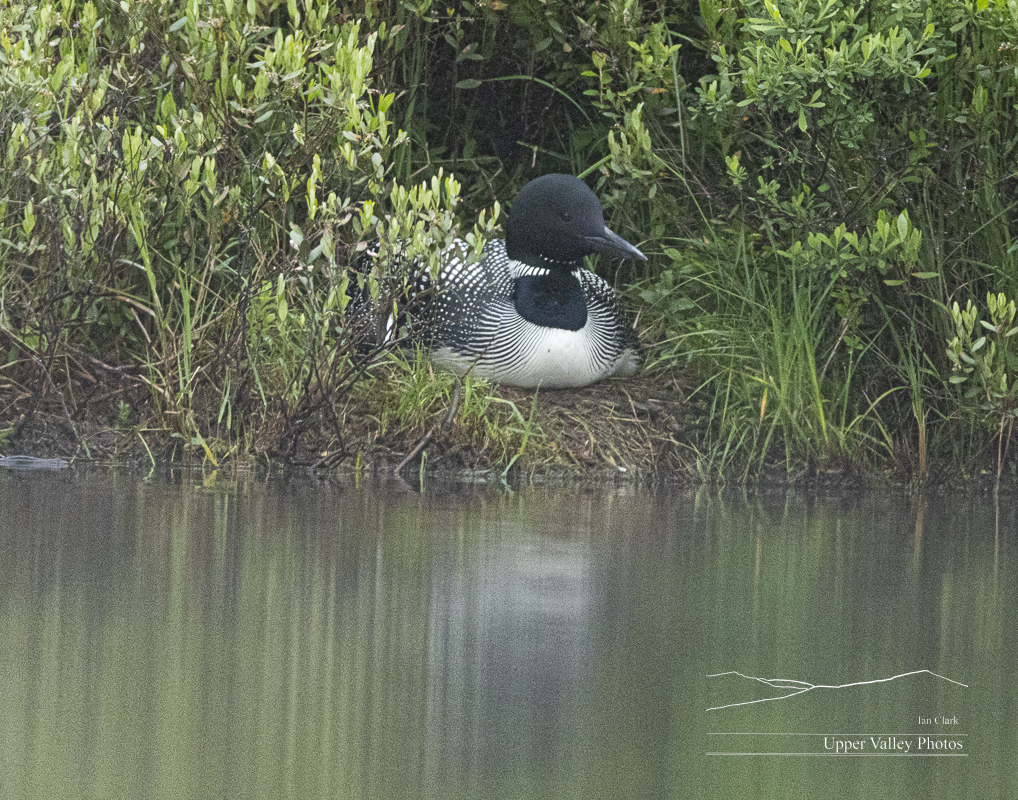
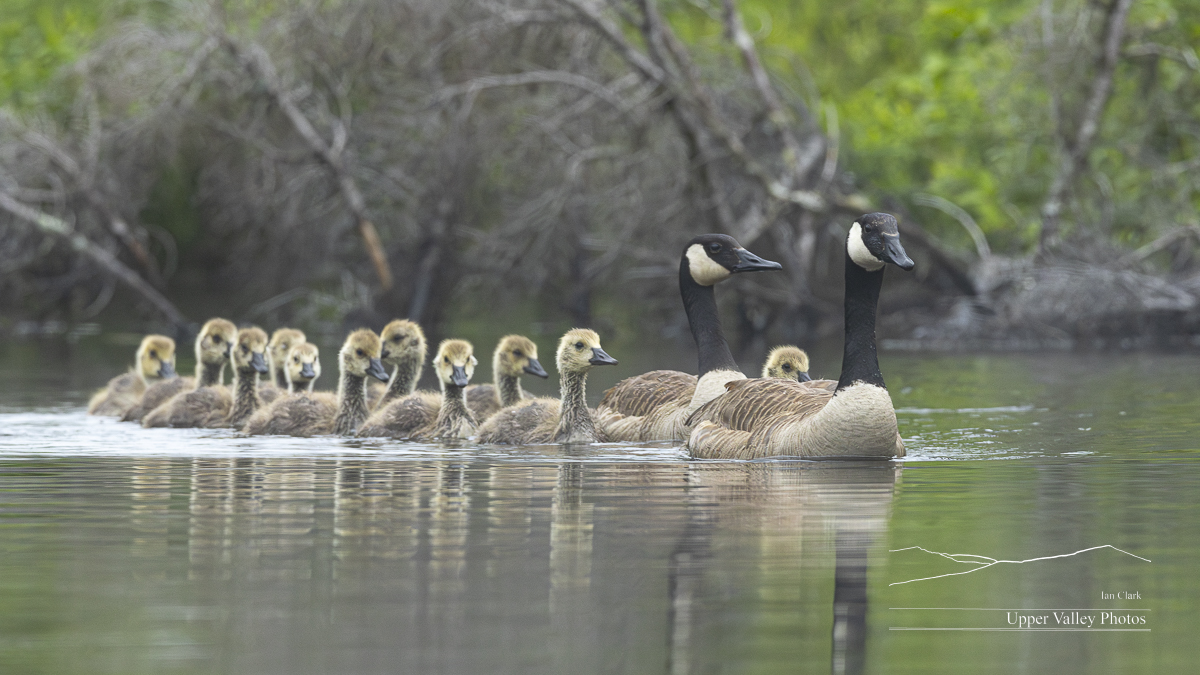
The weather improved throughout the day, I went to visit the Middletons in the evening. Our off duty parent was preening for some time before giving a series of four stretches.
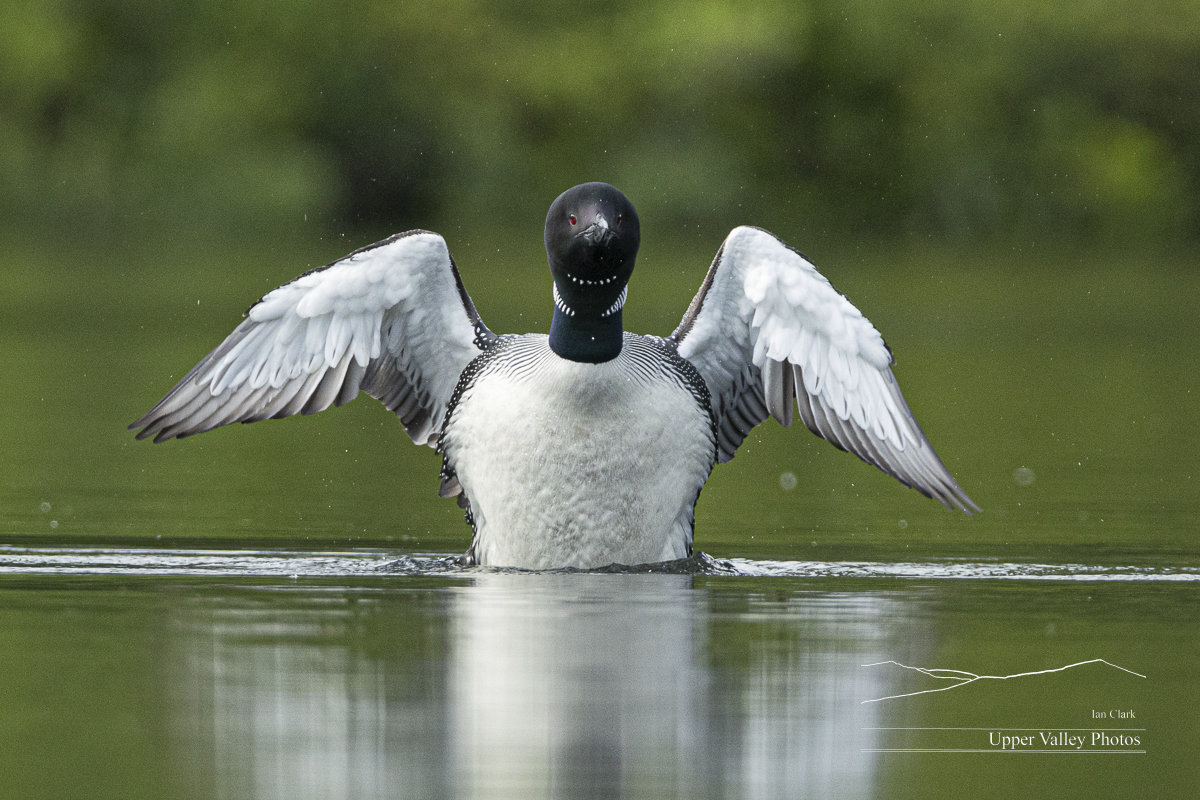
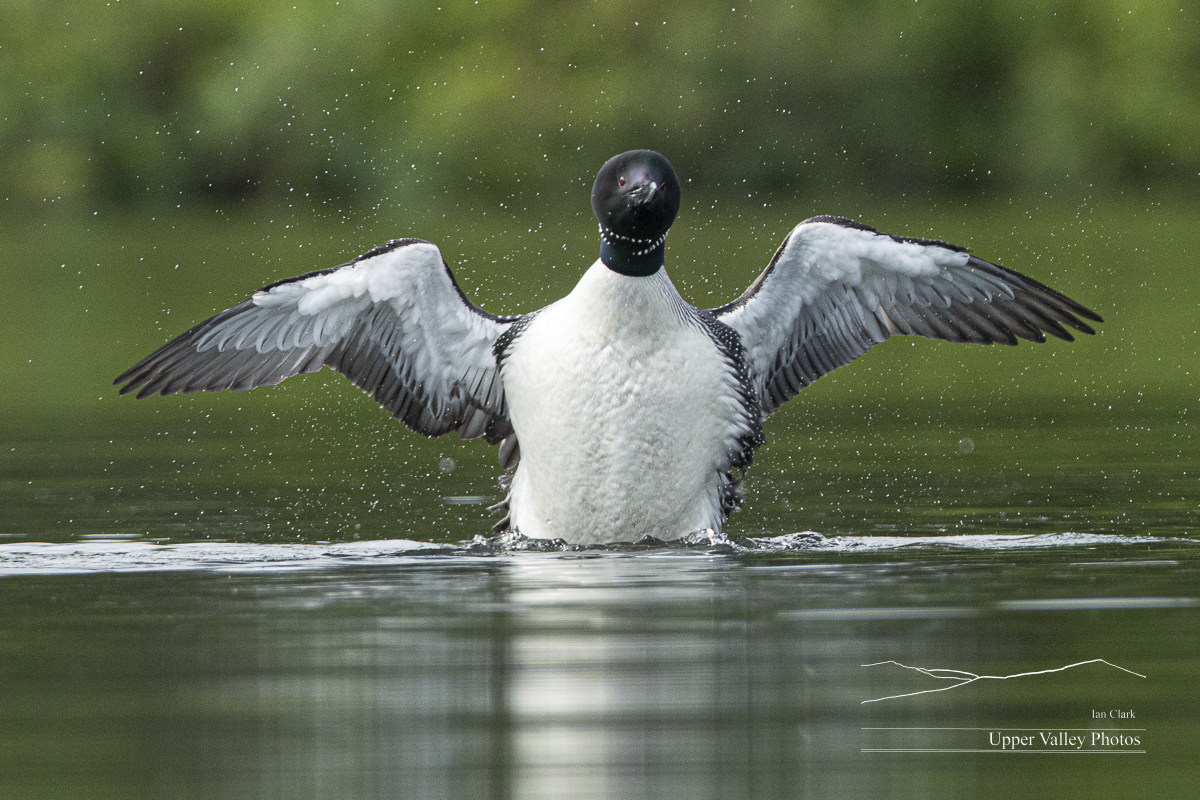
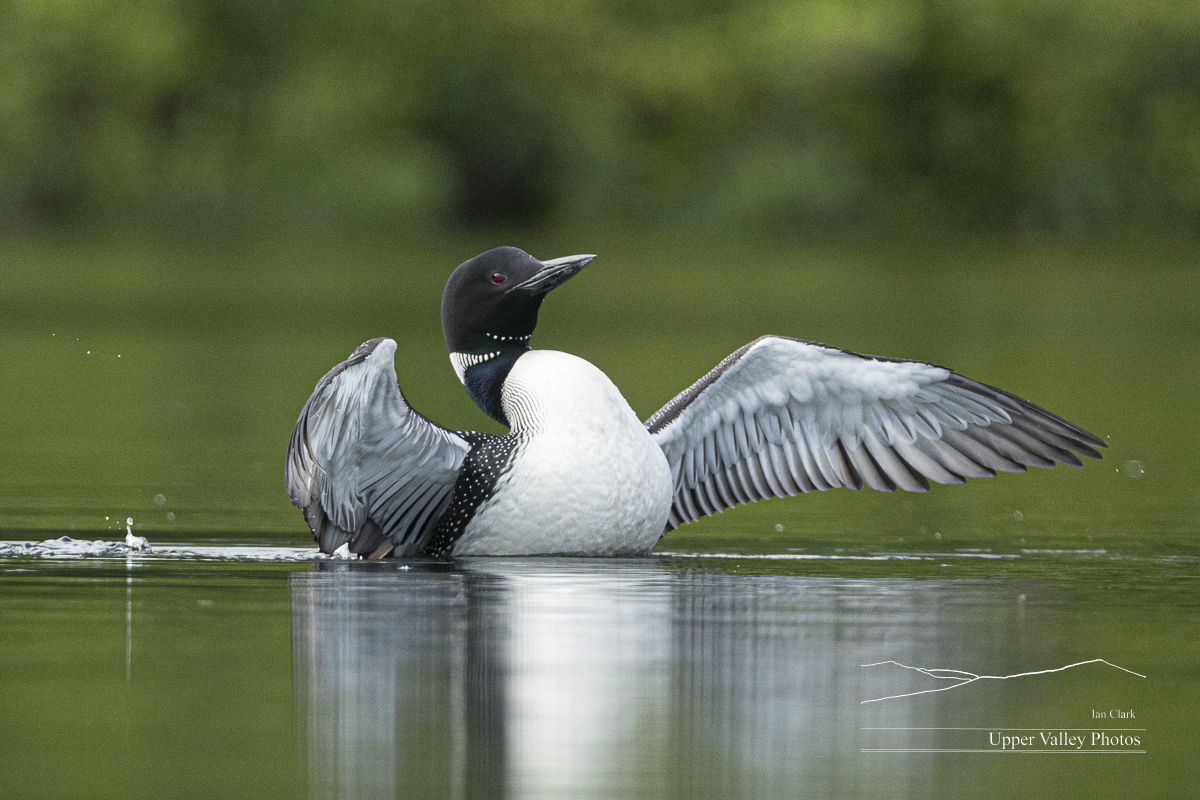
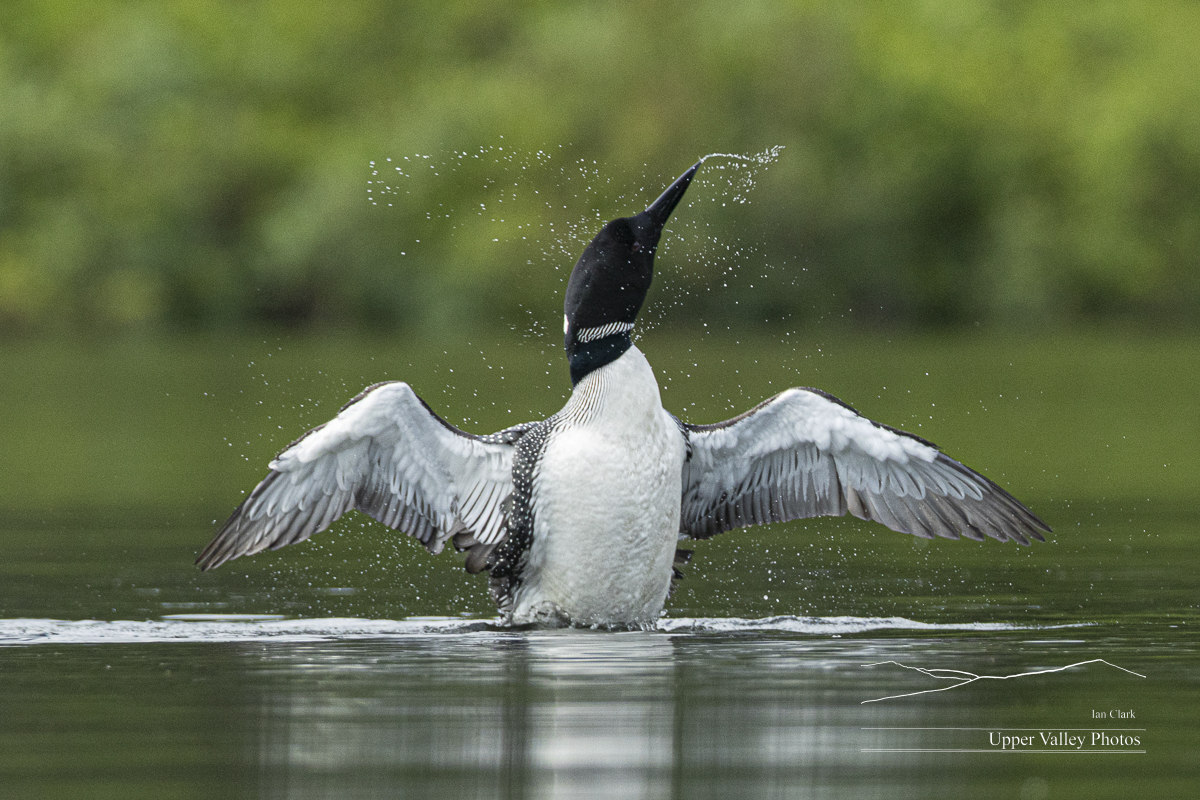
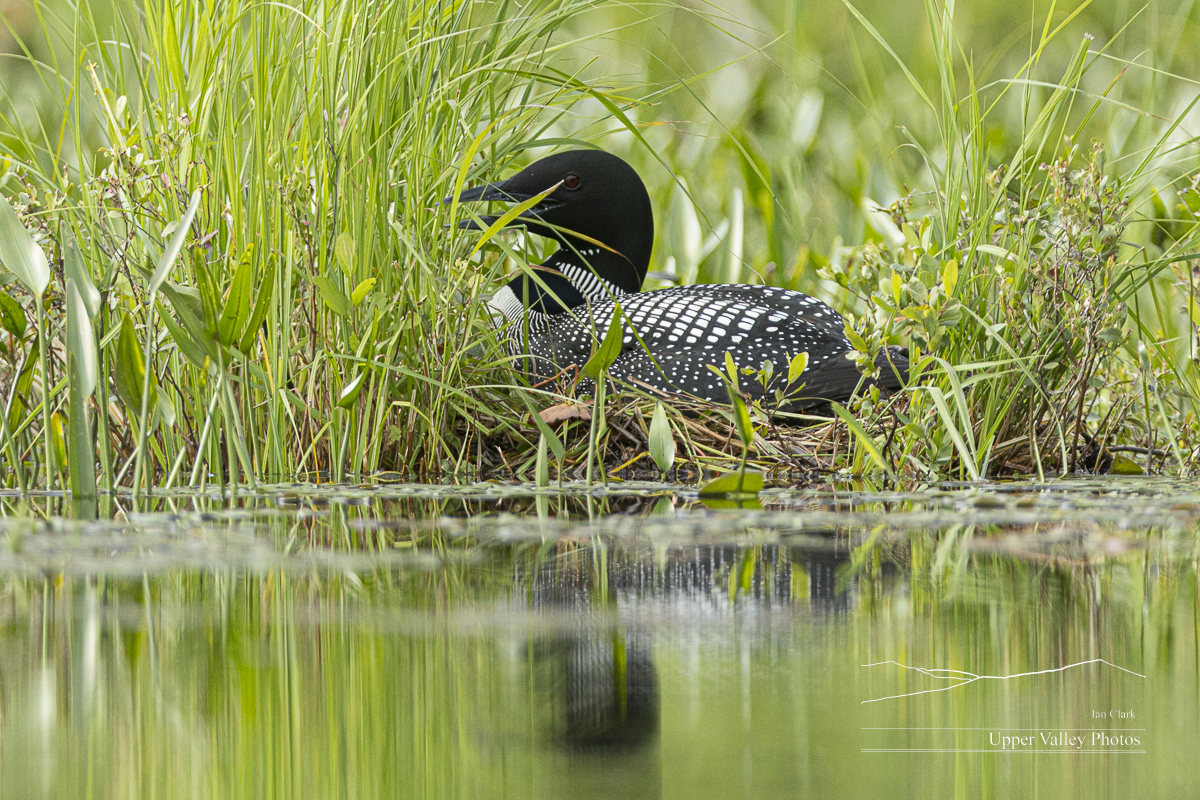
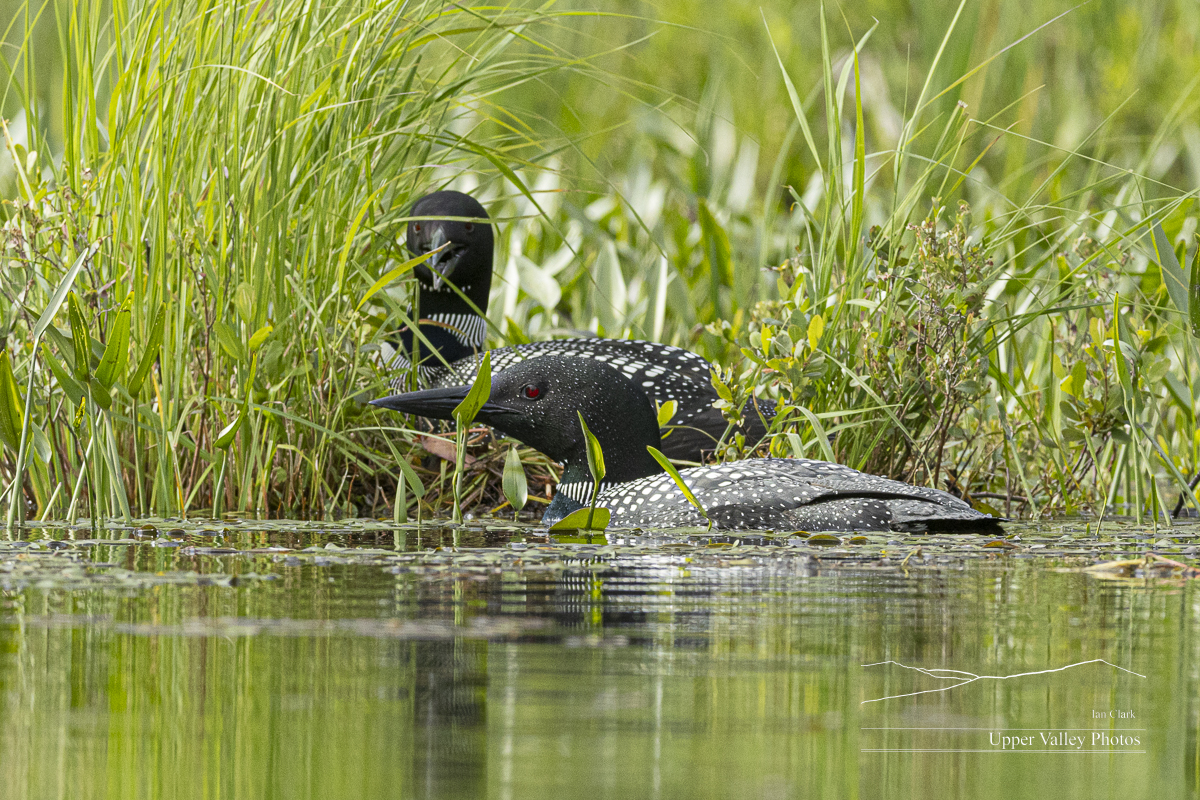

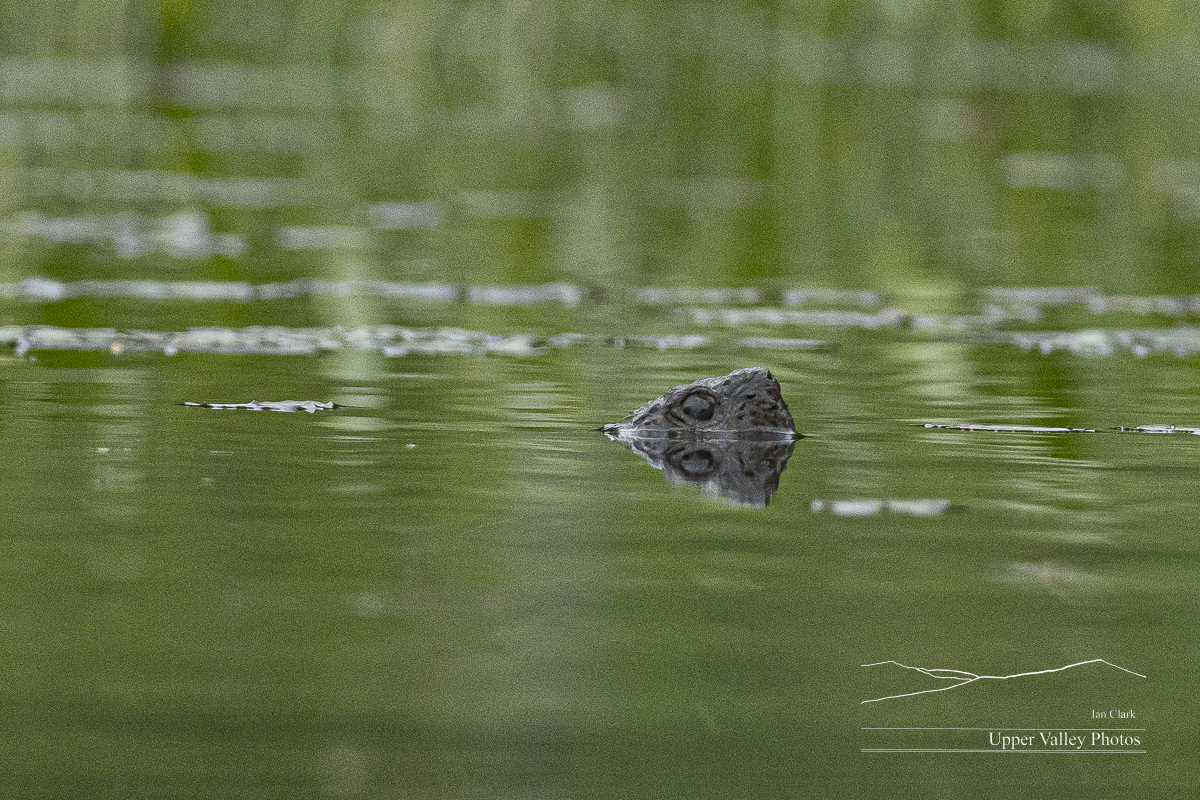
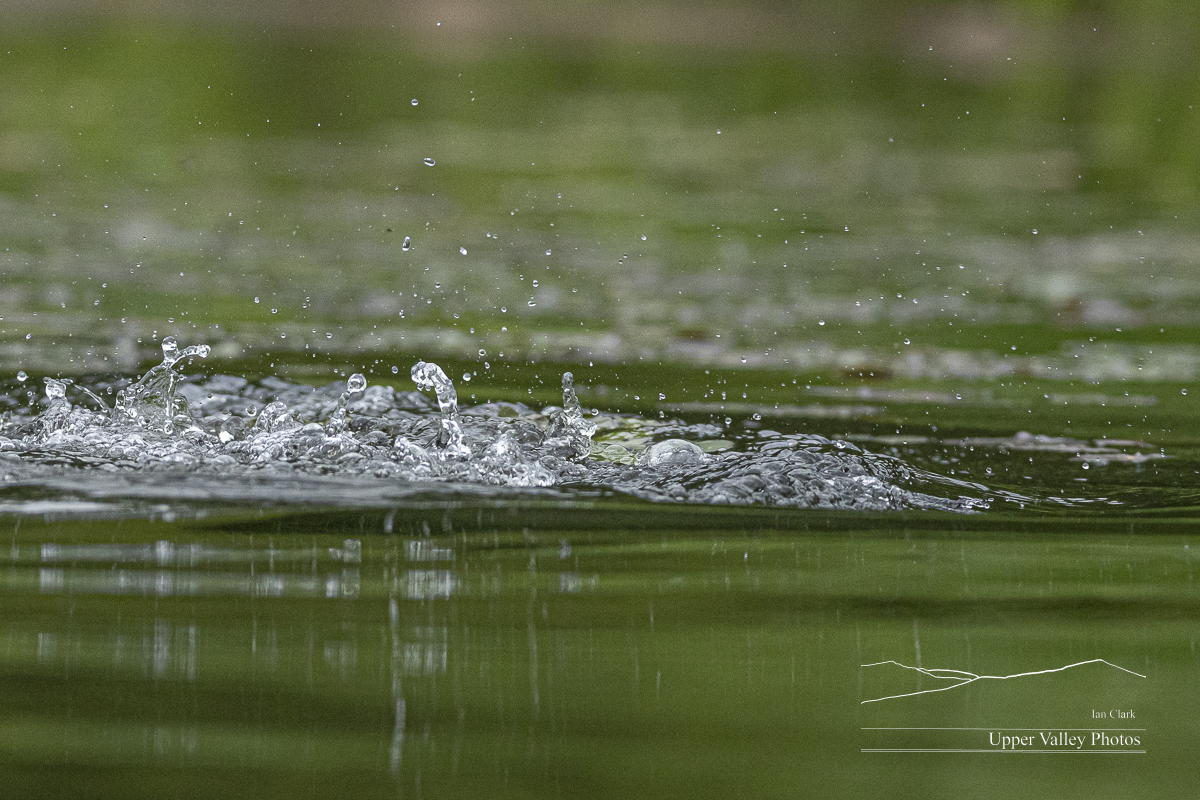
Once again, I headed home not knowing if the first chick had hatched.
The forecast for this morning was for the fog to burn off and the morning to be partly cloudy. Low, heavy clouds greeted me when I got up, with some breaks to the north. I decided to risk it and headed back to see the Eastons.
There’s an island blocking the view of the nest from the boat launch. As I put in, the loons raised a ruckus, but I couldn’t see what was going on. As I rounded the island, I could see one loon in the water near the nest, and the second on just climbing off the nest. I couldn’t see the chicks, but one adult had a wing up inviting a chick aboard.
Dad is a much more attentive parent than mom, assuming we have the same female from the past few years. Dad is also banded, letting me tell them apart when I can see a leg. Dad rounded up
both chicks and got them aboard. Mom decided it would be a good time for her to go out and get her own breakfast. After about 15 minutes, dad started calling, it sure looked like he was reminding her that she needed to get to work.

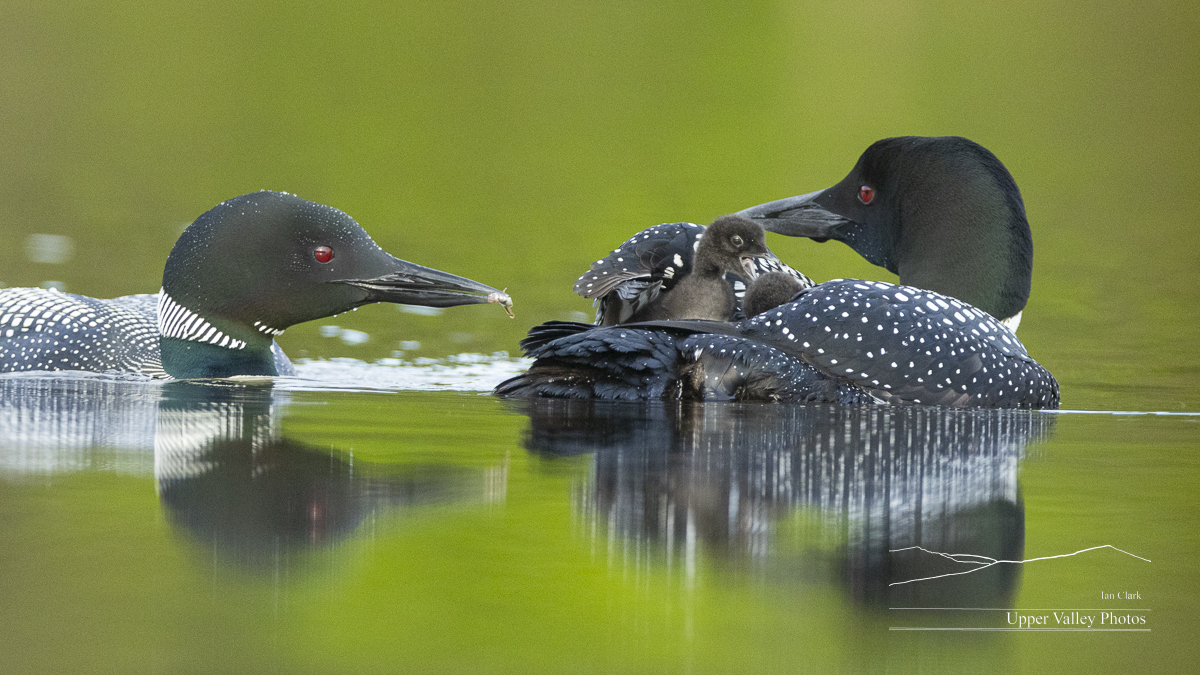
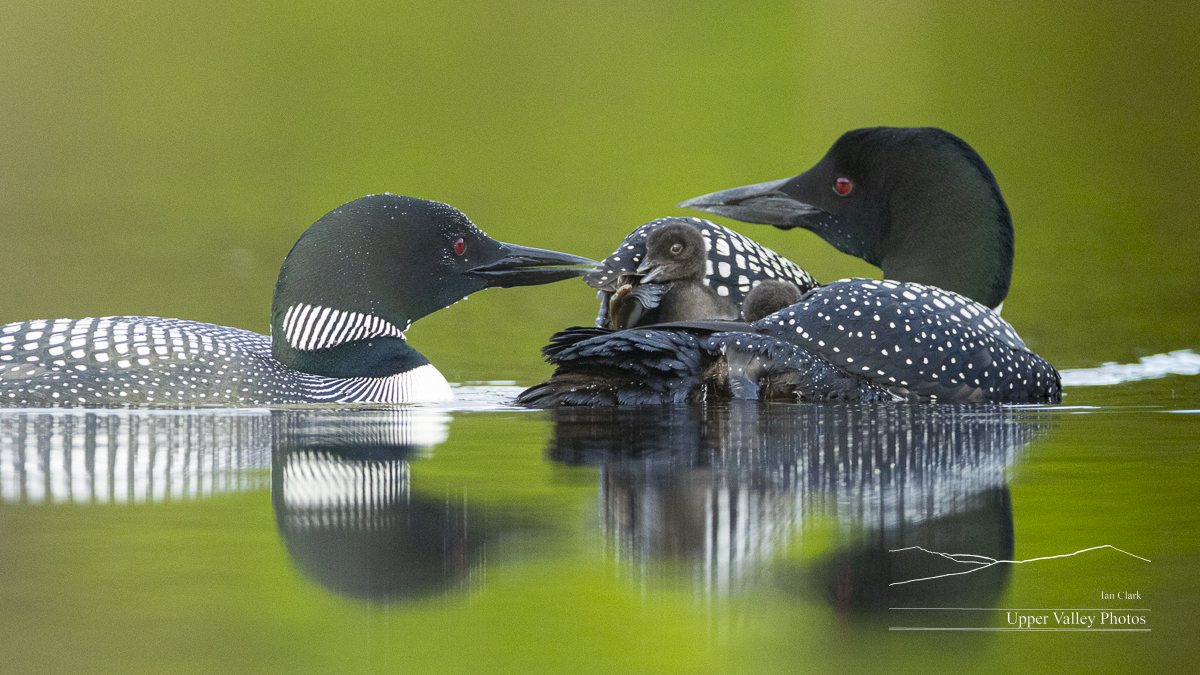

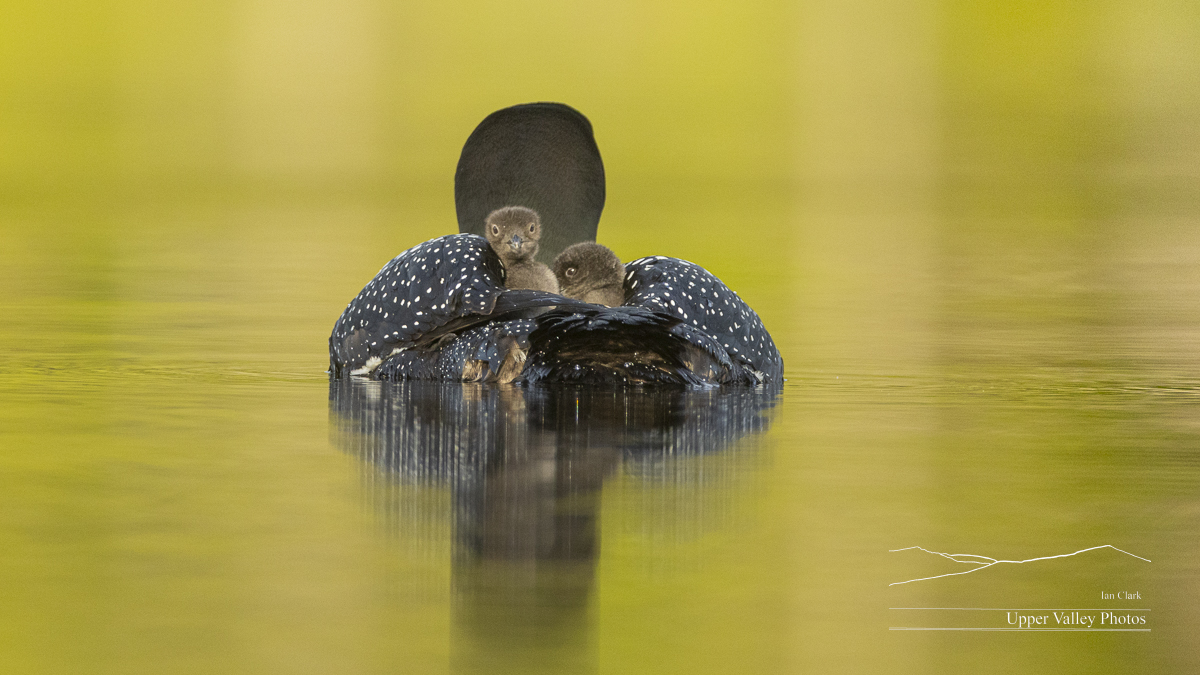
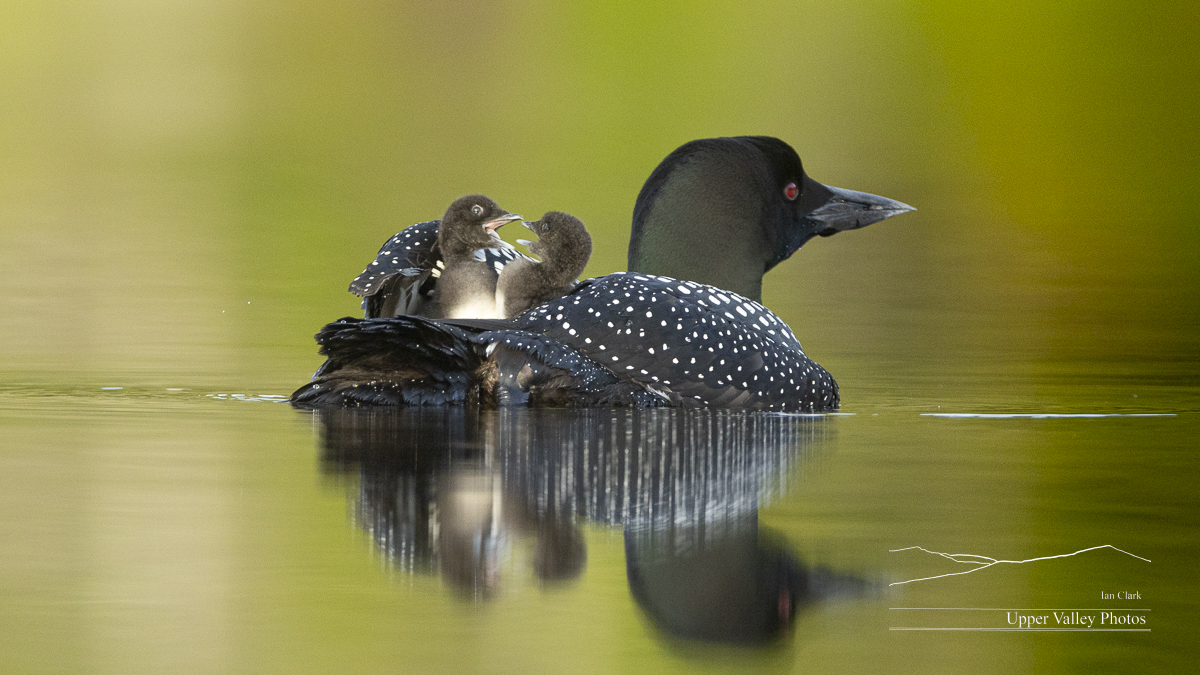
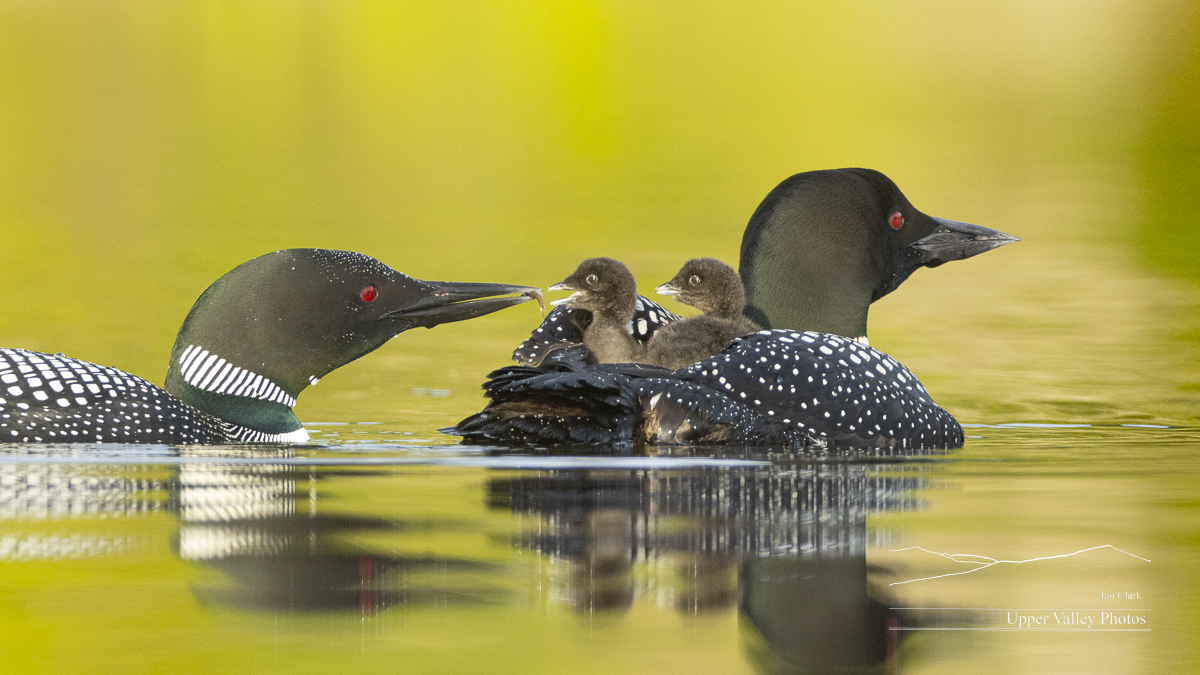

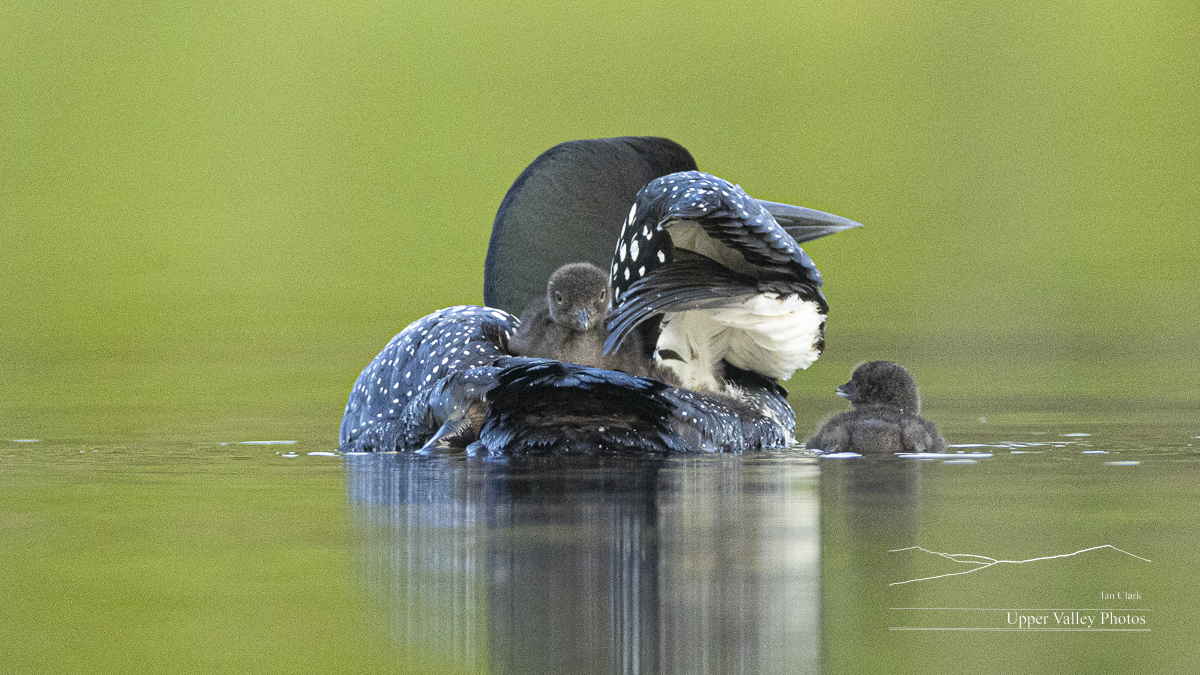
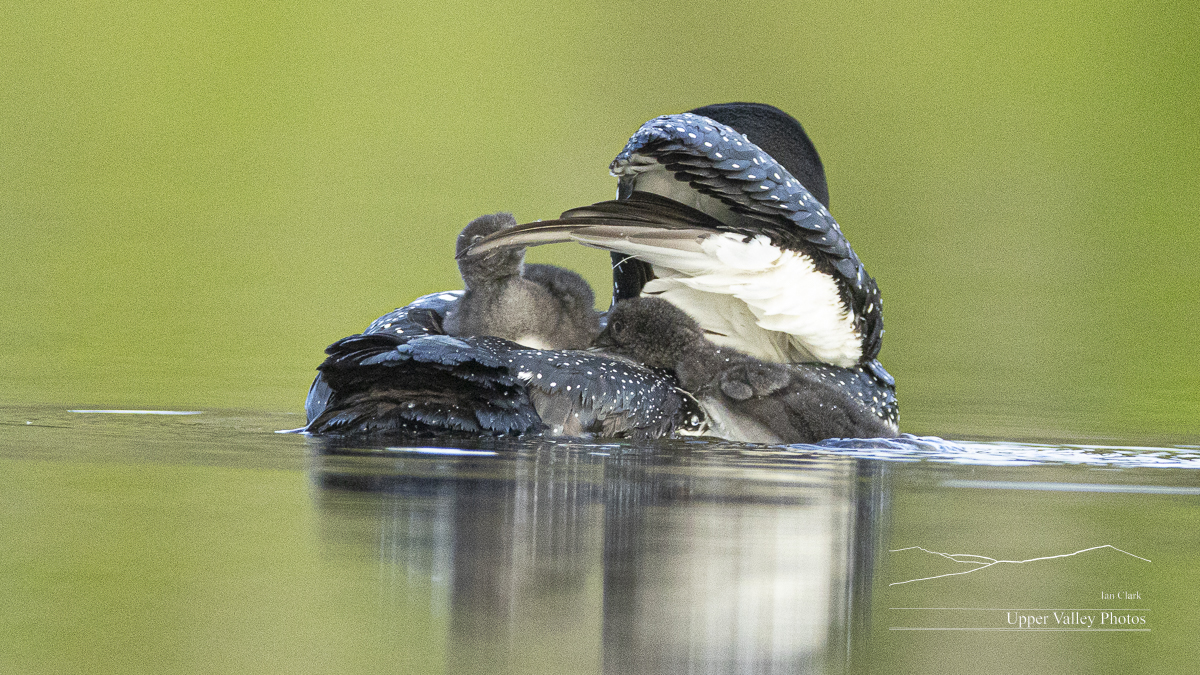
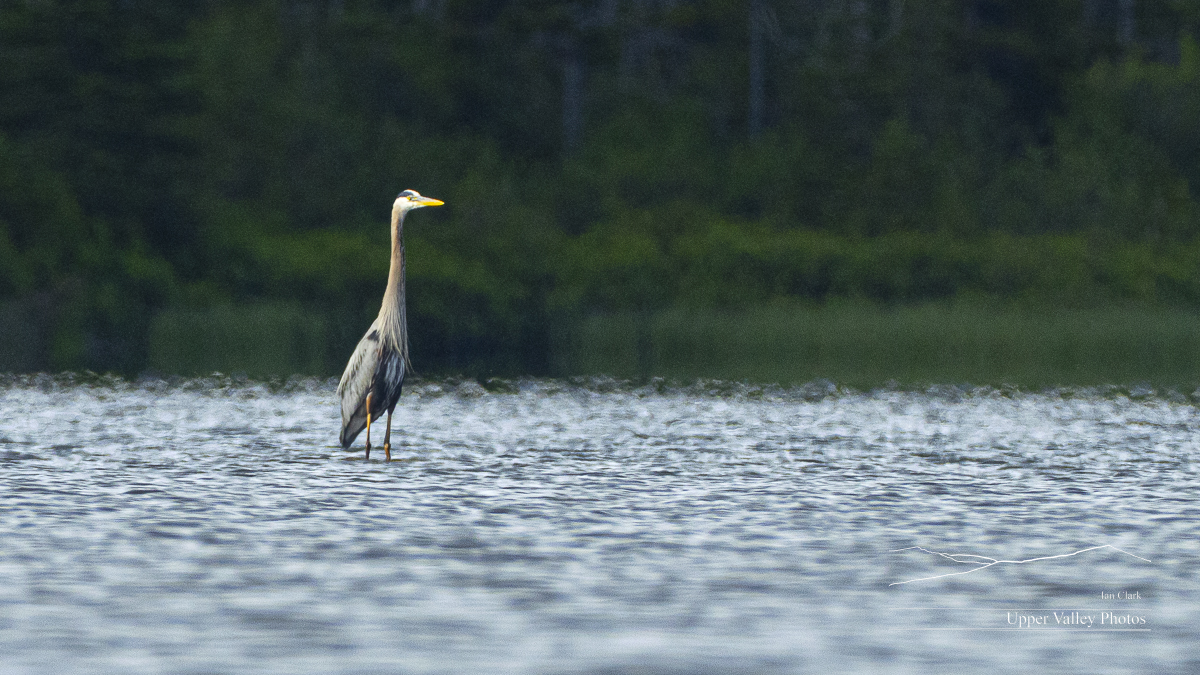
I’ll try to keep up with all three families through the summer. If you know someone who might be interested in following along, please share my blog with them.
First Loon Chicks Have Arrived
UPDATE: We’ve got a second pair of chicks that have hatched since I posted this. Lots of pix in their own post at here.
The weather final cleared enough to let me get back out to check on our three loon families. Well, sort of. I got very wet the first evening and made it back to the car with seconds to spare the second.
First, there’s some sad news from Vermont, the oldest known loon in Vermont has died. His age was estimated at 31 years. VT Diggerhttps://vtdigger.org/2023/06/15/vermonts-oldest-loon-dies-at-the-estimated-age-of-31/ has a piece interviewing Eric Hanson, Lead Biologist at the Loon Conservation Project about the loon.
With loon chicks hatching it is once again time to request that you give them space if you go to see or photograph them. You may not intend them any harm, but you may distract the parents from seeing other threats. Our new loon chicks were greeted by a circling eagle on their first or second day out. The parents need to concentrate on the real threats, keep back and let them do their job. All the images of chicks here were with a 600mm lens and heavily cropped.
Tuesday evening I got a message from a friend on the Weston’s pond that the chicks had arrived. And that the eagle was eyeing them. Wednesday morning was wet and windy. It gradually cleared a bit through the day. I set out in the evening to check on the chicks. It was sunny when I left the house. On the way into the pond, I had to wait while a doe browsed from the road – with her fawn gamboling about in the road. By the time I had everything in the boat, there were a few sprinkles. Not enough to dissuade in intrepid photographer.
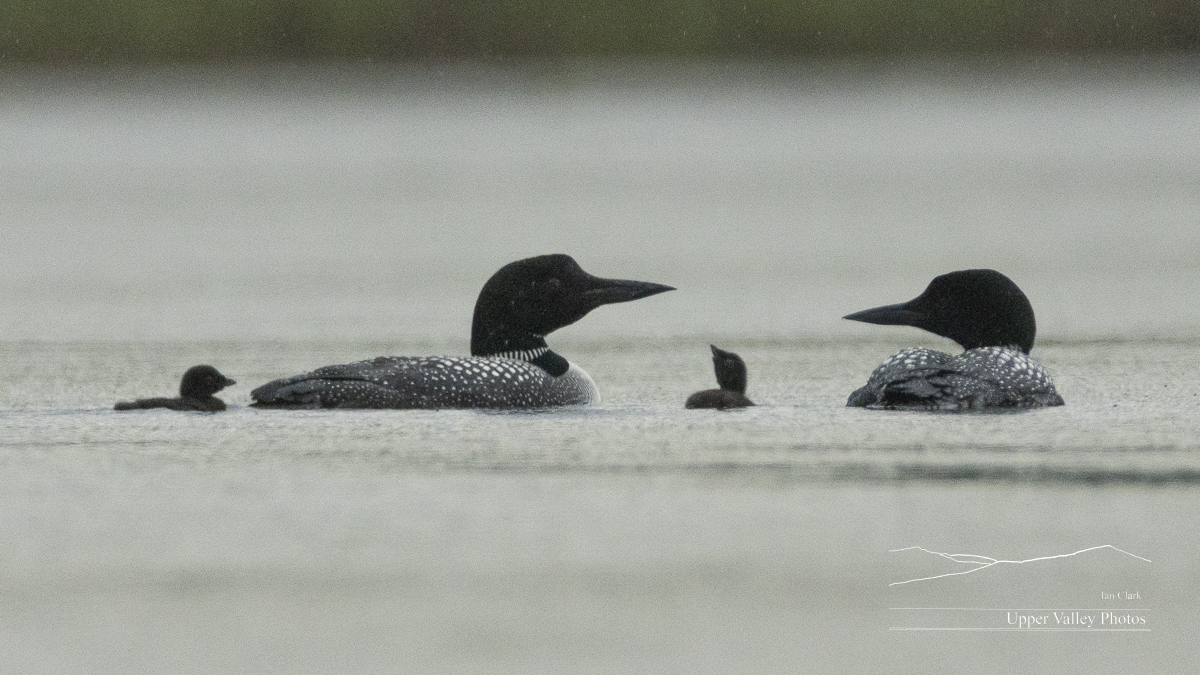
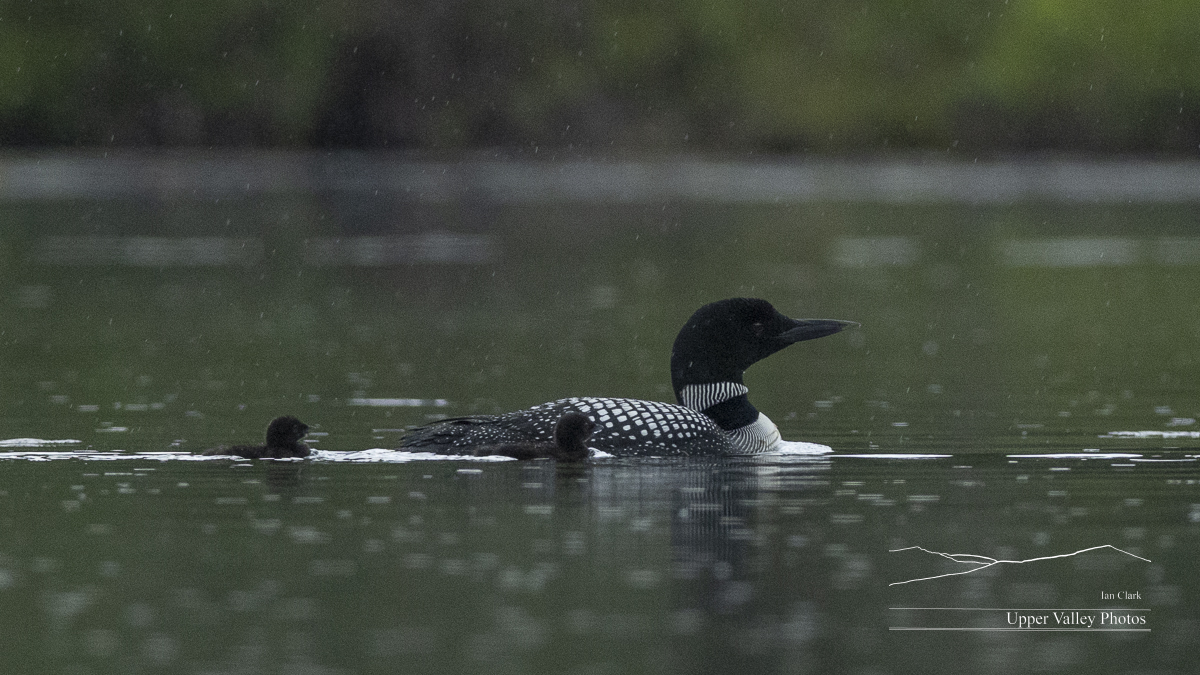
When I got up at 0345 on Thursday ready to head out, it was raining heavily. Early morning is the most productive time in the office, almost no one calls before 0700 or 0800. I got a fair bit done. When the dogs finally got up, I noticed some breaks in the clouds when I let them out. Hoping it would clear a bit, I headed off to to check on the Middletons.
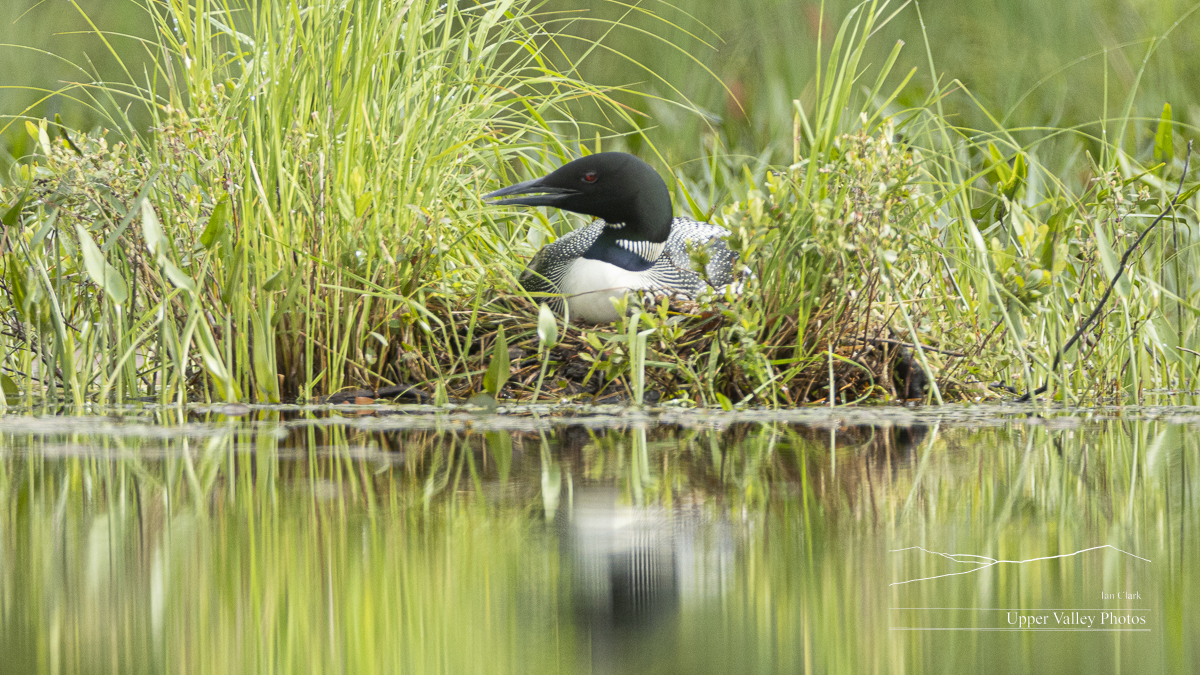
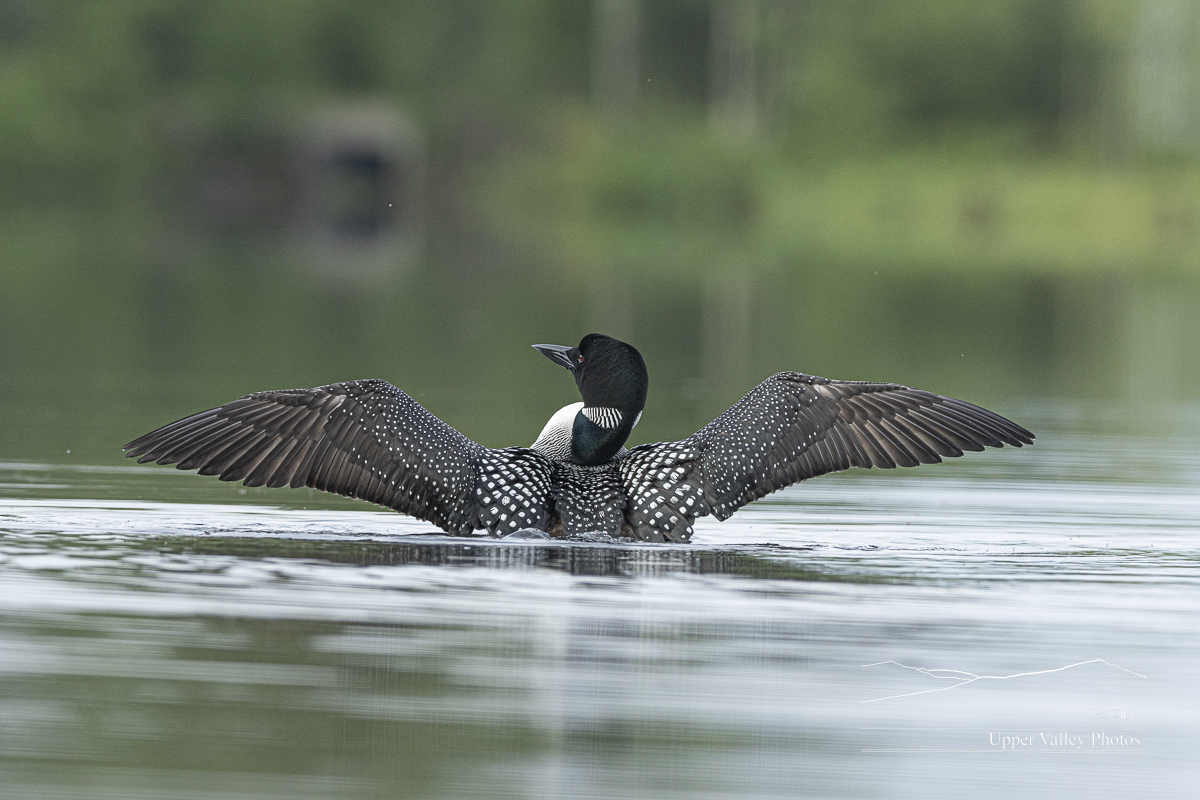
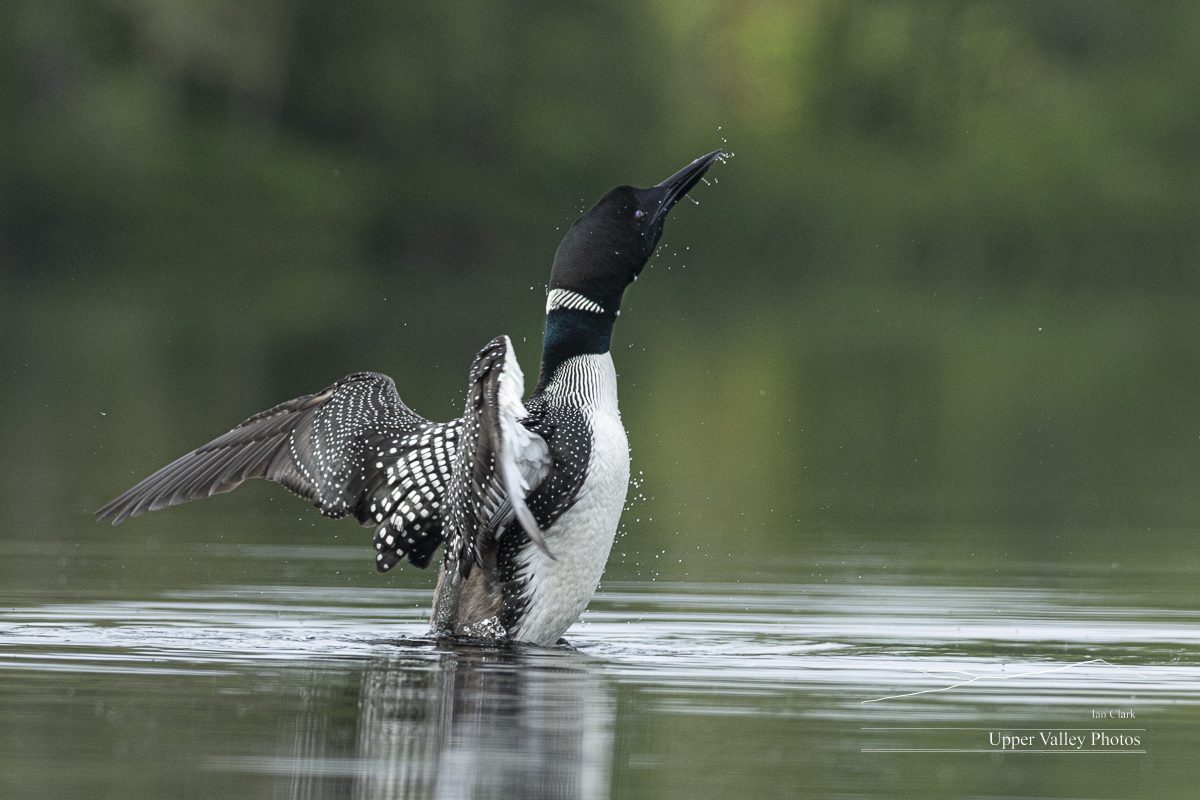
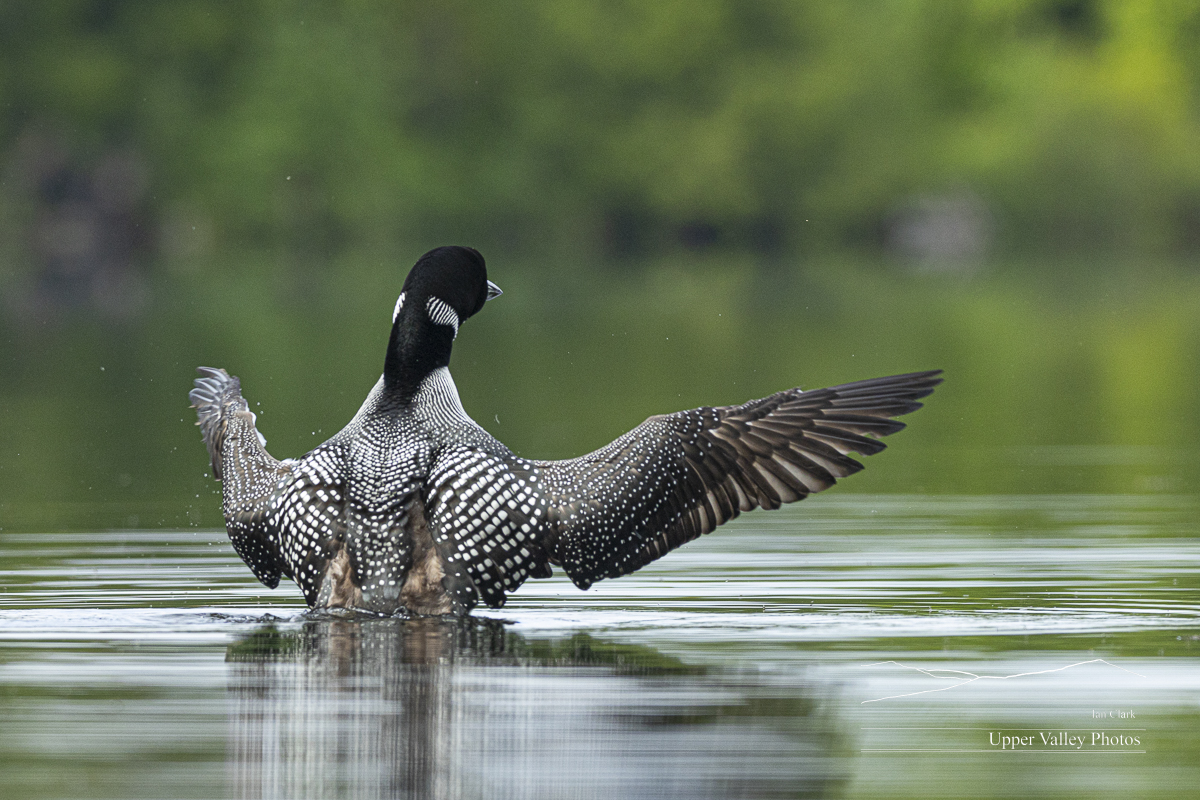

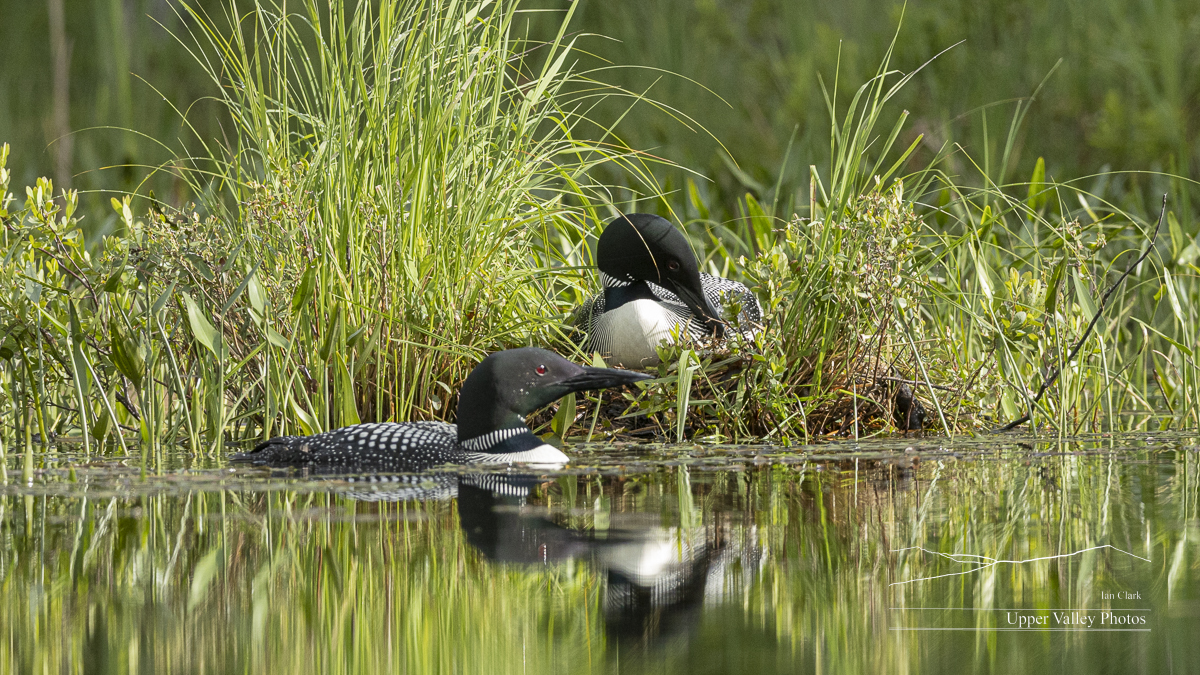
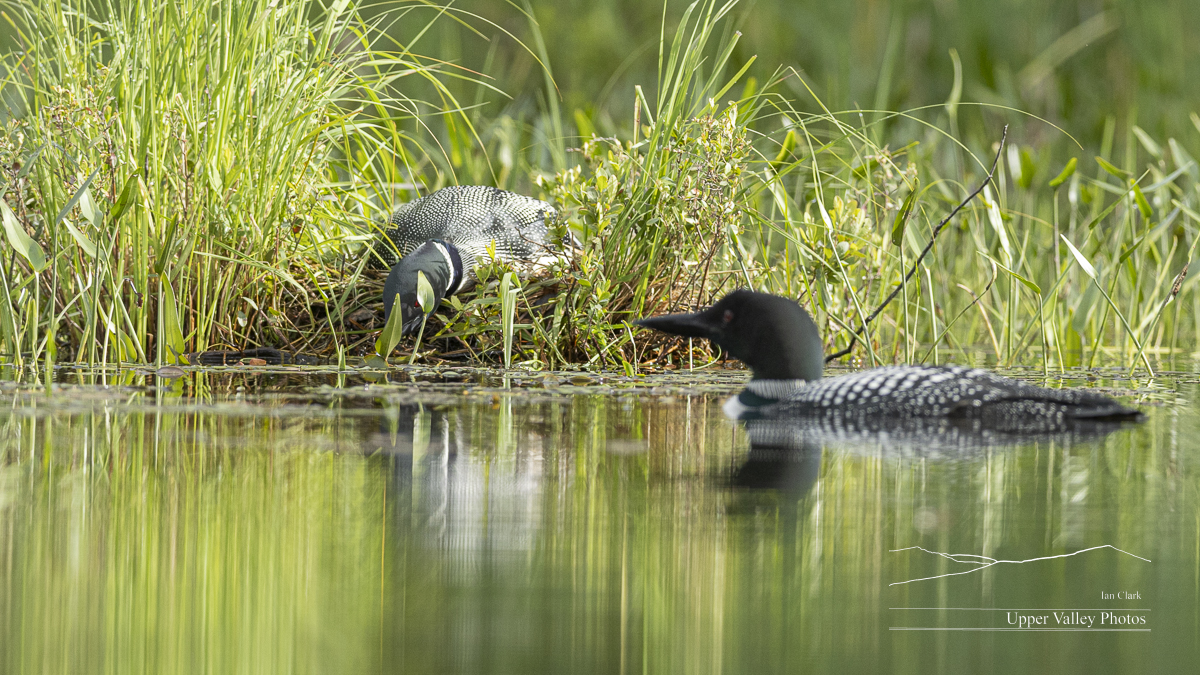
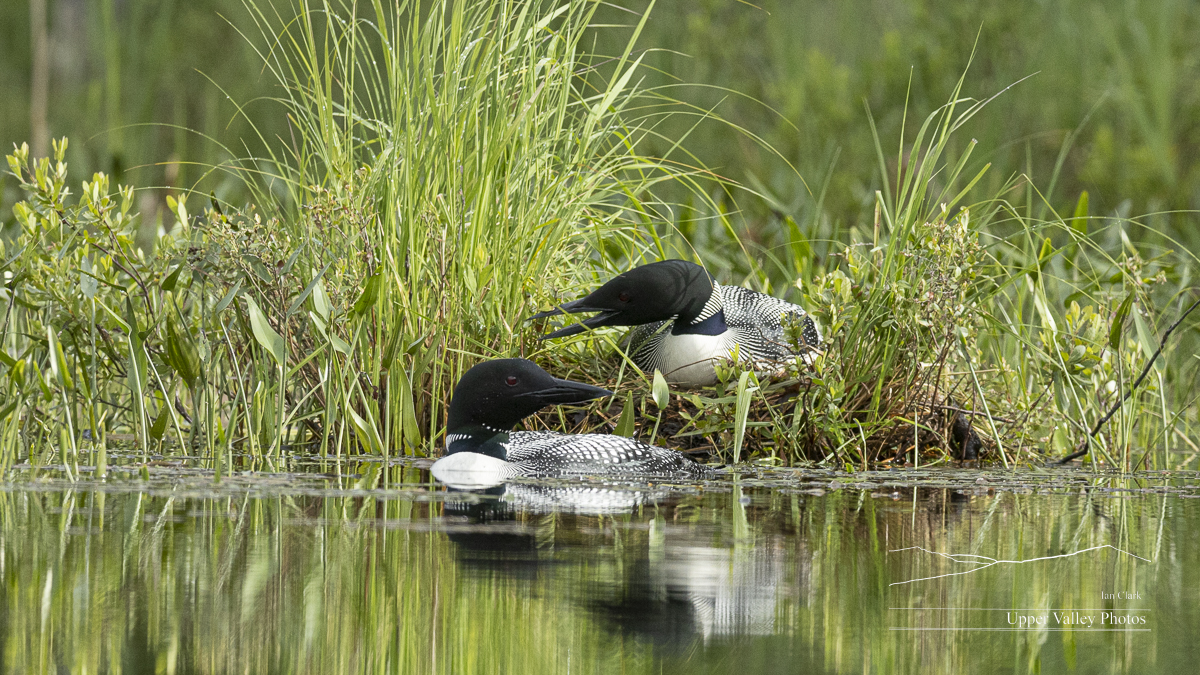
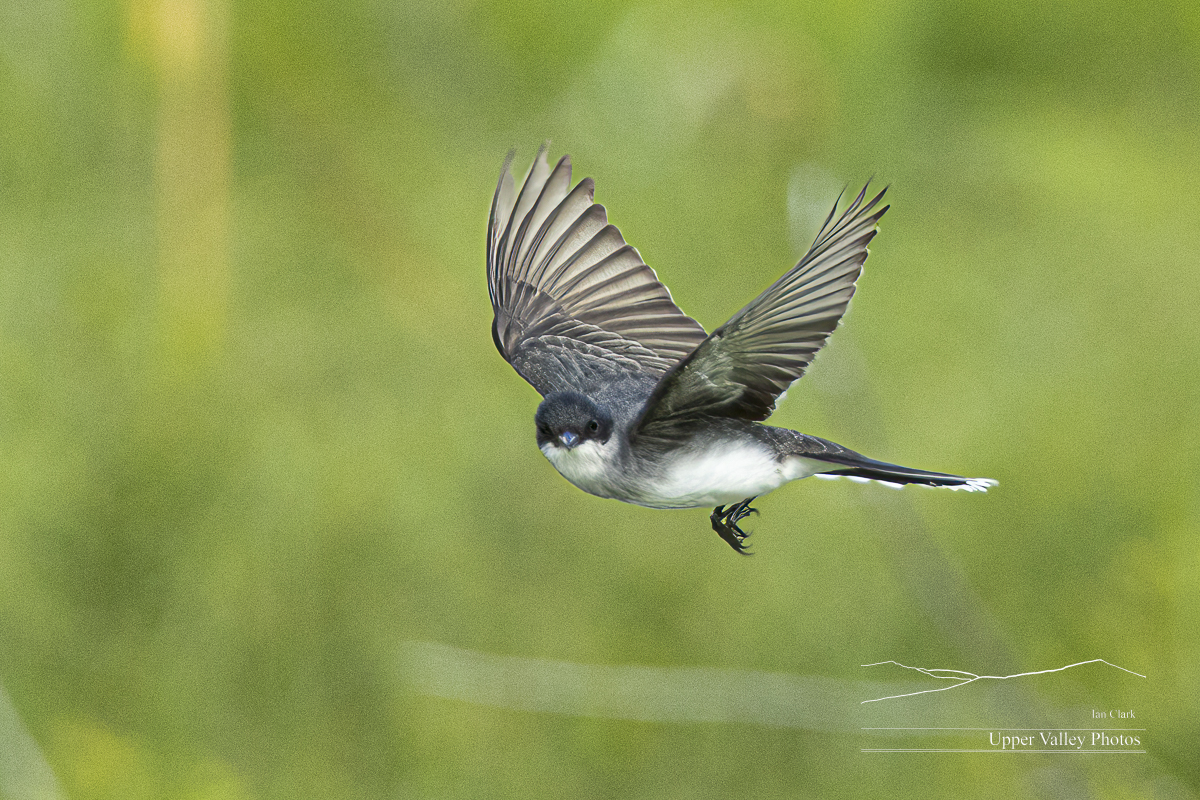
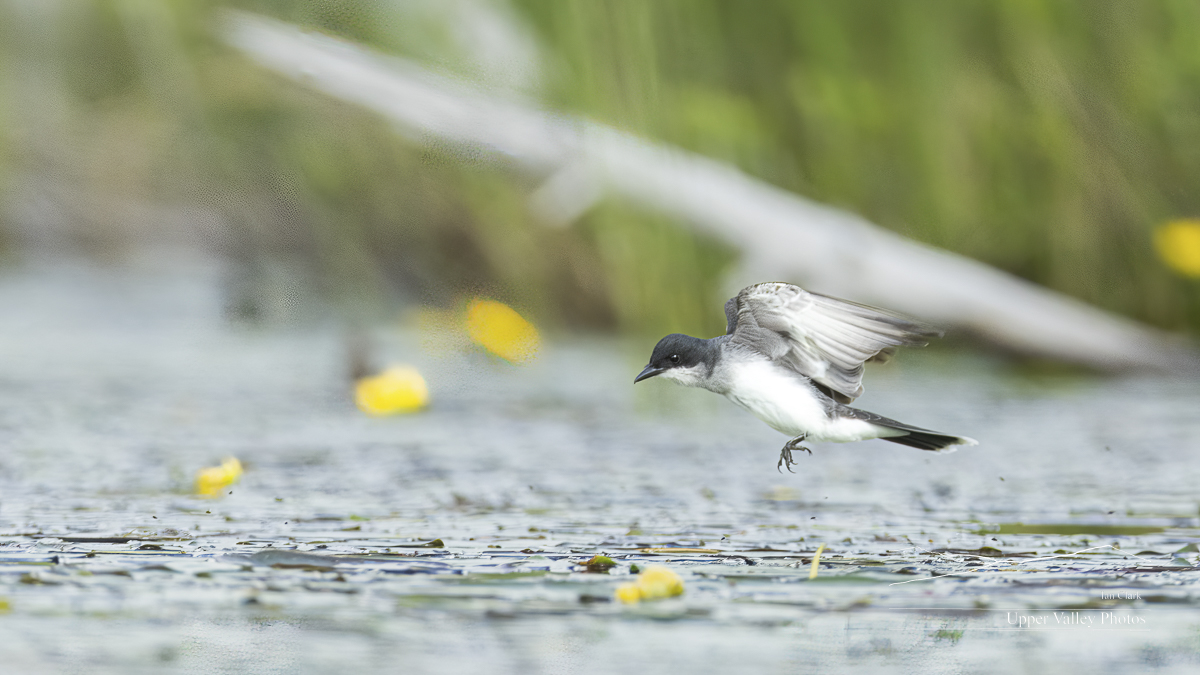
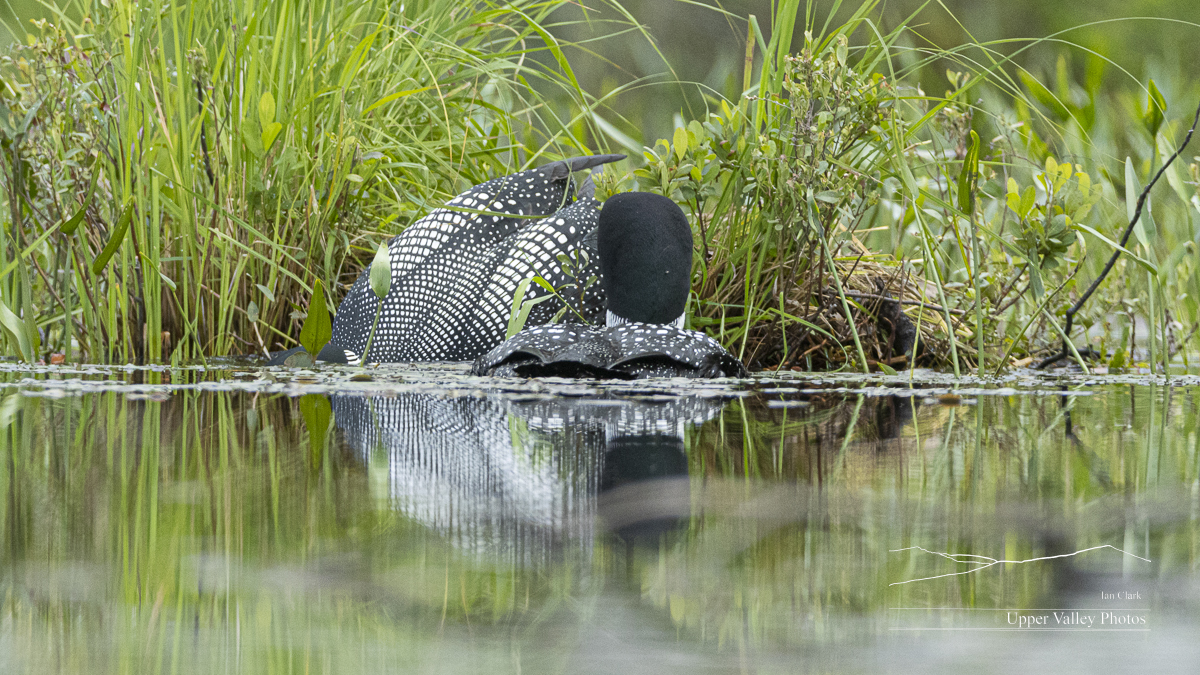
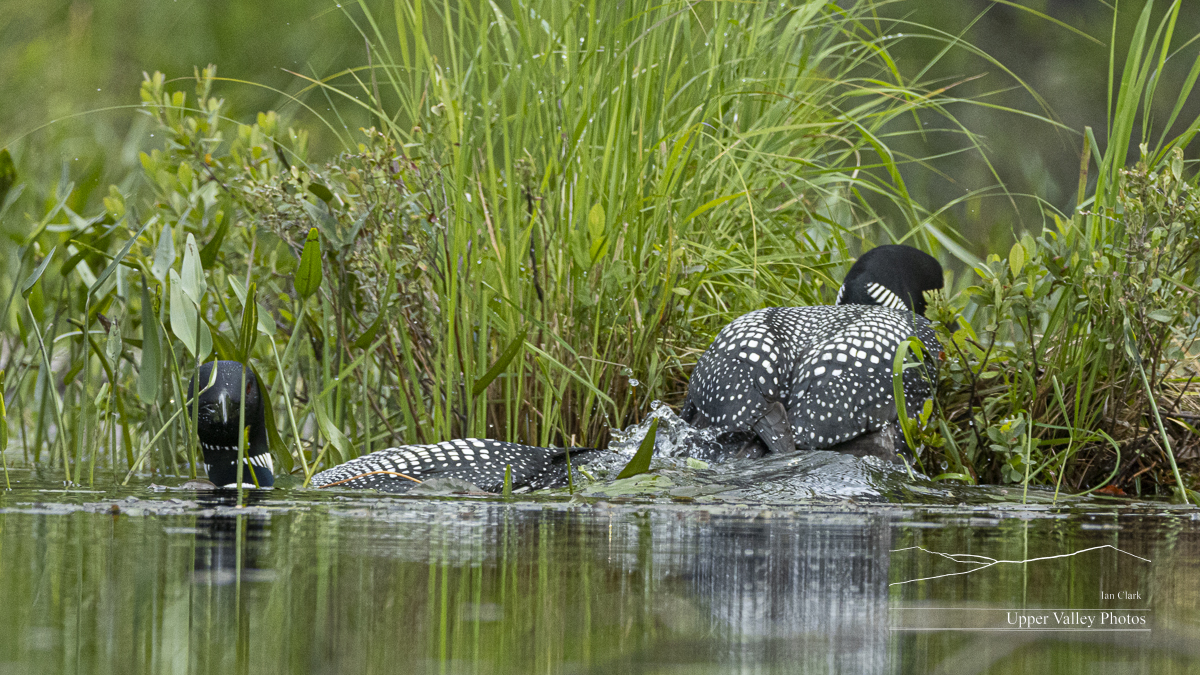

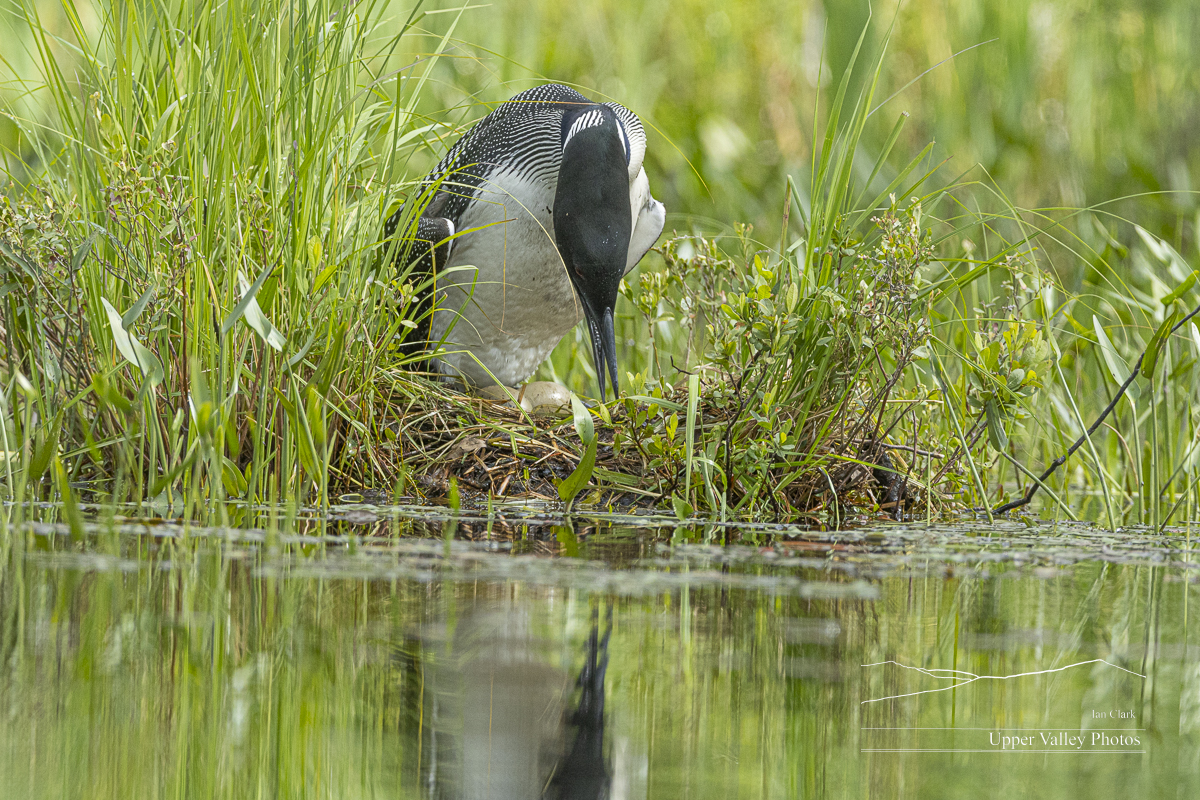
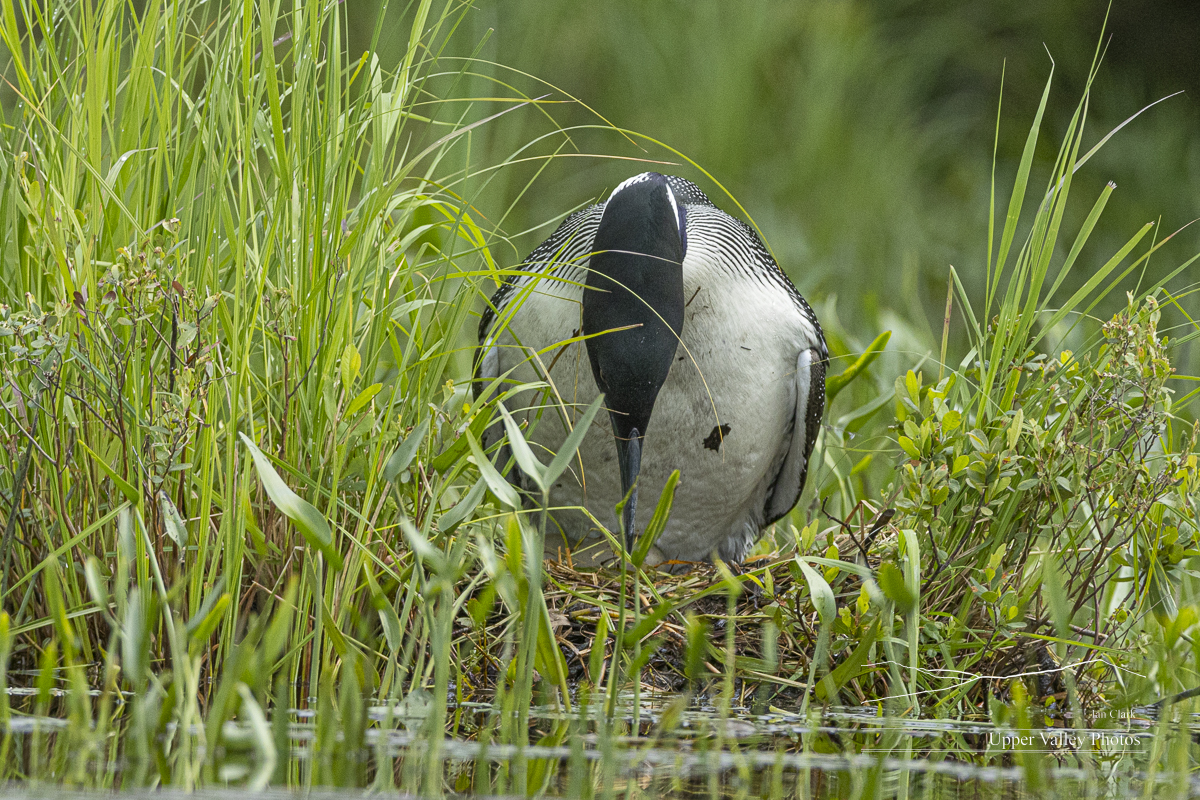
Thursday evening, I went back to check on the Westons. This time with just a couple puffy clouds in the sky.
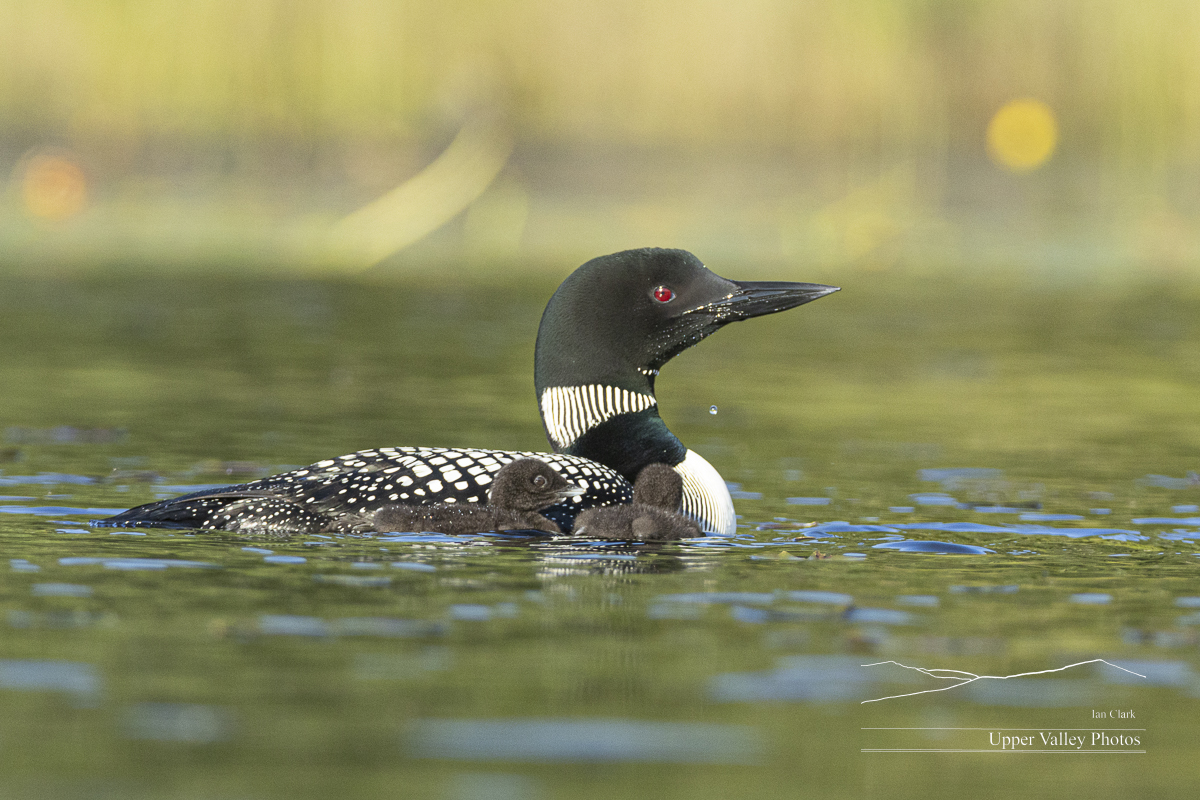

This morning, I was up and out by 0430, with clouds above and fog below me as I headed to see the Eastons. They’re up in the White Mountain National Forest, they were on their nest by the time the Forest Service got the road to the pond open, so we don’t know when to expect the chicks. But, the last three years, they’ve hatched in the third weekend of June, so soon…..
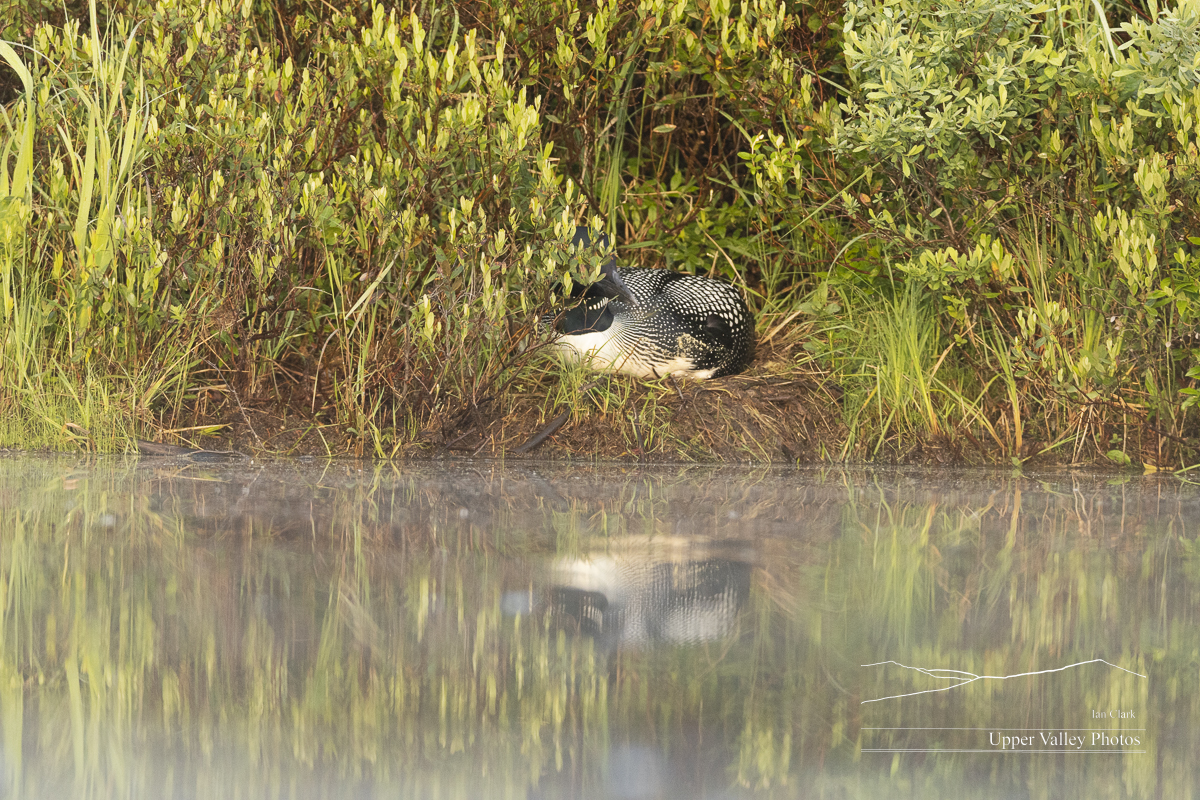

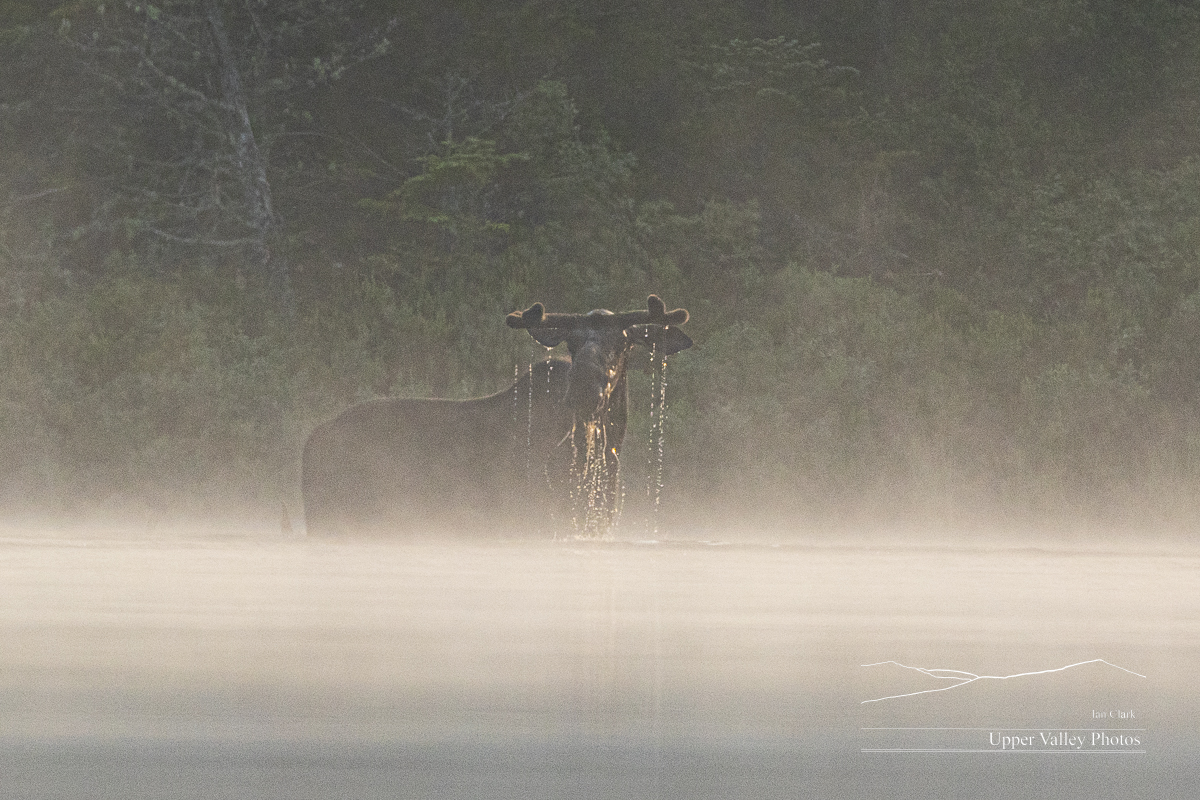
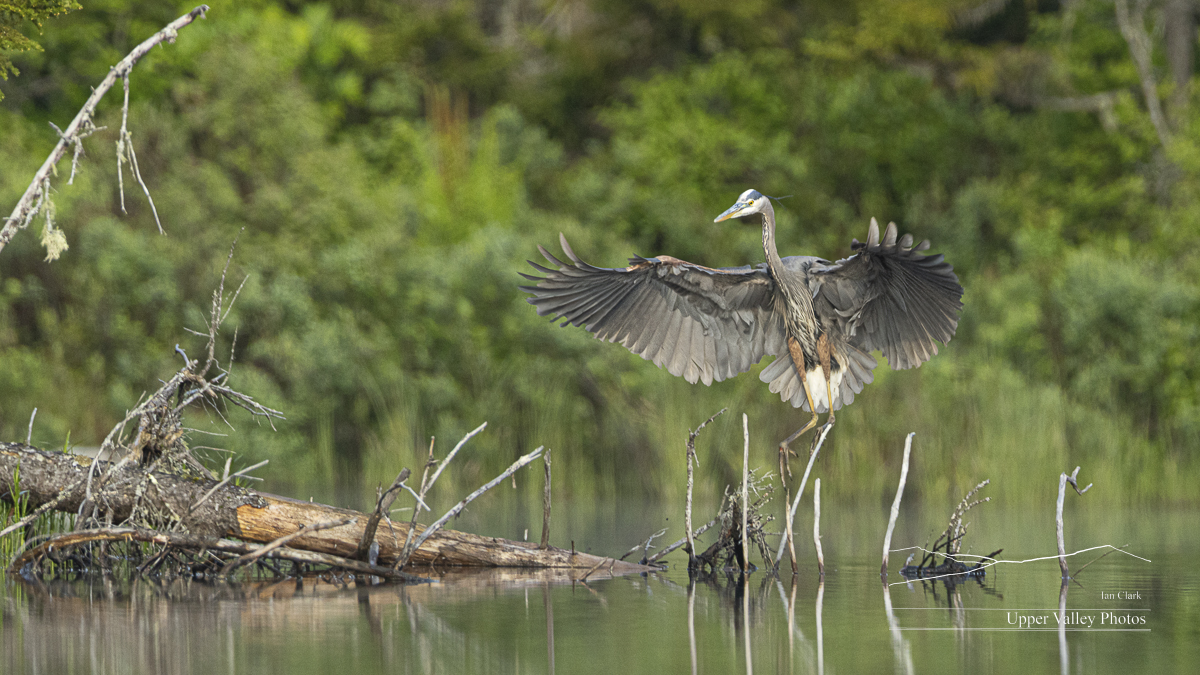
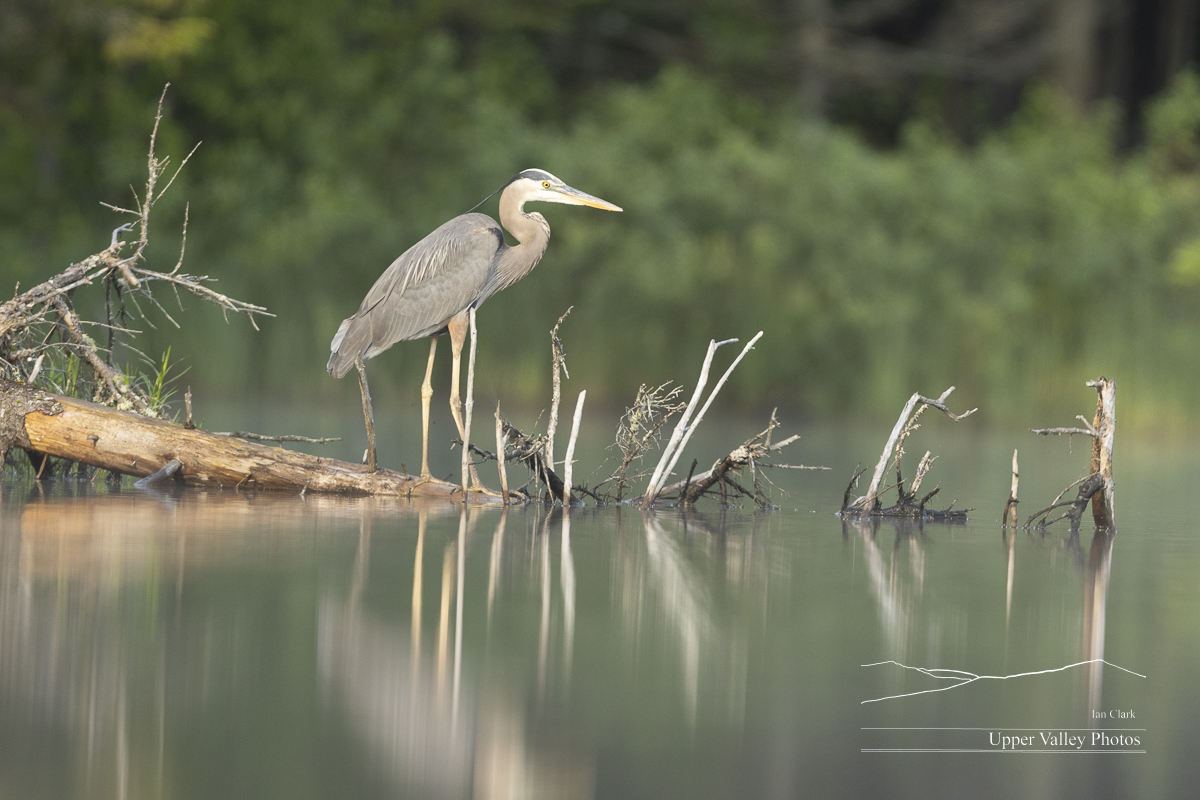

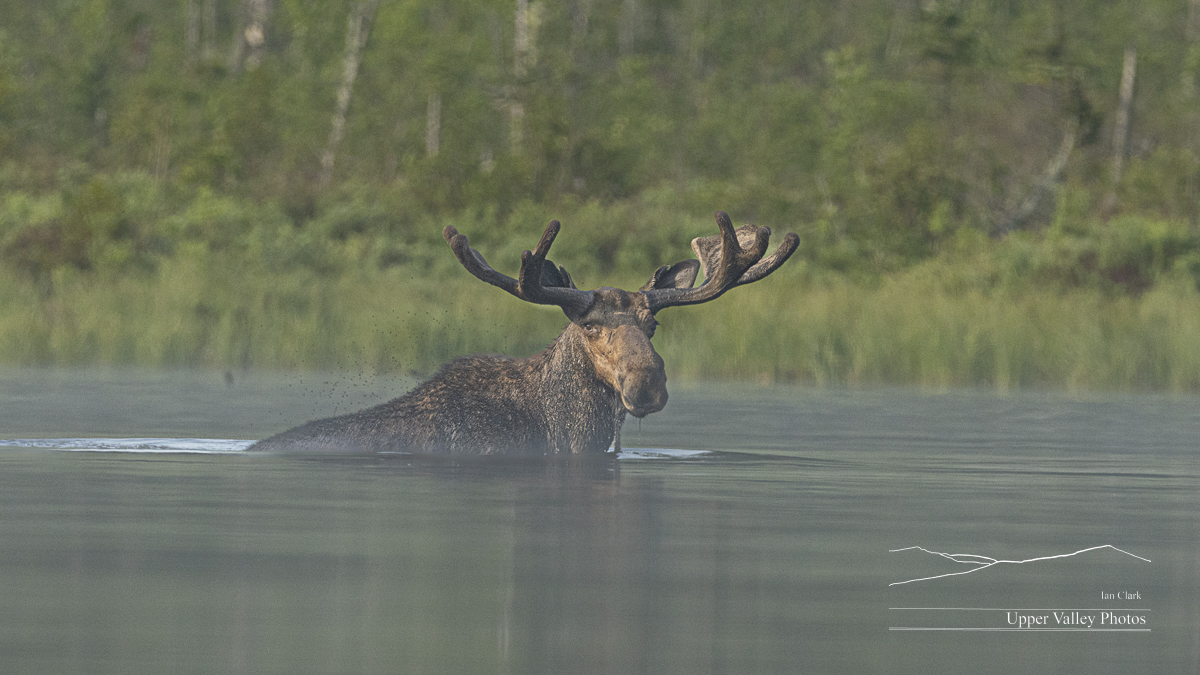
I’ll be out looking for the rest of our chicks as soon as we get a break in the weather.
Link to the newer post: https://blog.ianclark.com/photography/wildlife-photography/the-eastons-have-two-chicks/
